2017 Chevrolet Bolt EV: What's It Like to Live With?
It's the most affordable 200-mile EV available today, so we didn't hesitate to buy the all-electric 2017 Chevrolet Bolt for our long-term fleet.
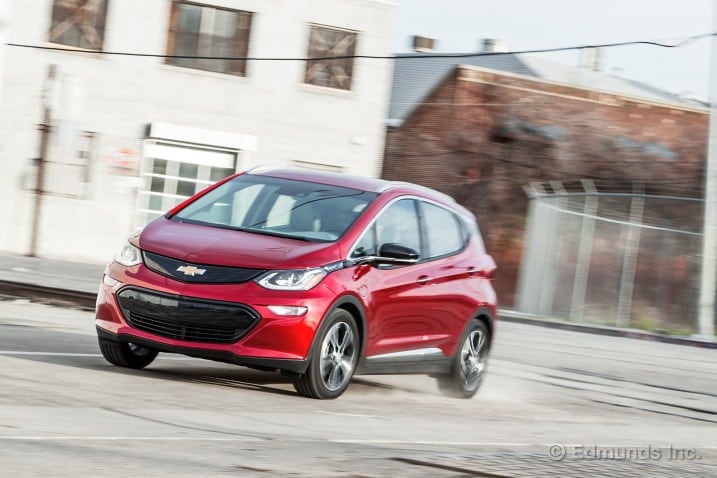
What do you want to know about?
- Introduction
- Monthly Update for February 2017
- Testing the EV at Its Limits
- Monthly Update for March 2017
- 4.5 Million Miles of Gas-Free Driving
- Monthly Update for April 2017
- Monthly Update for May 2017
- Monthly Update for June 2017
- Monthly Update for July 2017
- Headline Self-Sealing Tire Saga
- Monthly Update for August 2017
- Monthly Update for September 2017
- Monthly Update for October 2017
- Monthly Update for November 2017
- Monthly Update for December 2017
- Monthly Update for January 2018
- Monthly Update for February 2018
- Double Stranding Leads to Replacement Battery, Software Change
- Monthly Update for April 2018
- Monthly Update for May 2018
- Monthly Update for June 2018
- Monthly Update for August 2018
- Monthly Update for September 2018
- Monthly Update for December 2018
- Monthly Update for March 2019
- Monthly Update for April 2019
- Monthly Update for June 2019
- Monthly Update for July 2019
- Monthly Update for August 2019
- Monthly Update for September 2019
- Wrap-Up
Introduction
What Did We Buy?
Last year at CES, General Motors debuted the production version of its Chevrolet Bolt EV with a large sign that read "200-Mile Range, Around $30,000." Two bold claims at a time when the only way to get an electric vehicle with that much range was to spend more than double that on a Tesla. GM said the Bolt would deliver on a promise of "a long-range electric vehicle attainable by the masses."
Here we are a year later and the 2017 Chevrolet Bolt is now a reality. Critically for GM, the Bolt arrived about a calendar year before we expect to see the Tesla Model 3, which also promises to be an affordable long-range EV.
Not only did the Bolt arrive on time, it came with an EPA-verified range of 238 miles. That's more than double what most of the EVs on the market currently offer, which makes it far more attractive to average car buyers.
With that in mind, we added our name to a few of the waiting lists at nearby dealers. As soon as one became available, we took the plunge and scored one of the most talked-about EVs of the year for our long-term fleet.
What Options Does It Have?
The Chevrolet Bolt offers two trim levels, LT and Premier. The LT has an impressive list of standard features that includes HID headlamps, a 10.2-inch infotainment screen, 17-inch wheels, and keyless entry and start. We typically buy higher-trim levels so we can have more features to test, so we opted for the Premier trim.
The Premier trim costs an additional $4,285 over the standard LT. It includes things such as leather seats, a surround-vision camera, heated seats and steering wheel, roof rails, rear cross-traffic alert and more.
You can add two packages to the Premier trim and we opted for both. The $485 Infotainment package includes premium audio, wireless device charging and rear dual USB ports. The $750 Driver Confidence II package includes forward collision alert, low-speed front automatic braking, lane keeping assist, front pedestrian braking and IntelliBeam headlights.
The final two options were the DC Fast charging provision ($750) to charge the battery to about 90 miles in about 30 minutes and a nice Cajun Red premium paint job ($395) to stand apart from the crowd of boring colors.
Our total MSRP was $43,905. We bought it from our go-to Chevy dealer, Selman Chevrolet, which offered it to us at invoice price, or $42,398. There are various rebates for electric vehicles available to bring this price down considerably, but to keep things simple we're just going to list our full purchase price.
Why We Bought It
If EVs are going to gain mass adoption, they'll need to offer range on par with that of any typical gas-powered car. Tesla's Model S and Model X have come the closest to that goal, but the price of those EVs are well out of reach of most buyers.
Several affordable EVs are on the market, but few of them go farther than 100 miles on a single charge. The Chevrolet Bolt manages to bridge the gap by offering well over 200 miles of range along with a price that's closer to what average consumers can afford.
It's an intriguing selling point and one that Chevrolet hopes will establish the Bolt as the poster child for practical electric cars. Of course, the real test is driving a car every day in a variety of situations. That's exactly what we plan to do with our Bolt over the next 12 months. And since it has more range than the average EV, we're looking to drive the Bolt in more than just an urban setting. Perhaps a few carefully planned road trips are in store.
Follow its progress on our long-term road test for our latest thoughts and impressions of this 2017 Chevrolet Bolt.
Edmunds purchased this vehicle for the purpose of evaluation.
Monthly Update for February 2017
Where Did We Drive It?
The answer to this question is not self-evident when it comes to the 2017 Chevrolet Bolt EV. You can't assume it's simply "to work and back" or "to dinner and a movie" like it might be for other $40,000 electric vehicles. As we've seen with the two Teslas we've owned, 200-plus miles of range is a difference that really makes a difference. You can actually go somewhere in a Bolt.
Take my own first experience as a case in point. I drove the Bolt on the 46-mile leg from work to my home and simply parked it. My wife's Fiat 500e was already plugged in, but no big deal, because the Bolt's range meter still showed over 200 miles. Next morning I drove up into the mountains to Mount Baldy Village (elevation 4,193 feet) and then cut across to my favorite set of backroads: Glendora Ridge Road and Glendora Mountain Road. This trip added another 103 miles, putting the trip meter at 149 miles.
After all that, the Bolt's remaining range meter said I still had 125 miles left. Add them together and you get a possible maximum range of 274 miles. Impressive, especially considering the elevation profile of where I'd been. I've found I have to work hard to meet or exceed the range rating in a Tesla, but after this one drive it seemed the Bolt's number was readily attainable.
We had plans for dinner and a bit of antiquing, so I plugged in at a city hall EV spot while we walked around. It wasn't full three and a half hours later, but the range meter was back up to 208 miles — plenty, in other words. I drove another mountain loop higher up Azusa Canyon the next morning and went back to the same charger later that day, still not filling it but ending up with a more-than-sufficient 230 miles. On the third day I ranged even farther from home, this time stopping to try out a 400-volt Level 3 charge station located 60 miles away after driving 178.7 miles.
Level 3 stations are fast, nearly as fast as a Tesla Supercharger. In the hour and 20 minutes the car sat there (while I walked off to eat lunch) the car took on 196 miles, which works out to a charge rate of 148 miles per hour. I left with 230 miles in the bank, thoroughly impressed.
So far our Bolt EV has already accumulated 2,166 miles in the hands of several drivers. The words "range anxiety" have not been uttered by a single one, except when preceded by "there isn't any."
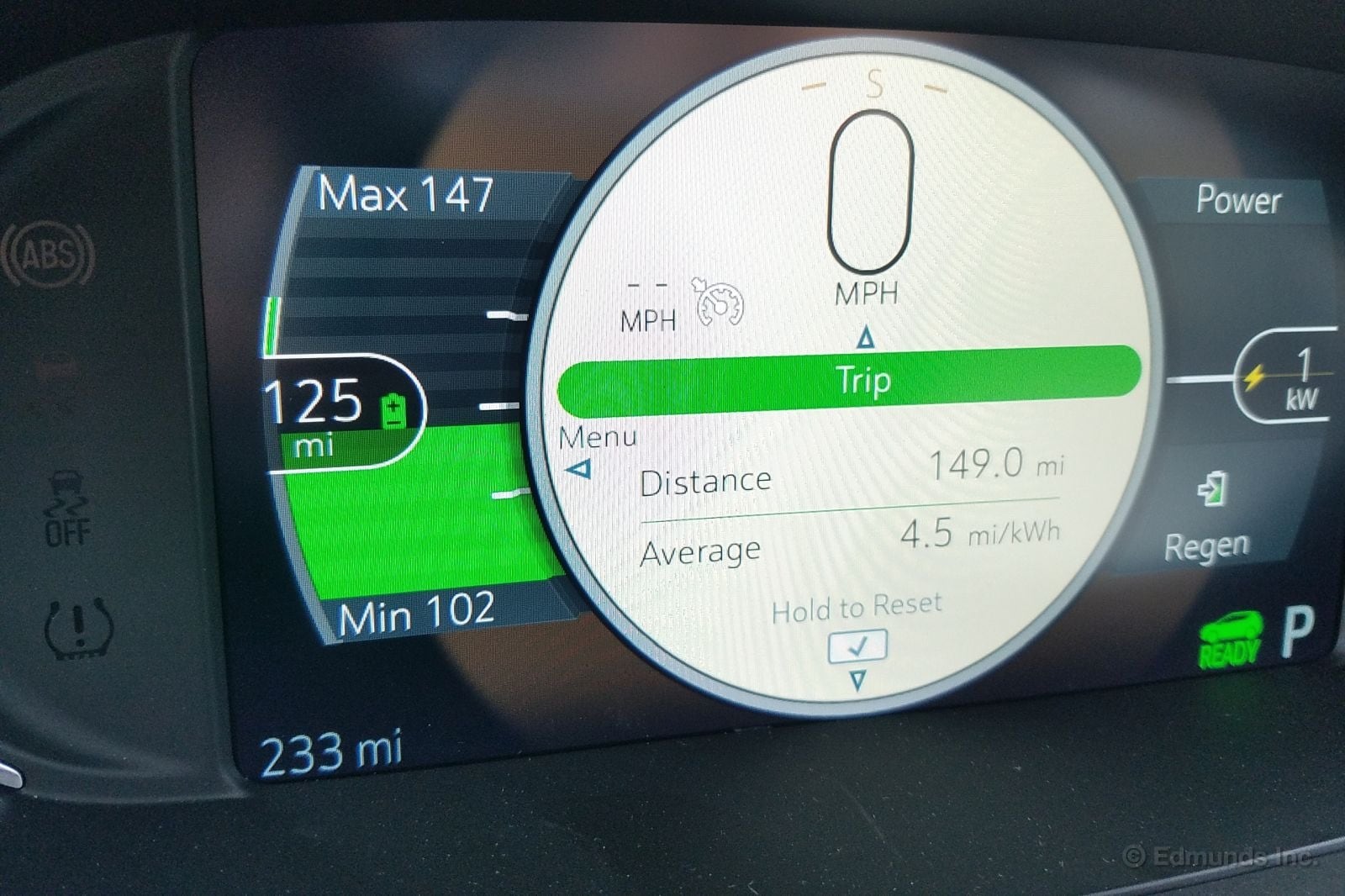
What Kind of "Fuel Economy" Did It Get?
Energy consumption with an EV is fairly easy to track if you have a networked Chargepoint Level 2 charge station like we do. And we also get data from other networked Level 2 and Level 3 Chargepoint stations out in the wild.
I loathe talking in terms of mpge, because gallons of electricity makes no sense. Yes, I know the "e" stands for equivalent, but dwelling on mpg out of habit makes it hard to know how much electricity you are actually using — and ultimately paying for. Miles per gallon was never a very good unit for gasoline in the first place, so I'm going to spend most of my time talking in terms of kWh/100 miles (number of kilowatt-hours used over 100 miles). After all, that's the official engineering term that shows up on the EPA fuel economy label, albeit in small print.
The EPA pegs the Bolt's consumption at 28 kWh/100 in combined driving, and the corresponding range on a full charge is rated at 238 miles. They also say it takes 9.3 hours to recharge it from empty. No one should ever run the battery down to zero, so it's better to do some math on those last two numbers and look instead at charge rate, which is 25.6 mph (miles of range gained in each hour of charging).
Our consumption average over the 2,166 miles we've driven the Bolt so far is 27.5 kWh/100. That beats the rating, because lower is better with a consumption unit such as this. The most anyone has driven on a charge so far is 210.5 miles, but that's not really a maximum because the person didn't run it to empty. As noted, no one ever should. The thing to do is add driven range to remaining range to determine maximum projected range, a more useful comparative number. The Bolt's best maximum projected range observed so far is 280.1 miles.
If you still can't make sense of this without miles per gallon equivalent, here you go. The EPA combined estimate is 119 mpge, and our average is 122.7 mpge.
Average lifetime consumption: 27.5 kWh/100 miles (122.7 mpge)
EPA consumption rating: 28 kWh/100 combined (119 mpge)
Best fill: 22.2 kWh/100 (137.6 mpge)
Maximum distance driven: 210.5 miles
Average distance driven: 84.9 miles
Maximum projected range: 280.1 miles
EPA range rating: 238 miles
Current odometer: 2,166 miles
Maintenance and Upkeep
None.

Logbook Highlights
Performance
"Handles really well on the twistier parts of Glendora Mountain Road, which is saying something. Small size and a very low center of mass make this one a hoot. Doesn't roll in turns much either, and it feels nimble in transitions." — Dan Edmunds, Director of Vehicle Testing
"I really like the lift-throttle regen in L with this one. It's much stronger than the effect in the Volt, so you can really use it to your advantage and trail-brake deeper into turns than Bob Bondurant ever thought possible. I drove down a long, tight and twisting mountain road (Highway 39 from Crystal Lake down to Azusa for you locals) that included very tight 15-mph switchbacks and numerous bends of assorted radii, and I never once touched the brake pedal. Really fun. You'd die if you tried that in a regular car, and the Volt can't do it because its regen braking is not nearly as strong — or fun. Lift-throttle regen braking FTW!" — Dan Edmunds
"Plenty of pop off the line, even though the mileage fiend in me doesn't see the point of gratuitous acceleration if you like playing the range game, which I do. Still, it's there if you need it, and with so much range on tap, there's no reason to worry about pulling out to pass someone or getting decisive during a freeway merge." — Dan Edmunds
Comfort
"My father and my brother are both 6 feet tall. At 5-foot-9, I got the short end of the bargain. I did make them sit one behind the other recently in our long-term Bolt, just to see if they'd fit. Sure enough, there was sufficient legroom and headroom for both of them. The Bolt has a tall cabin and a low floor, so no problem." — Travis Langness, Automotive Editor
"I like the driving position, and the telescopic steering wheel pulls back far enough that I don't have to crowd the wheel. Seat is OK, but comes across as small. It's almost as if I'm sitting on it instead of in it. I wonder what I would have thought 18 months ago when there were 50 more pounds of me sitting here." — Dan Edmunds
Audio & Technology
"I'm annoyed that there's no native navigation in a Bolt, even a loaded Premier like ours. Apple CarPlay and Android Auto are the only way to see maps. I like CarPlay for music and podcasts, but I hate Apple Maps. Likewise, I like Android because of Google Maps, but I can't stand the music and podcast aspect. And neither of them was available on two of my three mountain road excursions, because I didn't have a phone signal all day. No nav for Dan." — Dan Edmunds
"Connecting an iPhone to Bluetooth was easy and playback was OK. Trouble was, each time I turned the car off, the audio defaulted to FM radio when I turned it back on. Bluetooth eventually connects, but not quickly enough. And if I'm listening to Audible over Bluetooth, why does it show me FM radio favorites? And why does that module take up half the screen?" — Mike Magrath, Content Strategist
Utility
"I had to take our two Labs to the groomers. They both hopped right in, and there was enough room to close the hatch on them with the rear seats up. They'd have run amok if I'd folded the seats down, and they're crate-trained, so they were more than happy back there for a five-minute ride." — Dan Edmunds

"LATCH child seat connections are hard to access, but you don't do that frequently, so it's not that big a deal. My large rear-facing car seat fits well enough, though the passenger seat needs to come forward. Wide door opening to get the seat in and a nice high rear seat so you don't need to stoop." — Mike Magrath
MPG (well, charging ...)
"Plugging in the Bolt my first time driving it wasn't easy. The closest station with a quick charger wasn't far away, but the cord was hilariously short. Even with the Bolt pulled all the way forward, it barely made it to the car's plug port." — Travis Langness
"Independent of Travis' comment above, and at a different location, I had the same exact experience. I had to kiss the Bolt's bumper up against a pair of steel bollards to get close enough, which was very irritating. Even then, the taut cord wrenched the charge port more than I would have liked. I took a picture of it and tweeted it to the vendor. I don't think they expected this, and I think they're going to start reconfiguring stations. The Bolt is destined to sell in great numbers, but there's a limit to how long Level 3 cords can be. I think they have to set their bollards closer or lower the point on the charger where the cord departs the device so it'll reach out farther." — Dan Edmunds
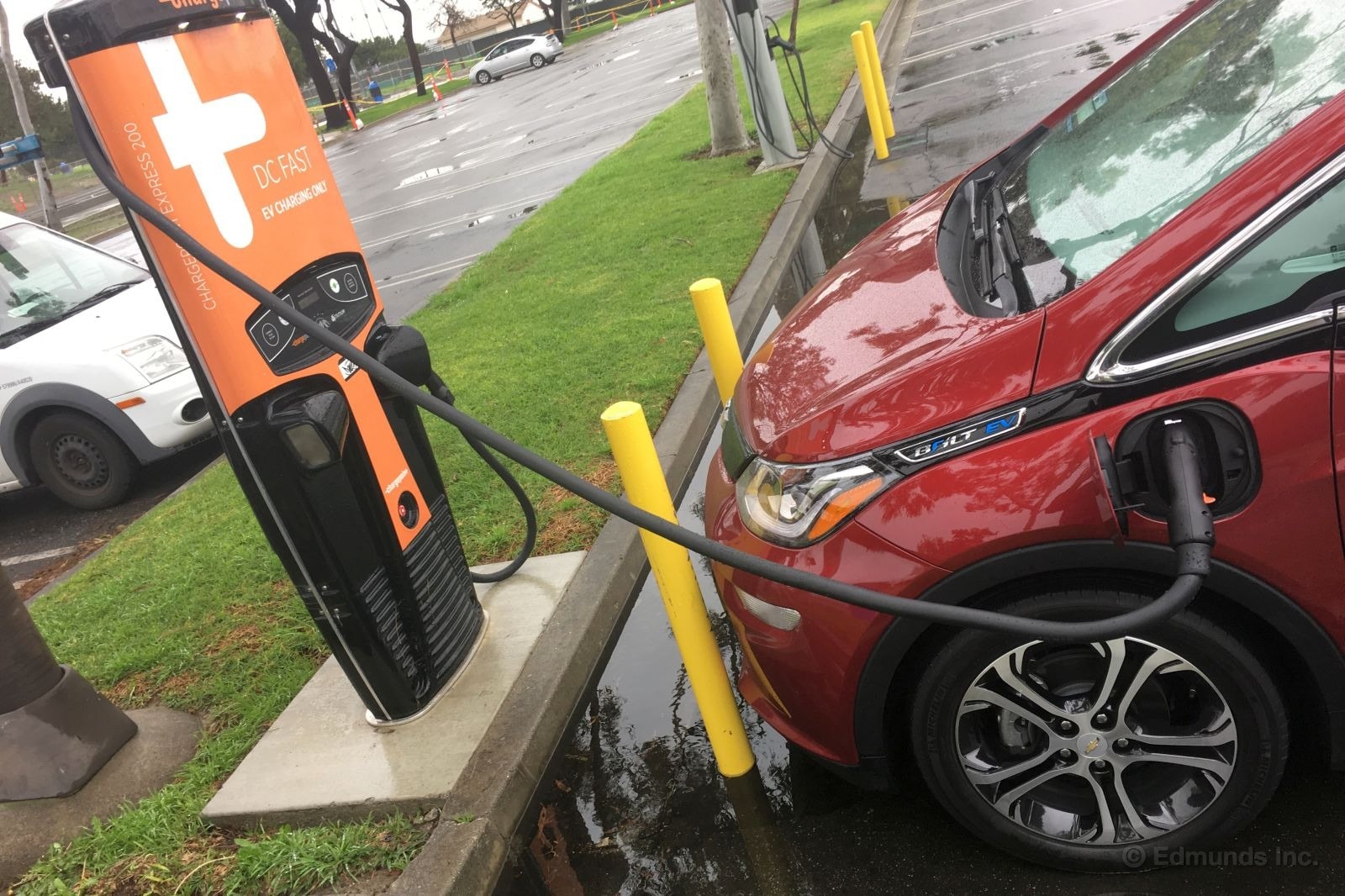
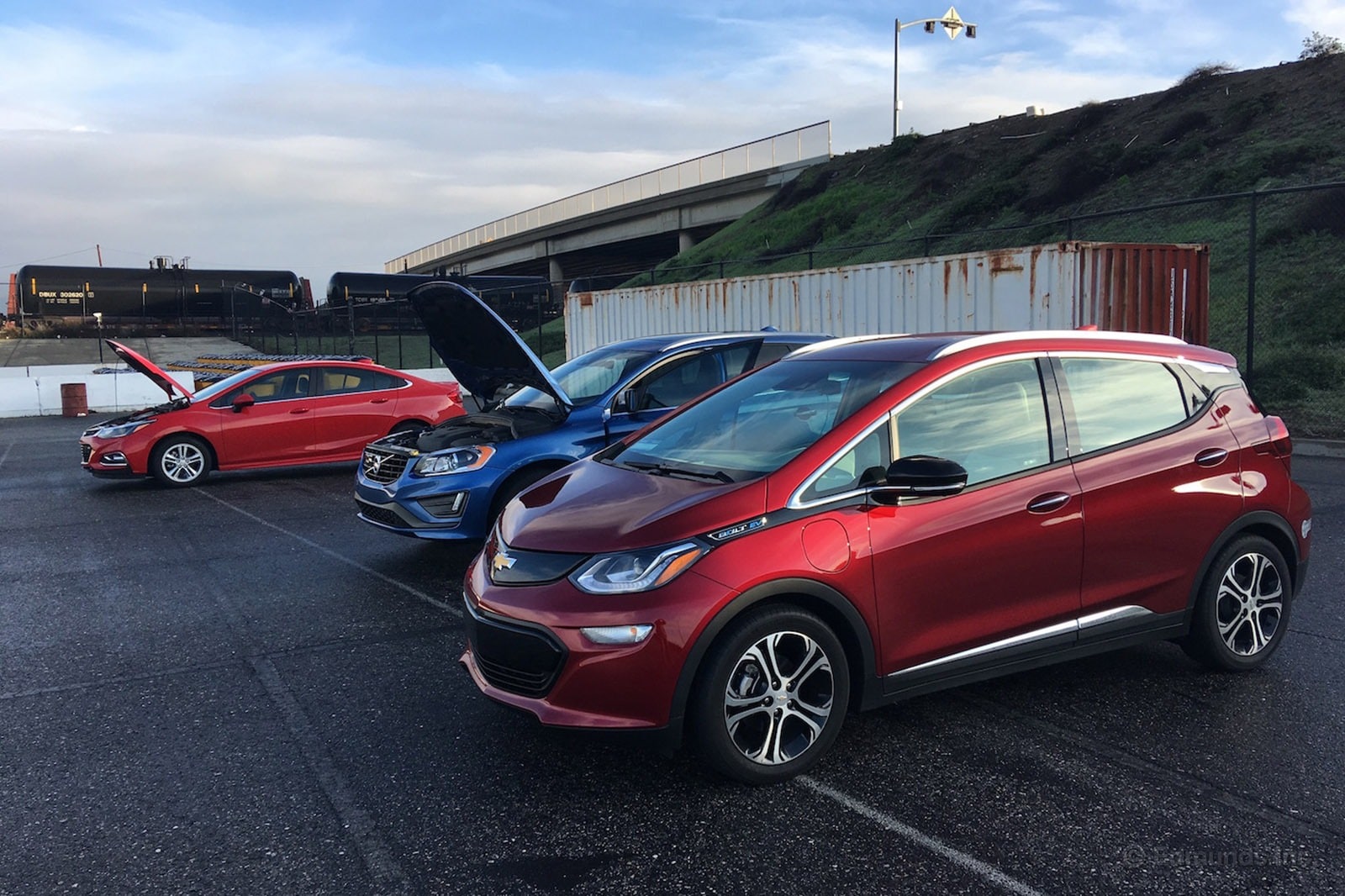
Electric cars and test tracks don't typically mix very well. That didn't stop us from bringing our new long-term 2017 Chevrolet Bolt EV out to our test facility to see what it could do. Even if it doesn't generate impressive acceleration numbers, pushing it to the limit still provides some useful information.
Take the jump to see how it stacked up against other electric vehicles we've tested.
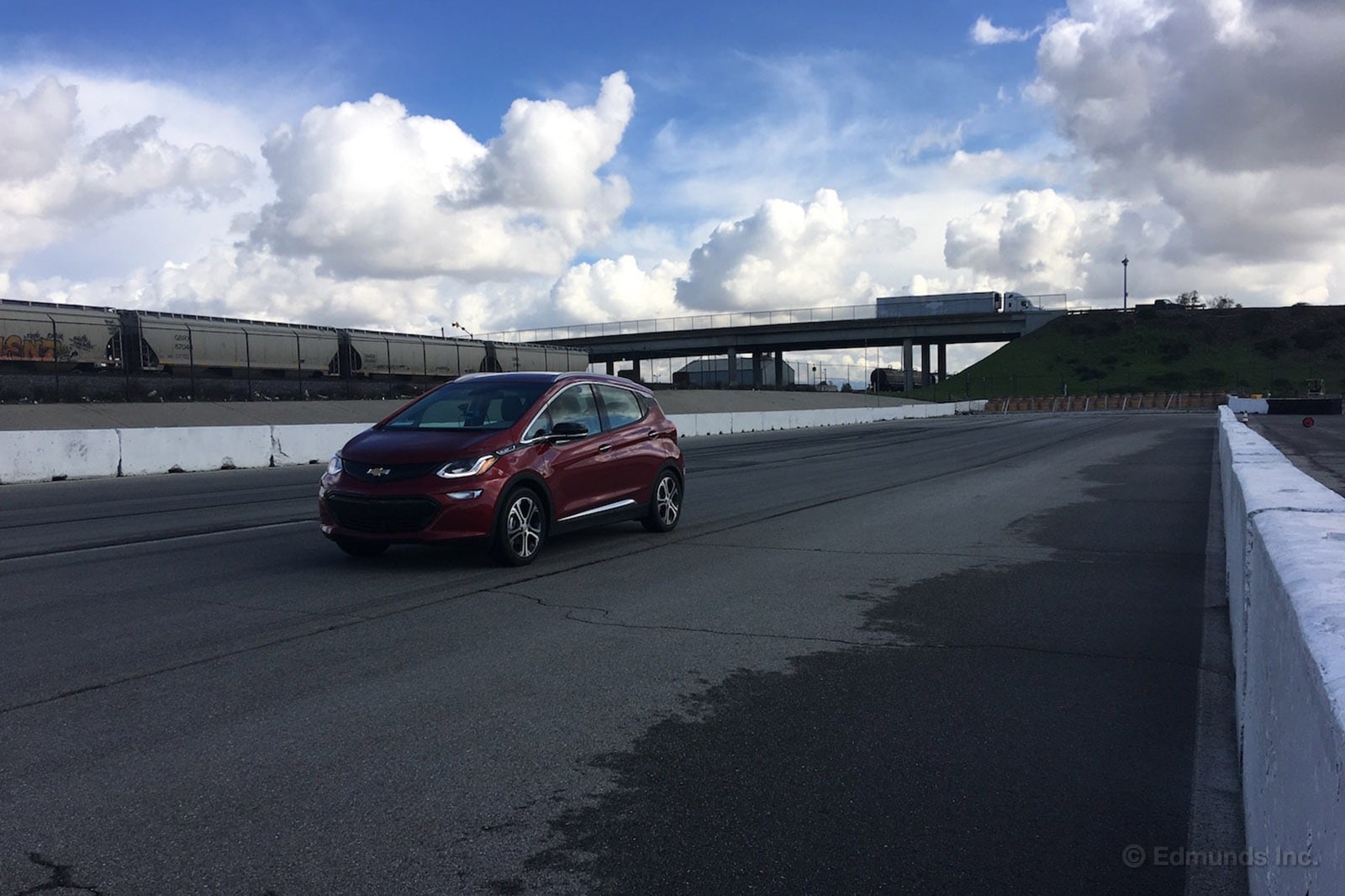
Vehicle: 2016 Chevrolet Bolt EV Premier
Odometer: 953
Date: January 24, 2017
Driver: Jonathan Elfalan
Price: $43,905
Specifications:
Drive type: front-wheel drive
Transmission type: direct drive
Engine type: permanent magnetic drive motor
Displacement: N/A
Redline: N/A
Horsepower: 200 hp (150 kW)
Torque: 266 lb-ft
Brake type (front): one-piece ventilated discs with sliding single-piston calipers
Brake type (rear): one-piece solid discs with sliding single-piston calipers
Suspension type (front): independent MacPherson strut-type with direct-acting solid stabilizer bar
Suspension type (rear): compound crank (torsion beam) with coil springs
Tire size (front): 215/50R17 91H
Tire size (rear): 215/50R17 91H
Tire brand: Michelin
Tire model: Green X Energy Saver A/S
Tire type: low-rolling resistance
Test Results:
Acceleration:
0-30 mph: 3.0 seconds (with TC on: 2.9 seconds)
0-45 mph: 4.6 seconds (with TC on: 4.5 seconds)
0-60 mph: 6.9 seconds (with TC on: 6.8 seconds)
0-60 mph with 1-ft rollout: 6.6 seconds (with TC on: 6.5 seconds)
0-75 mph: 10.1 seconds (with TC on: 9.9 seconds)
1/4-mile: 15.2 seconds @ 90.7 mph (with TC on: 15.1 seconds @ 90.9 mph)
Braking:
30-0 mph: 30 feet
60-0 mph: 116 feet
Handling:
Skidpad lateral acceleration: 0.82g (0.77g with ESC on)
RPM @ 70 mph: N/A
Acceleration comments:
Strong off the line. Feels quick. No wheelspin even with traction control off, unless you're on a slippery surface. Sport mode doesn't really feel all that different at full throttle, so it's likely just altering accelerator response. We shaved a tenth off on the third run (compared to the second run) using Sport, but the key-up run (first run) was the quickest with the batteries at their fullest. No power braking here; overlapping the brake and accelerator only slows the rate you'll leave the line. Just going quickly from brake to throttle with your right foot works best.
Braking comments:
Under full antilock braking, the Bolt sometimes skews slightly to one side; other times it remains straight. This is essentially on the same stretch of pavement. There isn't a ton of noise from the ABS, but there is a lot of tire squeal. The brake pedal has a light effort but isn't overly soft. And under full pressure the pedal maintains a progressive feel. That's because, despite what we might expect, the brake pedal is entirely hydraulic, which means no regenerative braking. Braking distances are relatively constant, varying only as much as 3 feet. There's marginal nosedive as well, and the Bolt remains pretty flat under max braking.
Handling comments:
Steering is pretty responsive. It is not super quick, but there's a fair amount of sensation coming through the steering wheel, at least enough to know when you're losing traction at the front wheels. Stability control can be turned off but only temporarily. As soon as you go over a certain speed, it comes back on automatically. However, keeping traction control off allows you to drive a little more freely. During skidpad runs with traction control on, the torque of the motor is heavily limited as the systems try to eliminate wheelspin as much as possible. We had better success with traction control off.
Monthly Update for March 2017
Where Did We Drive It?
After just a few weeks in the fleet, our long-term 2017 Chevrolet Bolt has become a staff favorite. It's an excellent city car with above-average range (as far as compact electric cars go) and the carpool stickers make it extremely useful in traffic-plagued Southern California.
Here's what our editors had to say while driving it during the month of March.
Logbook Highlights
Performance
"I'm fairly convinced the Bolt is the best L.A. car you can buy. You've got range — range to drive from the Westside to Pasadena, down to the O.C. and back. You've also got excellent visibility thanks to a cute-ute-esque seating position, it's narrow and it has a good turning radius. Oh, plus you've got decent torque for city driving as well as ample highway-speed passing power. And, as the pièce de résistance, you get HOV lane access. Sold." — Kurt Niebuhr, Photo Editor
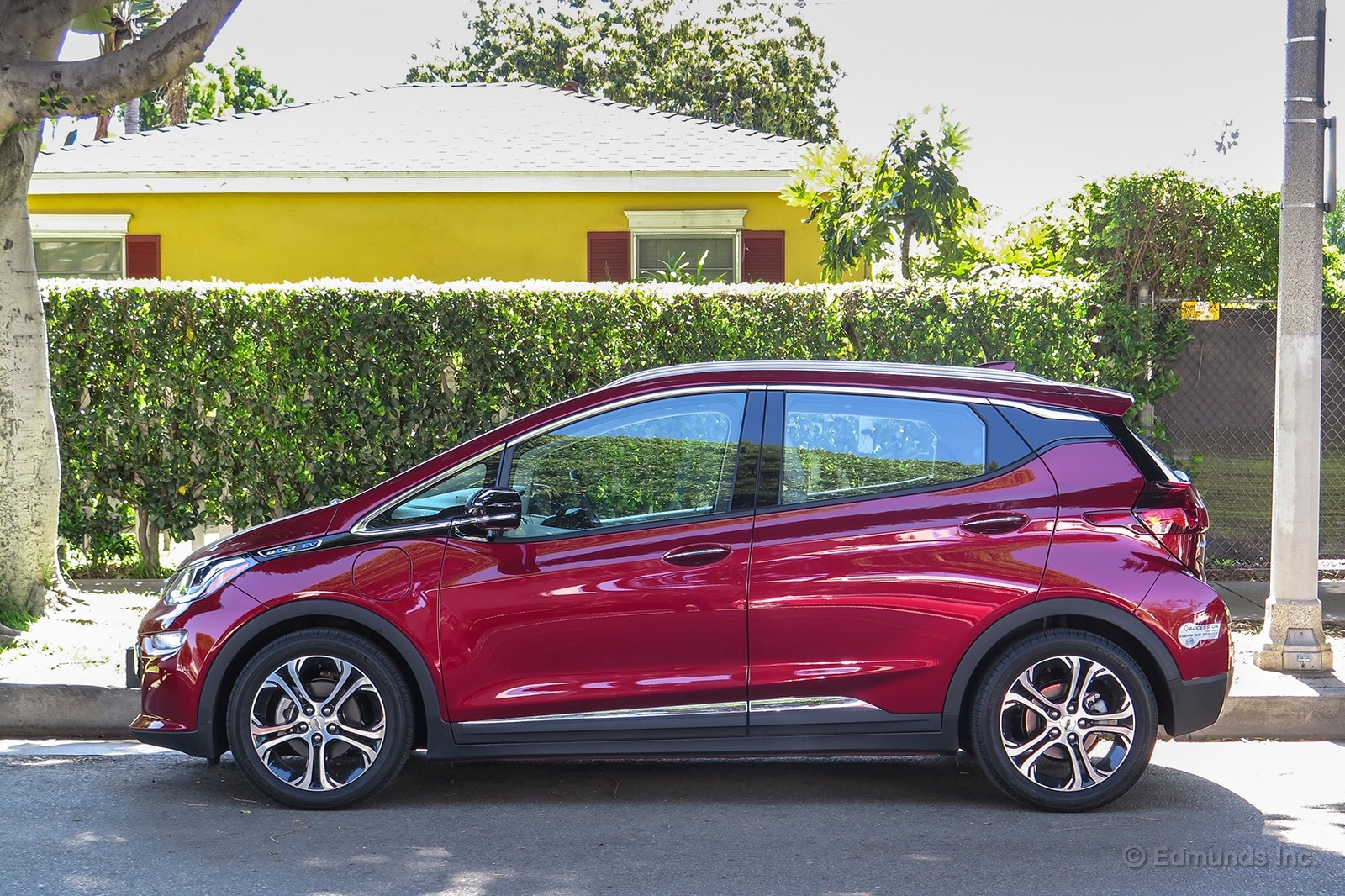
"As much as I find the Bolt an intensely uncomfortable place to be, it's quite good to drive. It drives, in fact, like the perfect small commuter car. No waiting for gear changes, and no worries about being in the power range of a tiny turbocharged motor means that negotiating traffic is a breeze. I also enjoy driving in L, which engages regenerative engine braking. After a little acclimation, I found I could do most of my driving with just my right foot." — Will Kaufman, Associate Editor
Comfort
"First time driving the Bolt and I was pleasantly surprised. It has a refined ride quality that you don't often get from eco-minded cars. Hard, skinny tires designed for optimum mileage are usually the culprit, yet the Bolt feels very compliant on the highway. I also like the feel of the driver seat, although I can see some people having an issue with the overall seating position." — Ed Hellwig, Senior Editor
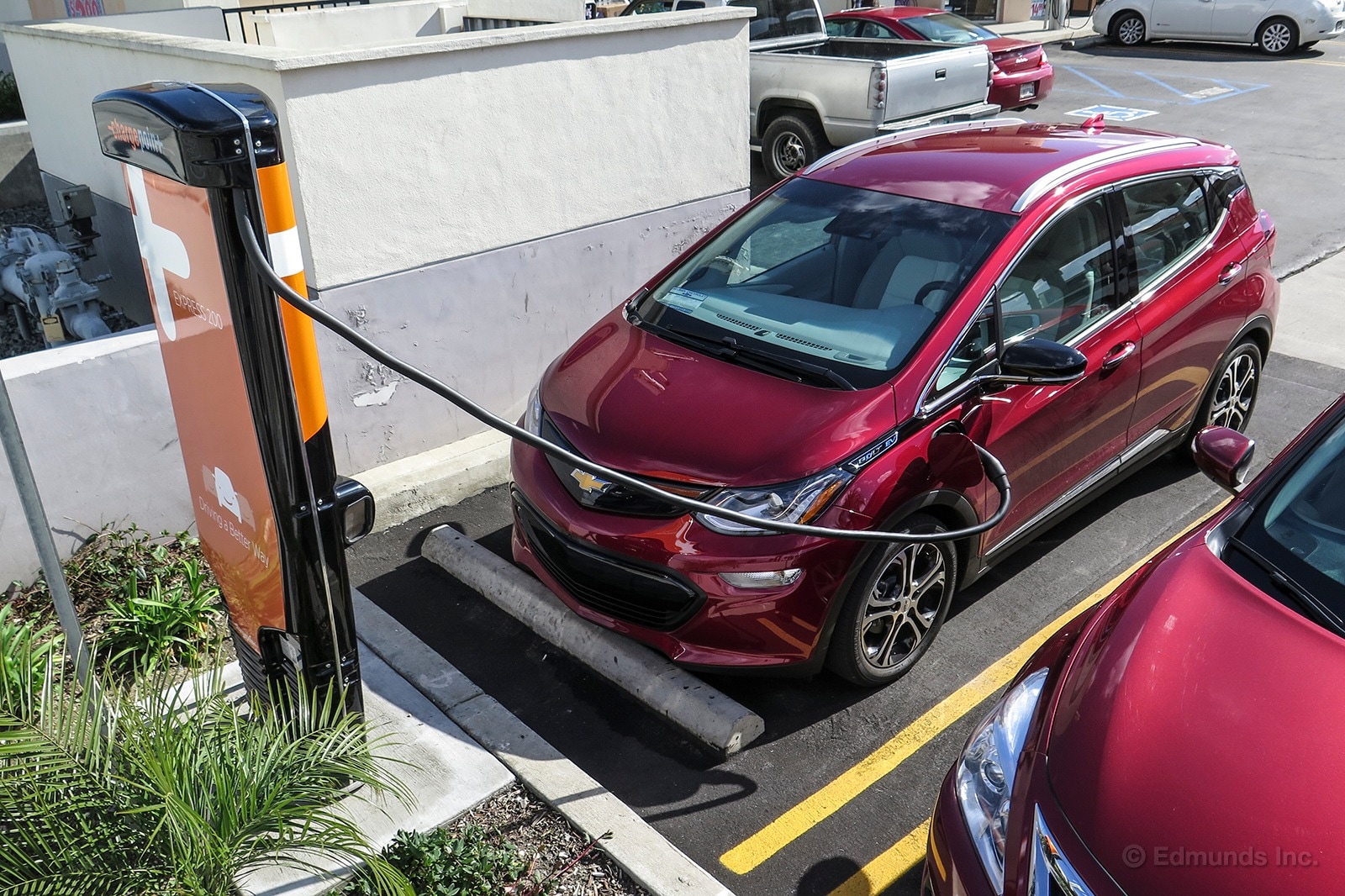
"For an extended trip on the highway, I thought the Bolt would be a bit choppy, but I'm pleasantly surprised with the ride quality and how quiet the cabin is. Just a little bit of volume from the stereo and I've drowned out the road/wind noise. Not to mention, having carpool stickers in Friday rush-hour traffic is clutch. That might be worth the cost of entry alone." — Travis Langness, Automotive Editor
Interior
"That gray dashboard top is a terrible idea. While it wasn't shiny enough to create glare, it did a really good job of making the windshield look hazy and in need of a decent cleaning. Dark-colored dashboard tops only, please." — Kurt Niebuhr
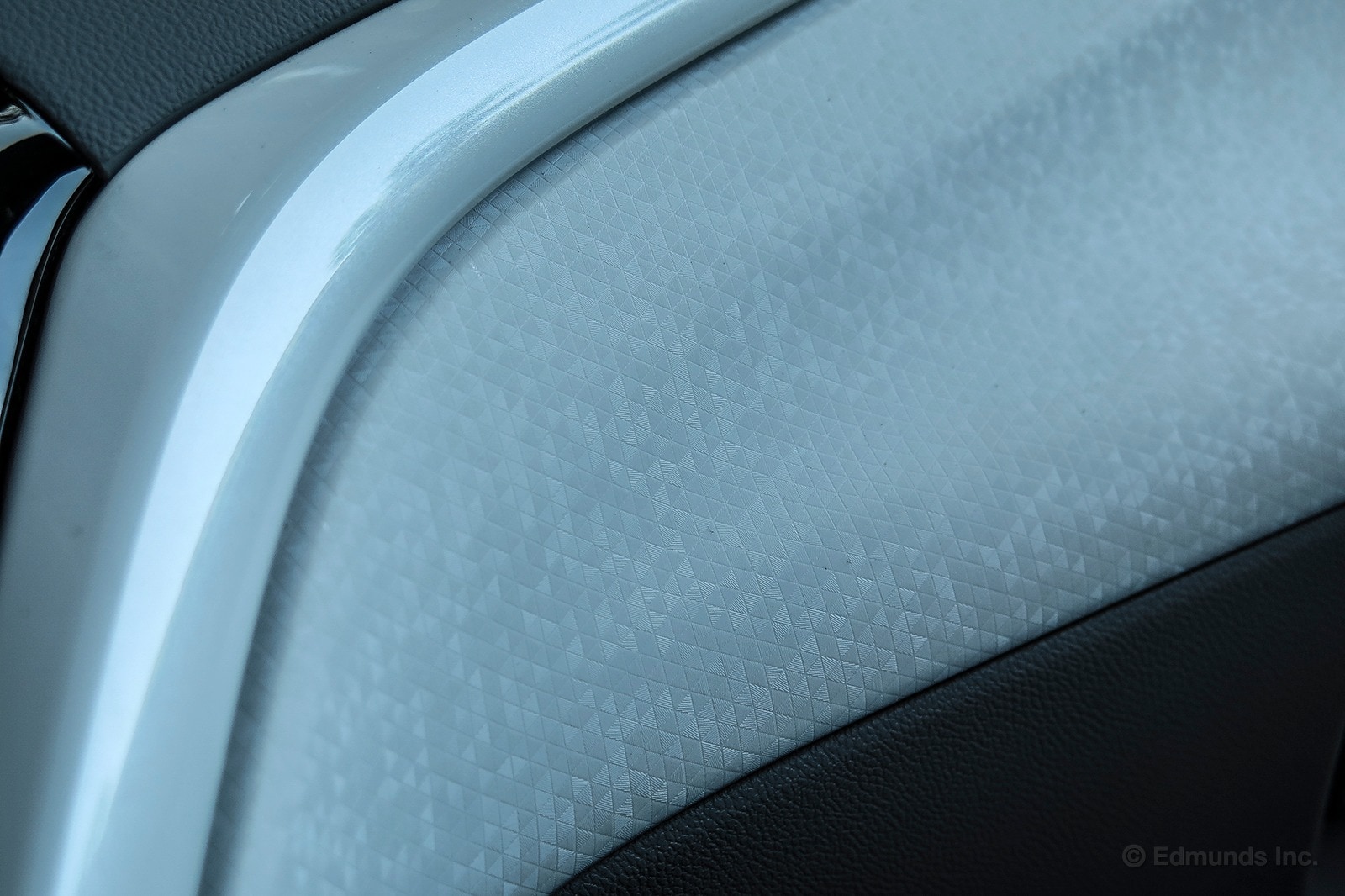
"These might be the least comfortable seats I can remember sitting in. They're way too narrow, and the back is shaped for a much shorter person than me. In addition, the padding is very thin. The combination of wrong shape and thin padding meant that the hard plastic was giving me intense sore spots. I really cannot remember ever being less physically comfortable in a driver seat, which is insane because the seats in the Volt are perfectly comfortable.
"As with the i3, the Volt offers generous amounts of glass ... and no extendable visor. The left side of my face felt like it was going to melt à la the Gestapo agent in Indiana Jones. This is insane because the Volt has a very useful and functional extendable visor." — Will Kaufman
Technology-Audio
"Very impressed by the design of the dashboard display screen. It's crisp and clear like an iPhone and works intuitively. Same goes for the instrument panel graphics. Together they give the Bolt the look and feel of a cutting-edge car."— Ed Hellwig
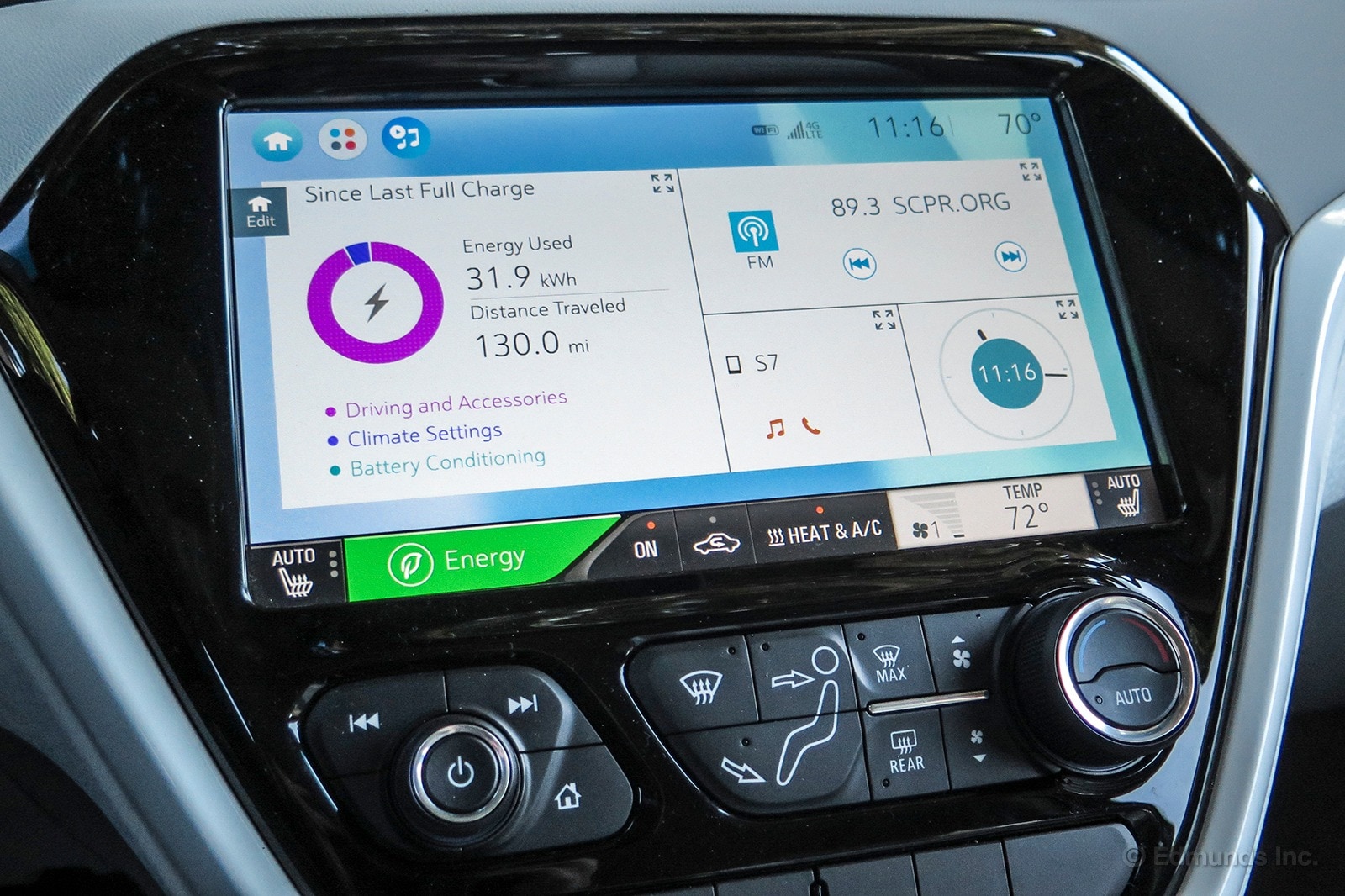
"In 17 miles over two days, Bluetooth has dropped 10 times. Sometimes it automatically reconnects; sometimes it doesn't. Either way, it never automatically resumes playback." — Mike Magrath, Content Strategist
"I appreciate Chevy's efforts to implement wireless charging docks, and I think that the Bolt is the best one I've experienced. Our Volt makes you open the center armrest bin to access the little charging pocket, while the other GM products I've been in recently had little trays where it was too easy to fail to place the phone just in the right way so that charging would start. The Bolt's charging pocket is well placed, and I swear it's a little bigger than the Volt's. I didn't have to remove my phone's case to make it fit. The downside, of course, is that the bottom of this exposed rubber pocket is starting to fill up with dust and crumbs." — Will Kaufman
Maintenance and Upkeep
"We called Hooman Chevrolet in Culver City to schedule an appointment to have the license plate bracket mounted on the front of the vehicle. For those unaware, here in California, a plate is required on both ends of the vehicle or you're risking a 'fix-it' ticket from L.A.'s finest men and women in blue.
"The gentleman on the phone quoted me an hour installation time and a $60 charge. We thought about doing it ourselves but opted to leave it to the dealer. When we arrived for our appointment, Claudia, our service adviser, told us she'd find someone to put it on really quick and she quoted me a 5-minute installation time and a $0 charge. I think we can chalk this up to great customer service from Hooman Chevrolet." — Michael Massey, Vehicle Testing Assistant

It's been roughly five months since we bought our 2017 Chevrolet Bolt EV and in that time we've managed to put nearly 5,000 miles on the all-electric hatchback. Not a bad run so far, but according to General Motors, if you added up the mileage on every Bolt EV (there are 3,492 currently on the road), the total has surpassed 4.5 million miles.
That means we've managed to contribute a whopping 0.10940200862088 percent to the tally. Maybe a few road trips are in order?
Decimals aside, GM claims that these electric miles have saved 175,000 gallons of fuel based on the 2016 fleet-wide average of 26 mpg.
GM also noted that it's aware of one Bolt owner who managed to go 310 miles on a single charge. We haven't seen numbers anywhere close to that range — our longest trip is 248 on one charge — but it does sound like an interesting challenge.
Monthly Update for April 2017
Where Did We Drive It?
Given the range of our 2017 Chevrolet Bolt, "where we drove it" usually pans out to "around town." We haven't yet taken the Bolt on an extensive road trip because, well, that's not quite the car's forte. But with some judicious planning, maybe we can make a Bay Area run. With a well-timed stop to top up, Vegas shouldn't be a problem either.
But even our "around town" driving tallies up plenty of miles on the Bolt and also underscores the utility of an EV with 250-ish miles of range. Vehicle Testing Assistant Mike Massey drove it from Los Angeles' northern valley hinterlands to the middle of coastal Orange County and back on little more than half the Bolt's range and a brief charge on a 240-volt "pump" during dinner. Director of Vehicle Testing Dan Edmunds drove it around the Inland Empire, stopping to charge up at the BMW Training Center (note the irony of a Chevy topping up in the home of the i3).
In all, we put about 1,350 miles on the Bolt in April, a good month for any car in our fleet, regardless of powertrain. We recorded our best range so far — 248.6 miles — early in the month, backed by a 240.2-mile run a couple of weeks later.
Maintenance and Upkeep
None
Logbook Highlights
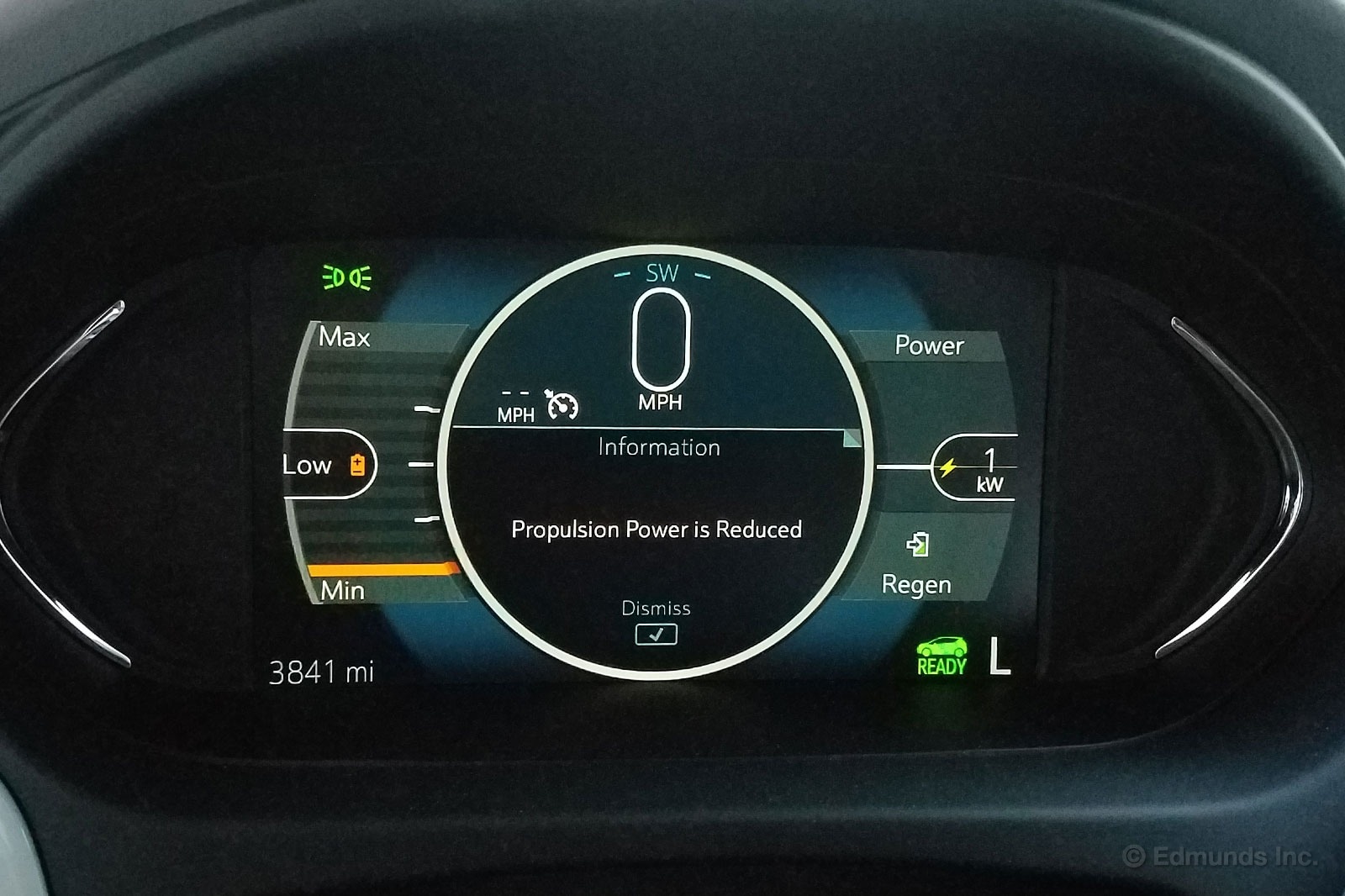
Performance
"The Bolt's extensive range can lull you into thinking it's just another car. After driving it around for much of the weekend, I forgot to top it off before I took it to the airport. I had enough range to get me there, but I wasn't sure there'd be enough to get back home. When I returned after a couple of days, the charge was the same as when I left it and looked to be enough to get home.
"I pedaled it lightly in heavy traffic and barely used any charge for the first part of my trip. Then traffic opened up and I started using more juice to keep up. I was a few miles from home, on surface streets, when the range meter changed from '18 miles' to 'Low' and switched to a 'Reduced Propulsion' mode. About a mile from home, the range meter starting flashing 'Low.'
"I made it home and stuck the Bolt on my Level 2 charger. It took 10 hours and 25 minutes to fill the battery. The total trip on the previous charge was 248.6 miles. Not bad, considering that most of the time I drove the Bolt like any other car. I learned that it pays to keep it topped off and that high speeds are the enemy when you're trying to conserve power. I'm sure it had more juice left than I thought, but I was glad to make it home when I did." — Ed Hellwig, senior editor
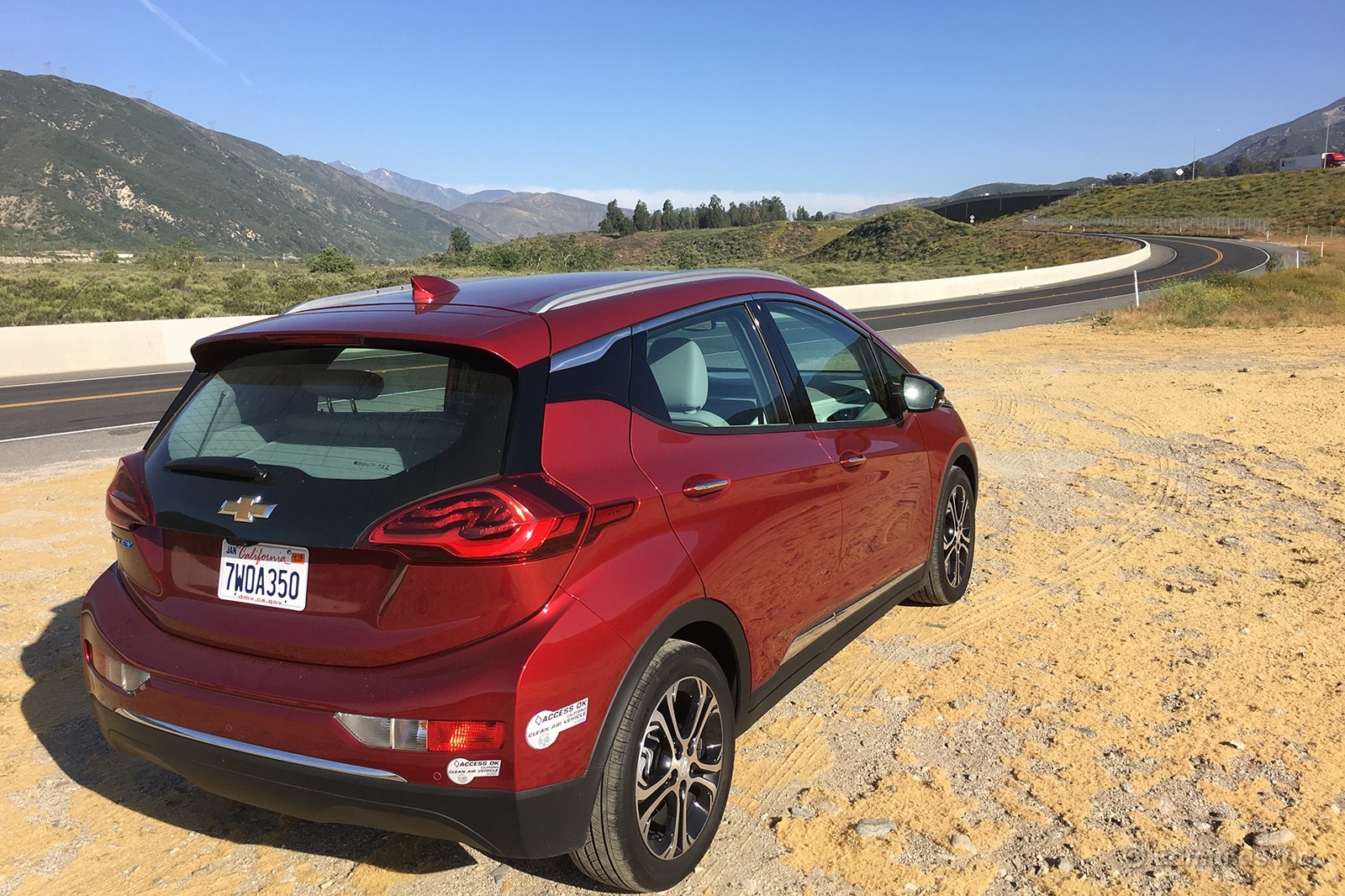
"I unplugged from a DC fast charger in Valencia with 145 miles of range and headed to Newport Beach for a birthday party, about an 85-mile drive. Through one 50-mile stretch of traffic, I only used 20 miles of range due to the Bolt's regenerative braking. I charged again for 1.5 hours during dinner on a 240-volt charger, then headed back to Valencia. I made it to the same DC fast charger the next morning with 13 miles of range remaining, truly testing the limits of the Bolt's range. Range anxiety may be a thing of the past, provided the charging infrastructure is in place." — Mike Massey, vehicle testing assistant
"I put 240 miles on a single charge. That exceeds Chevy's claim and shames the range we've seen on our Model X. But it was a real-world L.A. 240 miles, with 100-plus miles driven on open freeways over a holiday weekend. I made no allowances for the Bolt being electric and drove it like I would my own car." — Kurt Niebuhr, photo editor
Cargo Space
"You don't really think 'utility' when you think EV, but the Bolt came in handy when we decided to clean up the yard on a sunny Saturday afternoon. I didn't think twice about taking the Bolt to pick up a few bags of garden bark and a handful of flowers at the local nursery. It has a pretty sizable cargo area that's surprisingly deep if you lift up the removable shelf. I could load a few cartons of flowers, a couple bags of supplies and a small bag of soil underneath the lid for the floor. Once the lid was back in place, I put two big bags of bark on top without any problems. I probably could have left the rear seats up if I had another passenger." — Ed Hellwig
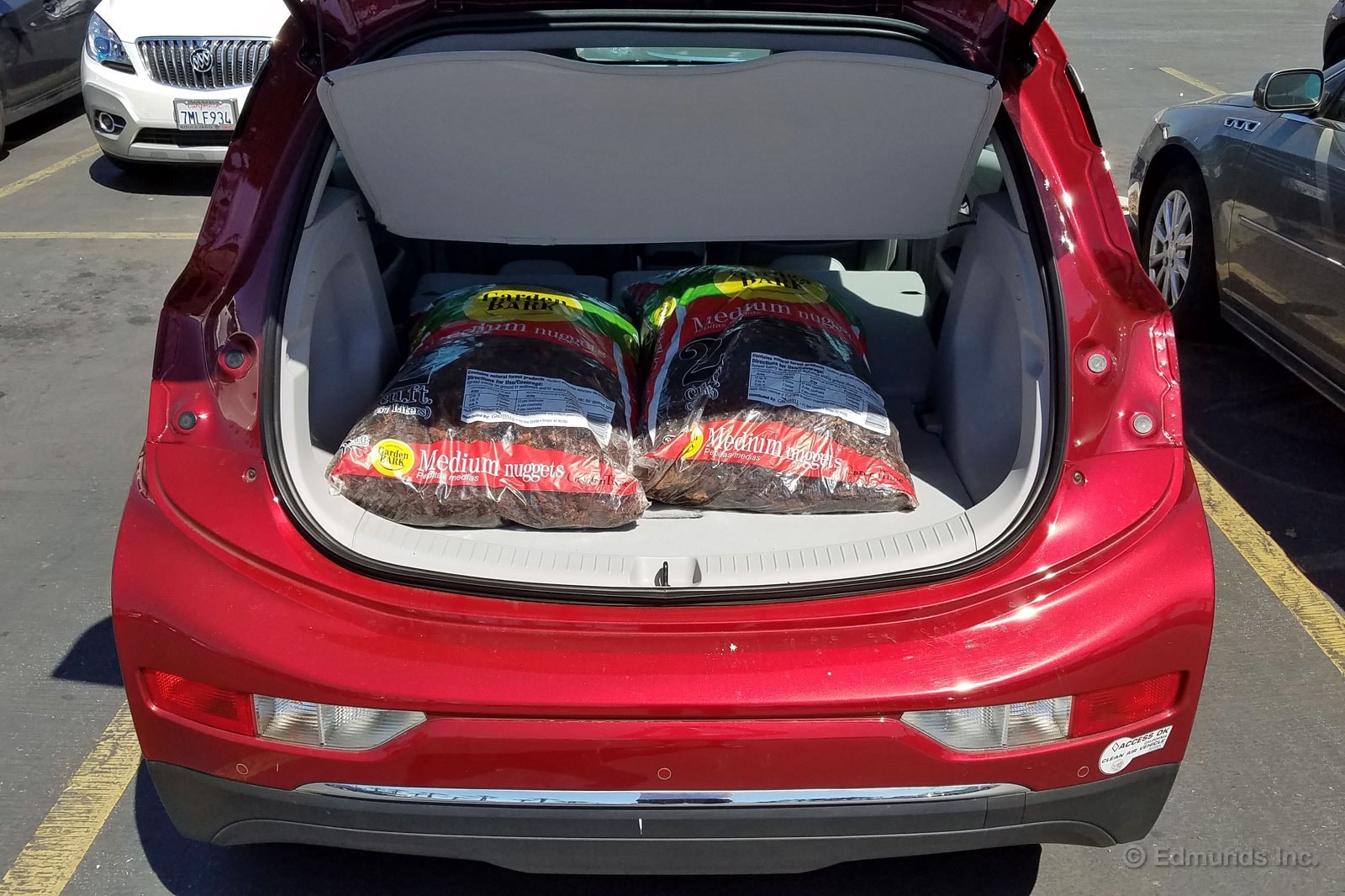
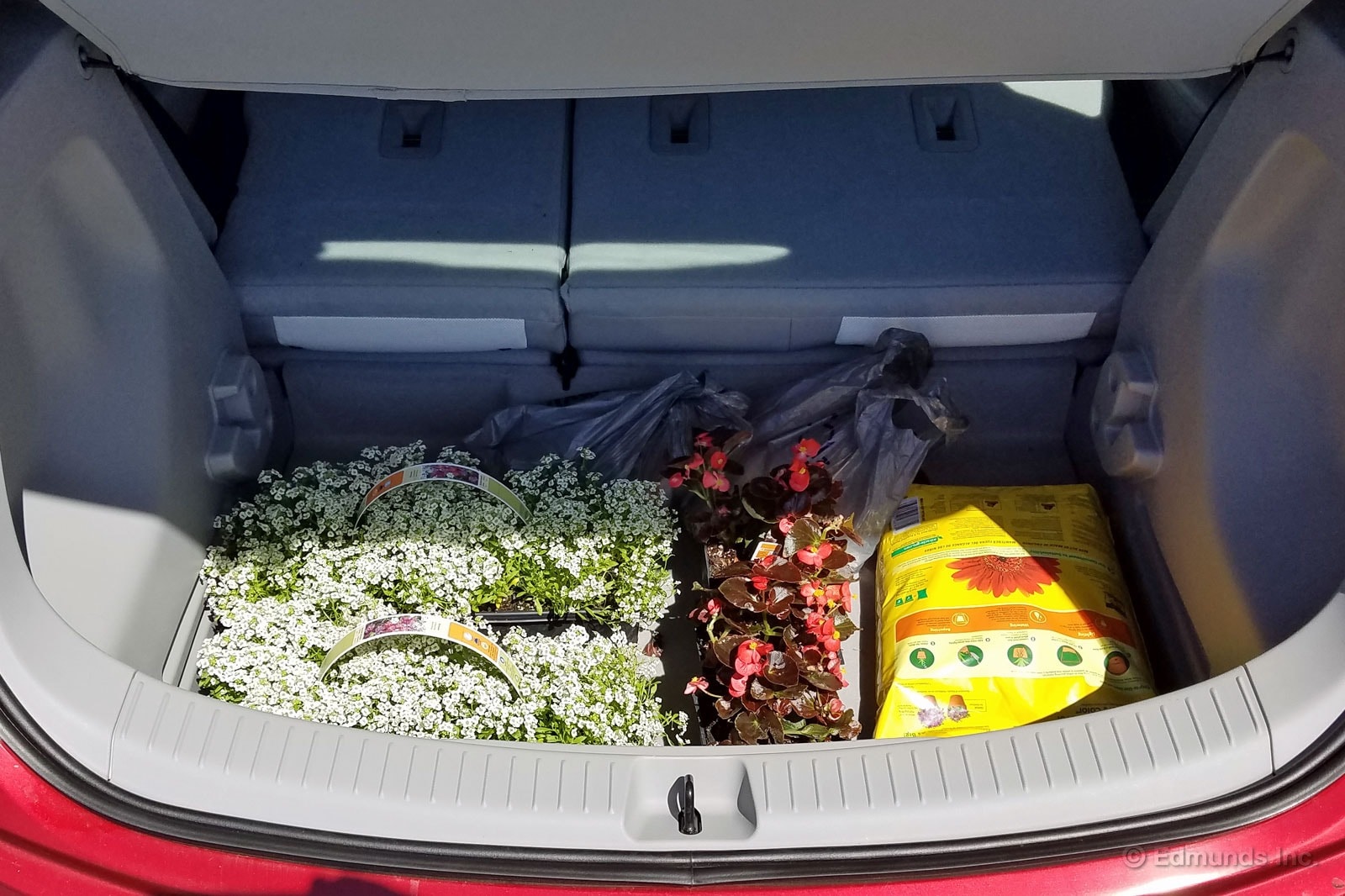
Interior
"The dashboard is white and reflects a ton of sunlight in my face, not to mention the reflections of the dashboard in the windshield itself." — Dan Edmunds, director of vehicle testing
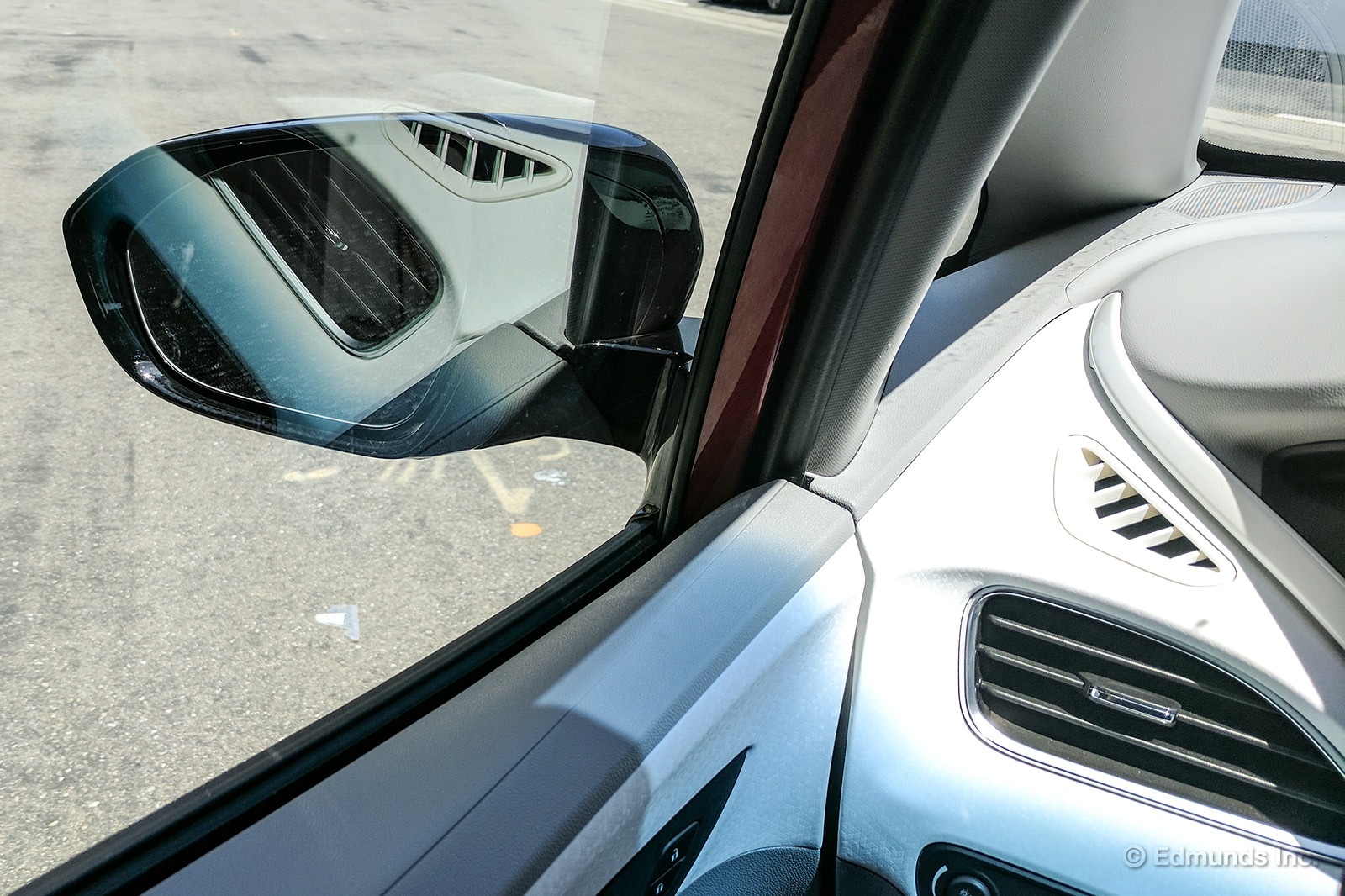
"I already touched on the sin that is light-colored dash tops, but I guess that needs to extend to white tech-y dash trim as well. I went to look in the driver-side mirror and all I could see was the dashboard and air vent. #glarecare" — Kurt Niebuhr
Comfort
"The seatback frames have lost their padding. Most of the bolstering around your ribs and shoulders is simply leather-wrapped metal, so turning to look over your shoulder when backing up smarts. I guess they really want you to use the backup camera. Oh, and GM needs a new seat supplier." — Kurt Niebuhr
Technology-Audio
"The BMW training center in Ontario, California, has a public DC fast-charge station in its lot. It's available 24/7 and it's free. You need a ChargePoint account and it's SAE Combo only. No CHAdeMO plug means no Leaf access, so there's less chance it'll be in use when you roll up. Thing is, it's a relatively slow fast charger: 72 miles per hour instead of the typical 150-plus. I suppose you could say it is half-fast. That said, it's hard to complain about free." — Dan Edmunds
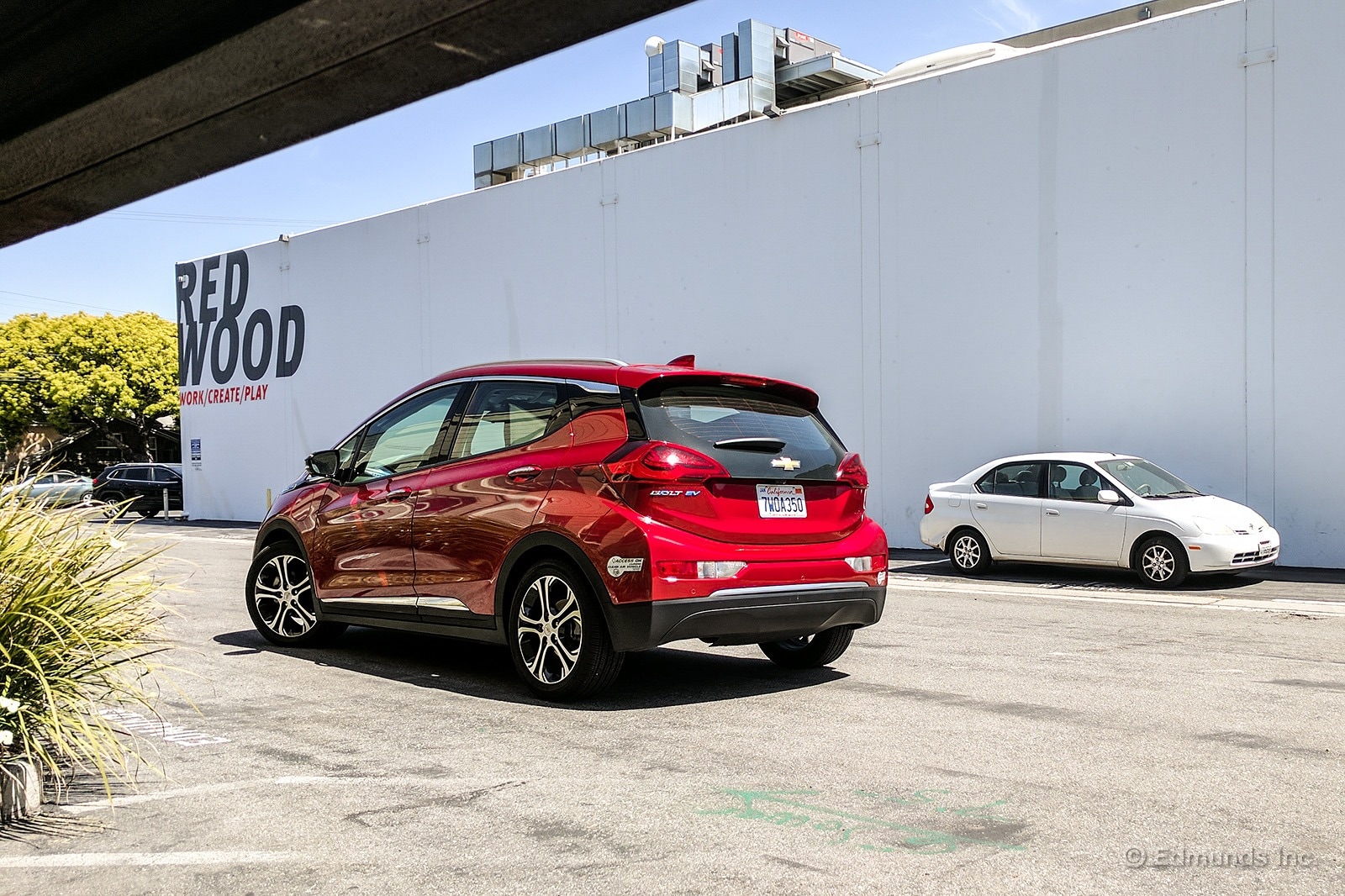
Monthly Update for May 2017
Where Did We Drive It?
I don't think a lot of us editors knew what to make of the Chevy Bolt EV when it first entered the fleet. Our experiences with compact EVs had been limited to cars such as the BMW i3, Fiat 500e and the Nissan Leaf, all of which have a usable range of around 100 miles or less. When you've got a fleet of "normal" cars, it's understandable the Bolt saw relatively few takers early on.
After a few months, and more than a few 200-plus-mile tanks of electrons, word has spread and more of our staff members are starting to take the plunge into the electrified waters. Yeah, bad choice of words there.
What Kind of Fuel Economy Did It Get?
We put about 1,000 miles on our Bolt EV in May and had a good number of drivers exceeding 100 miles on a charge. I should note that out of courtesy, we try to plug the Bolt in when the remaining range drops to around 100 miles.
For the month, we averaged nearly 113 miles between plug-ins with the DTE (distance to empty) showing about 110 miles before it was hooked up to a charger. The longest drive for the month saw 227.7 miles. Our best range, so far, is 248.6 miles.
Maintenance and Upkeep
None.
Logbook Highlights
MPG
"Left the office with 189 miles of range. Made it home — 60 miles away — with 183 miles remaining. Drove it in L with max regen, no air-conditioning. And granted, it was two hours of freeway travel with plenty of long spells crawling at 15-20 mph. At one point, the meter was predicting 205 miles of range. Good testament to the Bolt's slick powers of regeneration." — Dan Frio, automotive editor

Utility
"The 2017 Bolt has 16.9 cubic feet of cargo space with the seats in place. This isn't much and widthwise roughly translates to about four grocery bags placed side by side plus a backpack. For reference, the 2016 Volkswagen eGolf has about 22.8 cubic feet of space, though you'd have to sacrifice 155 miles of range. Since I'm not really going to take a major road trip with this car, I'd prefer the range over the cargo capacity." — Ron Montoya, senior consumer advice editor
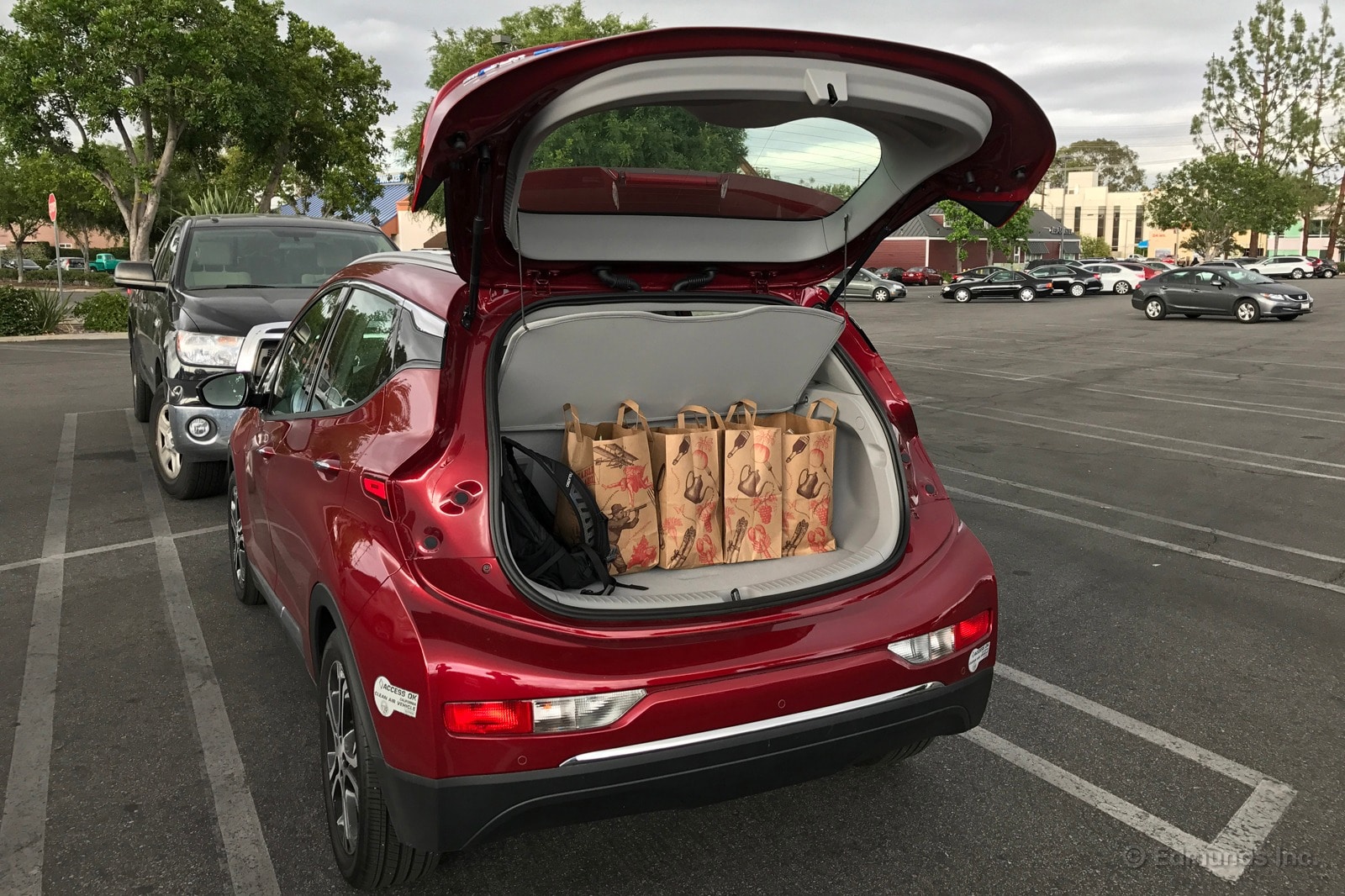
Performance
"After spending a weekend driving around and hardly ever using the brakes (thanks, regen!), I'd wager you might be able to get 100K miles out of these brake pads." — Kurt Niebuhr, photo editor
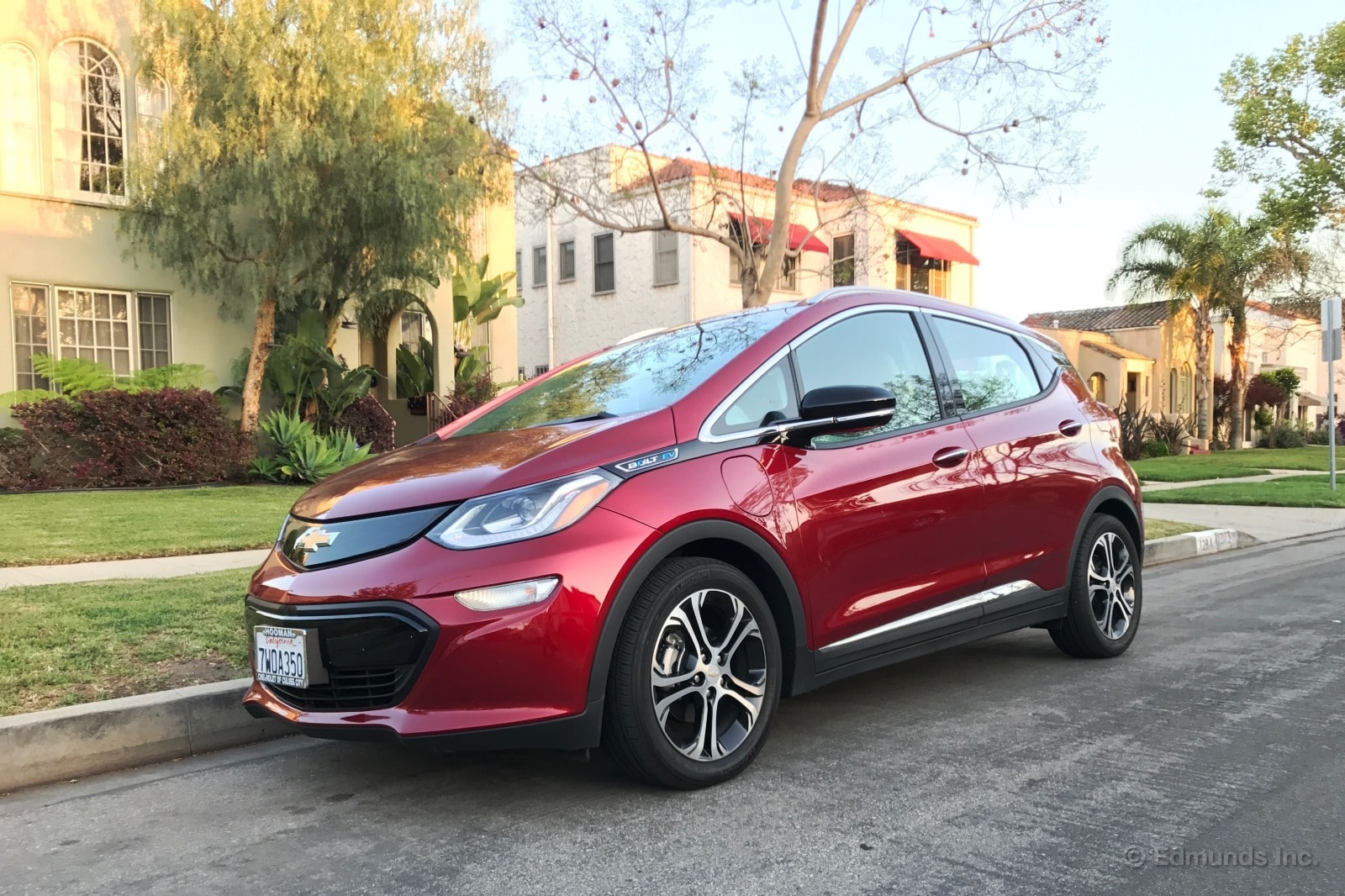
Technology
"The Bolt's fantastic range is its best feature. The slick rearview mirror is its second best. No auto-dimming here: Flip up the mirror to dim those headlights behind you and instead you get the rearview camera feed. It's full-time, too, not just for night. Cool that this tech has filtered down from Cadillac to the pint-size Bolt. One advantage is that your rear view isn't obscured by headrests, passenger heads or cargo. Another is that it gives you a wider view of the road. This last part also takes some getting used, though. I enjoyed driving around and trying out the display, but found that the angle and depth distorted my sense of space around the car. Definitely feels like the future — much like the rest of this car — but will take a little getting used to." — Dan Frio
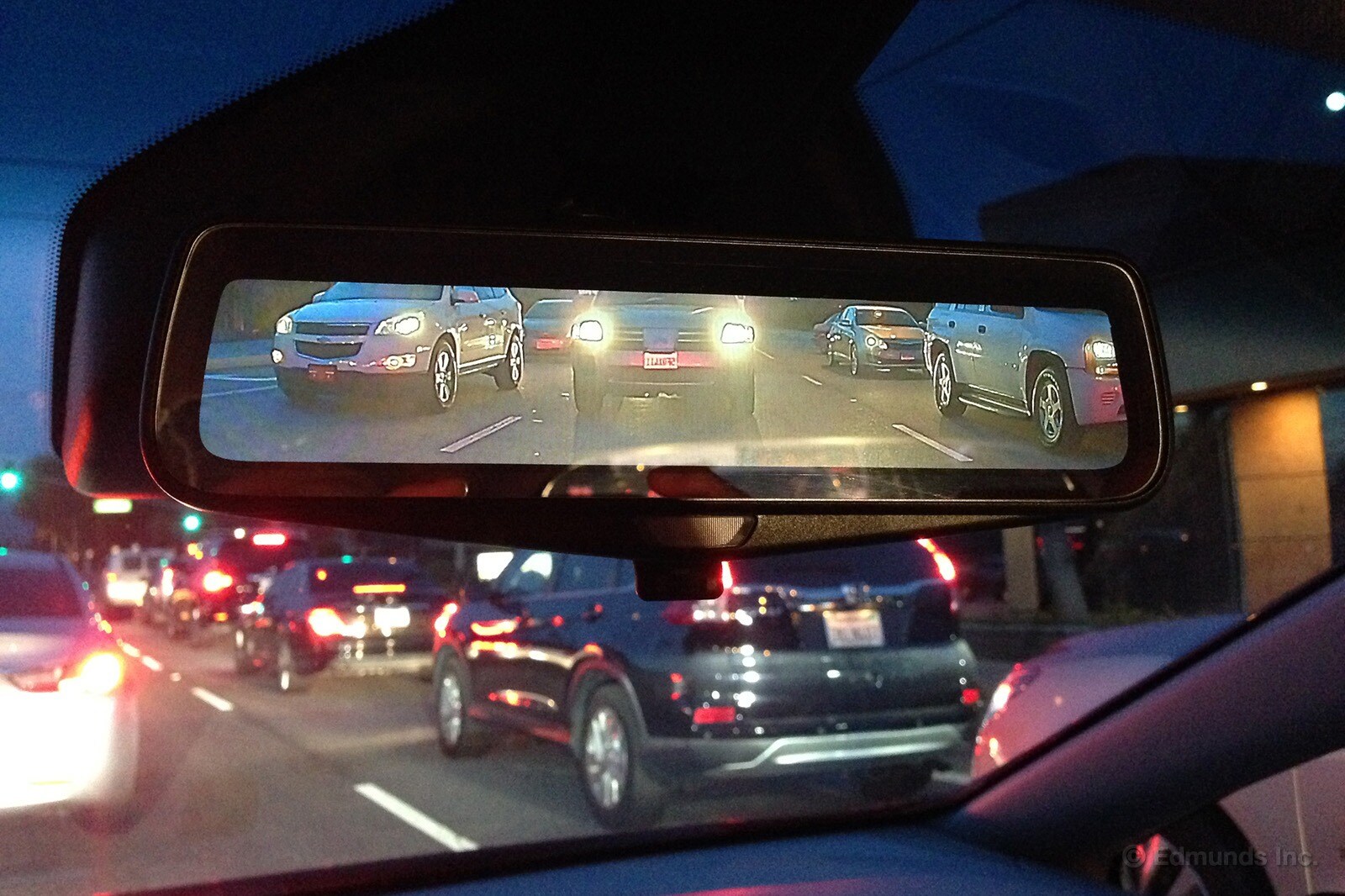
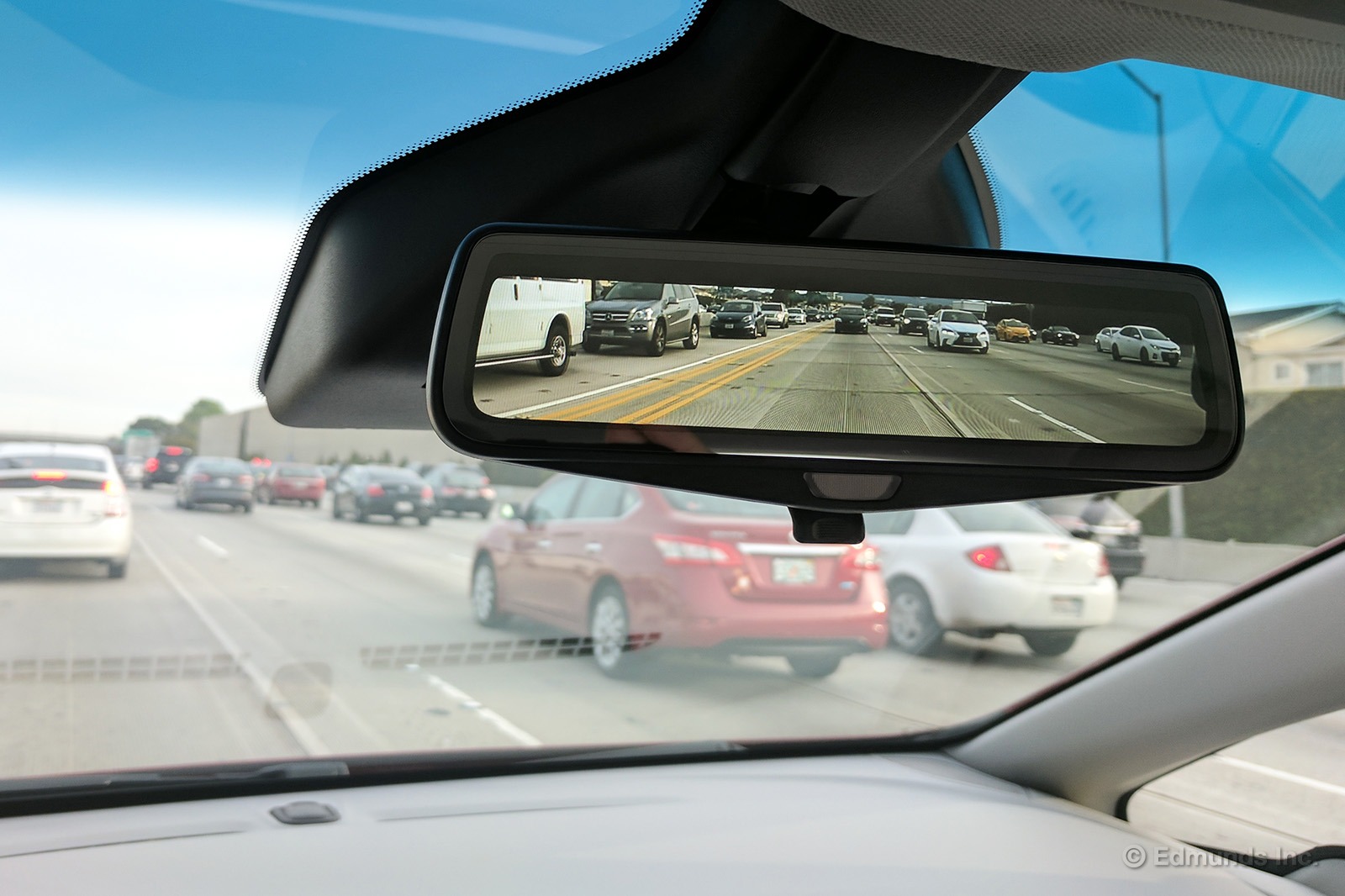
Monthly Update for June 2017
Where Did We Drive It?
Does commuting on the 405 freeway in Los Angeles count as going anywhere? Most times, it sure doesn't feel like it. Then again, driving our 2016 Chevrolet Bolt EV means access to the carpool lane no matter how many people are in the car, so at least that helps a little. It's one of the big reasons why our Bolt has spent so much time on the highway compared to running around town.
Once the weekend hits, however, several of our drivers made use of the Bolt for various shopping trips; its small size and handy cargo area make it great for grocery runs and getting spots in crowded parking lots. And let's face it, the Bolt may have some serious range, but no one is going to pick it for a road trip. It's destined for this kind of domestic duty, and it's good for it in more ways than one.
What Kind of Fuel Economy Did It Get?
We averaged about 160 miles between charges in the month of June, which is quite a bit higher than the previous month. A couple stretches around the 200-mile mark likely resulted in the jump, but the fact that our staff is becoming more and more comfortable with its capabilities is probably a factor as well. It takes a while to realize that, even though you're well over 100 miles into a charge, there's still well over 100 miles of range left. It's a learning curve after driving EVs with only 7 to 80 miles of range over the years.
By the end of the month, we had added another 1,000 miles to the Bolt's odometer for a total of just over 7,000 miles.
Maintenance and Upkeep
None.
Logbook Highlights
Interior
"After several consecutive days of above-average temperatures, I've had to lean on the Bolt's A/C system more so than in the past several months. It's a fully automatic system, so it's just a matter of setting the temperature and letting it do its thing. In more than one instance, the Bolt was sitting outside in direct sun for several hours so the interior was pretty hot. I was pretty impressed how quickly it was able to cool down the cabin once I started driving. I'd say it took maybe 2-3 minutes before it was steadily blowing cold after start-up. When set at 71 degrees, it kept the fan on one of the higher speeds until I manually turned it down to reduce the noise level.
"Rear-seat passengers said they were comfortable although there are no rear seat vents. Overall, the system works well, which shouldn't come as much of a surprise. GM has always had solid air-conditioning systems, but for some reason I'm always curious how well they'll work in an electric car versus a system running off the engine. In this case, the engineers of the Bolt managed to build a very capable system." — Ed Hellwig, senior editor
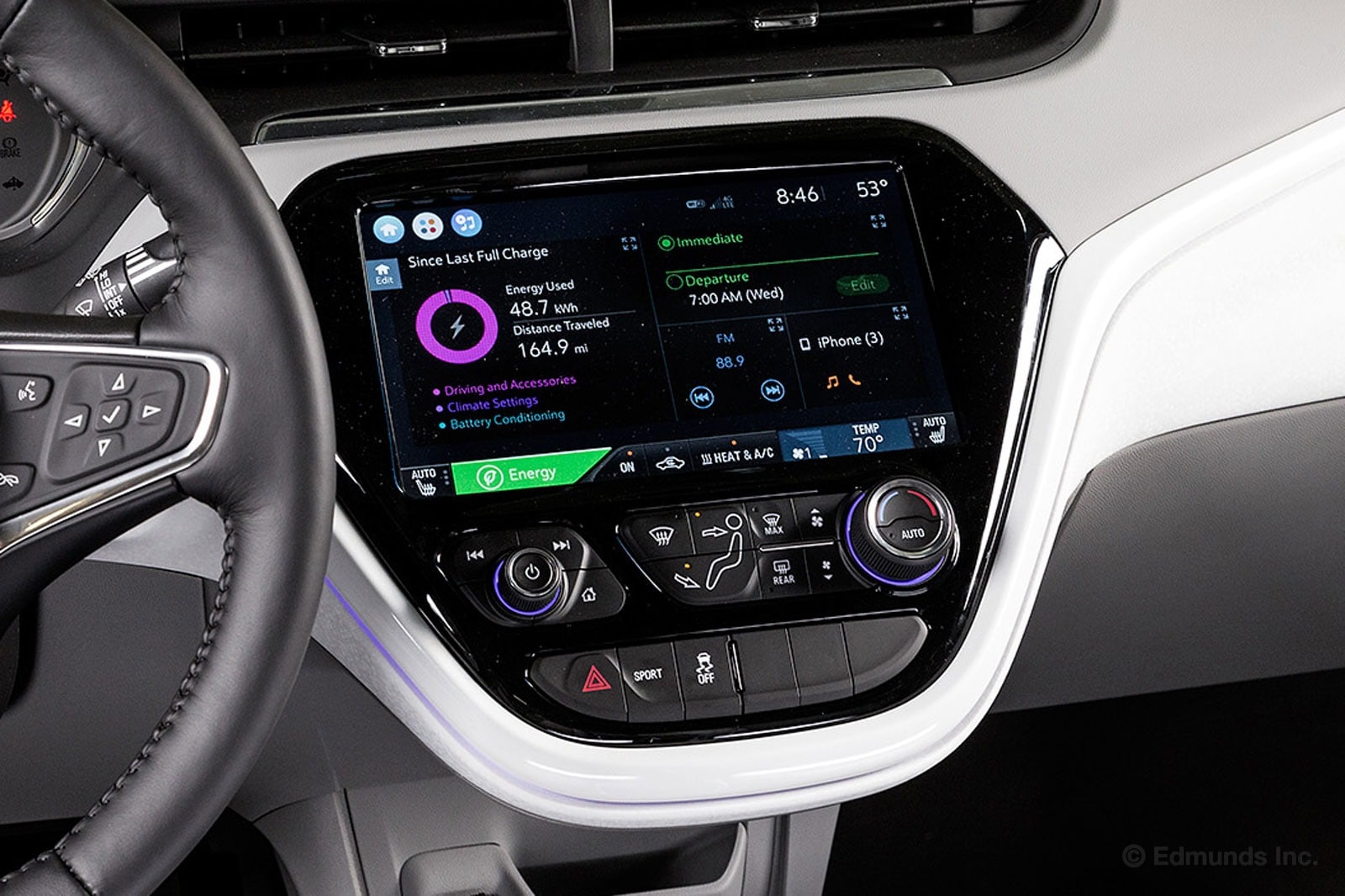
Misc.
"Electric vehicles are all well and good, but with still limited infrastructure, we're a while off from thinking about these cars the way we do about those with gas engines. So when I needed to hit the local mall for about an hour, I planned to use the nearest DC fast charger at a hotel parking lot near the mall. The Bolt's battery was still half-full, and I'd actually scheduled some time the following day to visit the charger for a full charge. But since I had an hour to kill, I figured maybe I could get a near-full charge and maybe skip the next day's visit altogether.
"The trouble began at the first of the two ChargePoint chargers. It returned a 'charging error' message each time I tried to initiate charging. So I tried the other charger. Both were, surprisingly, unoccupied, but it was soon clear why: The second charger didn't work either. Finally I ended up going around the corner to another lot with a 240-volt charger, which added only 10 miles of charge after about an hour. If you roll up to gas pump that's out of order, you move to the next pump or you drive to another gas station. In this case, the nearest DC fast charger was miles away. I didn't bother going into the hotel lobby to ask anyone about problems with the charger. It was already late, I needed to get over to the mall, and I assumed no one at the desk would know much, or care much, about the fussy chargers. Or at least I didn't plan to stick around for the time it would take to find out.
"In this case, the 10 miles added by the 240-volt charger was enough to get home, with still plenty of miles to get to another fast charger later. It also pays to have a contingency plan or two, something you don't normally consider when driving a gas-powered machine." — Dan Frio, automotive editor
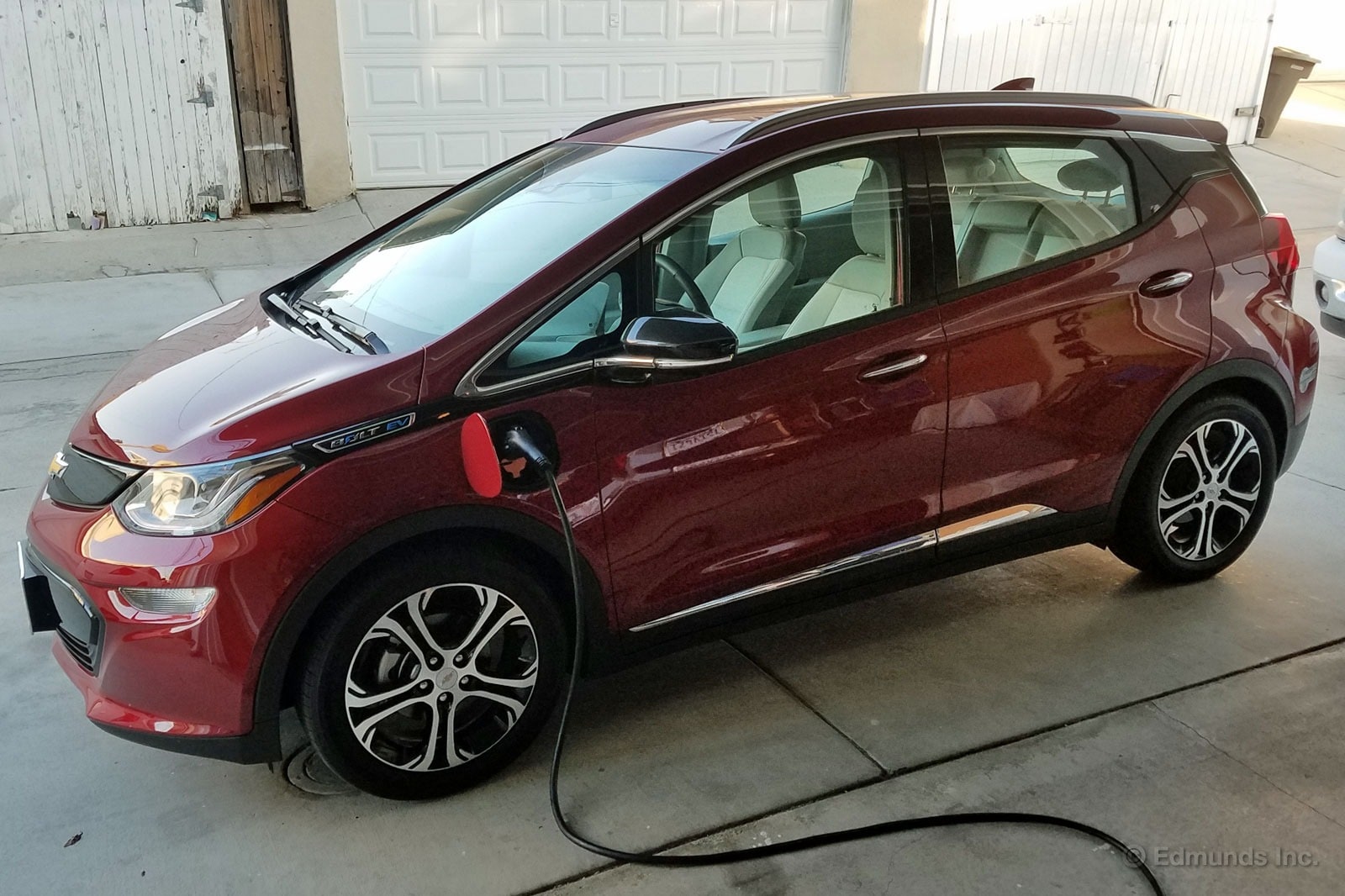
Cargo
"I've noted before that the Bolt has a very usable cargo area, but I think it's worth noting again given its size. This is a small car in terms of footprint, but it's able to swallow cargo very easily and without much moving of seats. In this case, I moved the cargo floor to its lowest position so I could load a few things and keep them snug while I continued with a few more errands. Much like the minivans that offer this same feature, the dropped load floor does a great job of keeping things from sliding around. And if you don't need the extra space, the floorboard can be repositioned for a completely flat floorboard. It makes the Bolt quite a bit more practical compared to your average hatchback." — Ed Hellwig
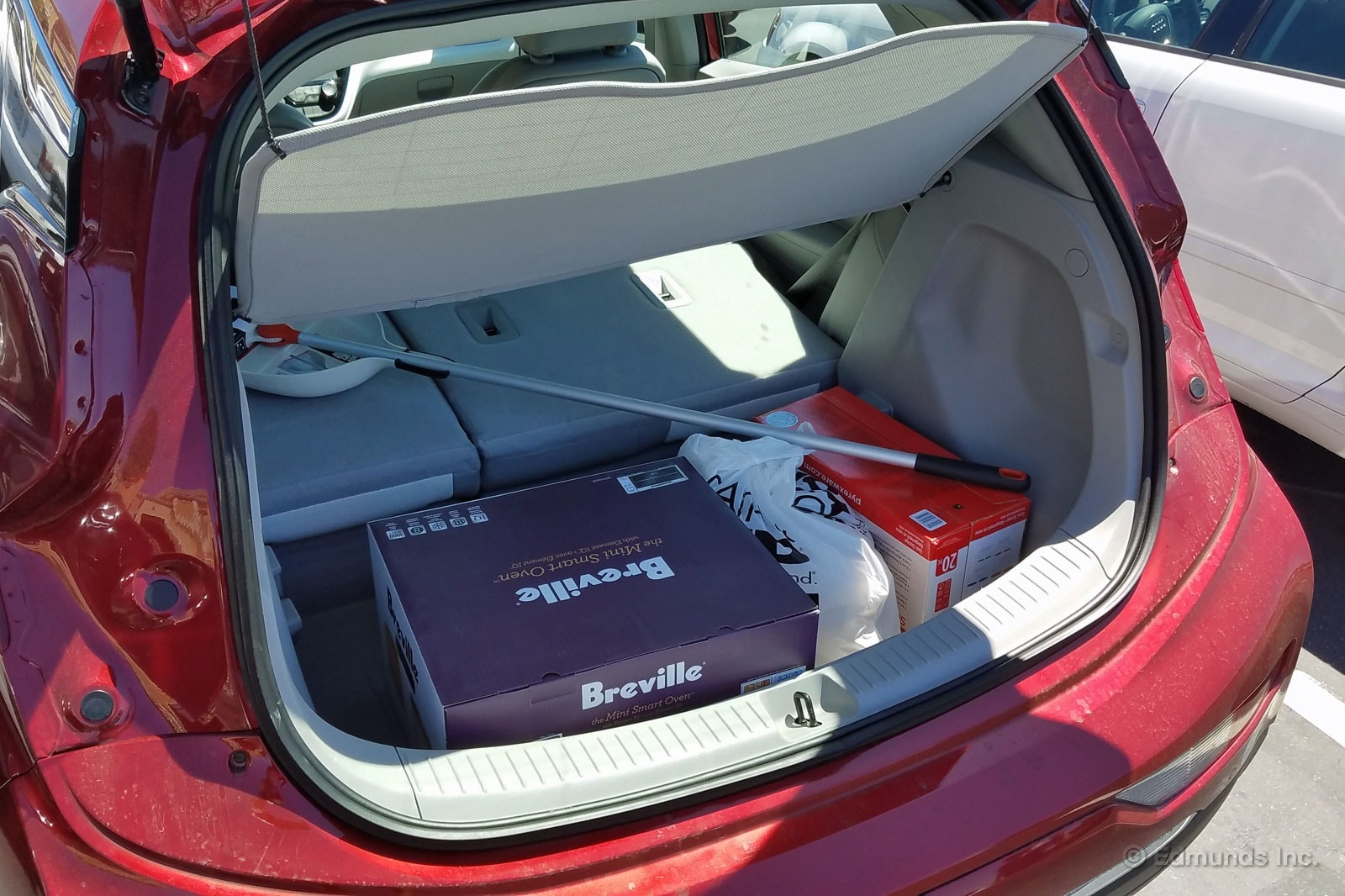
Monthly Update for July 2017
Where Did We Drive It?
I guess this was one of those months for our 2017 Chevrolet Bolt EV. No, nothing bad happened to our little red runabout, but it didn't really rack up that many miles. When it wasn't parked, it stayed local and low-key. It's still a congested city/snarled freeway traffic favorite, and instead of complaints, the logbook filled up with ways Chevrolet could make the Bolt even better now that the Model 3 is in production.
What Kind of Fuel Economy Did It Get?
The Bolt only covered 800 miles in July, and most of the plug-ins were done with well over 150 miles range still left to go. This is me expressing disappointment. Our Bolt has currently covered just over 7,900 miles.
That said, our maximum range is still 248.6 miles, which absolutely shames our $144K Tesla Model X and its best range of 212.6 miles. I'm betting the Bolt could beat the Model X to San Francisco and back. #smugrun2017
Maintenance and Upkeep
None.
Logbook Highlights
Interior
"What the Bolt needs, other than better seats, is a really good audio system. This car excels in traffic, but it lacks halfway decent sound to help pass the hours you spend stuck in traffic every week. Even if it was a $3K option — if it was good enough — Chevy would sell every one of them." — Kurt Niebuhr, photo editor
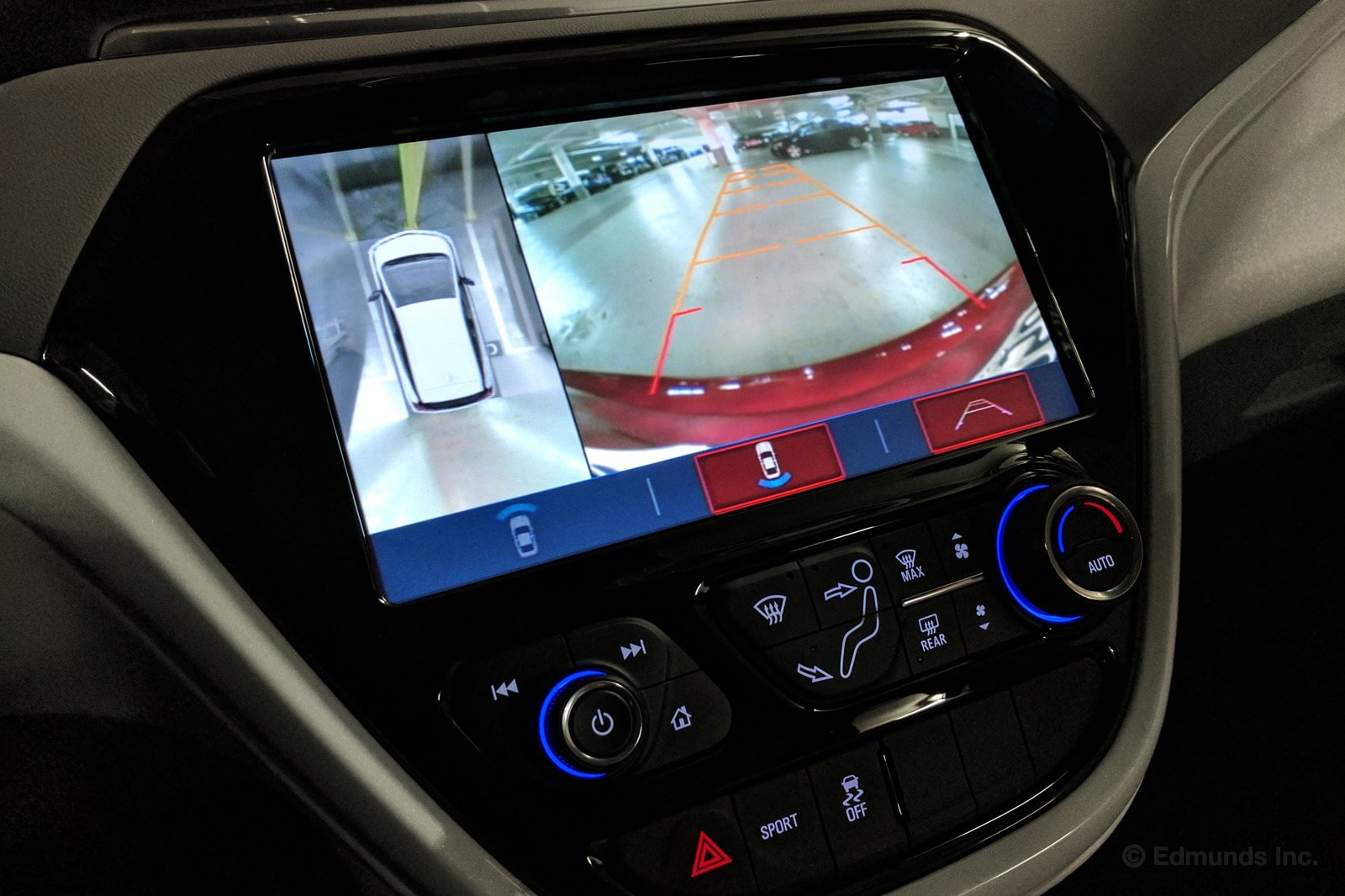
Technology
"The cameras on this car aren't bad, but it only takes putting a Mercedes or BMW into reverse, just once, to realize that Chevy needs to up its camera game. They're a bit 2007 (never thought I'd say that) and a good, crisp camera set would go a long way toward making this EV feel much more upmarket." — Kurt Niebuhr
Miscellaneous
"The Model 3 is going to need to be better than the Bolt if it wants to really impress people beyond the Tesla Owners Club. The Bolt has been a wonderful little surprise, especially coming from a company whose previous full-electric effort was a Spark EV! I bet Tesla never saw Chevrolet as being able to produce some solid competition, but I have a feeling that Elon Musk likes having another contender in the fray." — Kurt Niebuhr
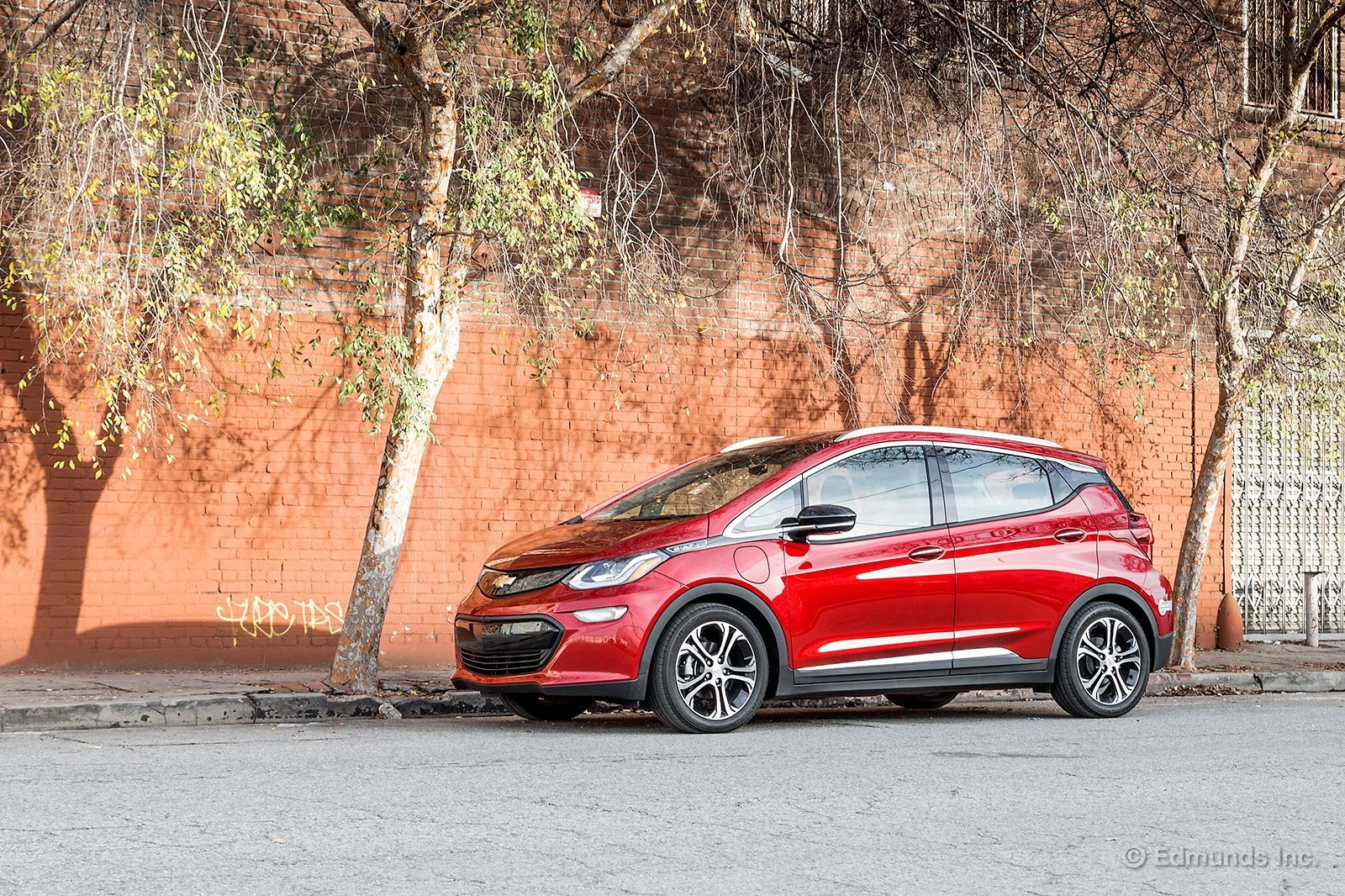
Headline Self-Sealing Tire Saga
It started with a tire pressure monitoring system (TPMS) warning Saturday night.
The left rear tire on our 2017 Chevrolet Bolt was down to 23 psi from 38. A quick inspection showed no obvious visual, or audible, cues of puncture. So we aired it up to 45 psi and parked the Bolt for the night. By morning it was back down to 41. While there was some relief that it was a slow leak, we still had a problem. Our adventure began the next morning at the tire shop.
The shop was busy when we arrived, but we just needed a patch and figured that it wouldn't take too long. The tech got the tire off and easily located a run-of-the-mill perforation in the center of the tread. Inside, we discussed our options with the rep behind the counter. "That is a special tire," she began. "It has a liner inside that is there to self-seal holes, so we can't patch it. We don't carry that tire in stock. I'll need to order one. It will cost ..." At that point we tuned out.
This explanation was frustrating. It seemed unrealistic that the tire could not be repaired. But since it was still holding air, we had some freedom to explore other options. We thanked the rep politely, asked that the tire be put back on the car, and left.
That evening at home, we decided to take a gamble and drive the Bolt to the office. Another car was waiting there for us to switch into and we could deal with the tire on better terms Monday morning. At the rate of this leak, the odds were in our favor. And logic convinced us that, if we left now, we'd still make it home in time for Game of Thrones.
As we reached freeway speeds our predictable, slow leak opened wide and the tire pressure fell quickly to single digits. We safely exited and parked at a gas station. Inside we purchased a can of Fix-a-Flat, still set on the idea of limping the car back to the office.
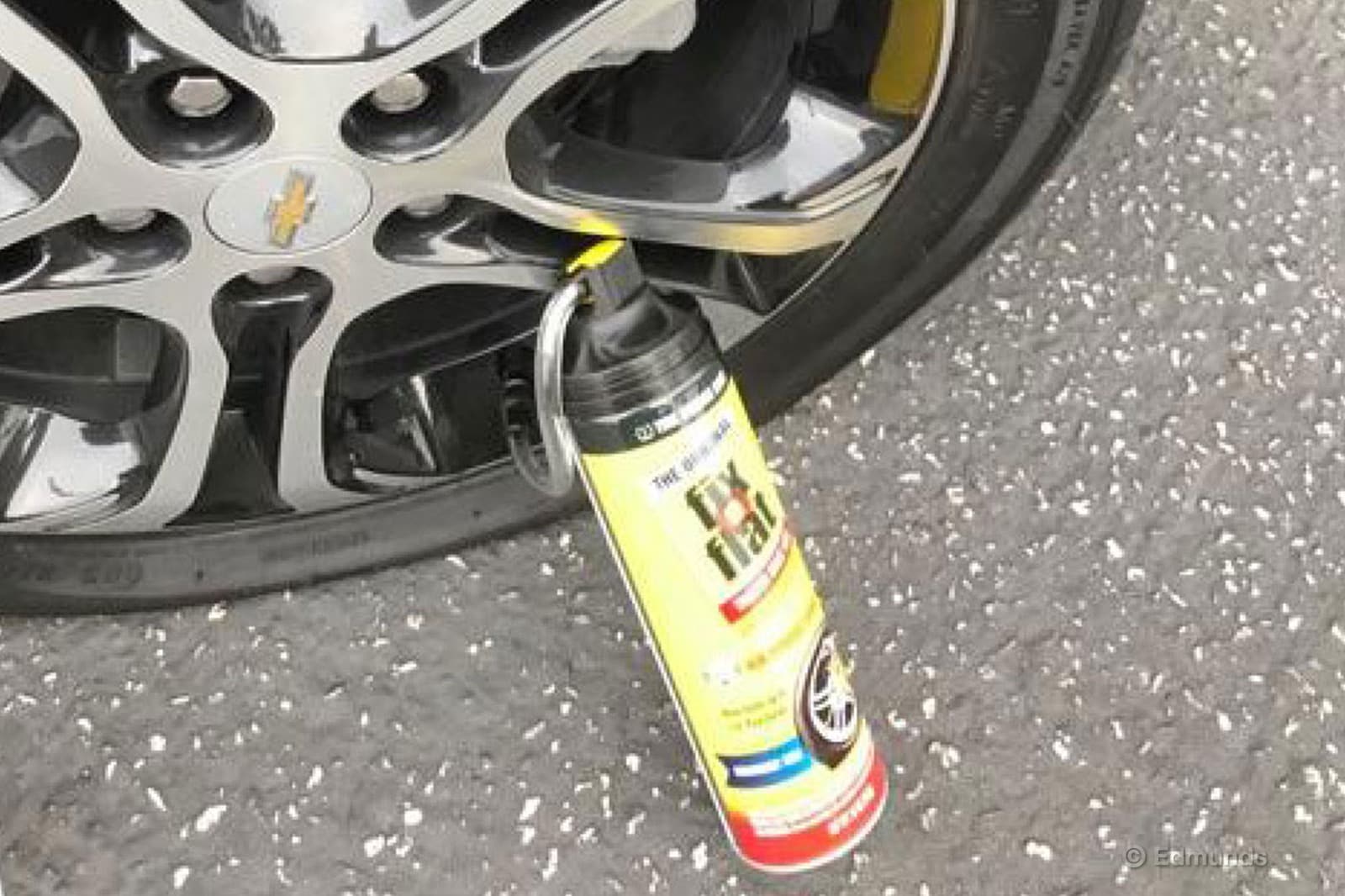
In short time the sealing foam was everywhere. It oozed from the puncture hole in the tread. It oozed from the valve stem. Despite the signs suggesting it was futile, we tried airing the tire up. It hissed back at us angrily.
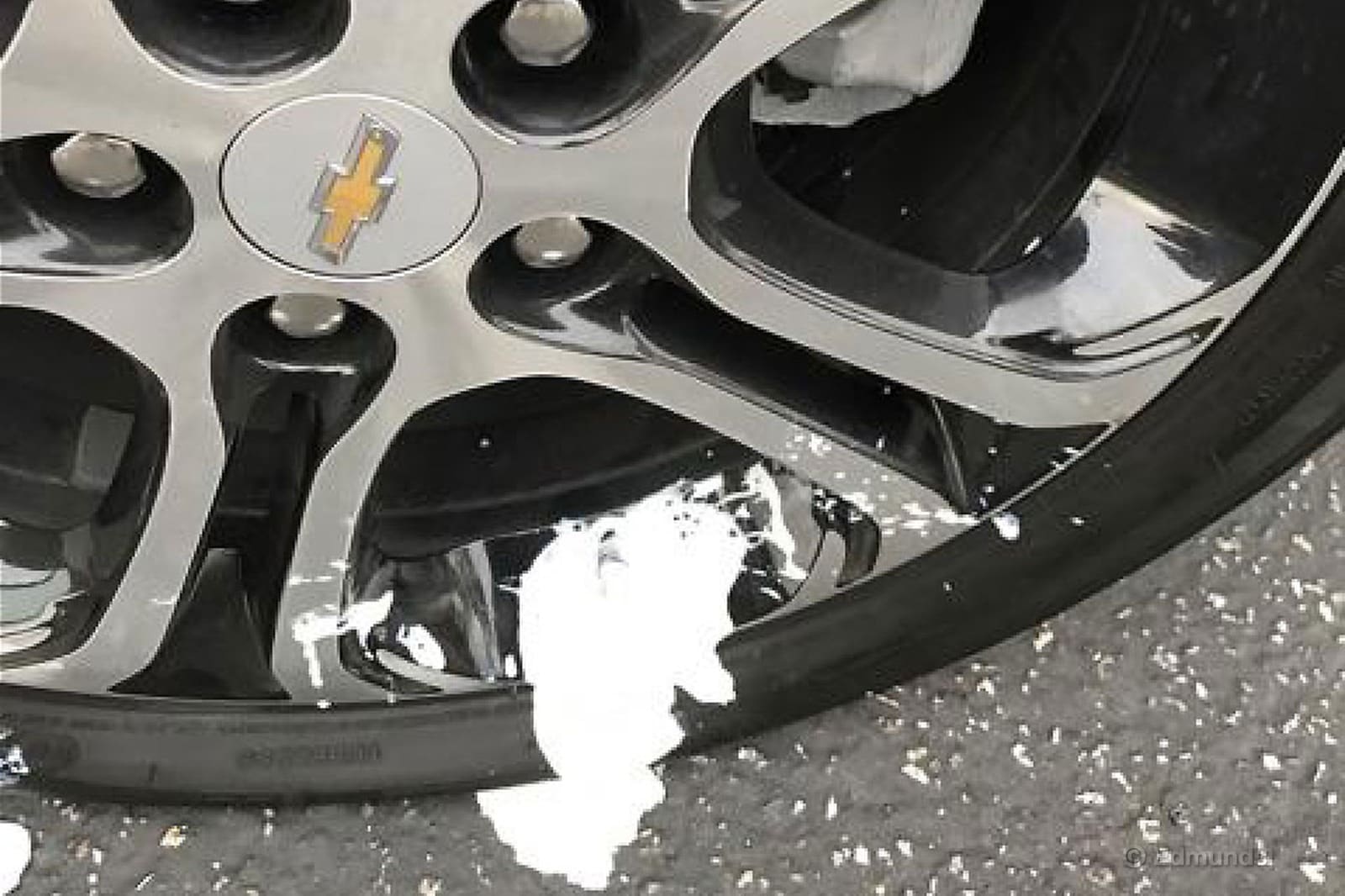
"Hello, OnStar? We need a tow." A truck arrived about 15 minutes later and transported the Bolt to the nearest Chevrolet dealership. While waiting for the truck we called home, "This isn't over yet. Will you pause Jon and Daenerys until we get there?"
The next morning about 7:30 the phone rang. It was Martin Chevrolet: "We have your car. We'll take a look at the tire when our techs arrive and call you back. Do you prefer text or phone call communications?" At my request, a text came through at 10 a.m.: "We were able to patch the tire. Your car is ready for pick up. It will be $35."
This was much different than our first tire shop experience. So we called a third outlet. This tire shop told us it hadn't seen any Bolts yet. But in dealing with self-sealing tires over the years, they typically removed the tire, manipulated the sealant from inside until it covered the hole, and then put the tire back on. With such varying approaches, we contacted Michelin directly for clarification.
Michelin Selfseal technology was specifically developed for the Bolt. According to the website, it works "by sealing most punctures up to one-quarter inch (in length)." The site doesn't explain how to repair them, so we reached out to Brian Remsberg at Michelin public relations. He was a big help, sending us the inspection and repair procedure bulletin. The quick version was that the patch install is just like a standard tire. The long version follows, step by step:
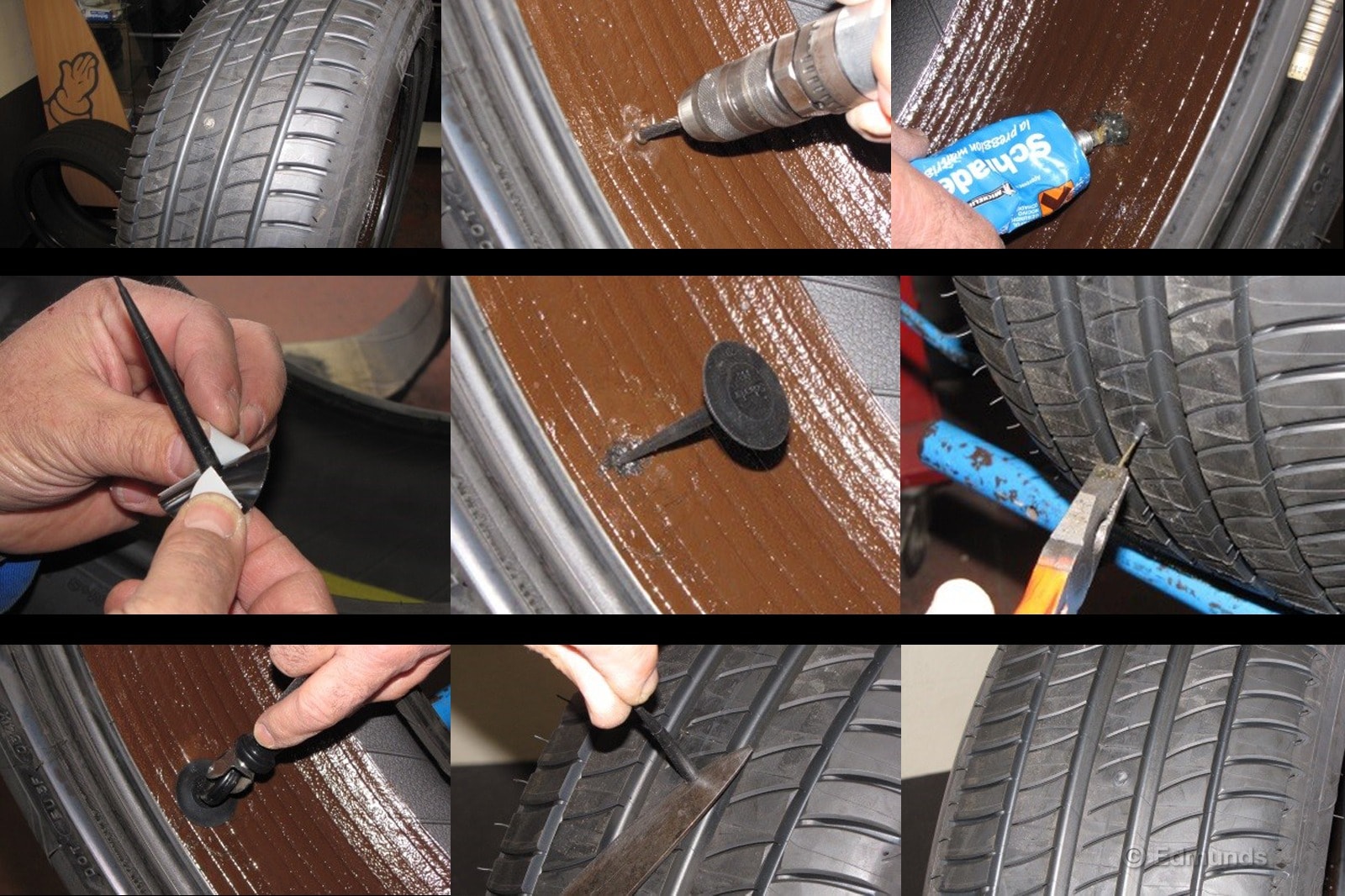
1. Identify the puncture inside the tire.
2. Bore the hole from the inside following its trajectory.
3. Spread the adhesive directly without brushing. Let it dry for 5 minutes.
4. Remove the protection without touching the uncovered surface.
5. Insert the stem from the inside.
6. Pull the stem smoothly from the outside.
7. Roll over the stem head, moving from its center toward its edge.
8. Cut the protruding part on the outside without pulling the body of the stem.
The conclusion is that Martin Chevrolet did it the right way. And both of the tires shops we consulted lacked the information to repair the tire properly. It seems appropriate to mention that neither was a Michelin-branded shop. Should that matter? But the story didn't end here.
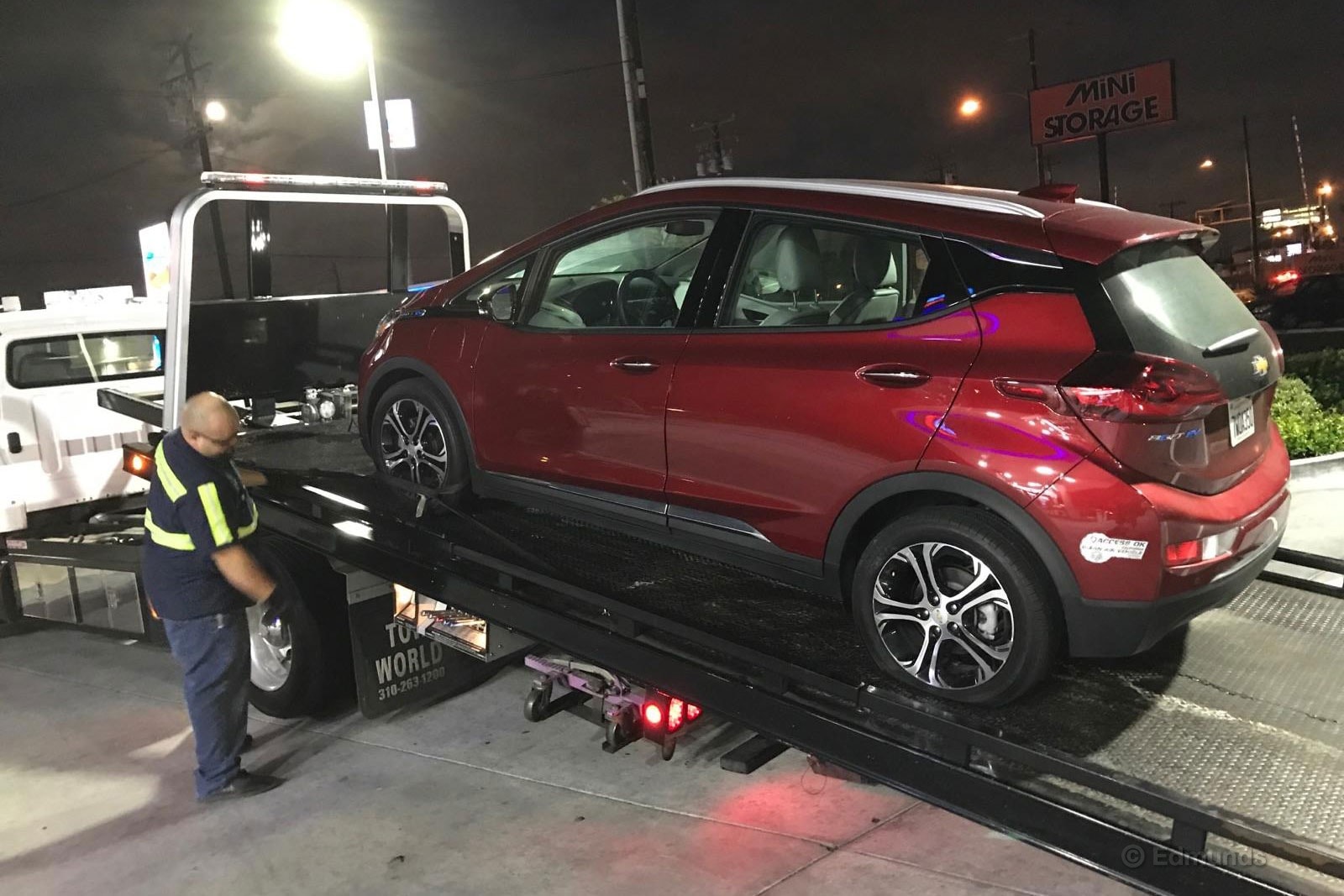
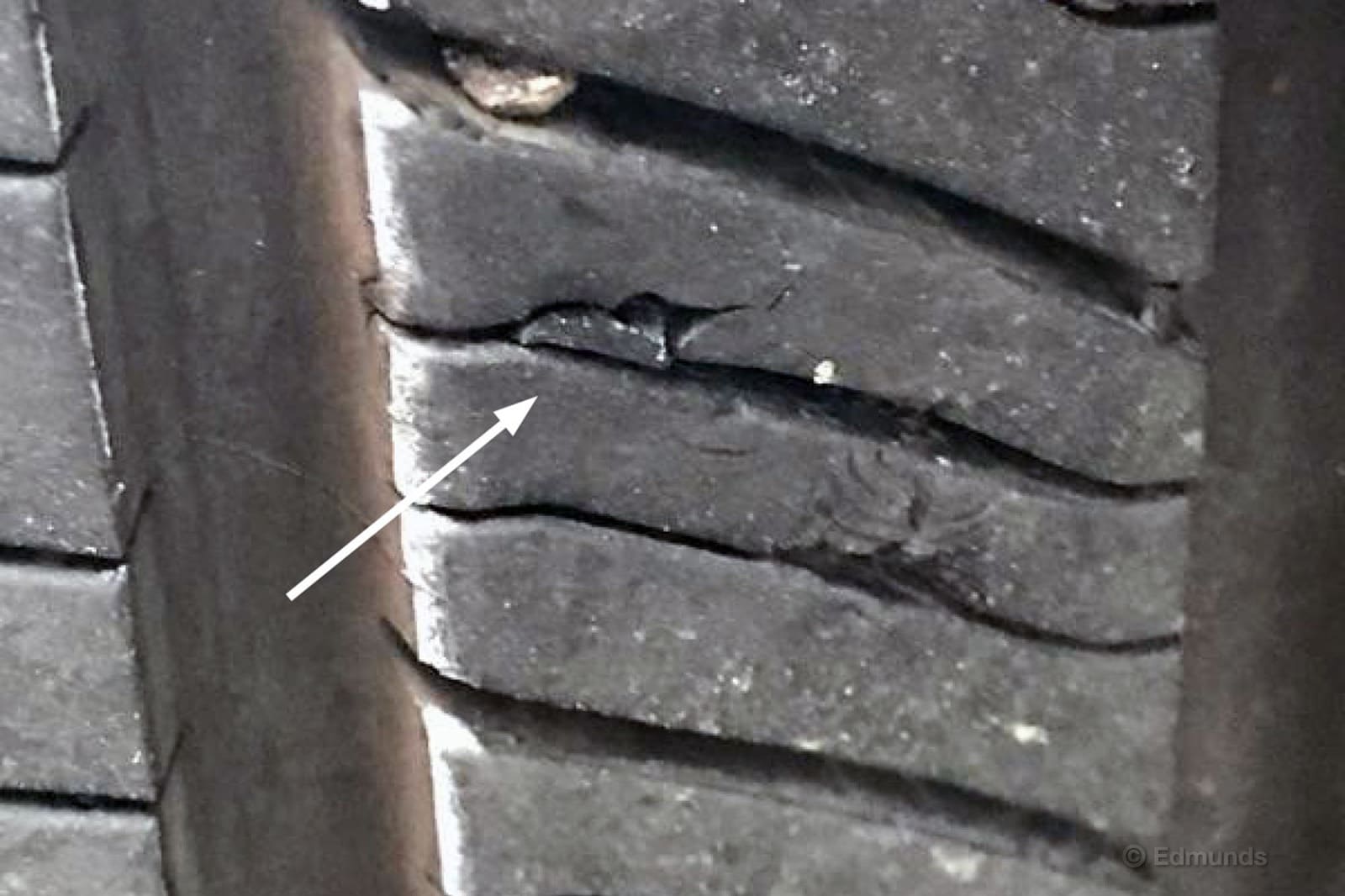
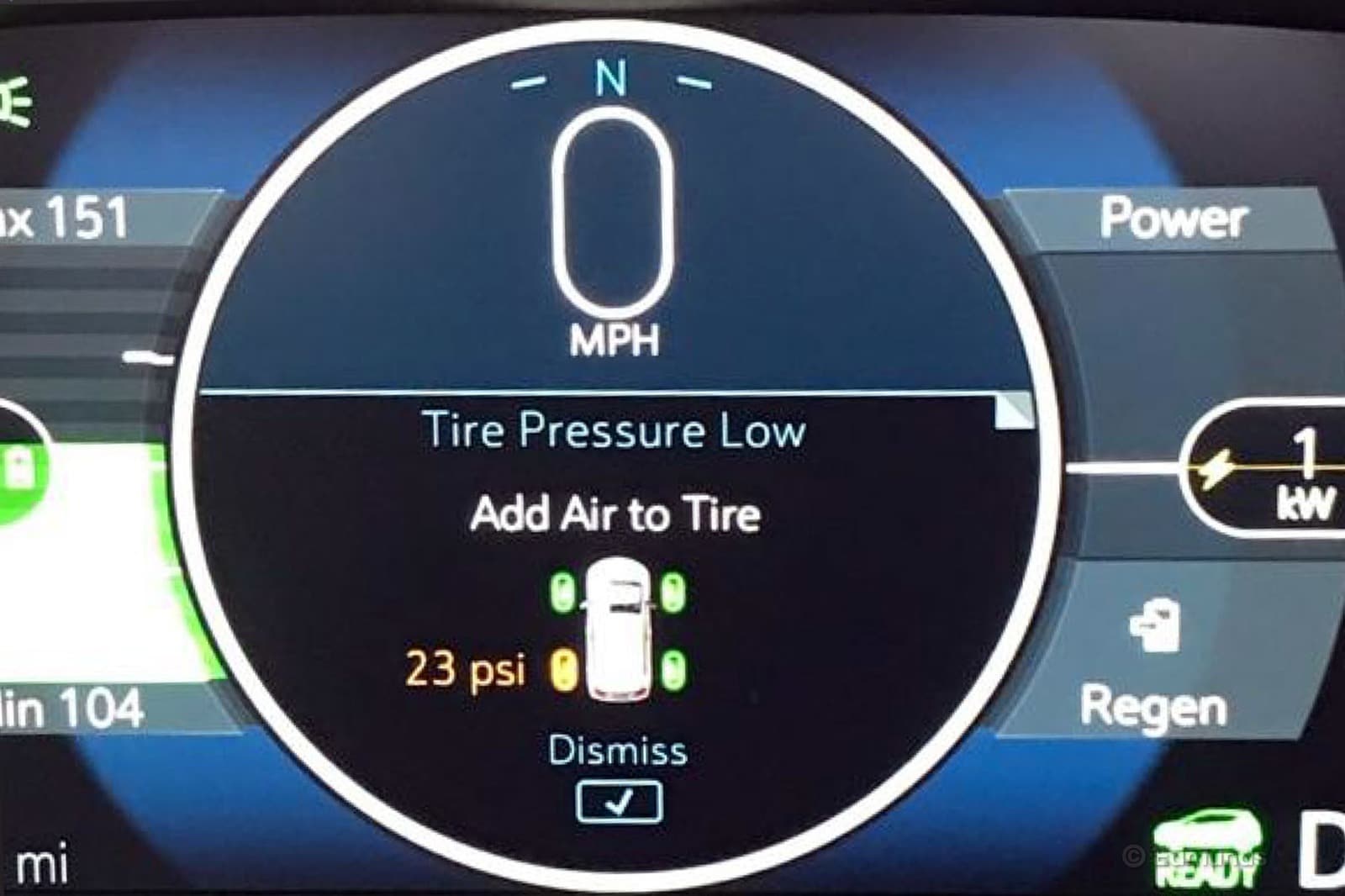
Less than a week later, the same tire had a slow leak again. This time we got it to our garage with less drama. Fearing the worst, we called for tire availability before even taking it to the shop.
Nobody had one in stock. We tried Tire Rack. Tire shop No. 1 couldn't source the tire at all, but it could get the non-self-sealing version. Dealership No. 1 needed two to three days. Dealership No. 2 said it could "probably" have the tire the next day. Dealership No. 3, the largest in our area, could "get it next day if we ordered it early enough." Tire estimates varied slightly but averaged about $150. We sent a note into the tweetosphere, "Hey @MichelinUSA. Need to replace a @chevrolet Bolt tire. Tire is completely deflated. No local supply. No Tire Rack. Need one. Advice?"
Michelin was quick to respond, saying it had just shipped us a tire. We should see it the next day. This wasn't the channel we wanted to use, but we were grateful. And having the tire in hand gave us some flexibility to perform other tests on the damaged tire. Because at this time we didn't know the cause of the leak yet. Another hole? A leaking patch? The tire arrived as anticipated and we headed to our local shop, Stokes Tire.

Stokes removed the tire to find an anti-climactic second puncture. This hole was in the shoulder of the tire and could not be patched. So we took a lot of photos and replaced the tire. We kept the old one for posterity and internal education. After our first, and second taste of self-patching tire technology, we're not sold. We paid $30 to the shop for labor and hit the road.

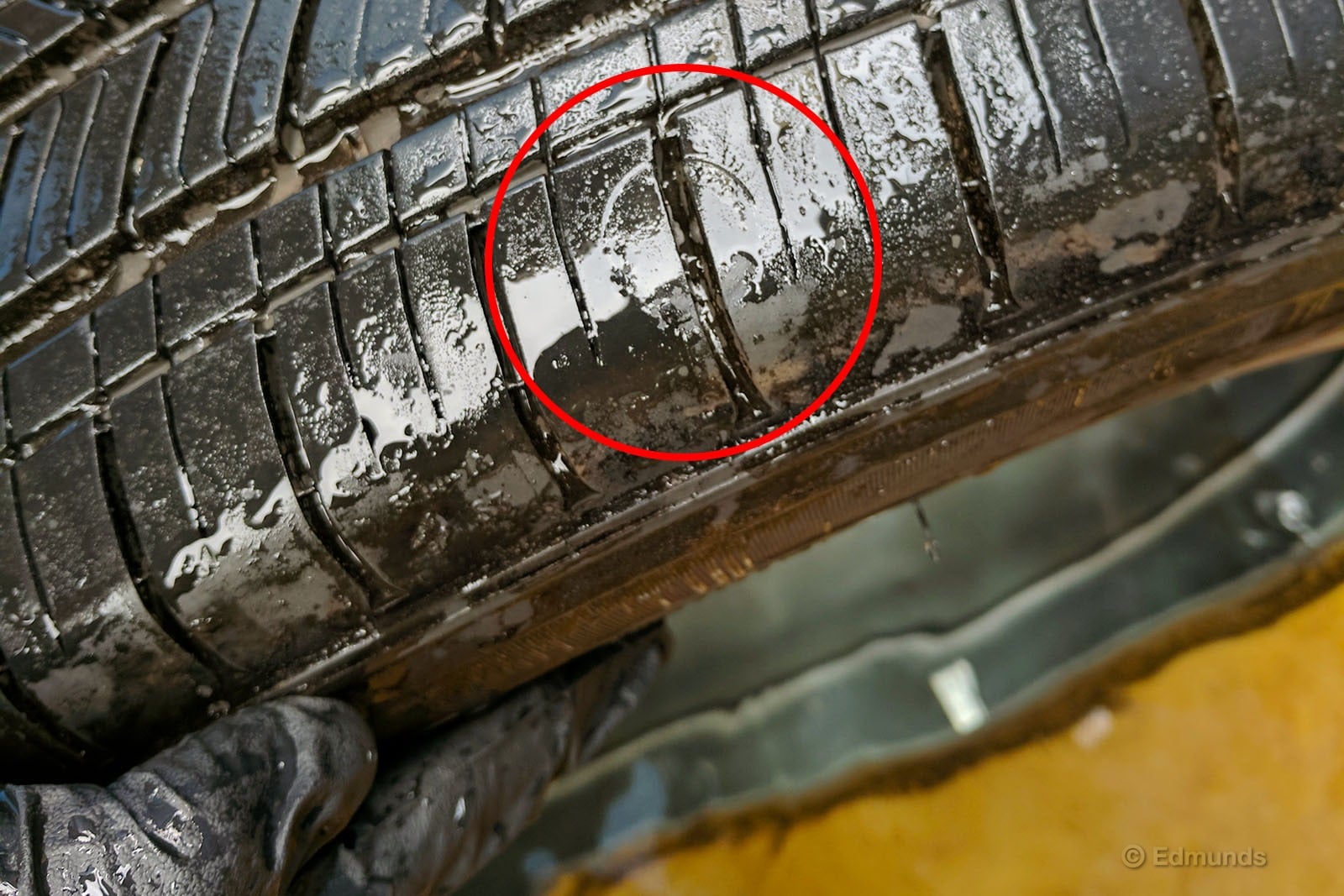

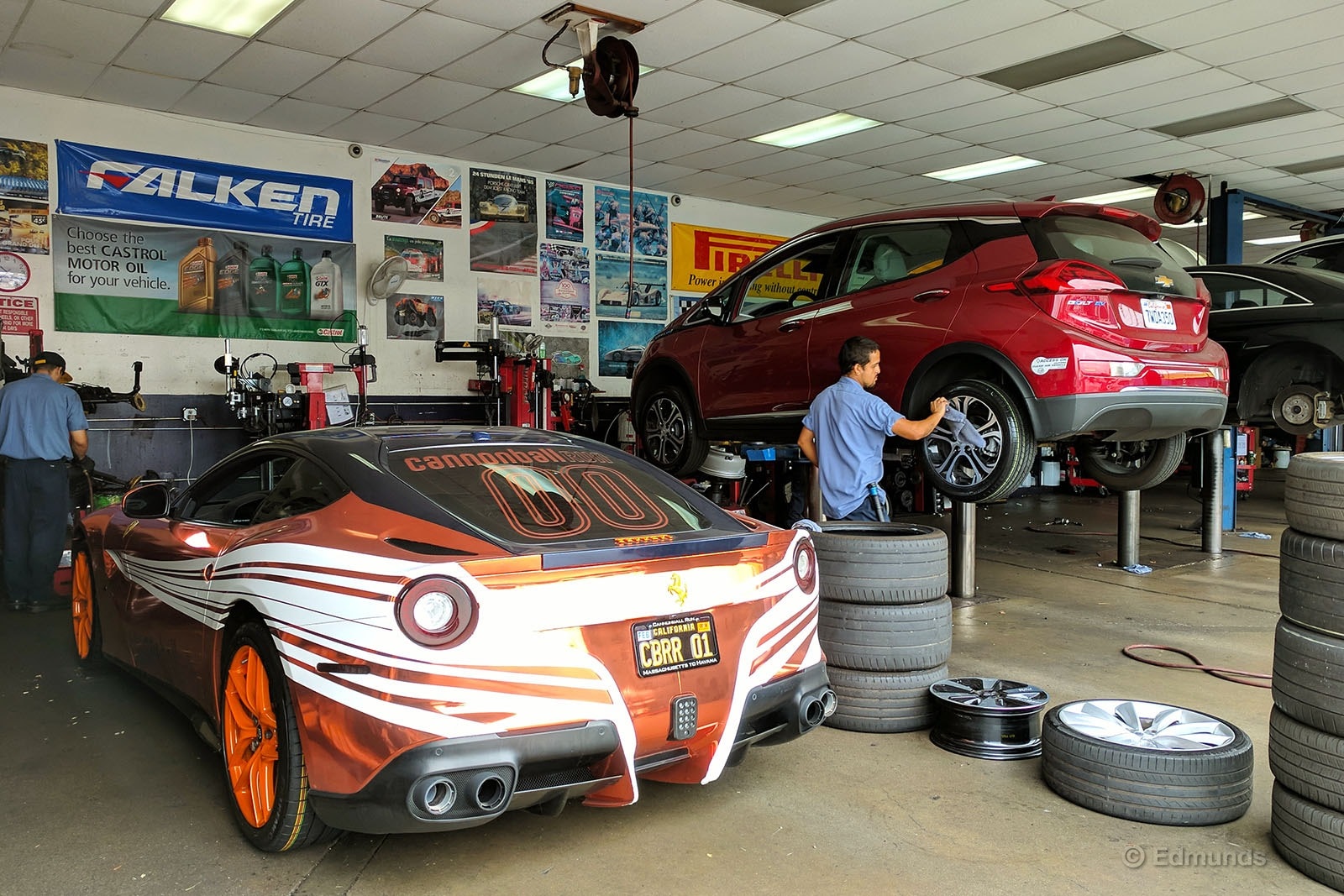
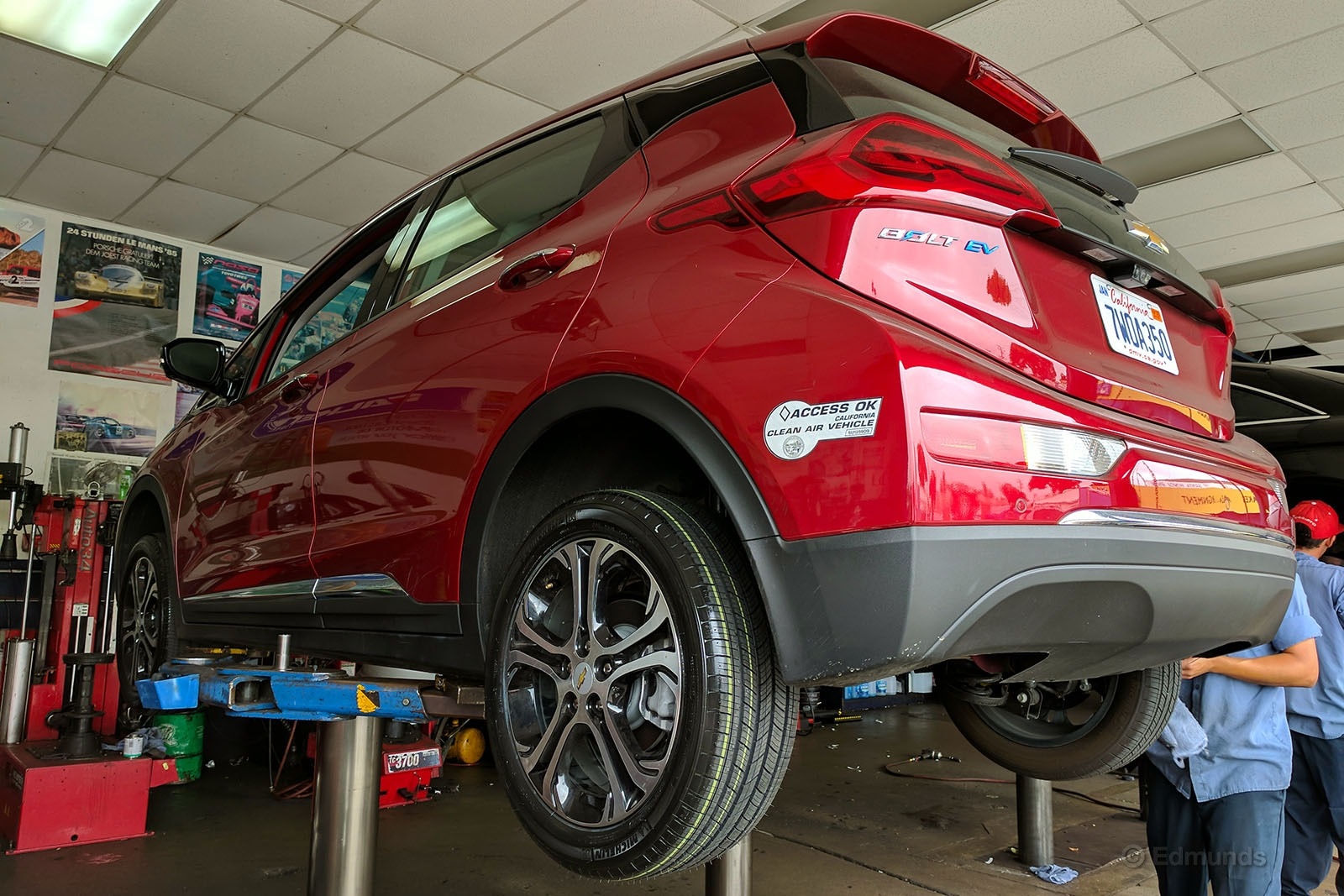
Monthly Update for August 2017
Where Did We Drive It?
August was another low-mileage month for our 2017 Chevrolet Bolt, but it was not without some drama. We spent the past four weeks using the Chevy to get to and from the office and as a city runabout. Never far from a charging station, the range envelope was not really pushed. Despite the lack of miles, there was still some excitement.
The Bolt spent a portion of the month out of commission with a flat tire. More precisely, flat tires. It went to three different tire shops and rode on the back of a flatbed tow truck. And it sent us on a seemingly wild goose chase in search of a replacement tire. In the end, the experience served as a frustrating reminder of what it's like to own a car without a spare tire.

What Kind of Fuel Economy Did It Get?
We traveled just 806 miles in the month of August. Coincidentally, that is almost exactly how far we went last month. We averaged a conservative 85 miles between plug-ins this month, which is below our lifetime average of 105 miles.
With many drivers and varying schedules, it seems we can't get up the nerve to push the range to its limit for any period of time. The typical owner isn't going to have this issue. So far we are 8,917 miles into our test, and our max range so far is 248.6 miles. Seems to me like we're overdue for a serious range test on this thing.
Maintenance and Upkeep
On the maintenance front, this month was irksome but educational. We learned a lot about the intricacies of getting a flat tire on the Bolt. The quick summary is that we are not sold on self-sealing tire technology. Replacement tires are hard to come by. And some shops don't even know how to repair them.
Total cost: $60
Total freebies: 1 Michelin Energy Saver A/S tire ($150 value)
Total days out of service: 4

Logbook Highlights
Performance
"Acceleration (of course) is fantastic. Push Sport and you can scoot into tight spots in traffic with nary a second thought. ... I wish it had adaptive cruise control. I realize it is supposed to come in 2018, but in L.A. traffic it can't come soon enough. On a full charge in L (which is my favorite way to drive it — hooray for one-pedal driving!), the gauge said I could get as much as 300 miles! Mind you, I haven't had the Bolt up past 50 miles per hour because of traffic, but it's a fun little car." — Abigail Bassett, senior director video & social media
Technology-Audio
"The Bolt's infotainment screen is tilted at an odd angle. It sits too far back to my eyes. From where I sit, the right of the steering wheel cuts off the left of the screen. I'm guessing this was done to reduce glare, but it has made it less ergonomic." — Ron Montoya, senior consumer advice editor
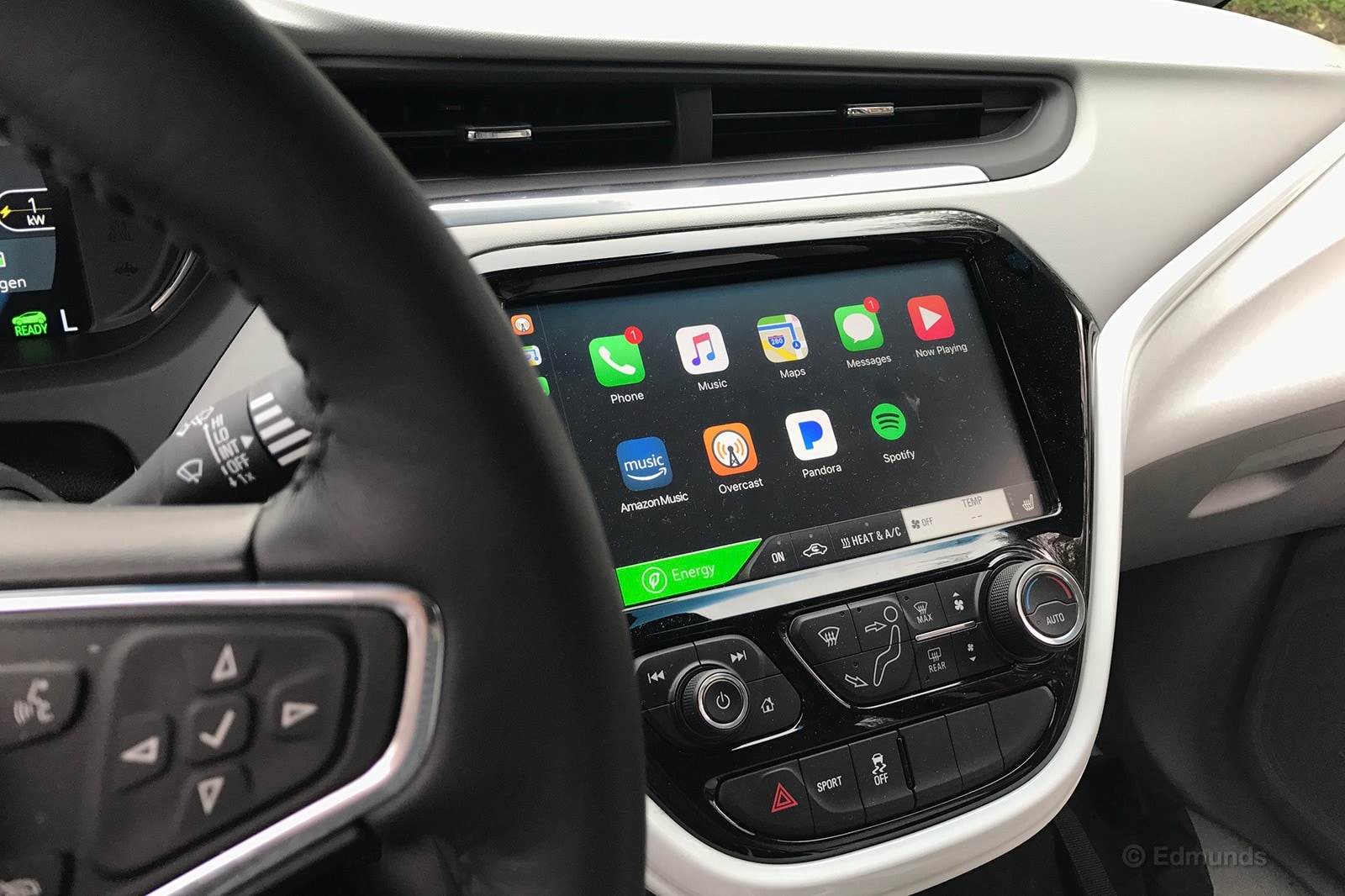
Interior
"I had four people in the vehicle over the weekend, two of which were well over 6 foot, and both could sit comfortably [in the second row] with luggage behind the back seat." — Abigail Bassett
"I really like the interior styling. The white latticed door tops and dash are a really subtle but nice touch." — Abigail Bassett
Miscellaneous
"The Bolt is fantastic. It's as close to a 'future vehicle' as I think you can get on a mass production car. ... All in, this is the one modern car that I would absolutely consider buying. Sure it looks doofy, but I kind of love the dorkiness of it." — Abigail Bassett

Monthly Update for September 2017
Where Did We Drive It?
We didn't quite add 1,000 miles to our 2017 Chevrolet Bolt EV this month, but we got close. Most of the mileage came from commuting, and because our Bolt EV has HOV lane access stickers, it's a favorite with those of us who have a particularly long drive to the office.
A couple of short weekend excursions were mixed in here and there because our Bolt can use DC fast charging equipment, but no one has thus far embarked on any kind of extended road trip. I'm willing to bet that situation will change fairly soon.
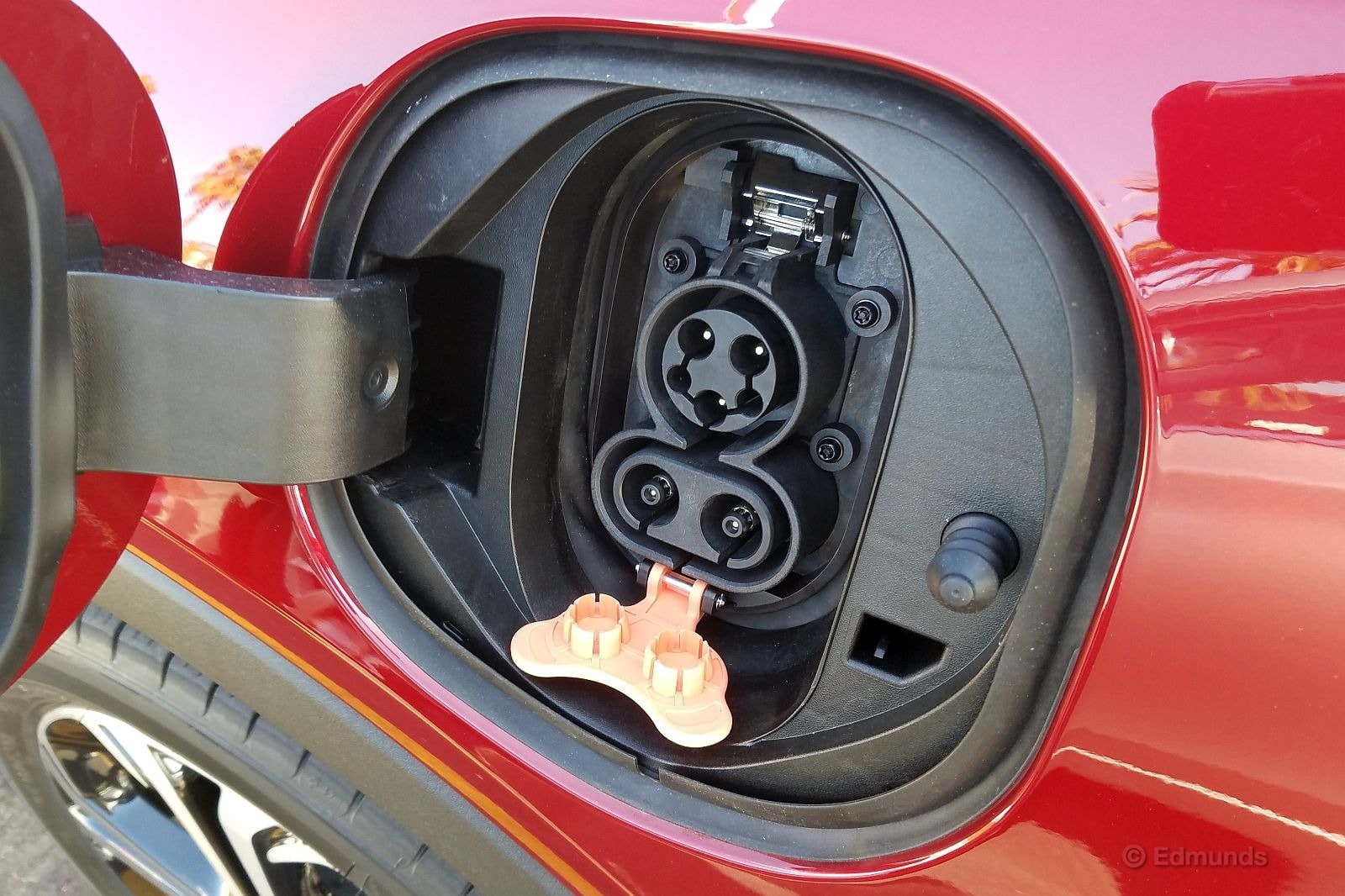
Our Bolt has nearly 10,000 miles on it, and we track every fill-up. We own our own ChargePoint Level 2 station, and it's a networked commercial unit that uses ID cards that we assign to each vehicle. These cards allow us to determine the amount of electricity our test cars take on at any other ChargePoint station in the country, too.
This approach helps us determine consumption where it matters — from the point of view of the power meter that determines your electricity bill. The in-car meters most EVs have are generally useless when it comes to money matters because they do not account for the 15 to 20 percent of an electric vehicle's consumption that comes from the act of charging.
The Bolt is unique in that its in-car meter at least includes an estimate of the charging losses. Its dashboard readout is more useful than most, but it's not the same as measuring it directly as we do. The EPA uses the same approach, of course, when it determines window-sticker ratings.
Only 7,671 miles of our accumulated Bolt test data is "good" because our drivers aren't always able to use a ChargePoint station. Sometimes they use Brand X, and other times they use the 120-volt cord at home. In either case we don't get any charge data, so those sessions must be ignored. And more than one charge can get lost in this way if a partial fill for which we do have data is followed by a full fill that lacks any charge information. But we still have a wealth of data from which to draw conclusions, and those missing charges are spread randomly over time. It's unlikely that our averages you see below have been affected to any meaningful degree.
Average lifetime consumption: 26.8 kWh/100 miles (125.9 mpge)
EPA consumption rating: 28 kWh/100 combined (119 mpge)
Best fill: 19.1 kWh/100 (176.5 mpge)
Average onboard consumption meter: 3.9 mi/kWh
Current odometer: 9,817 miles
Data miles analyzed: 7,671 miles
We're handily beating the Bolt's EPA consumption rating, and this month we set a new best-fill mark of 19.1 kWh/100 (176.5 mpge). But we're suspicious of this one because it was a short 39.9-mile run, which means it's likely that very favorable conditions or an overall downhill trend played a part. Longer runs tend to be more believable because the conditions average out.
With that in mind, the next-best fill of 22.6 kWh/100 miles (149.1 mpge) occurred over 85.7 miles, and the third best of 23.6 kWh/100 (143 mpge) was sustained for a full 226.4 miles.
Speaking of range, we're ahead of the game there, too.
Maximum distance driven: 248.6 miles
EPA range rating: 238 miles
Average distance driven: 105.8 miles
Maximum projected range: 298 miles
Average projected range: 244.6 miles
Our average of 105.8 miles between charges is not an indictment of the Bolt's ultimate performance. Driving to the ragged edge isn't how electric vehicles are driven day in, day out, and charging is not the hassle that stopping at a gas station can be. EV drivers plug in when it makes sense, not when it's empty. It's more of a simple parking ritual you do casually every day at home or work or wherever it makes sense.
But one guy on our staff did decide to flirt with running out. He managed 248.6 miles before plugging in — and still had 10 miles left. And that's no fluke if you look at our projected range data, which is the miles driven on the trip odometer at plug-in added to the remaining range on the distance-to-empty (DTE) meter at the same moment. Our average projected range for all full charges is 244.6 miles, and the best one of 298 miles suggests that it may be possible to squeeze 300 miles out of a Bolt without trying too hard.
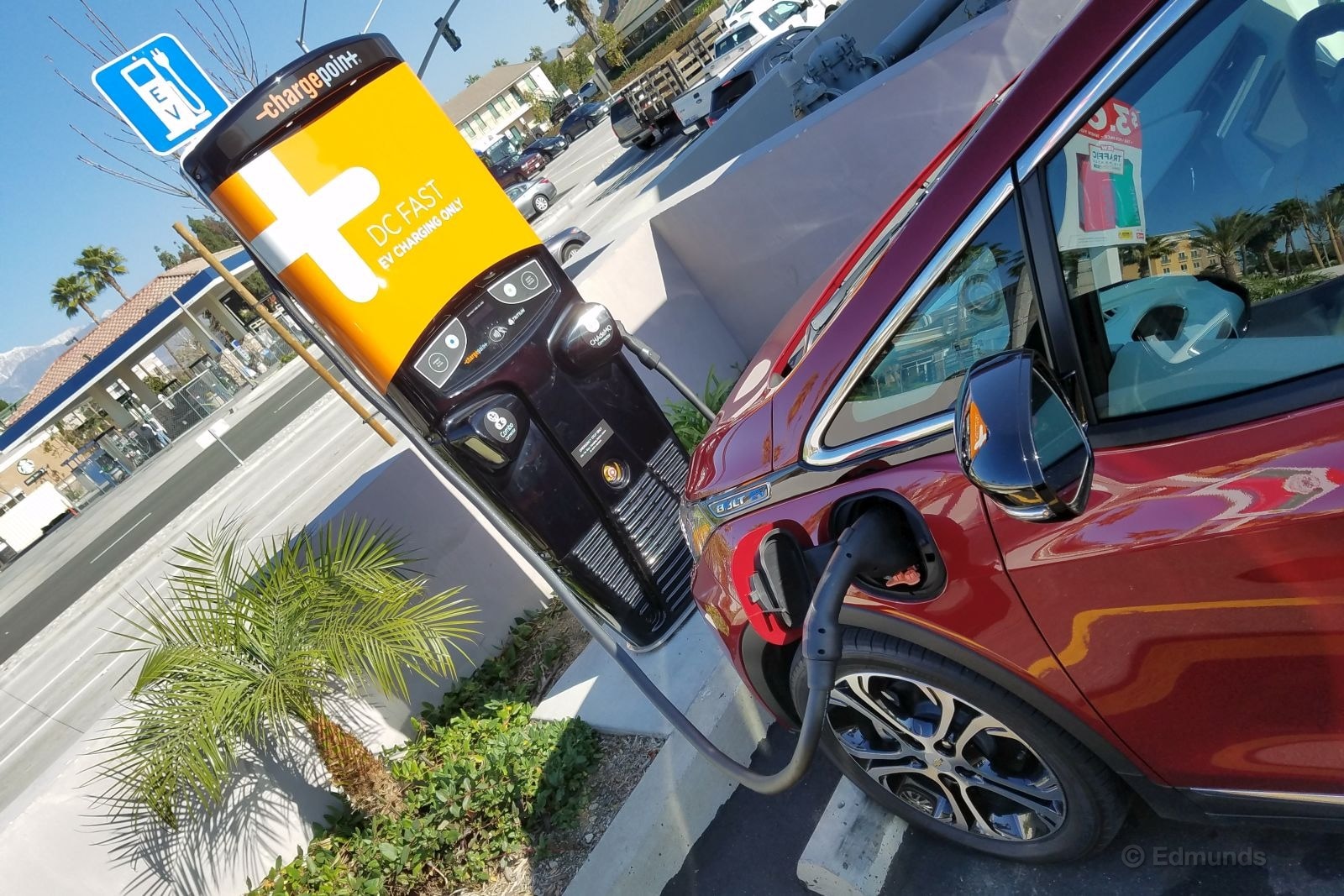
Here are a few other random tidbits from a deep dive of our data.
People always ask how long it takes to charge an EV, but the idea that one will charge only when the battery is absolutely empty and unplug only when it is completely full misses the point. It's more useful to know how many miles of range you can add in an hour of charging. The Edmunds ChargePoint unit is connected to 208-volt commercial power, so the following numbers are probably about 13 percent slower than a home unit wired up to 240-volt residential power.
Average charging speed: 22.4 mph (miles added per hour of charging)
Average remaining range at plug-in: 113.7 miles
Average charge duration: 4.1 hours
Average miles added: 91.8 miles
We have used DC fast charging stations on 10 occasions. Four of these were Brand X stations that didn't give us any fill information, but six were networked into the ChargePoint system. Performance varies wildly at these stations, primarily because the charging equipment (and the cars they are designed to support) are still evolving. The fastest one we've visited delivered 148.1 mph, and the slowest one added just 85.8 mph. That's a big difference, and even the fastest ones barely nip at the heels of a Tesla Supercharger, which this car can't use.
Maintenance and Upkeep
None.
Logbook Highlights
Performance
"The Bolt is alone in providing a very straightforward and effective approach to blended mechanical and regenerative braking: It doesn't do it. Any time you touch the brake pedal, you're pushing the pads against the rotors, and that's why the brakes feel so predictable and controllable underfoot. In D mode (Drive, if you like), the only regenerative braking you get is a thin veneer that makes it feel like you've got the normal amount of engine braking when you take your foot off the throttle.
"Regenerative braking is cranked way up and takes center stage in L (don't call it Low because it's not a lower gear) such that it transforms the driving experience. Here you get lift-throttle braking that allows one-pedal driving. It works all the way down to a full stop, too. There's enough braking force that touching the brake pedal isn't necessary unless an unexpected hazard presents itself, at which point the pads and rotors provide the extra stopping power. It does not get any better than this." — Dan Edmunds, director of vehicle testing
Technology-Audio
"I've got an Android phone and an iPhone, and the Bolt EV supports them both with CarPlay and Android Auto. I've done numerous back-to-back tests, and the iPhone wins for rapid and seamless connectivity, while the Android has the advantage of Waze support right there on the screen. When connected, the iPhone can still be used to run non-CarPlay-supported apps from the phone's screen, but in the same scenario the Android is fully locked out and can only run AA-supported apps via the Bolt's touchscreen.
"And while I used to bemoan CarPlay's enforced use of Apple Maps, the recent iOS 11 update improved the CarPlay version of Apple Maps considerably. It now has accurate lane guidance, improved graphics and a clear ETA information thumbnail screen. I'm leaning toward CarPlay and iPhone at this point, but at least the Bolt supports both and allows an individual to come to their own conclusion." — Dan Edmunds

Cargo Space
"I loaded my mountain bike in the back of the Bolt, but it was a very tight squeeze. It's an XL frame with 29-inch wheels, so it is bigger than some. To get it in, I had to move the front passenger seat so far forward that no one could possibly sit there, and even then it was a bit of a game of Tetris to get the bars to clear the closed hatch. And because the space is so short I had no choice but to lay it greasy-side down with the sprocket and chain close to the fabric, something I prefer not to do.
"Look close and you'll also see that one pedal is jammed into the crack where the seatback folds down, which helped it lie flat and was good for some stability. What you can't quite see is how my bike's rear tire is hovering no more than an inch over the center armrest, which puts it very close to my right elbow. It's in there, but this is no way to travel for any significant amount of distance. Most of the trails I ride are no more than 10 miles from home, so this is doable." — Dan Edmunds
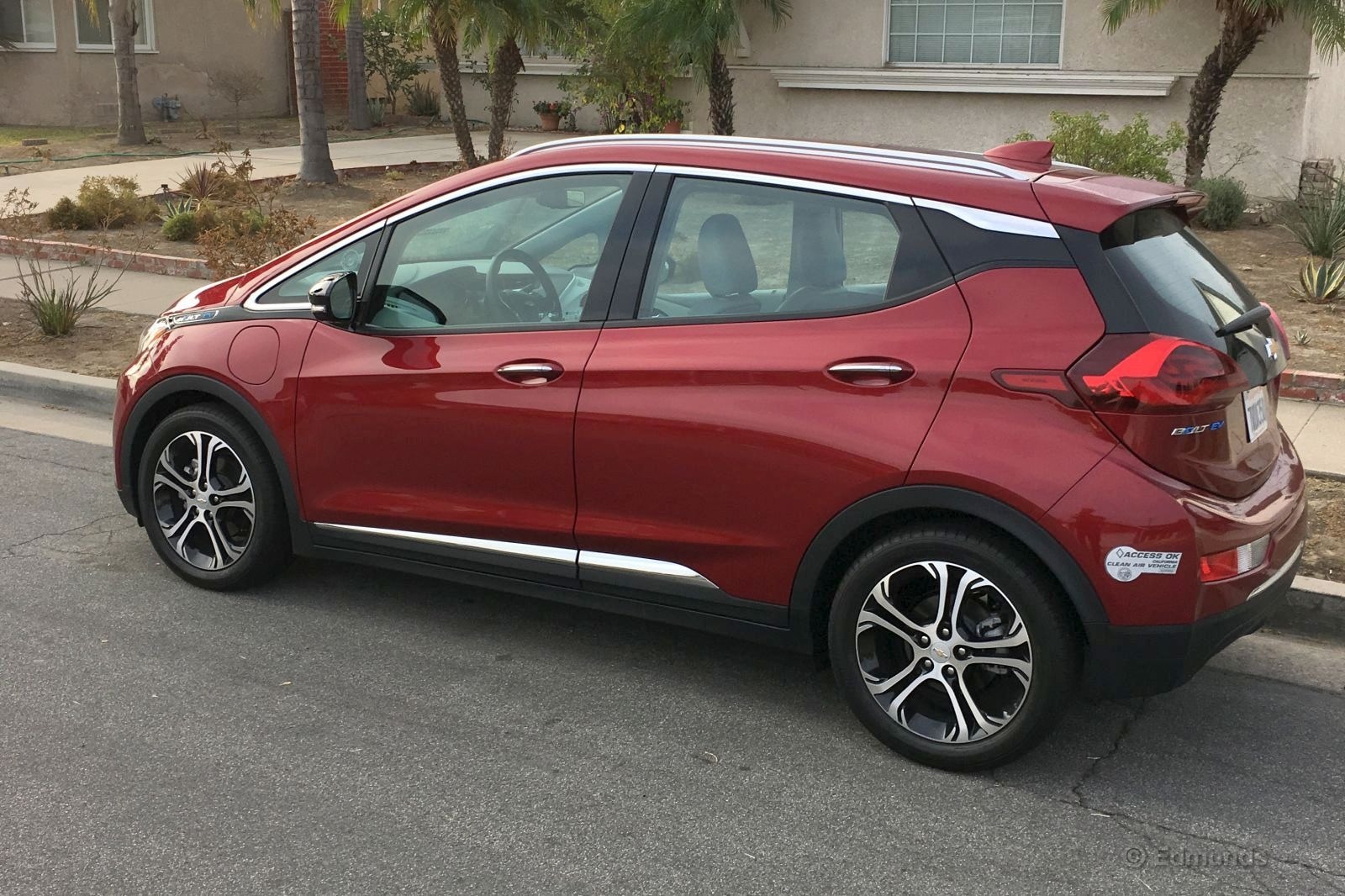
Monthly Update for October 2017
Where Did We Drive It?
When Ferris Bueller said, "Life comes at you fast," he was in no way referring to life on an L.A. freeway. Out here, life comes at you one agonizing foot at a time, but that's when the 2017 Chevrolet Bolt EV does its best work. And for the month of October, we saw the Bolt do its bestest work ever.
What Kind of Fuel Economy Did It Get?
The EPA estimates the Bolt to have a range of 238 miles, and we just tacked on almost an extra 90 miles to that number, setting a new intra-office record of 322 miles on a single charge. That wasn't some downhill both ways nonsense either. This was done on a freeway, in traffic. Consider our expectations thoroughly exceeded.
Anyway, October saw us drop another 1,000 or so miles on the Bolt with the driven range often exceeding 140 miles with over 100 miles remaining in the tank. It would seem that clearing 200 miles on a single charge is only down to a matter of convenience at this point.
Maintenance and Upkeep
None.
Logbook Highlights
Interior
"This shifter. ... Why? I've lost track of the number of times I've driven the Bolt and I still flub putting this thing into gear about half the time. Having two separate buttons, one for unlocking operation and one for engaging Park is not clever — it's dumb." — Kurt Niebuhr, photo editor
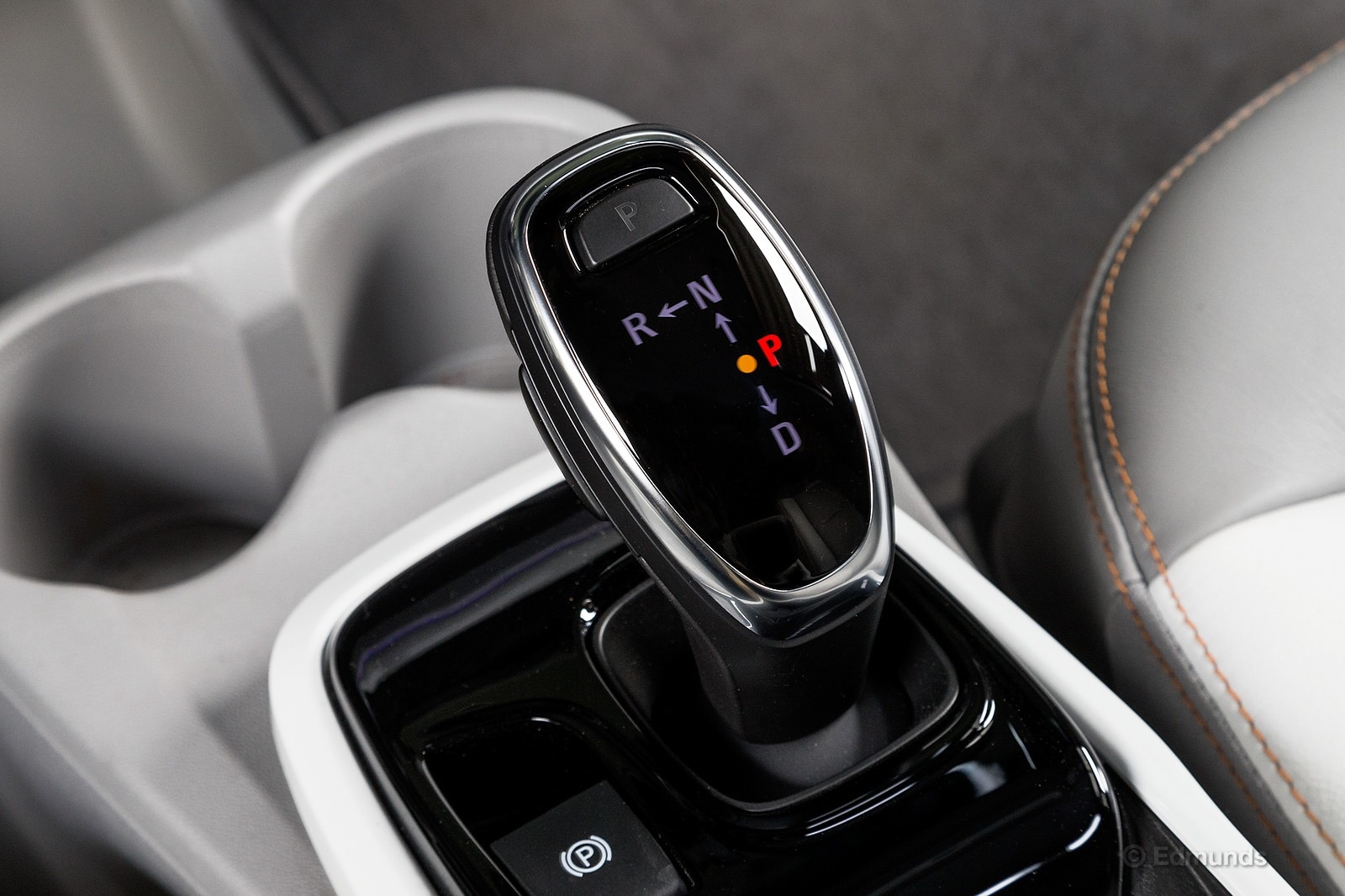
MPG
"There were no loopholes, no deserted roads on the 322-mile charge. That was real life. That was commuting." — Dan Edmunds, director of vehicle testing
"Once again, I unintentionally pushed our Bolt to its limits. After a couple runs home and back, the range fell to almost nothing. It was hard to tell exactly how low since the range display switches to read 'low' instead of showing an estimate of how many miles of juice remain. It also went into reduced power mode in order to further conserve energy. By the time I got that warning I was close to home, so I was able to nurse it around town to drain it down as much as I could.
"When I finally parked it at my home charging station, it had gone 322 miles on a single charge. Not bad for a car rated at 238 miles per charge. Even more impressive was the fact that I didn't really try very hard to get that many miles out of it. I spent plenty of time in traffic, which helped, but there were a few sections that I was moving along at 65-70 mph as well. No matter how you look at it, 322 miles out of a Bolt is pretty impressive." — Ed Hellwig, senior editor
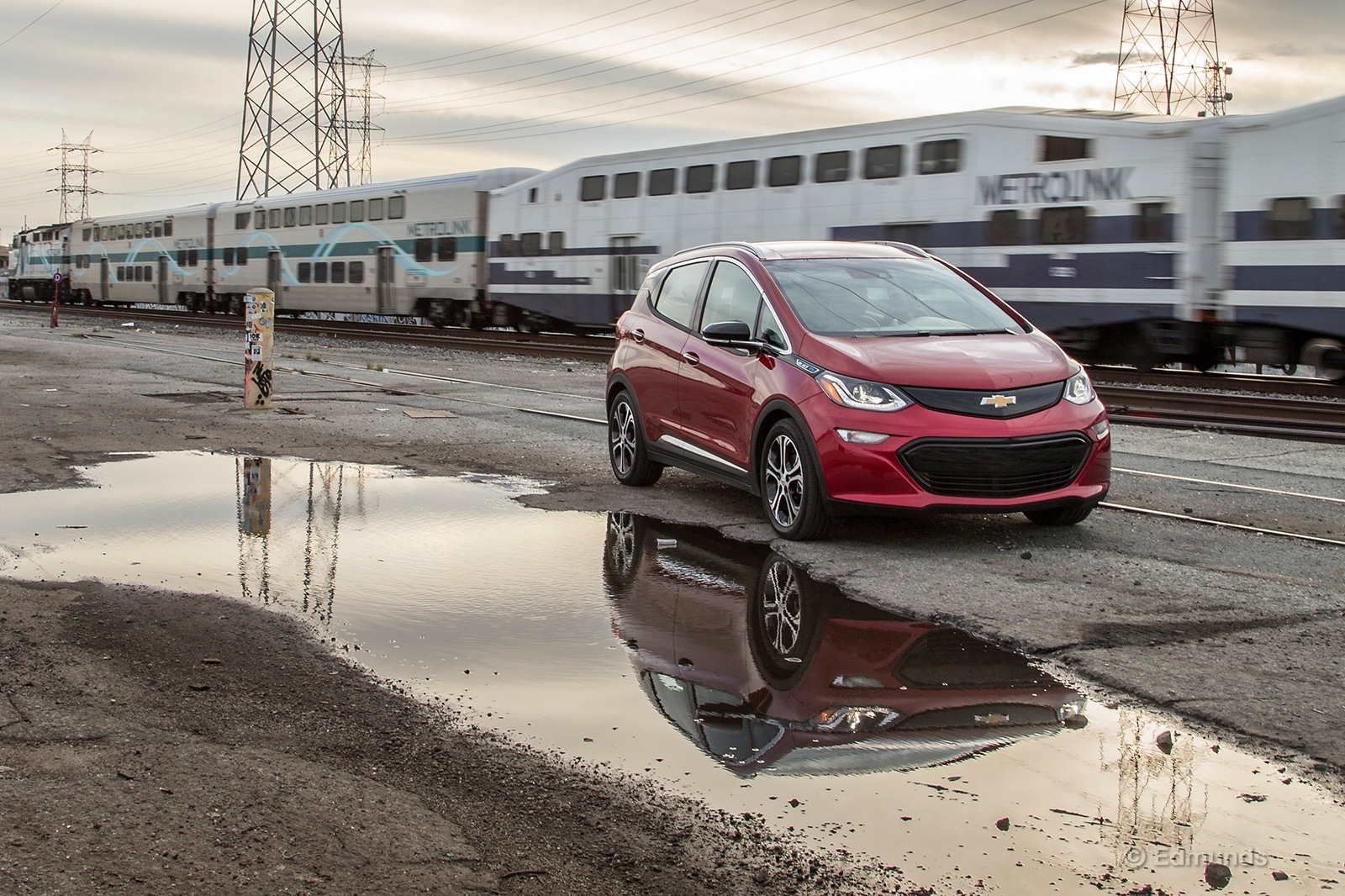
Monthly Update for November 2017
Where Did We Drive It?
We drove our 2017 Chevrolet Bolt all over town last month. The vast majority of time spent in motion was between 15 mph and 50 mph, both on city streets and in rush-hour freeway traffic. It is right in that window that the Bolt seems happiest, we've learned. Drive it long enough under these conditions (maybe even click down to L mode for max brake regeneration) and there is potential for record-breaking battery range. November was our best month yet.
What Kind of Fuel Economy Did It Get?
We added just over 1,000 miles to the Bolt since our last update, which is close to an average mileage accumulation for a four-week stretch. But the rest of the month was far from average. Not only did we break through the 300-mile range barrier this month, but we did it twice. Senior Editor Ed Hellwig set the mark at 322 miles early in the month, and Director of Vehicle Testing Dan Edmunds beat it out with a 334-mile effort. Both tallies were well above the EPA range estimate of 238 miles. Overall, we are keeping just ahead of EPA estimates in most significant categories.
EPA projected range: 238 miles
Average lifetime projected range: 238.8
Best range: 334.3 miles
EPA kWh/100 miles (combined) rating: 28
Average lifetime kWh/100 miles: 26.1
Best kWh/100 miles: 18.3
EPA projected mpge: 119
Average lifetime consumption (mpge): 129.1
Current odometer: 11,863 miles
Maintenance and Upkeep
None.
Logbook Highlights
MPG
"It turns out that electric vehicles love freeway traffic, especially the slow-and-go type that never stops and never opens up to free-flowing. That's pretty much every day for me, and it's 46 miles each way. I typically never drop below 15 mph and never get over 50 mph. It also helps to look ahead and stay off the bumper of the car in front of you so the speed changes are smooth and the braking is gradual. That's where the Bolt's L position with controllable lift-throttle braking really comes in handy. Despite the heavy traffic, I can drive the entire distance and never once touch the brake pedal." — Dan Edmunds, director of vehicle testing
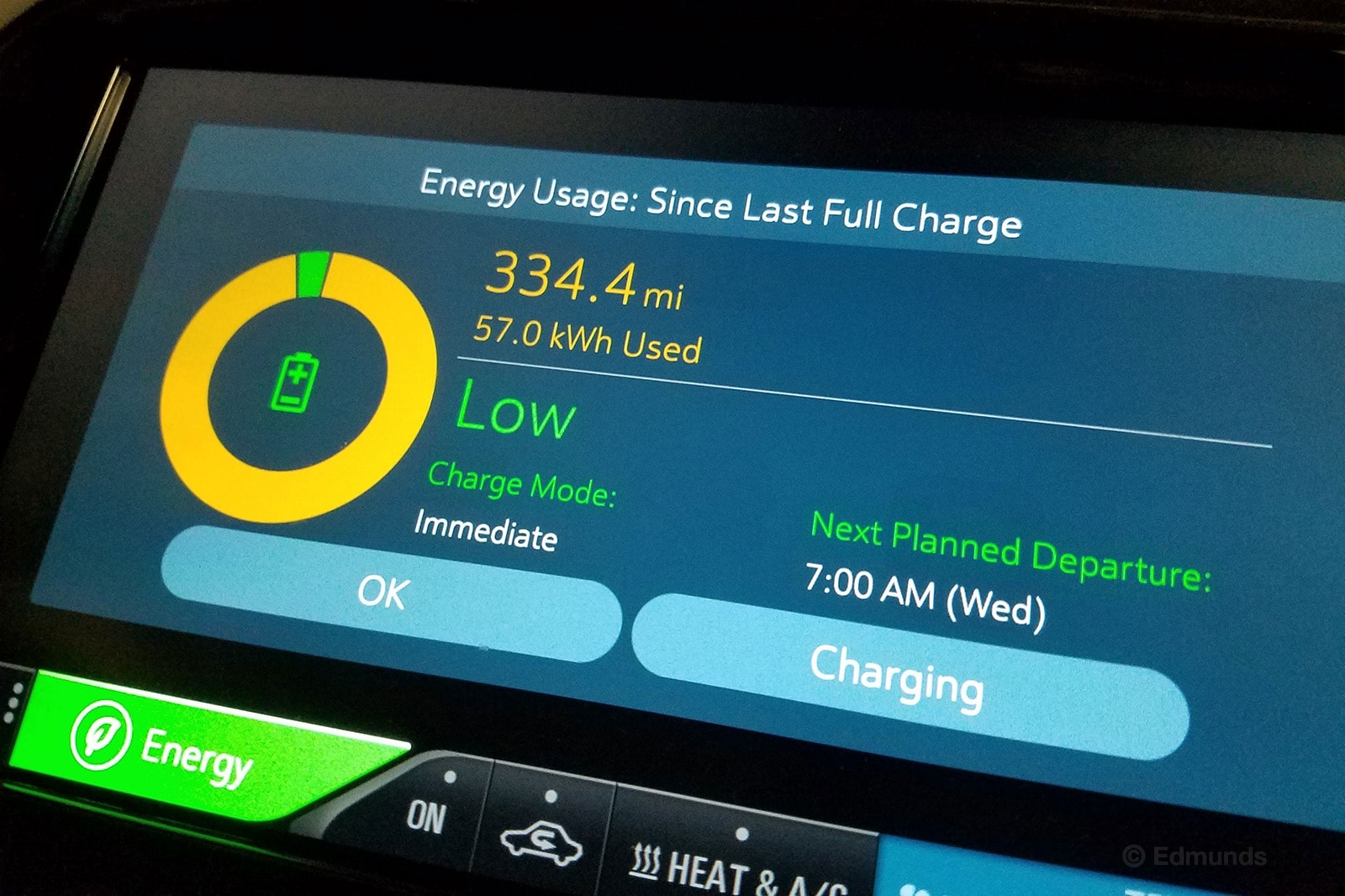
"Once again, I unintentionally pushed our Bolt to its limits. After a couple runs home and back, the range fell to almost nothing. It was hard to tell exactly how low since the range display switches to read 'Low' instead of showing an estimate of how many miles of juice remain. It also went into Reduced Power mode in order to further conserve energy. By the time I got that warning, I was close to home, so I was able to nurse it around town to drain it down as much as I could. When I finally parked it at my home charging station, it had gone 322 miles on a single charge. Not bad for a car rated at 238 miles per charge. Even more impressive was the fact that I didn't really try very hard to get that many miles out of it. I spent plenty of time in traffic, which helped, but there were a few sections where I was moving along at 65-70 mph as well. No matter how you look at it, 322 miles out of a Bolt is pretty impressive." — Ed Hellwig, senior editor
Comfort
"These seats, though. Last night I came home and my wife saw an imprint of the stitching on my back. These seats are simply too small for my 6-foot-2-inch frame. There's plenty of headroom, and the telescoping wheel is fantastic, but the seats come across as tiny. I think they're trying to save weight to boost range on the window sticker, but come on." — Dan Edmunds
Performance
"I still love the one-pedal driving in this thing, and prefer to always have it in L for max regen, using the left paddle to slow even more when needed. Over the last couple days there were a few instances when max regen didn't deliver strong enough decel, and I was forced to break my no-brake-pedal streak. My initial thought was this might be due to prevent overcharging the battery, but then I immediately remember this car has more than enough battery capacity to spare. So now I'm not sure what gives." — Jonathan Elfalan, road test manager
"After thinking about the one-pedal driving, I was curious to know what the levels of regen were for each of the Bolt's drive modes. Here's what I found: regular drive mode, 17kW; L mode, 59 kW; and L mode plus brake paddle, 70 kW. Would be interesting to map the deceleration rate in each mode at various speeds." — Jonathan Elfalan
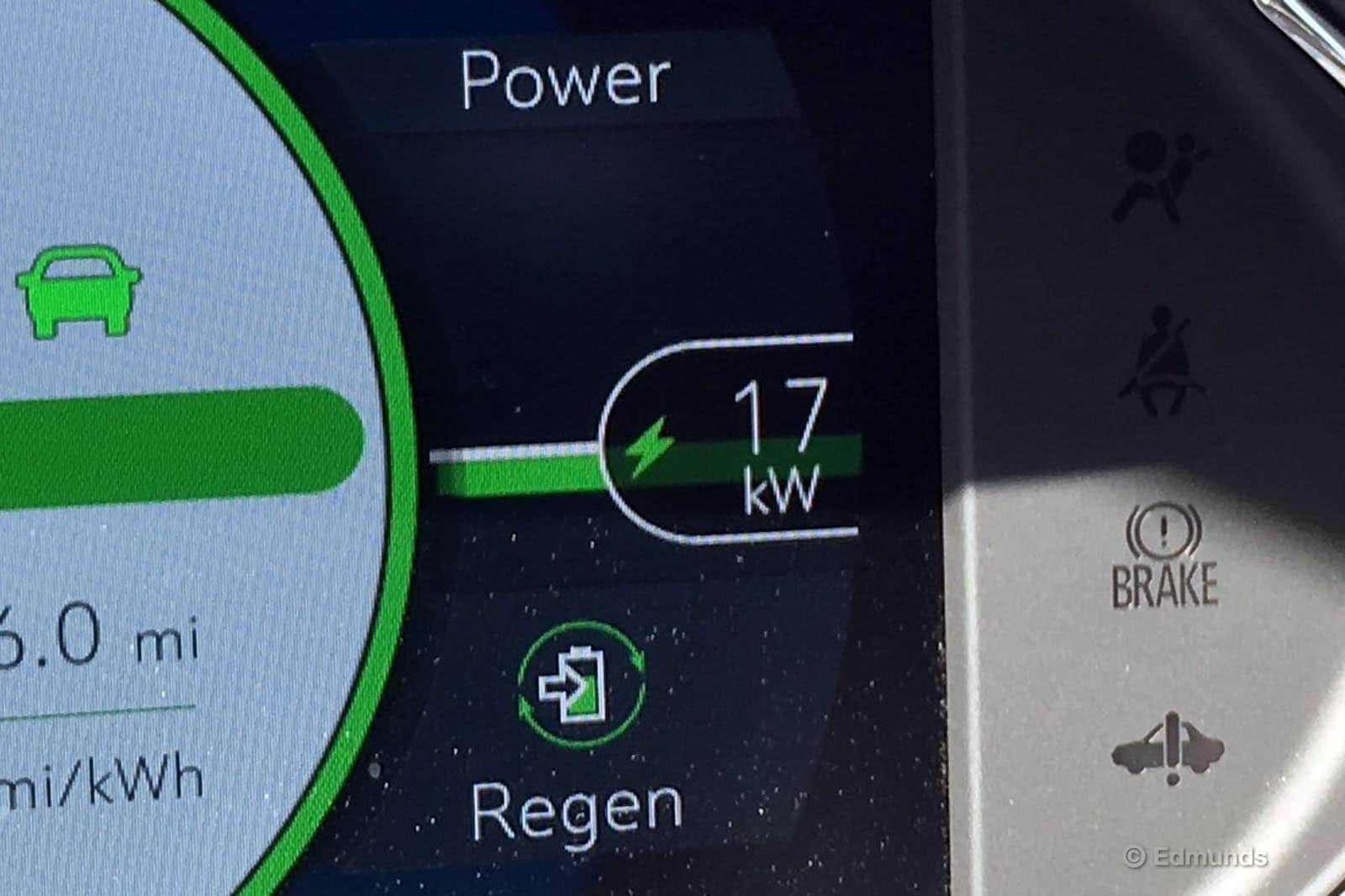
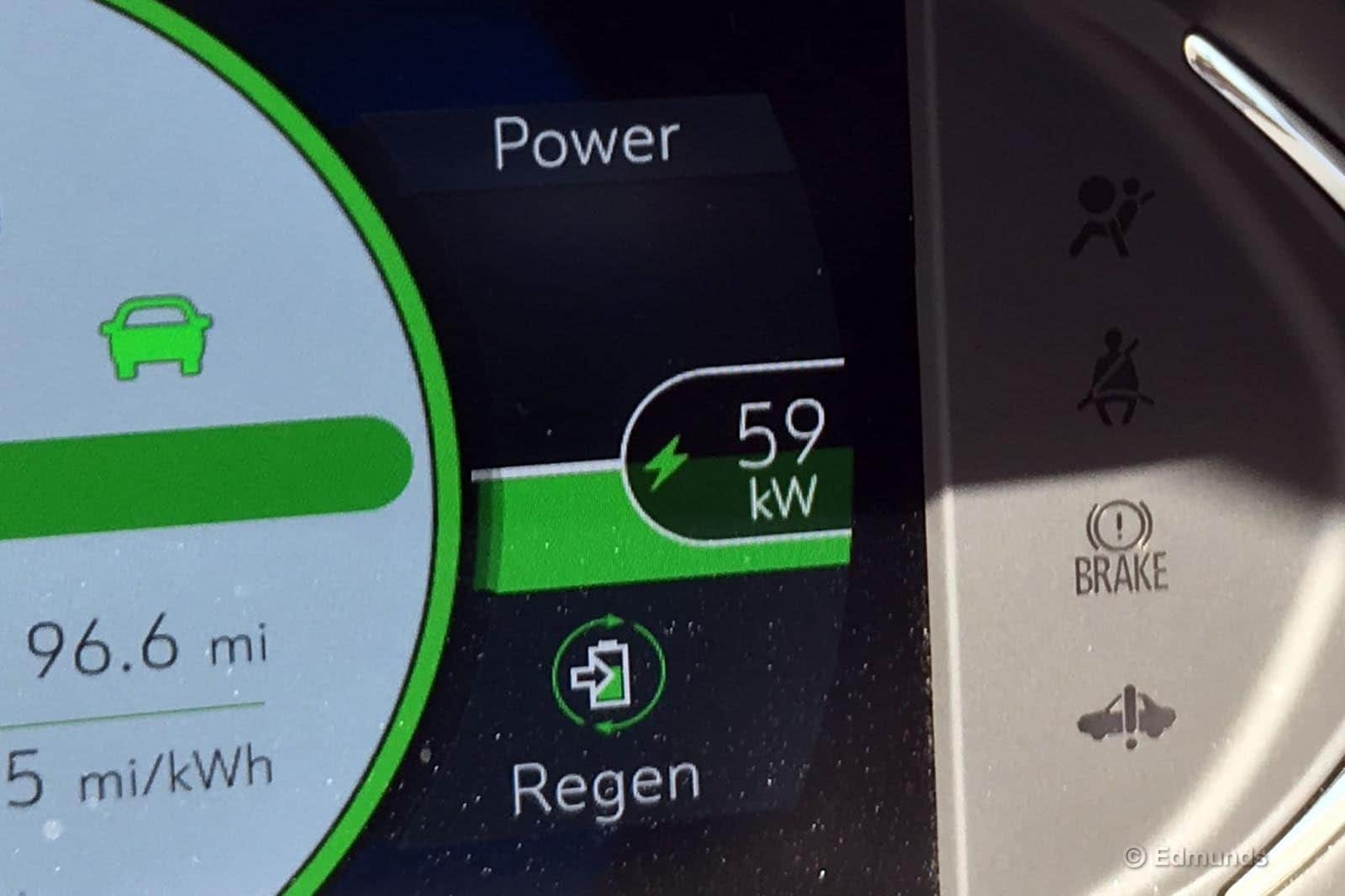


Monthly Update for December 2017
Where Did We Drive It?
The end of November through December is typically sporadic for our long-term fleet. Depending on who gets what cars, some will plow through 2,000 miles on cross-country visits. Others, not so much. Our trusty 2017 Chevrolet Bolt fell into the latter category because the few Edmundites (including me) who got the keys to our EV hatchback opted for staycations with family.
In this case, that meant about 540 miles of nothing but stop-and-go city driving, which, incidentally, this little electric car enjoys. While it's beneficial that more drivers are experiencing the Bolt, the true win is that more drivers are able to properly operate the controls and understand what the comprehensive dash is indicating.
What Kind of Fuel Economy Did It Get?
Thanks to the stop-and-go traffic of the holiday season combined with two longer (100-mile-plus) stints, the Bolt averaged 27.1 kilowatts per 100 miles. This is just a tick worse than average, but due to the relatively low number of miles accrued, the needle didn't move in either direction.
EPA projected range: 238 miles
Average lifetime projected range: 239.3
Best range: 334.3 miles
EPA kWh/100 miles (combined) rating: 28
Average lifetime kWh/100 miles: 26.1
Best kWh/100 miles: 18.3
EPA projected mpge: 119
Average lifetime consumption (mpge): 129.2
Current odometer: 12,396 miles
Maintenance and Upkeep
None.
Logbook Highlights
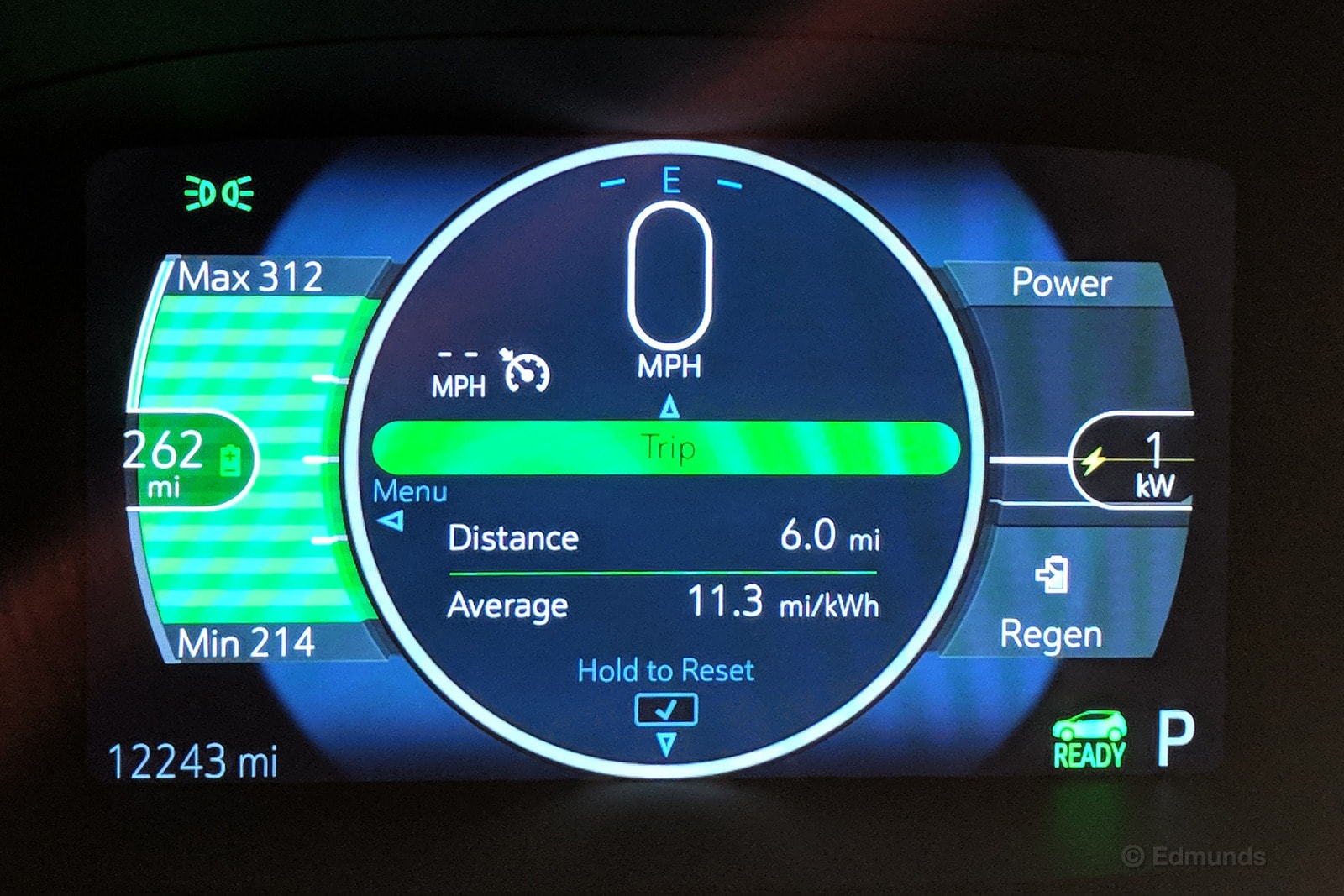
MPG
"Fun fact: The parking structure behind Paseo Colorado in Pasadena has free EV charging. However, it seems almost a shame to plug in the Bolt since I still have more than 100 miles left. I figure I'll plug it in, watch the new Star Wars flick, and by the time I get out it should be close to fully charged. After the movie, the Bolt's distance-to-empty is at 300 miles! YES!!!" — Rex Tokeshi-Torres, vehicle testing technician
"With the Bolt taken off the charger early in order to charge the short-term Leaf, I would normally panic. Being a Fiat 500e owner, my anxiety can get pretty high if I commute to work and don't get a chance to charge before heading home. I've heard many of my compatriots praise the Bolt's range, however, so I eased my nerves by leaning on their words of wisdom. Once I got in for the drive home, the Bolt's indicated range was about 170 miles, with a battery charge of around 70 percent.
"'That's quite a bit,' I thought, 'but we'll see what it looks like once I get home.' About 1.5 hours later, I rolled in to my driveway and the indicated range was at just 149. Holy cow! I'm officially on board with this car." — Rex Tokeshi-Torres
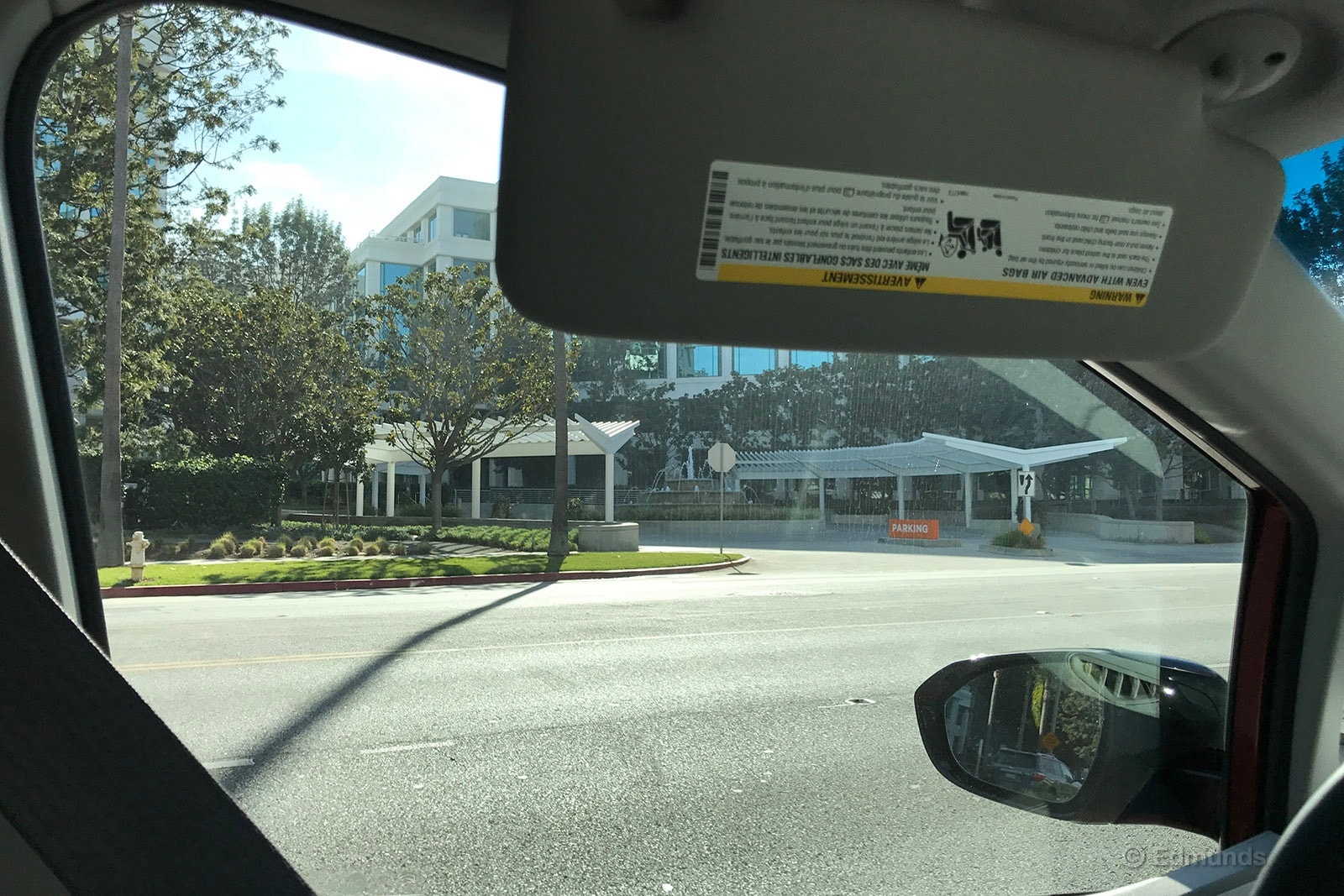
Interior
"Vestigial sun visors, normally the realm of compact roadsters and hypercars, are now finding their way onto more pedestrian machines like this Bolt for some reason. I haven't calculated it, but I think there's only, like, 6 square inches of coverage. When the sun is low, like in winter, it basically does nothing" — Calvin Kim, road test editor
Performance
"While driving around friends and family who had never been in an EV, most of them were surprised to see me drive in L, challenging their habits from internal combustion cars. Do not be afraid to one-pedal drive with the transmission in L. After reading Elfalan's post, I wanted to drive as much as possible without the friction brakes. With proper following distance and anticipation, I found it easy to drive this way. And by the end of the long Christmas weekend, I could come to a complete stop right before the intersection line. If anything, I found myself beginning to regen too early and having to negate some of the deceleration by adding pressure to the accelerator to compensate." — Calvin Kim
Technology
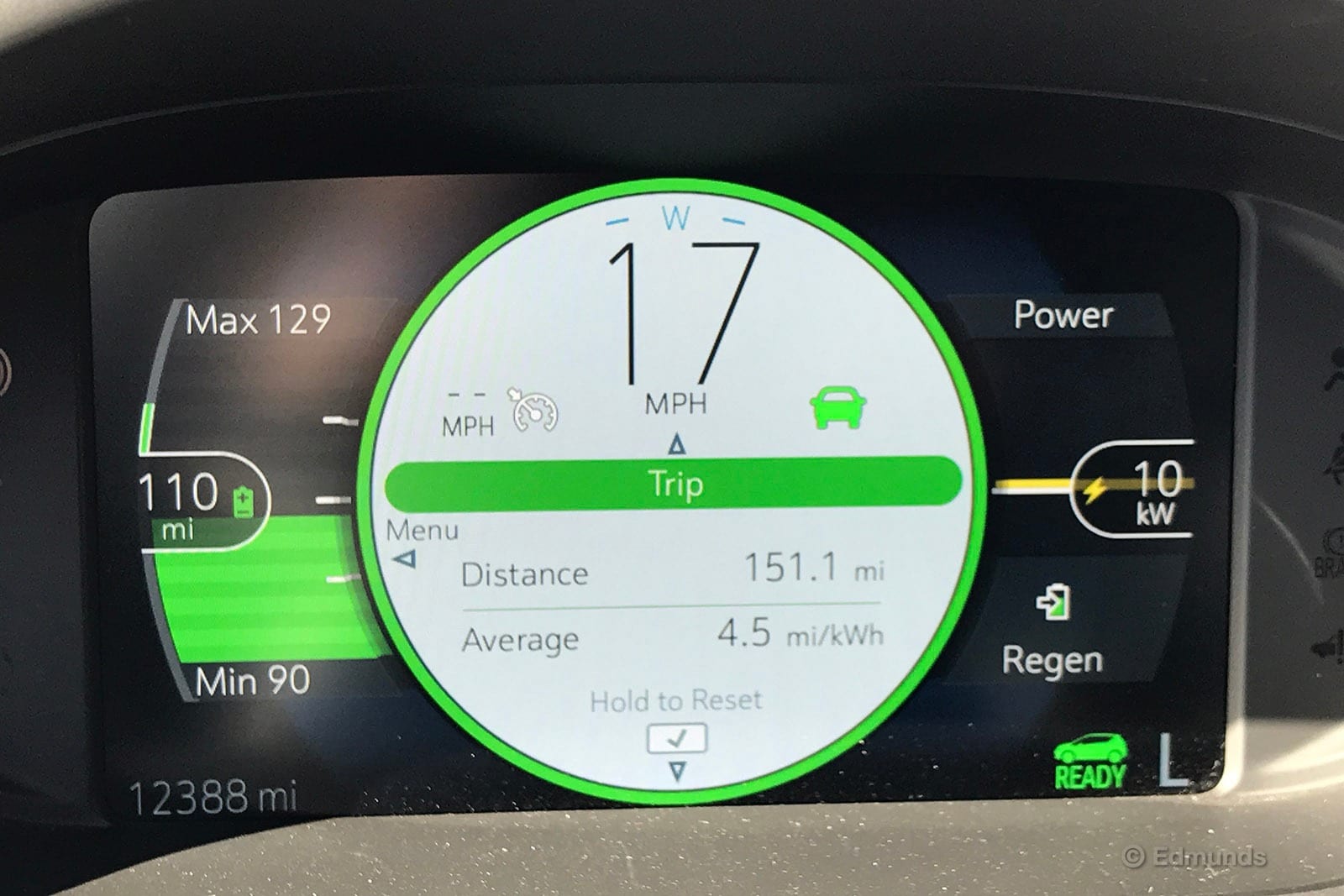
"One of my favorite Bolt points is in the instrumentation. While I'm not a fan of the color scheme, the configurable display can show all the information you could ever want. The max and min distances give the driver assurance on their effective range, while the thin bar graph that parallels the battery charge meter alerts drivers to which of those distances is more relevant based on driver behavior. Aside from the color scheme, the warning icons related to pedestrian alert, as well as a following distance minder, are hard to see among the other graphics. Clustering those warnings together rather than separating might've helped with that." — Calvin Kim
"Is the digitized rear mirror view a gimmick? Well, it depends. One of the benefits of this system is the fact that it's always perfectly aligned. No matter who's driving it, the view from the rearview display is the same. It also has a wider field of view than a regular mirror. It's so wide, in fact, that if you have your side mirrors adjusted correctly, you'll get some overlap on cars and off-street landmarks. Combined with blind-spot detection and the additional visibility afforded by door-mounted side mirrors, your level of situational awareness goes up to nearly 360 degrees around the Bolt.
"On the other hand, you lose a lot of resolution when it's dark or the sun is directly behind the car. In that sense, I'm glad Chevrolet put this combo system in place. If you don't like the view, you can flip it back to standard mirror mode." — Calvin Kim
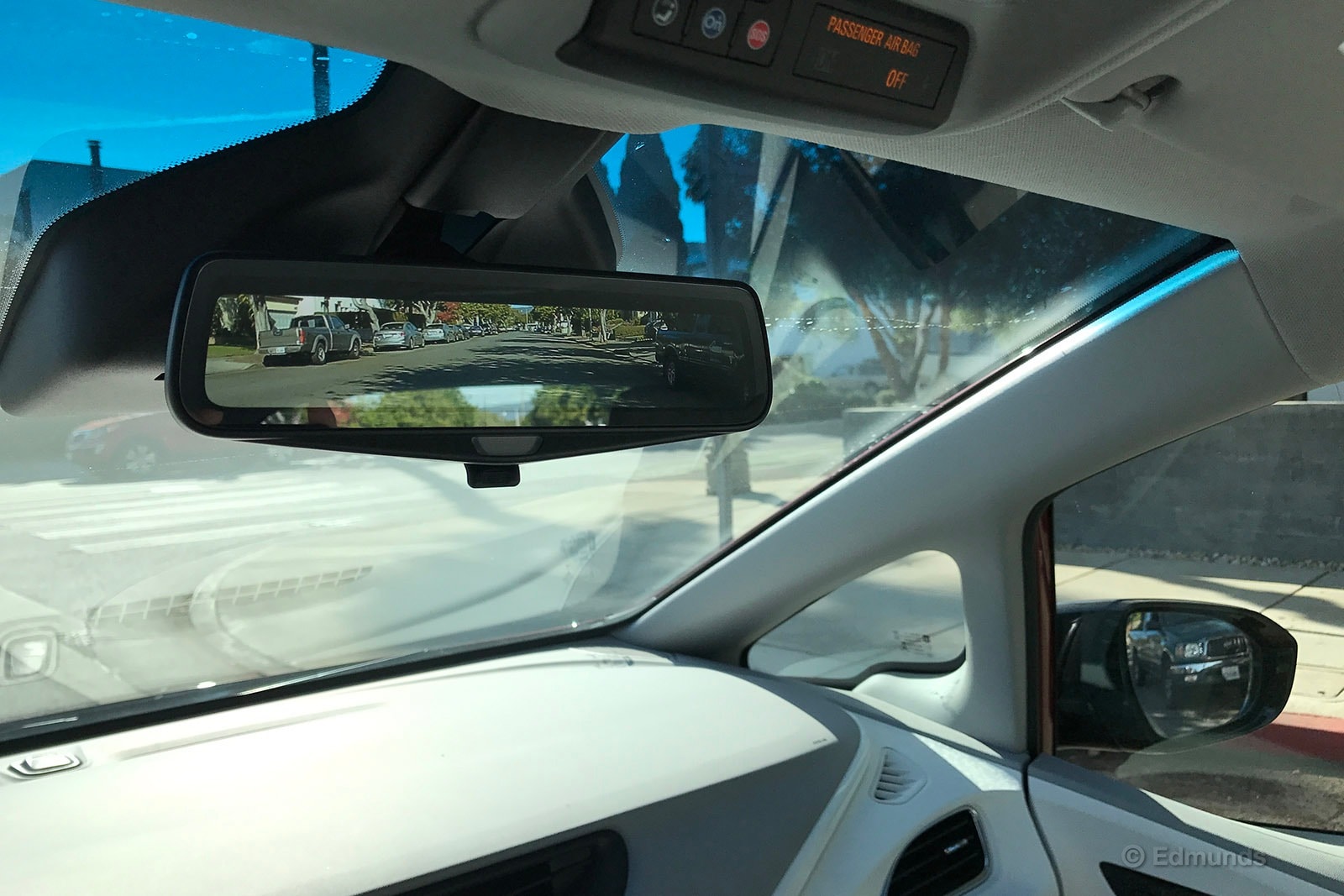
Monthly Update for January 2018
Where Did We Drive It?
In contrast to a quiet December, the first month of 2018 brought a lot of action to our long-term 2017 Chevrolet Bolt. With all of our drivers back in the office after some much-needed R&R, our Bolt stayed out of the garage and on the roads — a lot. In fact, nearly all of the 1,393 miles accrued during January were on nothing but Los Angeles' finest traffic-clogged roads.
Thanks to its HOV sticker, the Bolt was an easy choice for drivers needing to get across town in less than two hours. And although it's a compact, the fold-down seats proved invaluable when we needed to haul some gear around or go on a long shopping run.
What Kind of Fuel Economy Did It Get?
Typical of electric vehicles, the Bolt loves stop-and-go city driving. And especially with the Bolt's flexible regenerative braking system, most drivers have adapted to using the L setting on the gear selector for smooth one-pedal driving.
EPA projected range: 238 miles
Average lifetime projected range: 241.1
Best range: 334.3 miles
EPA kWh/100 miles (combined) rating: 28
Average lifetime kWh/100 miles: 26.2
Best kWh/100 miles: 18.3
EPA projected mpge: 119
Average lifetime consumption (mpge): 128.7
Current odometer: 13,789 miles
Maintenance and Upkeep
None.
Logbook Highlights
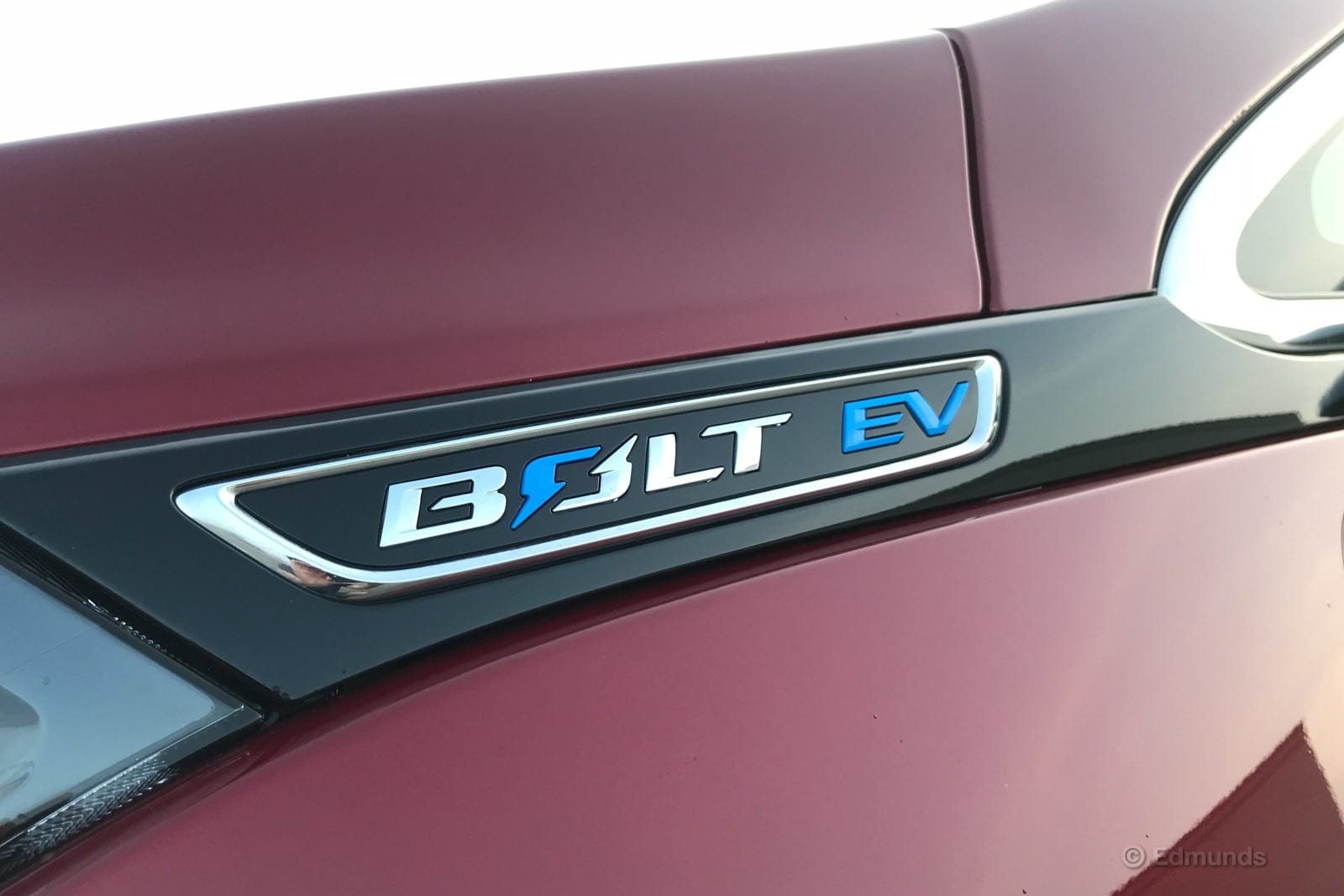
Performance
"For an eco-minded vehicle, the Bolt is pretty nice to drive. It's quick when you need it to be and is stable when going around turns. It's better at performance than both our long-term Chevy Volt and long-term Toyota Prius. It kind of looks like a goofy pod car, but it doesn't drive like one.
"I appreciate that Chevy gives drivers three different levels of regenerative braking. There's the normal, minimal amount in Drive; a more substantial amount coming from the L drive mode; and the highest level that is applied when the driver pushes the button that's on the backside of the steering wheel on the left. Our Bolt's L drive mode provides just about the perfect amount of regen for me. I'm usually only using the brake pedal when I've come to a complete stop." — Brent Romans, senior automotive editor
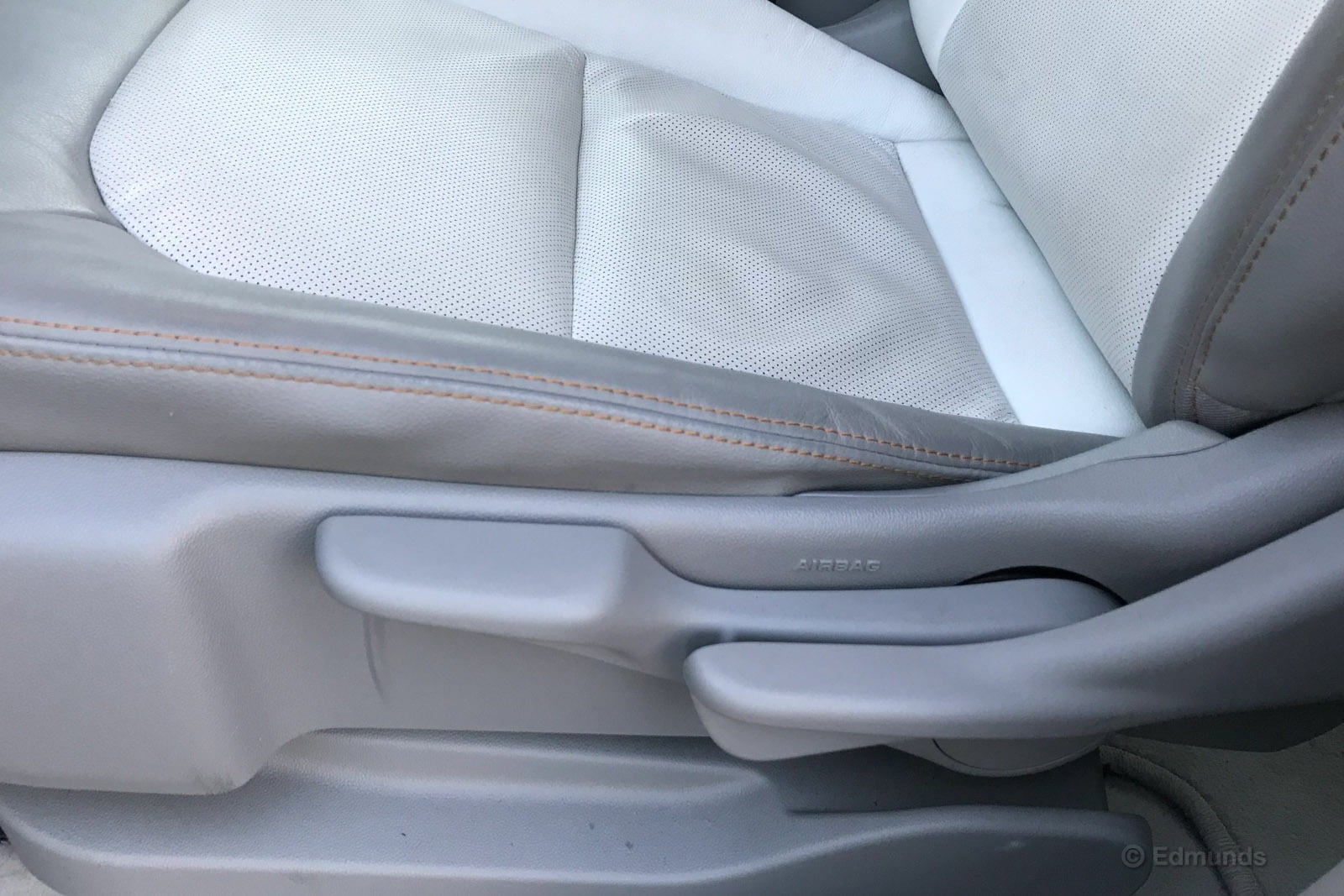
Comfort
"The driver's seat cushion is oddly designed. Right at the base where the seatback is, the seat frame's plastic base sweeps up relative to the cushioning. The result is that when I'm getting out I can feel that plastic base under my thighs because there's not enough padding. It's uncomfortable." — Brent Romans
"Last month, my fiancée and I decided to go to Vegas to take a break from work and wedding planning. I initially considered taking the Bolt since its roughly 240 miles of range should have been enough to take me from my doorstep to the Aria. Plus there's a DC fast-charging station in Victorville, California, where I could top off if range dipped more quickly than expected. Out of consideration for her comfort, I opted to take the Genesis G90 instead, which then turned into a short-term Mercedes-Benz AMG GT-R after she got sick and we had to change our vacation dates. (Sometimes you fail successfully.)
"The AMG GT's seats and ride aren't exactly pillowy, but after driving the Bolt for two days, I felt I made the right choice. The Bolt's seats are some of the most uncomfortable I've ever sat in. There's no lateral support to speak of, and the seatback is terribly narrow. Even worse, the seat bottom has almost no front tilt, so I have to resort to jacking the seat all the way up just so my thighs aren't suspended. I could not have been more eager to jump out of the seat after my 40-mile commute this morning. I shudder to think what a long road trip would be like."
— Cameron Rogers, staff editor
Technology
"Chevy does a great job giving you on-screen information about the Bolt's electric operation. Just about anything you'd want to know — average miles per kWh, charging information, electricity use percentages for vehicle systems, measurements of your driving style — is here. A lot of it seems like it would only appeal to EV geeks but credit to Chevrolet for making it available." — Brent Romans
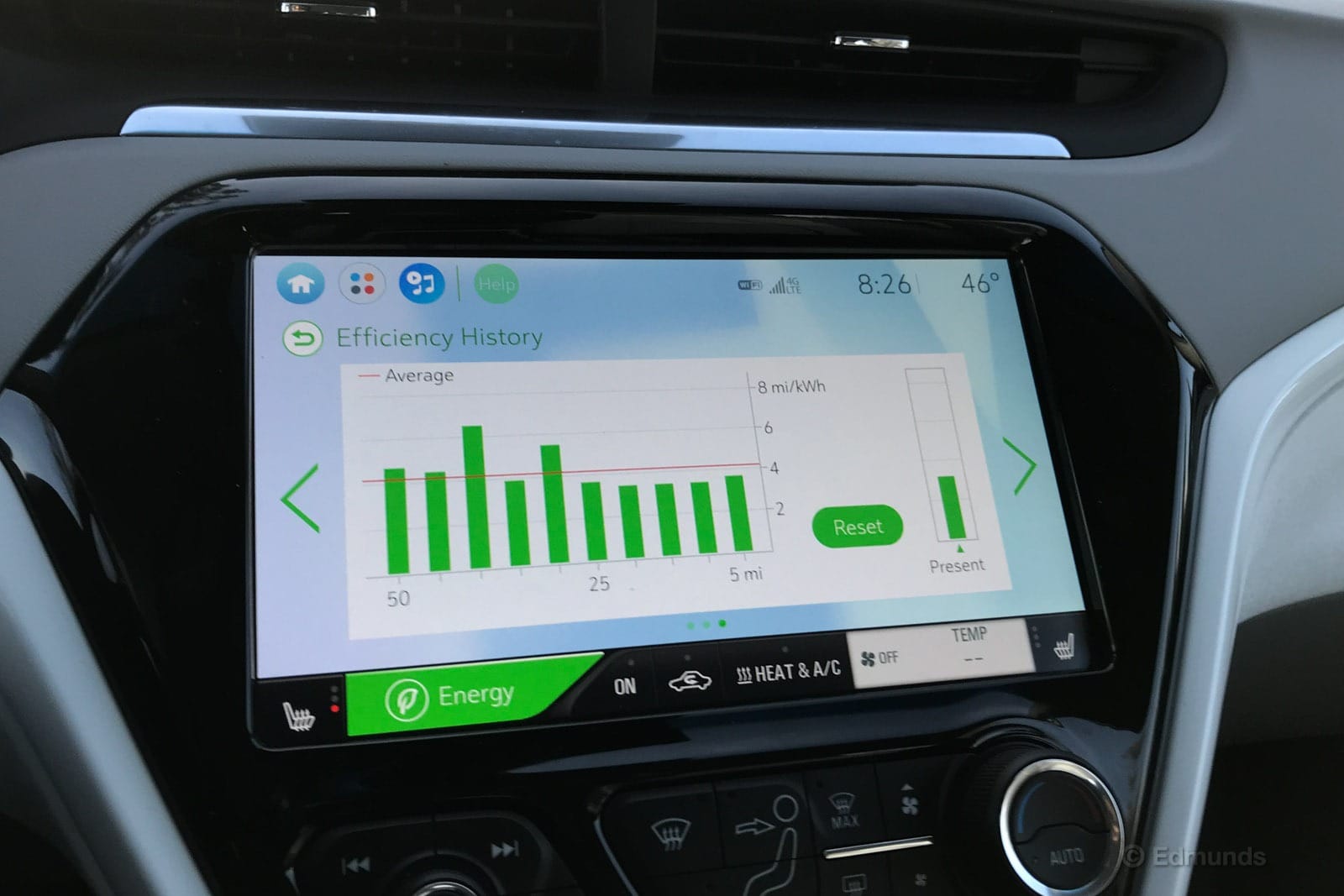
"It's refreshing to find that even in the future-forward Bolt, you're confronted with the past the moment you back out of a parking spot. The rearview camera display is of such low quality, I am simultaneously reminded of disposable cameras and playing NES games on a 10-inch CRT television. Couldn't they have nixed the silly rearview mirror display and upgraded the camera instead?" — Cameron Rogers
Interior
"The Bolt's interior quality is a major letdown. While it's not as bad as what GM was putting out in the dark days of the late '90s and early 2000s, the interior is still plastic-fantastic. Nothing is soft-touch other than the rubbery armrests. One of the plastic panels on our car's dashboard is misaligned and is popping up. The center console bin isn't lined, so anything you put in there rattles around. Plus, our test car's light gray/white color scheme is just the worst. The thin carpeting looks like mouse fur and dirties easily, and the white panel pieces reflect a lot of sunlight." — Brent Romans
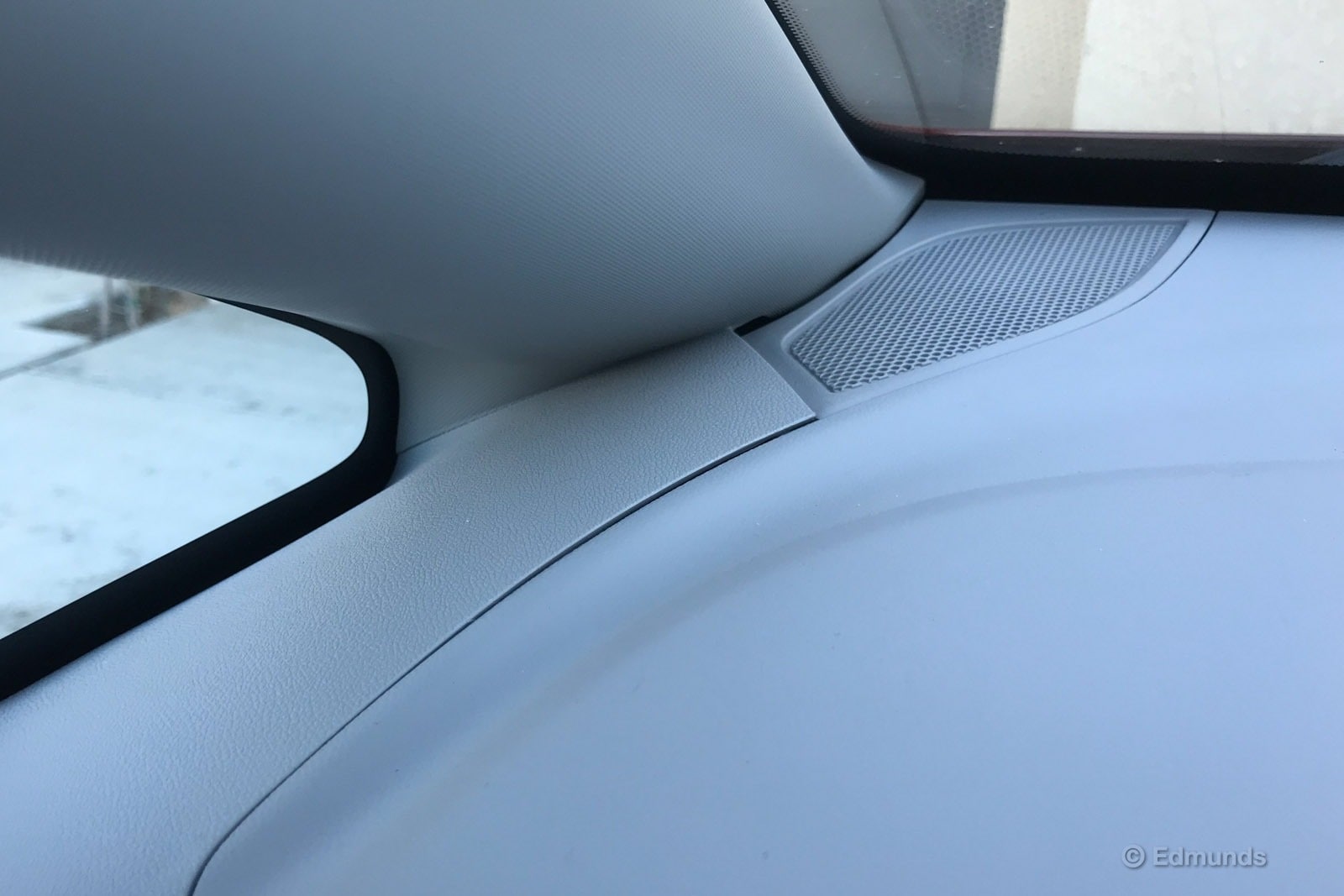
Monthly Update for February 2018
Where Did We Drive It?
Our 2017 Chevrolet Bolt EV accumulated only 774 fresh miles this month, which brings it up to 14,563 miles in all. Sure, February is a short month, but more nefarious forces were at work. Our trusty Bolt let us down and spent a full week at a local dealer going nowhere while it awaited a brand-new replacement battery pack.
Full details will come in a stand-alone writeup that will appear soon, including how we learned this was a known issue supposedly confined to early Bolts that had long since been discovered and resolved in production.
But this knowledge did not impress Kurt, the person who was driving when the Bolt abruptly toggled from 60 miles remaining to reduced power mode while in the leftmost HOV lane on a crowded freeway. As power ebbed away, he somehow steered it across lanes and onto the shoulder of a long exit ramp. Still, something like this leaves a bad taste in your mouth as you sit waiting for a tow truck for 90 minutes for no understandable reason.
Unlike January, there were no long trips out of town. Kurt's pre-problem drive was typical of this month's miles. It was all local go-to-work driving.
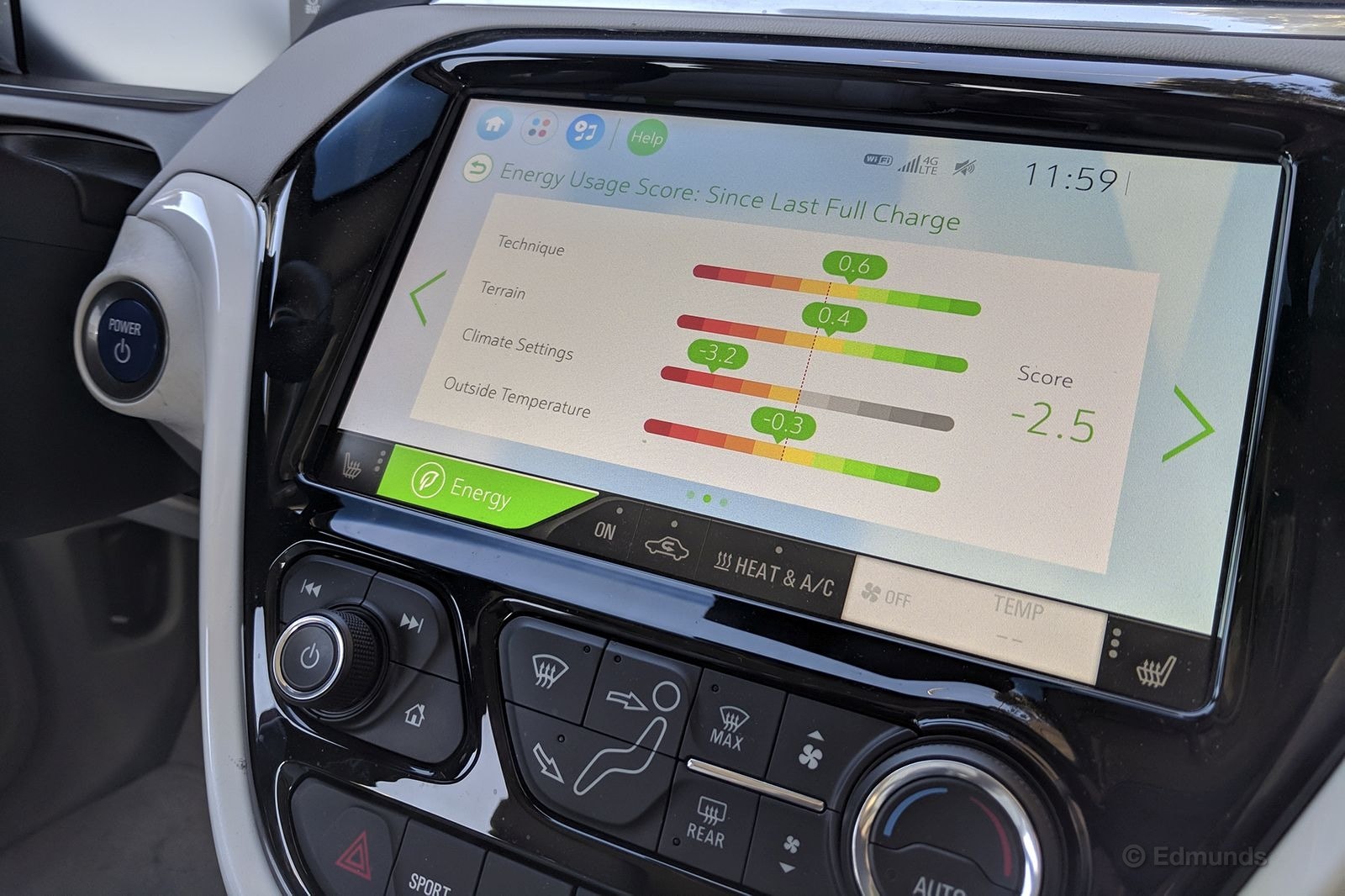
What Kind of Fuel Economy Did It Get?
Those 744 miles were distributed across five charges, but only four were usable. The miles Kurt drove before getting stranded were lost because that failed battery pack was removed without being refilled, a step we must take to calculate consumption.
What's left is 584 miles of fresh data — hardly enough to move the needle much. That said, 262 of the commuting miles that followed the battery swap came in at a thrifty 25.4 kWh/100-mile consumption level, which beats the car's EPA rating of 28 kWh/100 by a healthy margin. We are back in business, and the Bolt's lifetime average remains impressively ahead of its official EPA rating.
Average lifetime consumption: 27 kWh/100 miles (125.1 mpge)
EPA consumption rating: 28 kWh/100 miles combined (119 mpge)
Best fill: 18.3 kWh/100 miles (184.3 mpge)
Current odometer: 14,563 miles
Data miles analyzed: 10,106 miles
With all that was going on, no one had the opportunity to make a run at any of our existing range and distance records. Those numbers are unchanged from last month.
Maximum single-charge distance driven: 334.3 miles
EPA range rating: 238 miles
Average distance driven: 104.6 miles
Maximum projected range: 351.5 miles
Average projected range: 251.5 miles
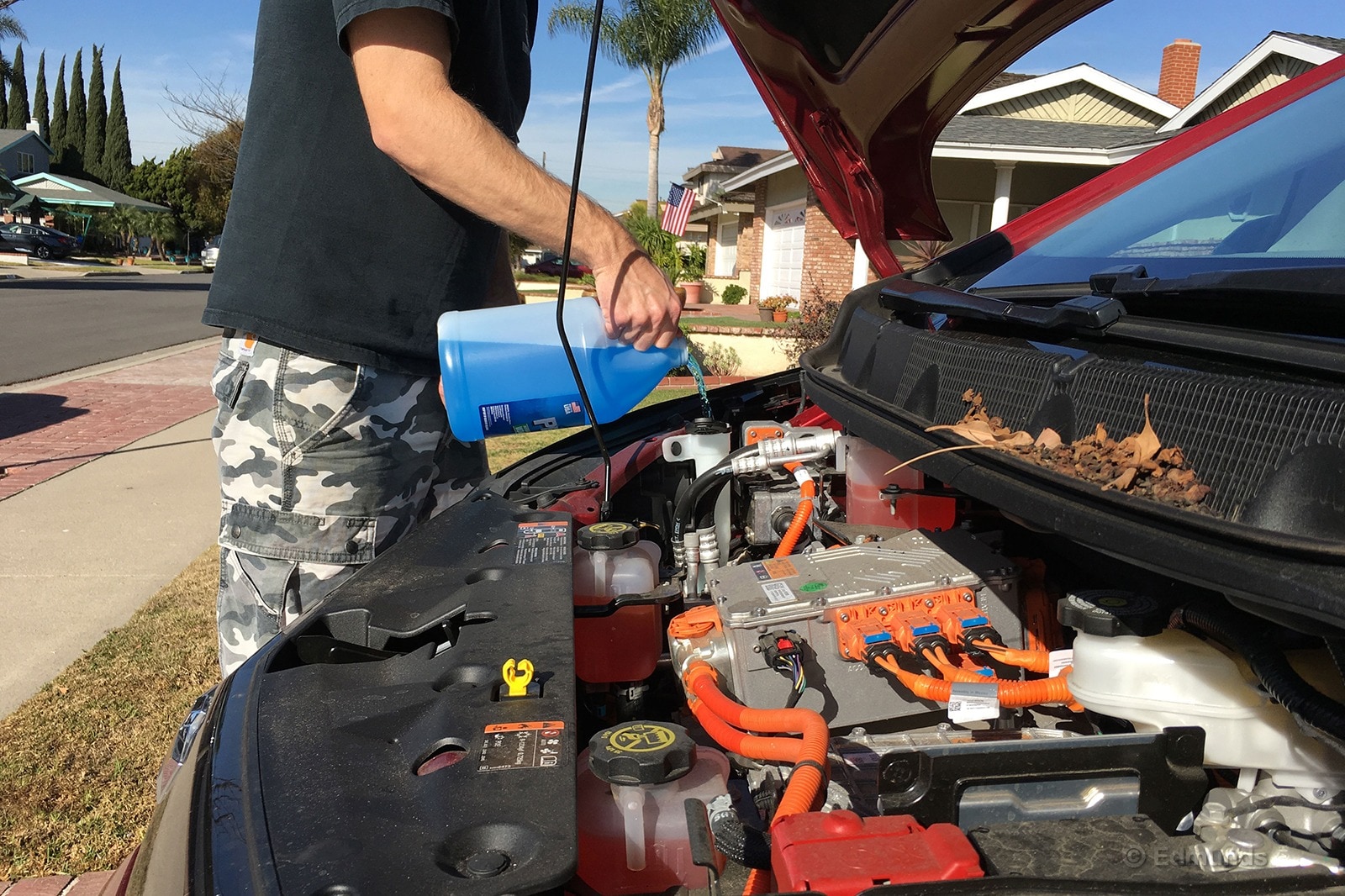
Maintenance and Upkeep
Normally, EV maintenance amounts to filling the windshield washer bottle when it gets low, slapping on new windshield wipers once in a while, minding the tire pressure, and rotating the tires every so often. And we did, in fact, have to add washer fluid this month.
But, as you know, something else went terribly wrong. The car was towed in to Nissani Bros. Chevrolet on Thursday, February 8. After some diagnosis, a new battery pack was ordered. But the Bolt is a new model, and something like this isn't supposed to fail this soon. Since this part isn't locally stocked, it had to be trucked in over a long distance. The projected arrival time was Thursday, February 15, with the repaired car available for pickup the next day on Friday, February 16, after a time allowance for charging.
But then something changed. Maybe GM got involved and sped up the shipment. Maybe the trucker drove through the weekend. We don't quite know. All we know is the battery arrived well ahead of schedule on Tuesday, February 13, and was installed that same afternoon. We were called the next morning with word that it was ready to pick up.
Cost to us: $0. This was an obvious warranty job. The dealer also rotated the tires and checked the tire pressures.

Logbook Highlights
Maintenance
"The Bolt ran out of wiper fluid so I swung by the gas station to buy a jug. The guy tried to charge me $15 for a gallon. I thought it was a joke. When he repeated himself I laughed, told him that was crazy and said no thanks. The gas station across the street sold me the same jug for $3. Still pricey by some standards but much more in line with typical convenience store prices. The Bolt drank it all." — Mike Schmidt, senior manager, vehicle testing operations
MPG
"$#!*" — Kurt Niebuhr, photo editor
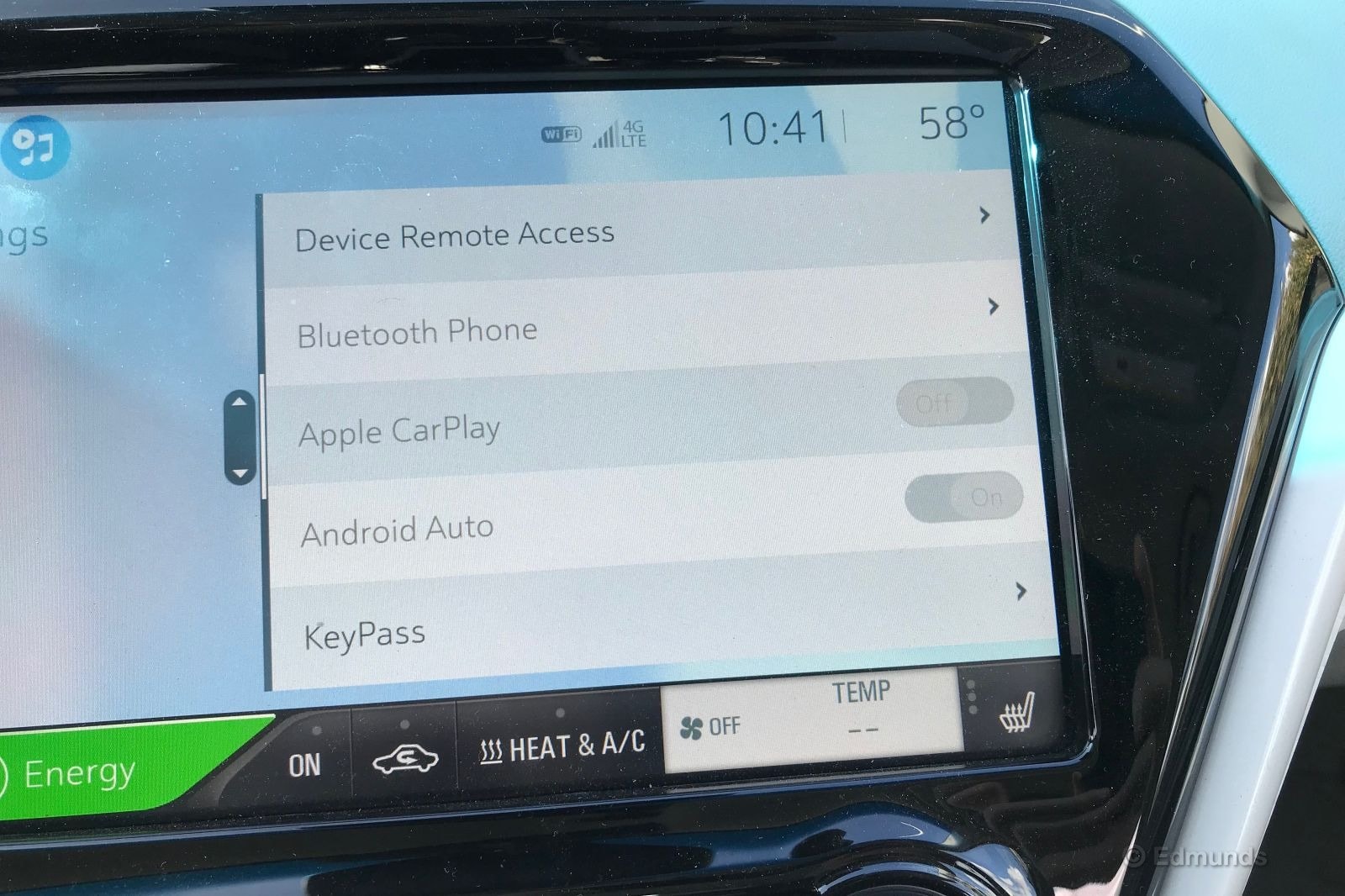
Technology-Audio
"Unlike other infotainment systems (like Ford's Sync, for example), our Bolt's infotainment system can't automatically determine what kind of phone you're hooking up to it. It's not a problem for single-phone users; they can set it and forget it. Multi-driver households that use both Android and Apple products (or, in my case, a single driver with both type of phones) should be aware that if your smartphone doesn't automatically sync up, a visit to the Settings menu may be in order. Also, while I prefer Android Auto for its voice recognition and Google Maps, the fact that the screen doesn't scale properly causes me some degree of consternation." — Calvin Kim, road test editor

Cargo Space
"If I pushed the front passenger seat most of the way forward, lowered the back seat and bottomed out the adjustable cargo floor, I could fit a full-size bike inside without needing to remove anything. Then I could easily plug in at my nearest charging station, get on the bike and ride the 2 miles back home." — Mike Schmidt
Double Stranding Leads to Replacement Battery, Software Change
Note: As of April 5, 2018, GM will begin contacting owners of 2017 Chevrolet Bolt EVs and asking them to bring in their cars for a software update. We don't know if this grew out of the account detailed below, but you'll want to read the whole thing if you're a Bolt EV owner.
It happened the first time on January 11 while editor Brent Romans was driving our 2017 Chevrolet Bolt EV to his home base some 235 miles away on the far side of Fresno, California. At the approximate halfway point in Bakersfield, he'd stopped briefly for a quick shot of extra juice at a DC fast charger. He'd unplugged with an indicated 174 miles of range in hand with just 113 miles left to cover. Piece of cake.
Traffic was lighter than it had been in L.A., and the pace of traffic was brisk. But the miles were coming off the range meter faster than Brent was driving them, so he reeled in his pace a bit. With 10 miles left to cover and 30 miles of indicated range remaining, the Bolt suddenly went into reduced power mode.
He tried to limp it home, but 45 mph was all the Bolt would give. A quarter-mile later, it wouldn't even do that, and Brent coasted the Bolt to a halt at the edge of the dark freeway. A passing highway patrol officer came upon the scene and used his cruiser to shield the Bolt from oncoming traffic as they waited for the tow truck.

What had happened? One minute he had 30 miles of range, the next he had none. That's what it seemed like, at least. He gave me a call as he sat waiting for the tow, knowing that I had once driven our Bolt 334 miles on a single charge, eventually plugging in to our dedicated 240-volt charge station with 14 miles remaining.
Did he see either of the two warnings that should have come up before it went into limp mode? They're hard to miss. On my run, the first of them came when the battery gauge dropped to four green bars, which signifies 20 percent remaining. There was a chime and a visual "charge soon" warning that I canceled with a steering wheel button. The next came with two bars showing, now orange instead of green, which corresponds to 10 percent remaining. There was a more insistent warning and chime, but I was still able to dismiss the "charge soon" message and complete the last few miles to the office after noting to myself that it still read "soon" rather than "now."
Brent didn't remember seeing either of these, which seemed odd. We talked about how the range is probably calculated, how the pace before his partial recharge in Bakersfield had been slowed by L.A. traffic, how his subsequent post-charge pace had been considerably more free-flowing. Had the computer's prediction been playing catch-up to this change in driving conditions? It almost certainly was, but did that explain it? And why hadn't he seen any warnings?
We decided on a wait-and-see approach. In hindsight, this was a mistake.
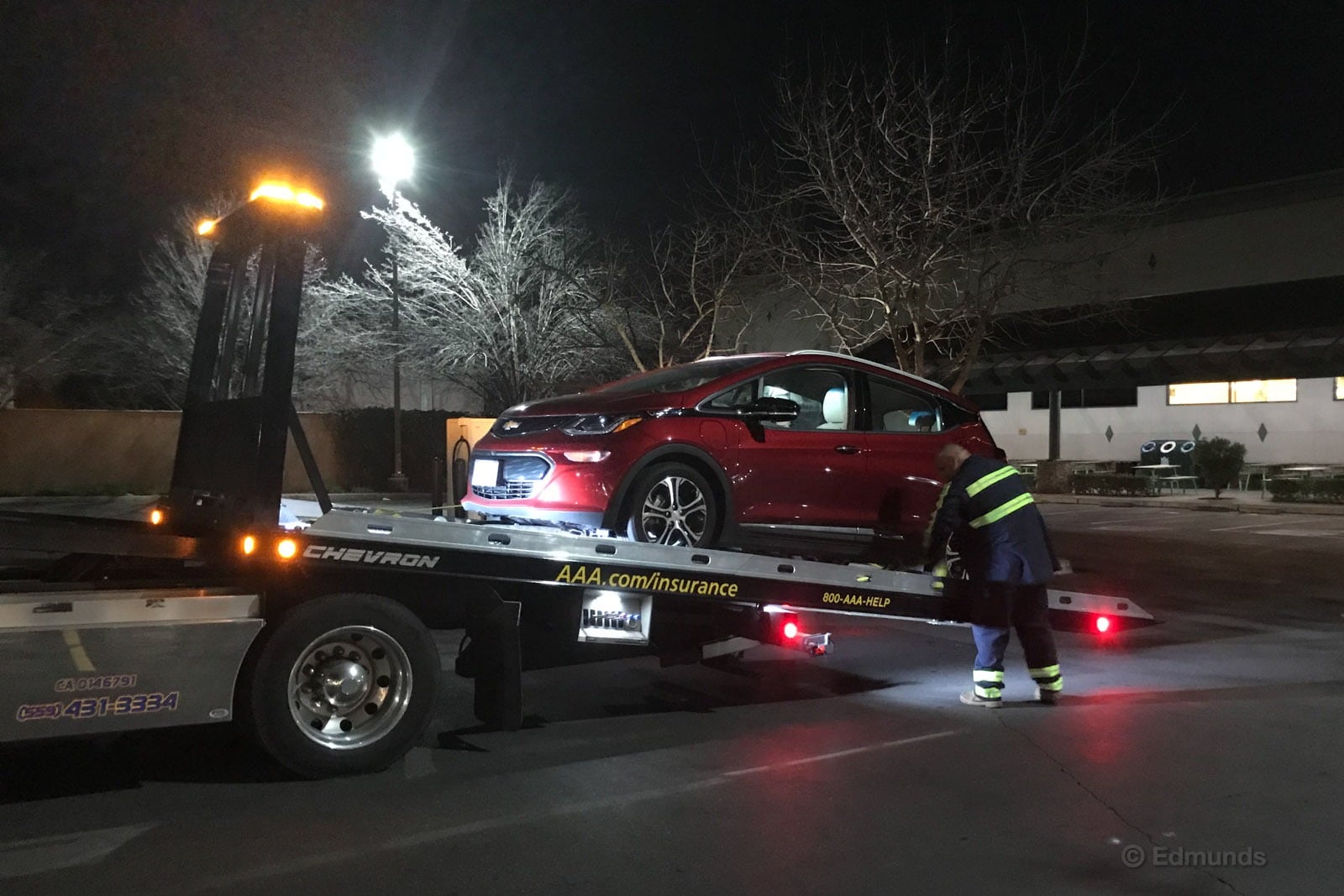
Brent had the Bolt towed to another nearby DC fast charger, where he filled it with more than 100 miles worth of battery charge before finishing the short remaining distance to his home. Over the next two weeks he continued to drive and charge the Bolt as needed, capping things off with another long drive back to the office from Fresno with an intermediate DC fast charge along the way.
Normal operation continued in the hands of others for the next two weeks, and then I received an OnStar diagnostics email dated February 7 that proclaimed everything to be A-OK. All systems got green marks, including the electric drive unit and the lithium-ion battery. Our battery-range calculation theory was looking good.
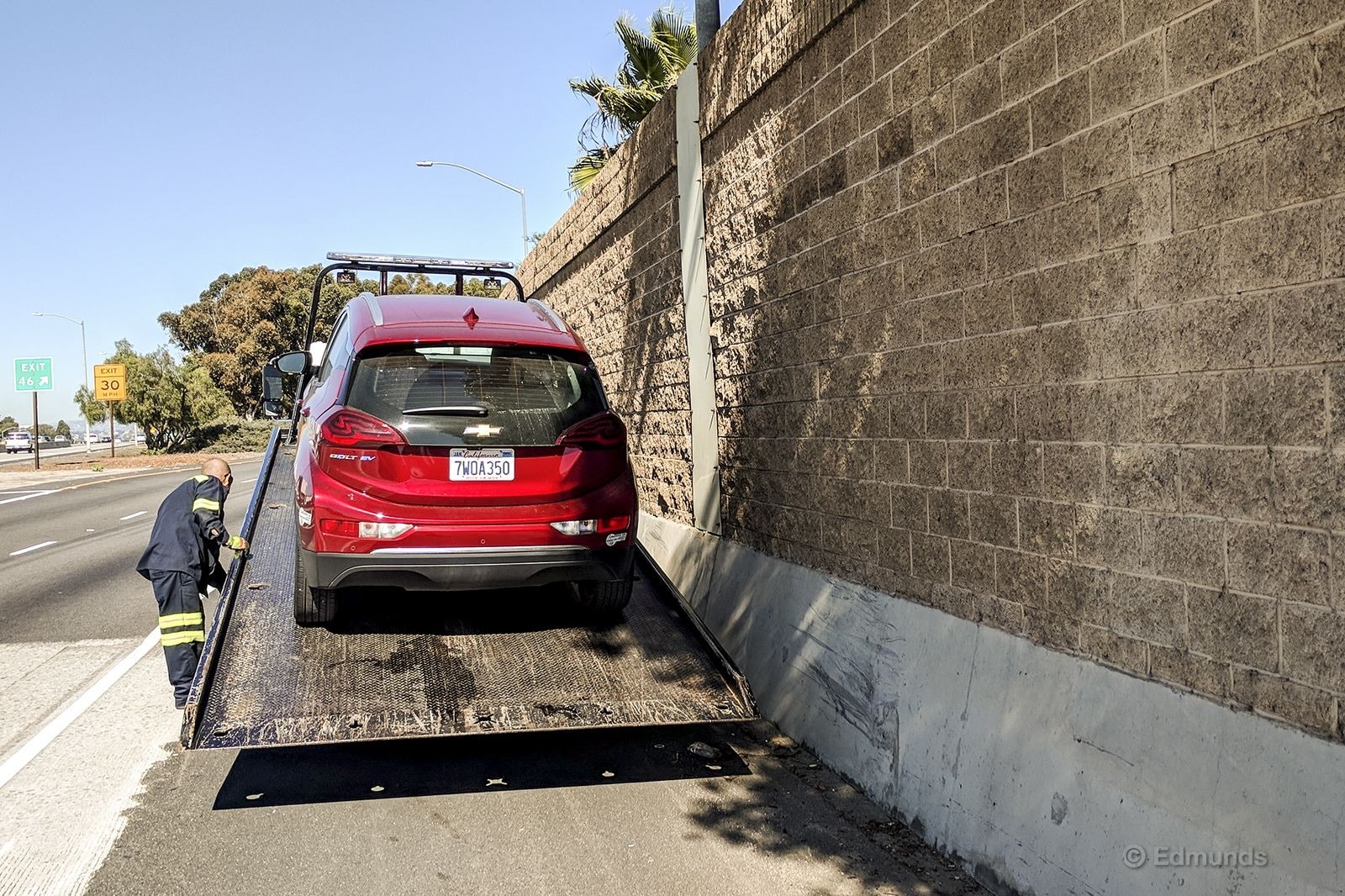
That thought lasted 24 hours. The very next day, February 8, the Bolt suddenly went into limp mode with Kurt Niebuhr driving in the leftmost carpool lane of a busy local freeway. With forward drive ebbing away, he somehow managed to thread his way across four lanes of traffic and guide the Bolt to a stop in the breakdown lane.
Kurt's experience was pretty much a replay of the first incident except that he'd seen 60 miles of range evaporate before his eyes instead of 30 miles. He'd also had no more than a quarter-mile of reduced power at 45 mph before the Bolt quit altogether. At least he'd heard the office talk about Brent's earlier incident, so he was aware of the urgency and dead certain about the lack of advance onboard warnings.
This time we had it towed directly to a dealership for diagnosis and repair.
We soon realized our troubles were the manifestation of a known issue that we had read about last August but didn't think applied to our car. The accounts indicated that GM had informed a few hundred owners, but we'd had our car seven months at that point and had not been contacted. Surely the automaker would have told us if we were vulnerable, right?
The next morning, February 9, I checked the GM Recall Center section of the OnStar app, which plainly stated, "Currently, there are no recalls or programs associated with your 2017 Chevrolet Bolt EV," with our car's VIN written beneath. Things didn't add up.
We got in touch with a GM spokesman to get some answers, and he in turn put us in contact with someone with a deeper Bolt EV tech background. The following is my understanding of what happened based on these conversations, other accounts I have studied, and our own observations.
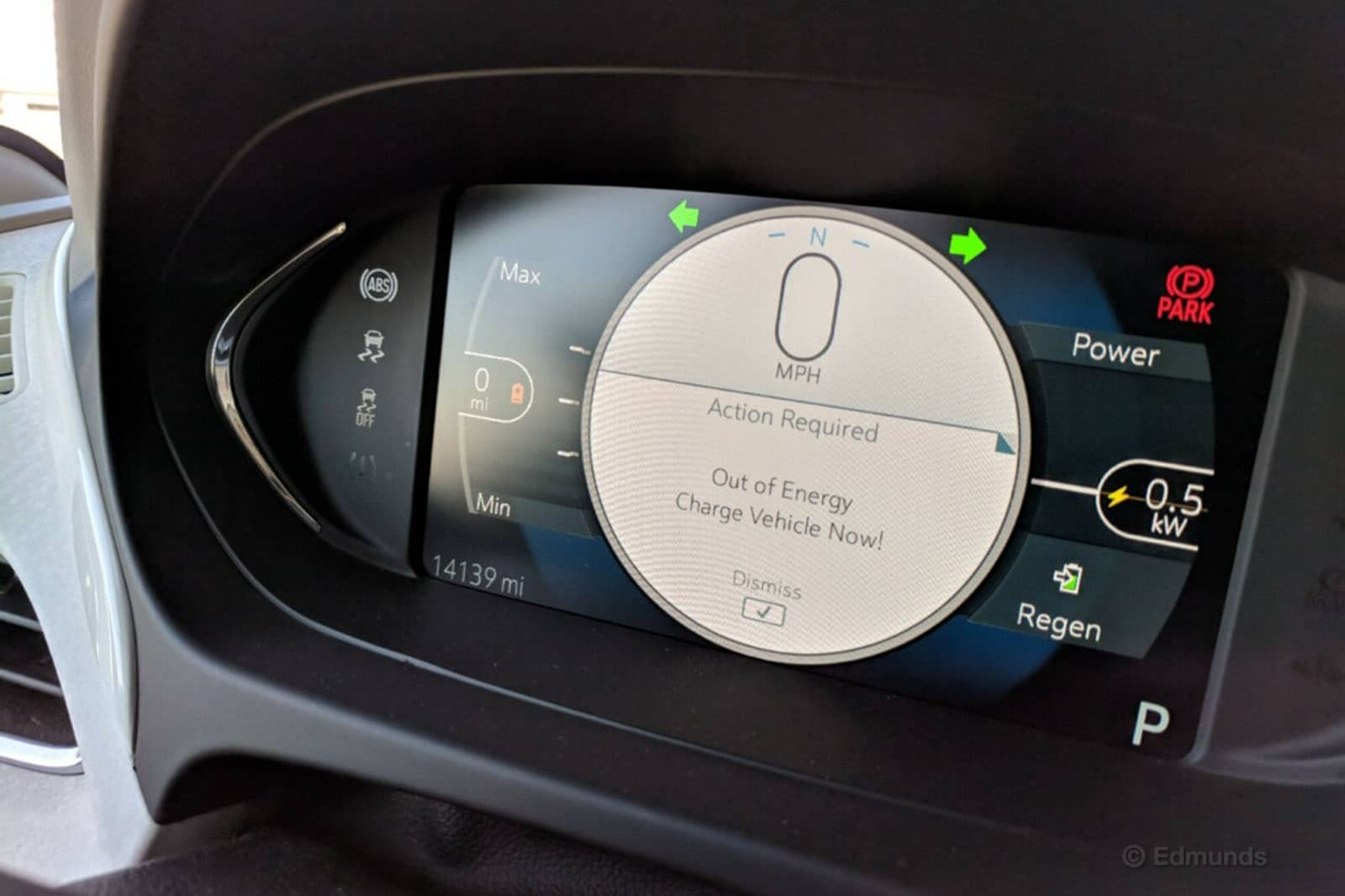
What is the problem?
It seems that early packs had a manufacturing process issue that was corrected with the supplier. It has to do with the voltage of the 288 individual cells in the pack. Normally, the voltage in each cell will remain even, but an unexpected voltage drop in even just one cell would cause an imbalance and prompt the battery management system to suddenly drop the remaining range calculation and cut power to reduce the strain. Our post-repair dealer paperwork supports this: "Battery pack cell #79 only 2.82 volts." The normal measurement is about 3.65 volts per cell. I'm no battery engineer, but apparently this is significant.
How many cars are affected?
I did not get a specific answer, except that this is a known issue that has long since been corrected in production. That implies a certain known production date and VIN cutoff, but it's not as easy as that because it comes down to the date the battery pack was built, which may differ from the car's assembly date. GM has said that only very early-production Bolt EVs were affected, amounting to less than 1 percent of total sales. What does that mean in specific terms if you're a Bolt owner? Apparently, our car's early build date of December 2016, not to mention its behavior, puts it in that group.
Why weren't we notified?
I'm not entirely clear. The voltage drop manifests itself differently from car to car. Driving style and environment play a role, and the problem seems more likely to occur when the battery charge gets low. In other words, your early battery pack may not have a bad cell at all, or it may be susceptible but never develop the problem if you never run your battery down very far. Once started, however, the problem can progress rapidly, hence our 60-mile failure hot on the heels of the 30-mile one.
Also, certain early cars, including ours, are on a list for intensive back-end monitoring via OnStar. Some of those owners have been contacted. Others, like us, have not. The part that kills me is this: I was told that the automaker was only one day away from contacting us about it when Kurt had his problem. Really? What about Brent's issue four weeks before that? Wasn't that a big clue? It seems this monitoring business is not an exact science.

Now what?
Drive it. We have a new battery pack under warranty, and it was assembled after the fix was implemented. Good as new, so long as we're talking about new after whatever date GM rolled out the battery fix. As for range and consumption, those are as good as we've seen before the troubles.
Shouldn't this be a recall?
Funny you should ask. While I was writing this on Thursday, April 5, GM made a couple of significant announcements, which is great for them because you'd never believe what I had written instead.
While the automaker stops just short of calling this a recall, as of April 5, 2018, it is notifying all owners of 2017 Bolt EVs and asking them to come in for a software update (program N172127150). Do it. Letters will be mailed out soon, but this notification shows up today in the GM Recall Center of the OnStar user website and phone app of 2017 Bolt EV owners. Interestingly, the same Recall Center also contains a new entry for the program that outlines the battery pack problem itself (program N172104090). This last one dates back to September 5, 2017, and is something I would have liked to see a long time ago, but never did — even when I deliberately checked the very same section of the OnStar app a couple months ago.
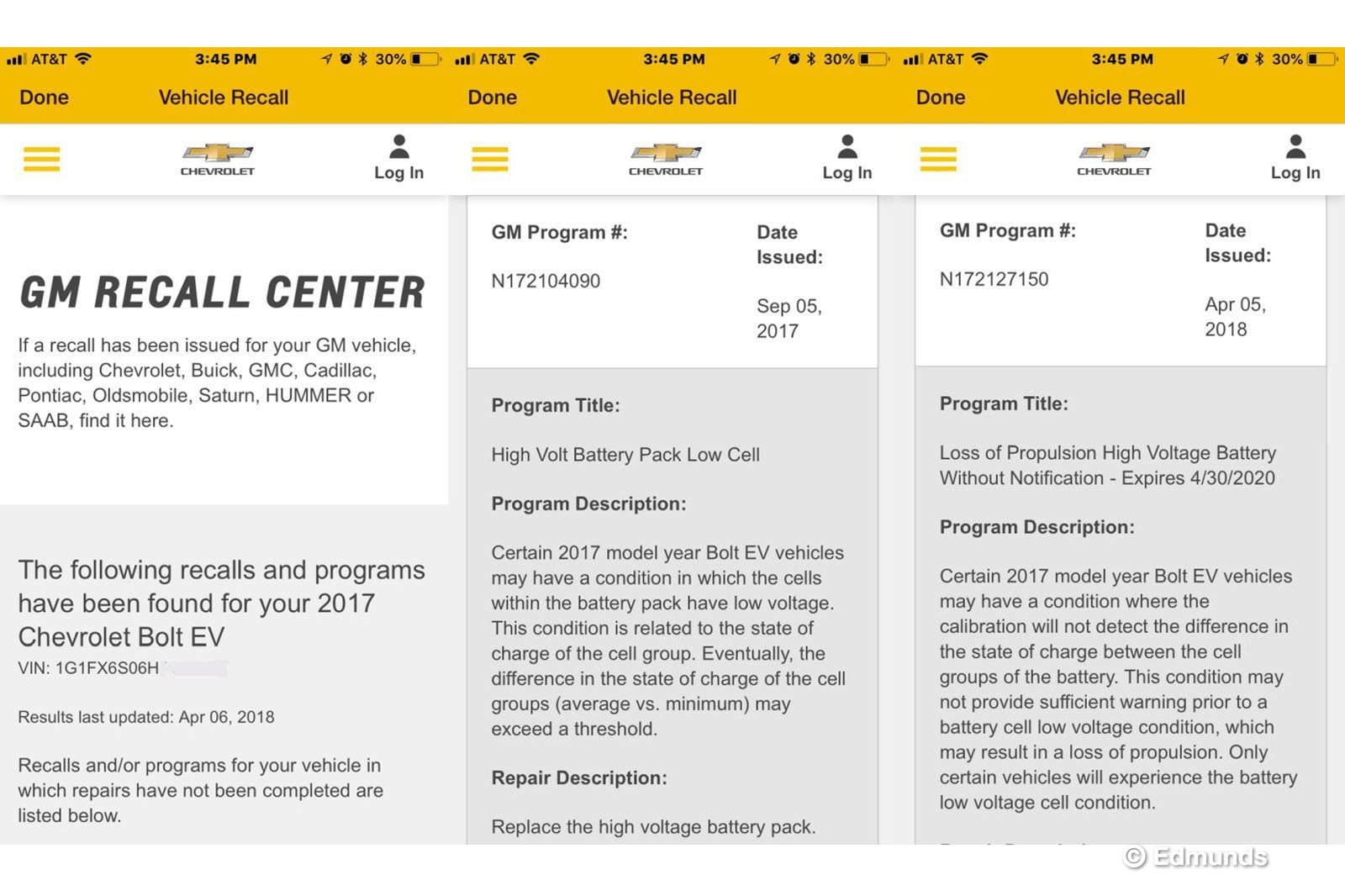
The main feature of this new software update is a change to the point at which the car goes into limp mode. Instead of a quarter-mile of reduced pace at 45 mph before it shuts off, the new software can recognize a meaningful voltage drop early enough to give a driver limp mode for between 1 and 2 miles.
This may not sound like much, but consider Kurt's crowded freeway scenario, in which he had to coax a dying car from the HOV/diamond lane to the shoulder across four lanes of traffic. It was pretty harrowing with a quarter-mile of drive. One or two miles would have made it much easier and safer. That said, cutting across multiple lanes of traffic at 45 mph is never going to win you any friends or be entirely safe. I wonder if they can set it up such that the four-way flashers come on automatically?
Wait. All 2017 Bolt EVs have the battery problem?
No, not all 2017 Chevrolet Bolt EVs have the battery pack issue. If you see that in your app, you are most likely still in the clear, but you'll want to have it checked. The boring description sounds innocuous, but it is outlining what led to Brent and Kurt's strandings. Besides, you're going to visit the dealer anyway because you'll want the newly announced software upgrade even if your 2017 Bolt EV is not an early-build car and has a healthy battery. Voltage drops outside the known issue have not been reported, but Brent and Kurt will tell you that you'll want all the advance warning you can get in the unlikely event that things do go pear-shaped.
I'm frankly furious that this happened two times to one car, especially when this was a known issue and our Bolt was on a list somewhere for intensive monitoring because someone knew or suspected its battery was one of the early "before fix" units that was potentially suspect.
But I'm less irritated now that the issue is more out in the open. The new software fix will give drivers more maneuvering time, and even the battery issue is now visible in the recall center. If you get the notification, have your car inspected. The regular vehicle health report won't spot it, and in our case, neither did the extra behind-the-scenes monitoring.
Monthly Update for April 2018
Where Did We Drive It?
Our 2017 Chevrolet Bolt is back on regular duty after all the recent drama. In case you missed the headlines, in April we wrote up the full story of how faulty hardware and software led to range issues that left two editors stranded on the side of the road with a dead Bolt.
Chevrolet took the Bolt in, diagnosed and repaired the problem, and we've had no further issues. April was relatively uneventful and our Bolt trundled along cheerfully enough through the daily abuse of an L.A. commute. For the full story, read Dan Edmunds' write-up; Bolt owners and prospective buyers will want to know these details.

What Kind of Fuel Economy Did It Get?
Our Bolt drove a little more than 1,000 miles in April, and over that distance our efficiency improved a bit compared to March. Our average consumption is down to 26.7 kWh/100 miles, which is better than Chevy's stated estimate of 28 kWh/100 miles combined. The Bolt continues to impress with its efficiency, even if we've had some reliability issues.
Average lifetime mpg: 26.7 kWh/100
EPA mpg rating: 28 kWh/100 combined (26 city/31 highway)
Best fill mpg: 18.3 kWh/100
Best range: 334.3 miles
Current odometer: 16,475 miles
Maintenance and Upkeep
None.
Logbook Highlights
Comfort
"Our Bolt rides much better than the Model 3. I spent the past weekend driving the Model 3 so it was fresh in my mind. Where the Model 3 is harsh over bumps, the Bolt feels more comfortable and composed." — Ron Montoya, senior consumer advice editor
Interior
"Have I mentioned the Bolt's light gray dashboard? If not, I am. It's too light in color. This is a problem because sunlight (or even a gas station's bright overhead light at night) creates a reflection of the dashboard on the inside of the windshield. This completely washes out the view forward and it's why dashboards are, or should always be, black. GM has only been making cars for 110 years so we'll cut them some slack for not knowing this." — Jason Kavanagh, senior road test engineer
"In the past I've noticed the driver's seat creaking a bit on occasion. It is definitely getting worse." — Mike Schmidt, senior manager, vehicle testing
Utility
"I enjoy driving the Chevy Bolt and I've recommended it to more than a few people who were considering buying an EV. The one area that would give me pause as a potential buyer is interior space, specifically cargo volume. As a hatchback, the Bolt makes the most of its size, but it's on the low side of sufficient for what I'd want in hatchback utility. I've thought, 'If only it were Volt-size, it would be perfect.'
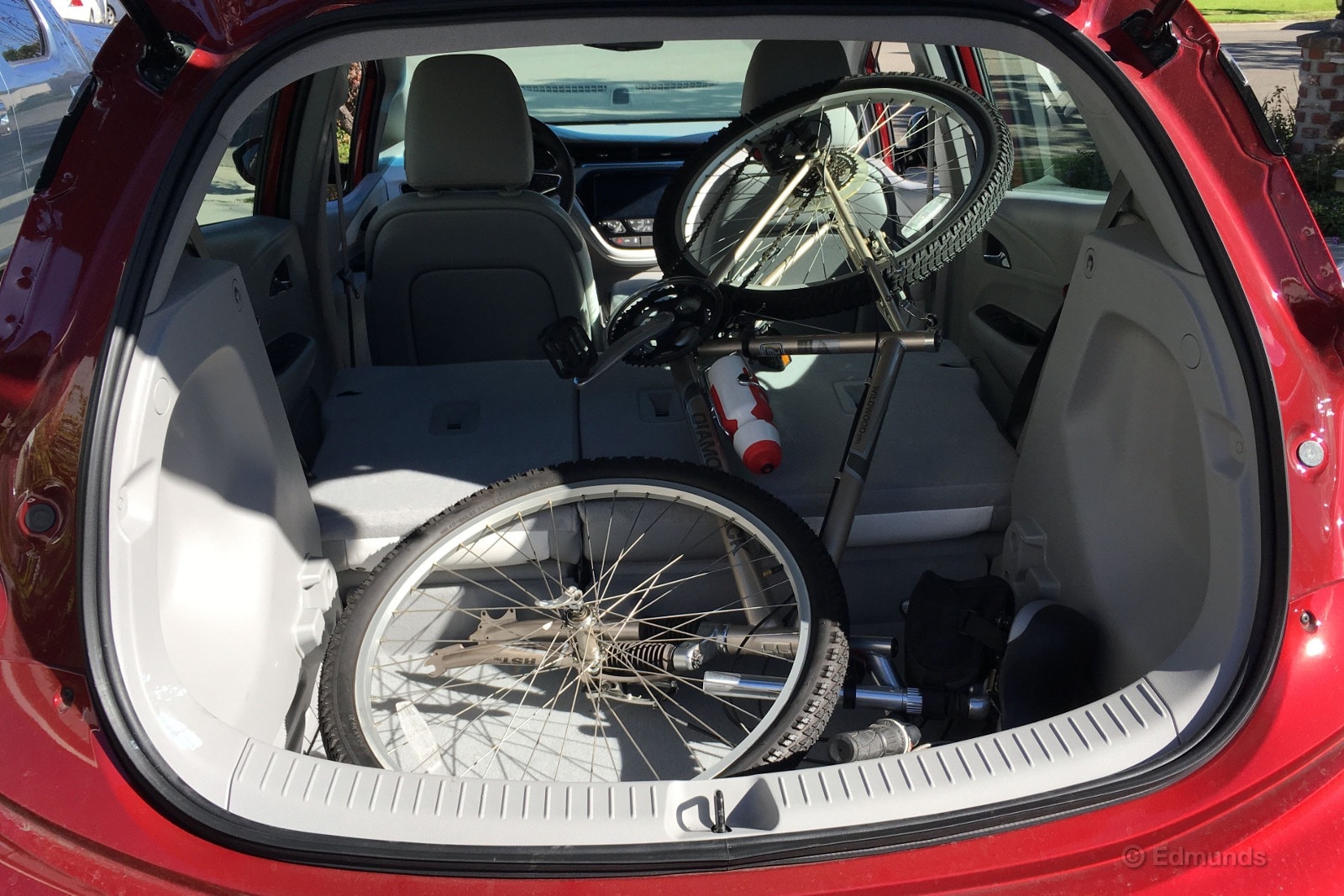
"Well, I did a spec check just now and found something surprising: The Bolt actually has 6.3 more cubic feet of cargo space than the larger Chevy Volt (not to mention more rear legroom and headroom). I don't recall the trunk of our long-term Volt being small at all, but the numbers would disagree. Whatever the case, a slightly bigger Bolt (the Jolt?) would make me very happy." — Jonathan Elfalan, senior road test editor
MPG
"It's Friday afternoon at 4:45 p.m. and I'm merging onto the freeway. I'm not alone. This 40-mile commute home will ultimately suck two-and-a-half hours of life from me, but it's going to earn me some EV street cred. Everybody needs that. I left our parking garage with the Bolt's meter showing 271 miles of range. When I pulled into my driveway, it still showed 271 miles. Thank you to regenerative braking, everyone on the 405 freeway and the Academy for making this accomplishment possible. I've lost my mind." — Mike Schmidt
Monthly Update for May 2018
Where Did We Drive It?
After all the shenanigans of April, our 2017 Chevrolet Bolt had a quiet and reliable month of commuting and city driving — exactly what this EV hatchback is good for. Instead of doing the daily driver shuffle with different editors in and out of the driver's seat every day, we had a few drivers stay in the Bolt for longer periods. This approach provides more accurate electric use data, as well as a new perspective for some who may question the very seat they're sitting in.
What Kind of Fuel Economy Did It Get?
Considering it was a month of stop-and-go city driving, it should be expected that we only drove the Bolt about 1,000 miles this month and our electric consumption was pretty much dead-on average. We dropped 0.2 kWh of energy use per 100 miles, which represents a typical amount of deviation. In other words, business as usual.
Average lifetime mpg: 26.5 kWh/100
EPA mpg rating: 28 kWh/100 combined (26 city/31 highway)
Best fill mpg: 18.3 kWh/100
Best range: 334.3 miles
Current odometer: 17,434 miles
Maintenance and Upkeep
None.
Logbook Highlights
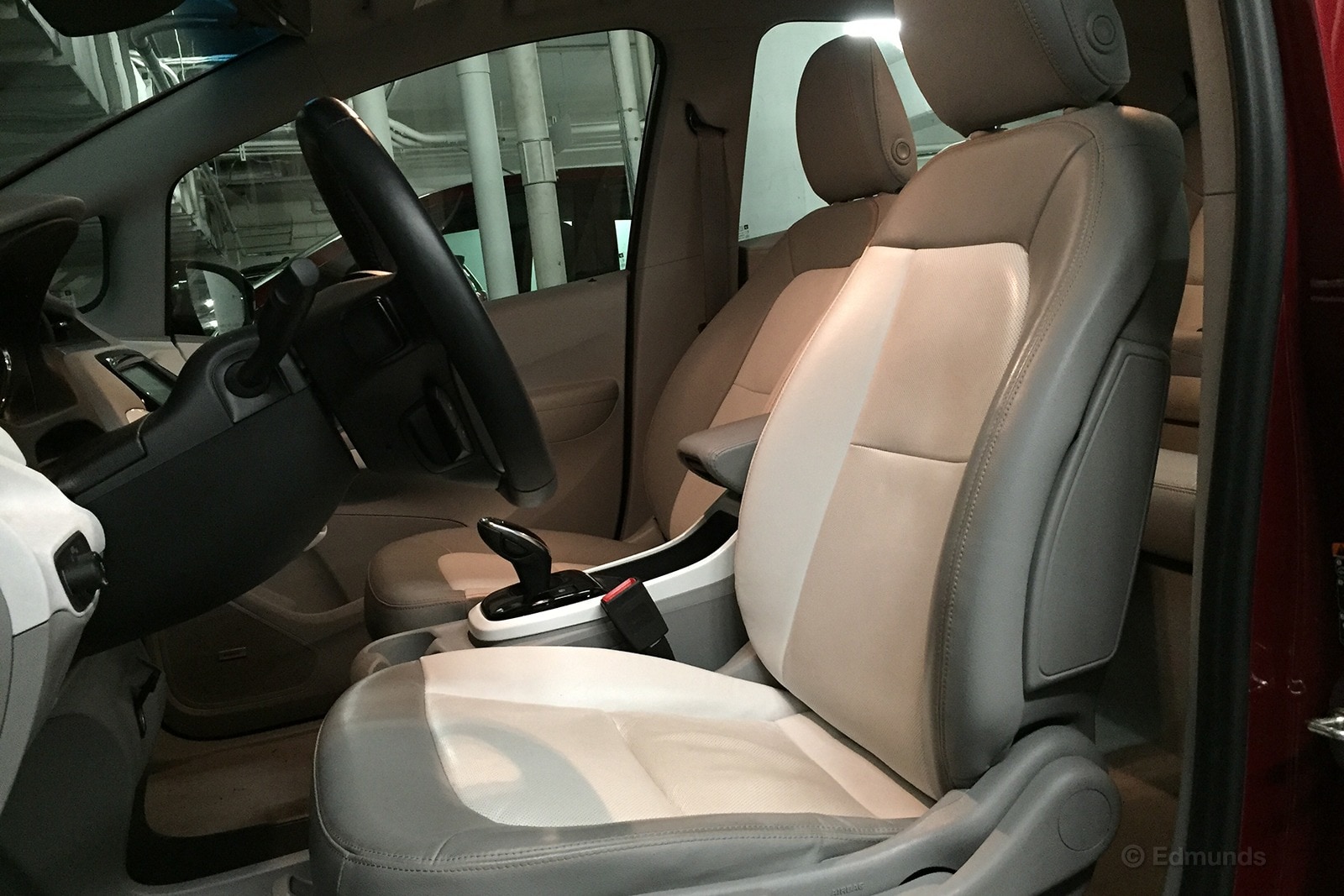
Comfort
"Everyone knows that L.A. traffic is absolutely terrible, and Interstate 405 during rush hour adds an entirely new dimension to the torture. After moving and having to extend my commute as a result, I have been on the hunt for ways to make the hour-and-a-half-plus drive more enjoyable, if not simply less painful.
"The Bolt has been my knight in shining armor. Thanks to its stellar range I can commute back and forth for nearly a week (yeah, it's only 20 miles each way) before needing to charge. I also get the bonus of the HOV lane (TOTAL WIN) and I can one-pedal it the whole way (yay for L mode). While others have complained about the seats in the car, I find them comfortable enough for long periods of sitting in traffic. The technical interface is easy enough to use. My Android phone pairs seamlessly, and the audio system is just fine for those moments when I need to drown out the drone of idling engines. The Bolt is definitely my commuter of choice at the moment." — Abigail Bassett, senior director, video & photo
"I've been avoiding our Bolt because I hated the seats so much, but I thought I'd give it another chance. Which was a mistake. The seats are worse now because they've been wearing out. The seatback is still too hard and feels concave where the lumbar support should be. It then drops back right at my shoulder blades so I have no support above that. But now that the seat cushion is all messed up, I can feel the plastic bits around the edge much more. It's stupidly uncomfortable for me and I hate it." — Will Kaufman, associate staff writer
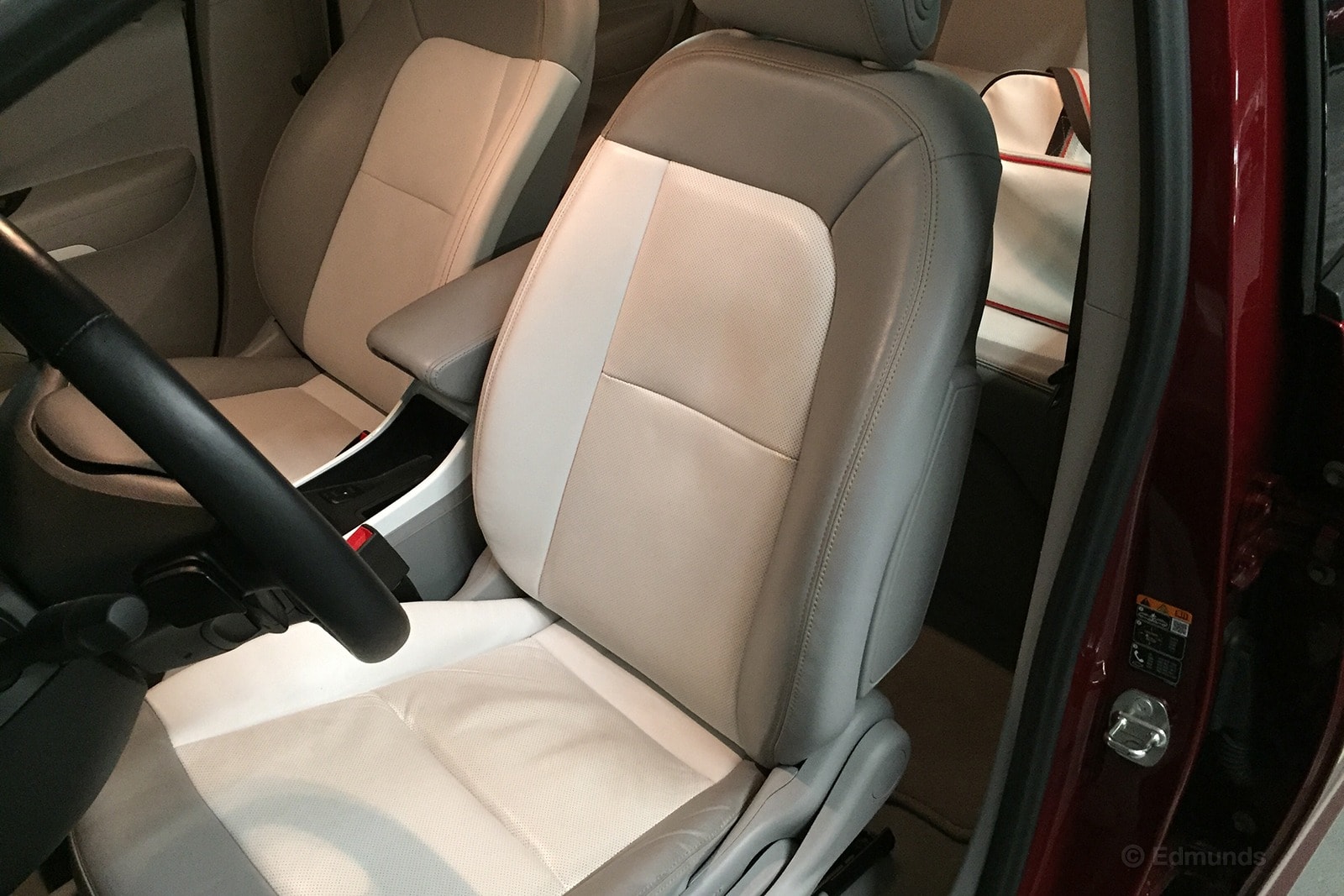
Monthly Update for June 2018
Where Did We Drive It?
I spent June mostly shuttling our little red electric vehicle back and forth to various video shoots around Southern California and commuting the 40 miles round trip from Torrance to Santa Monica on a daily basis. It was a lot of time to get acquainted with some of the great things the 2017 Chevrolet Bolt does, as well as some of its quirks.
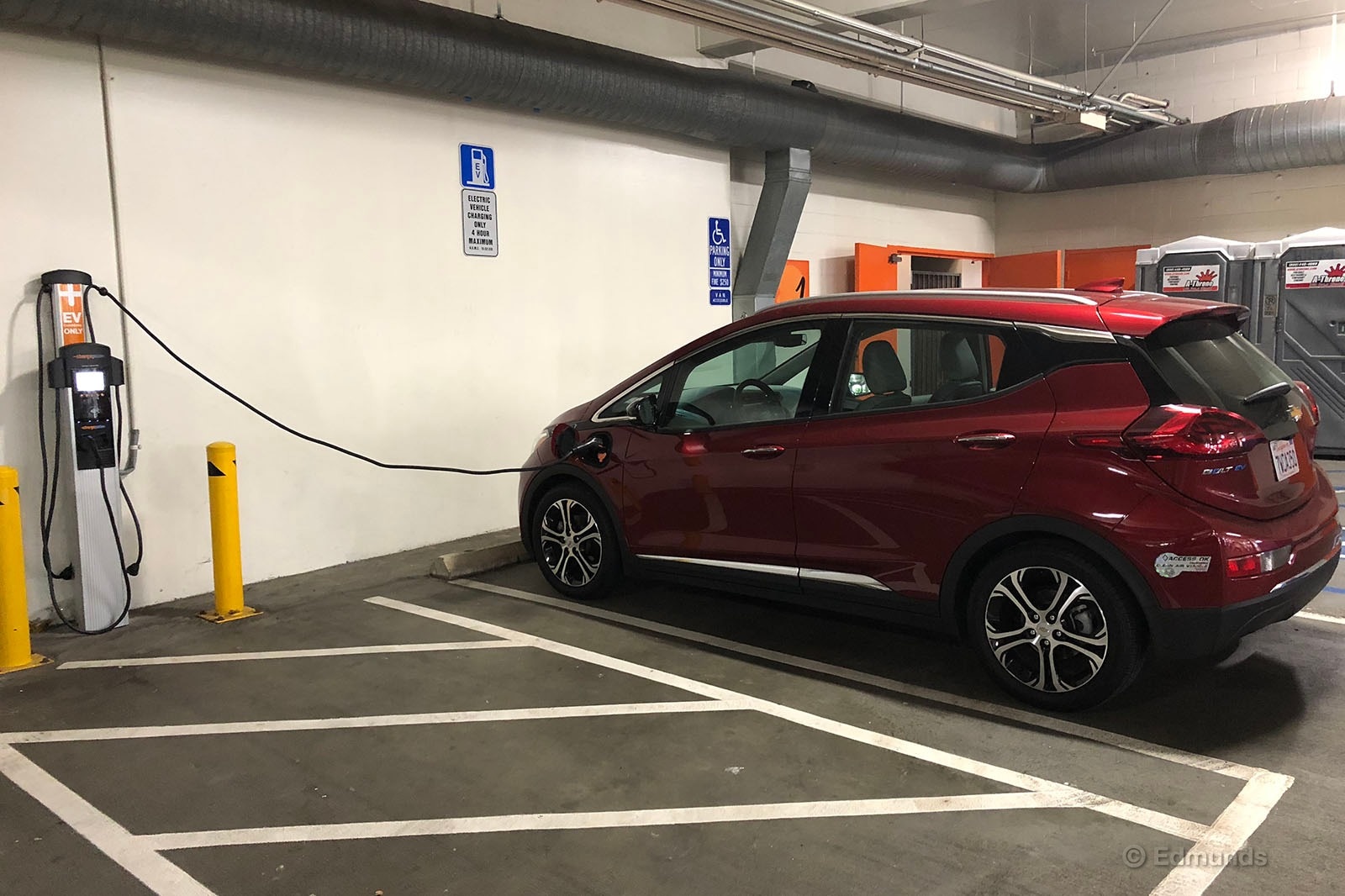
What Kind of Fuel Economy Did It Get?
Since we spent a month of doing nothing but sitting in traffic and barely reaching 40 mph on the highway, our 2017 Chevy Bolt only did 682 miles in June. Considering how few miles we drove (but how many hours we spent sitting in dead-stop traffic), the Bolt got exactly the same efficiency as it did last month: 26.5 kWh per 100 miles.
Average lifetime mpg: 26.5 kWh/100 miles
EPA mpg rating: 28 kWh/100 miles combined (26 city/31 highway)
Best fill mpg: 18.3 kWh/100 miles
Best range: 334.3 miles
Current odometer: 18,200 miles
Maintenance and Upkeep
None.
Logbook Highlights
Performance
"Driving 40 miles a day round trip means that I got very familiar with the whole one-pedal driving experience. Since the Bolt is one of the few vehicles in our long-term fleet that currently has an HOV sticker, I tend to drive it more than many of the other editors since my commute takes me from Interstate 10 to the incredibly congested I-405 freeway. The best way to circumnavigate all of that is to hop in the carpool lane and one-pedal my way home.
"While the experience does take a little getting used to, once you go one-pedal, you pretty much never want to go back, especially if you do battle with long commutes in heavy traffic. After knocking the drive select into L-mode, you can almost stop worrying about using the brakes. It's a much more pleasant driving experience when you are really slogging it out, and your passengers often will appreciate the much gentler regenerative braking experience.
"That's not to say the Bolt felt like a slouch when I needed to quickly get around yet another texting driver who had utterly tuned out the rest of the world. I love the low-end power and torque of pretty much every electric vehicle in our fleet, but the Bolt is one of my favorites." — Abigail Bassett, senior director, video and photo
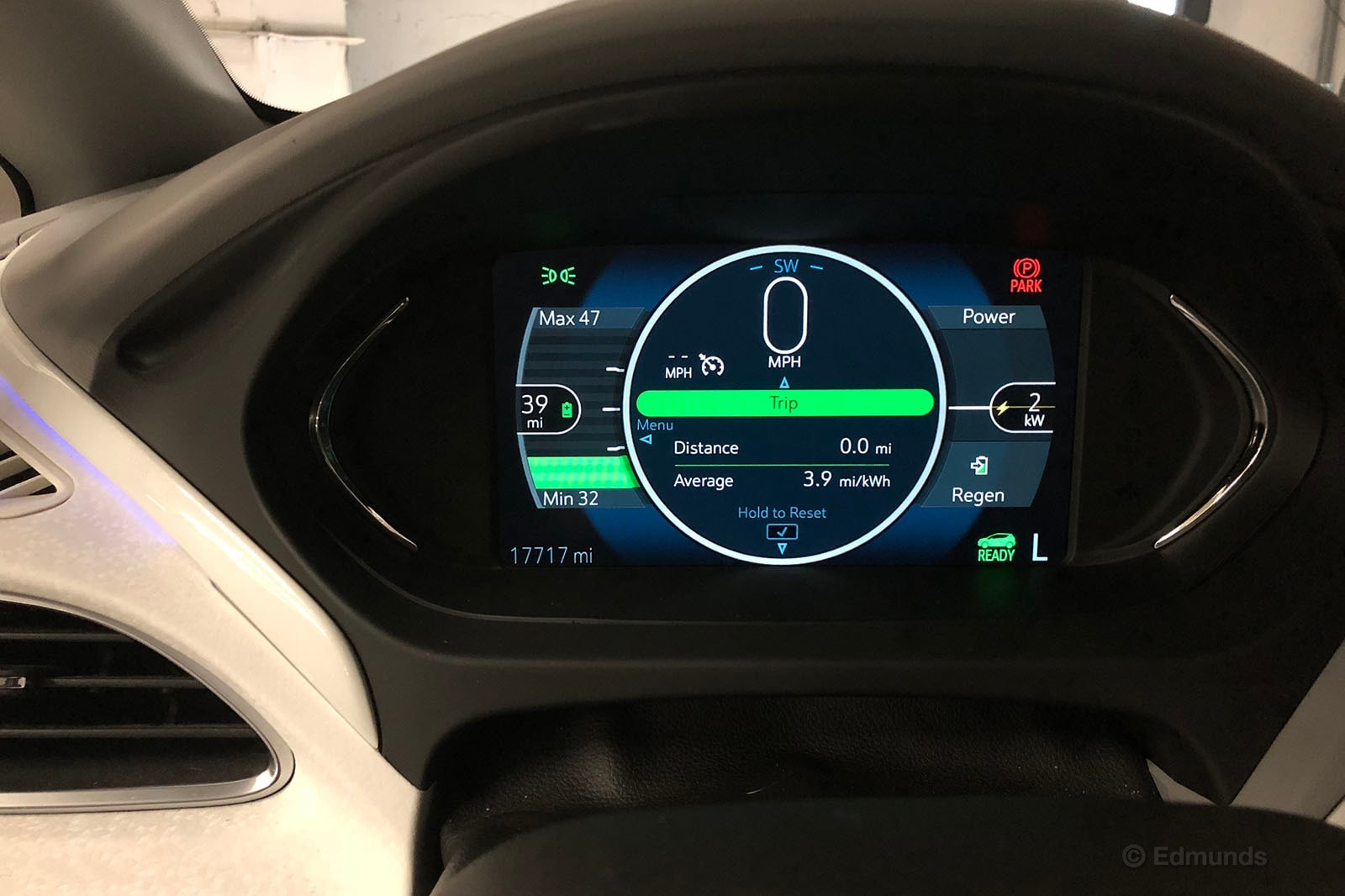
"In the time I spent with the Bolt, I did get to experience intense range anxiety firsthand. Back in April, our Bolt stranded Kurt Niebuhr on the side of the road with 60 miles left. I'd heard about the rather harrowing scenario that he'd faced, but decided that leaving home with around 60 miles to spare should be more than enough to get to the office. I breathed a sigh of relief when I rolled up to a ChargePoint station with 39 miles to spare." — Abigail Bassett
Comfort
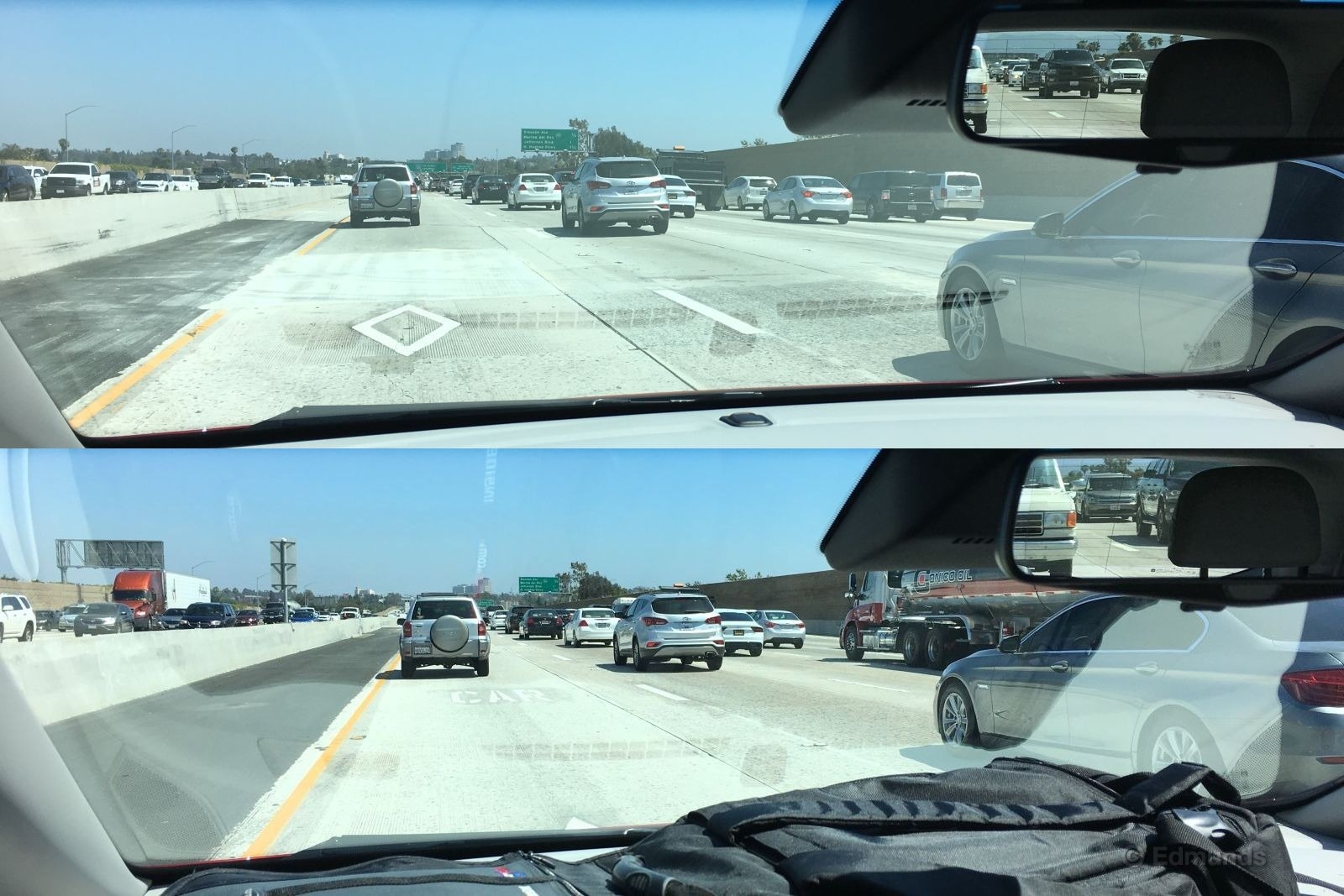
"No car should have a light-colored dash top, but our Bolt's is light gray — with white accents, no less. Worse yet, it's broad, and the windshield is laid back considerably. All of these factors add up to a perfect storm of reflected glare. It was so bad on a recent sunny commute home that I opened the flap of my black computer bag and spread it out in front of me. It made a massive difference. It was as if I put sunglasses on. Just look at the nose of the BMW in the next lane!" — Dan Edmunds, director of vehicle testing
Cargo
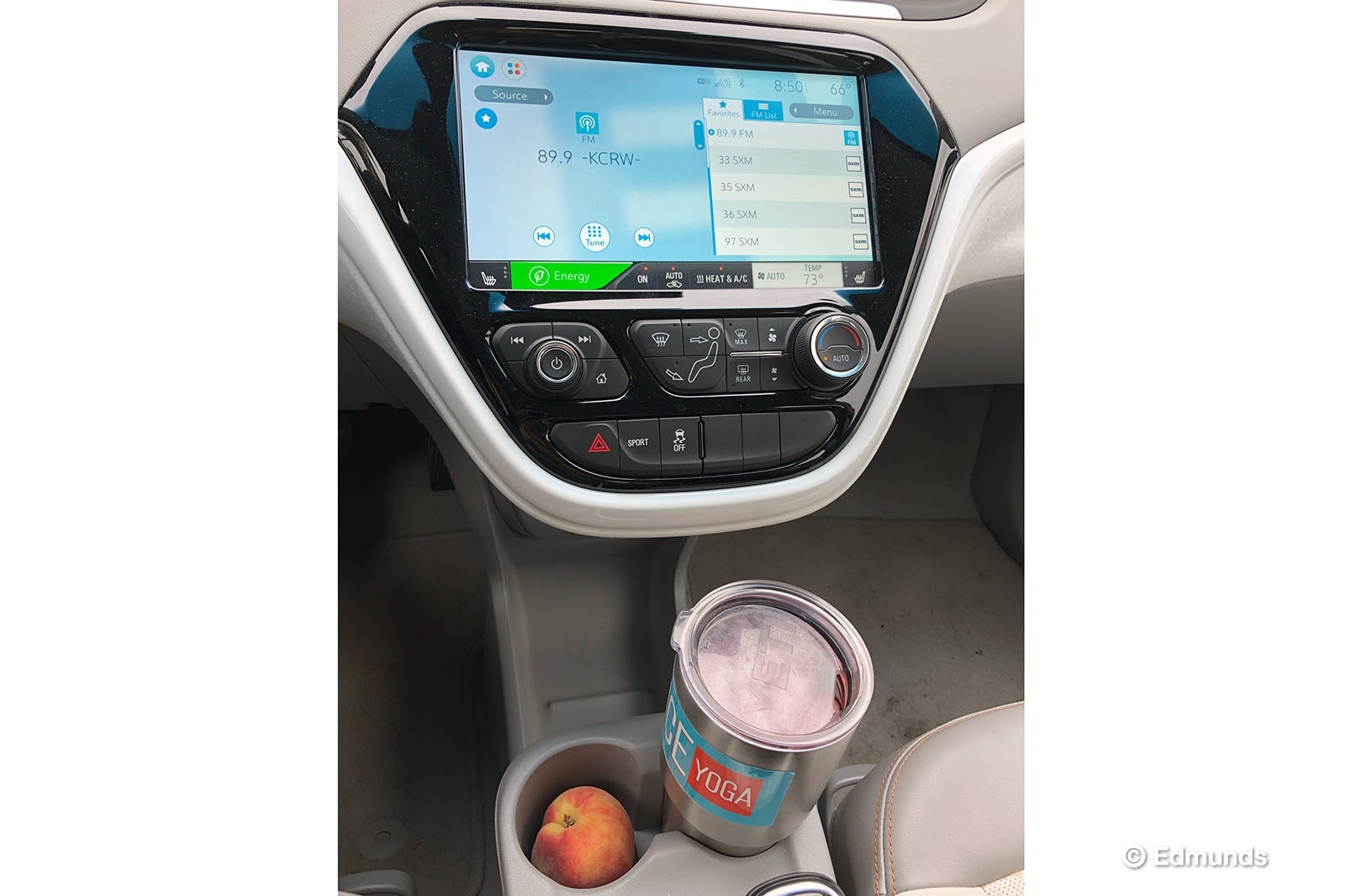
"While the glare is a bit annoying, I found the cupholders and the cubby between the seats to be particularly useful. As it turns out, a farmers market peach fits perfectly into one of the cupholders and it perfectly preserves it from getting mashed at the bottom of your bag." — Abigail Bassett

Monthly Update for August 2018
Where Did We Drive It?
It's been a while since we last checked in with our 2017 Chevrolet Bolt, June to be exact. What has it been up to?
Well, the Bolt is one of our commuting champions, and that is its bread-and-butter task around here. Whether it goes home with an editor who lives 10 miles away or with a staffer who lives 30 or more miles away in the San Fernando Valley or Orange County, the Bolt is a first-call commuter. Carpool-access stickers help, especially for our Orange County crew members who have carpool lanes on nearly all stretches of freeway from office to home. But it's the instant surge of torque and the ability to leapfrog through traffic that makes the Bolt a fun car to commute in.
It also has Apple CarPlay, which is a favorite with our iPhone-enabled crew. And the Bolt is just easy to operate and, for the most part (dying battery aside), reliable and issue-free.
What Kind of Fuel Economy Did It Get?
With the variety of commuting distances among our staff, it can look as if our Bolt is either being driven into the ground or not driven at all. We logged just 679 miles in July and only 431 miles in August. The Bolt's efficiency increased, however, from 26.5 kilowatt-hours per 100 miles in June to 27 kWh/100 miles in August.
Average lifetime mpg: 27 kWh/100 miles (125.1 miles per gallon equivalent)
EPA mpg rating: 28 kWh/100 miles combined (26 city/31 highway)
Best fill mpg: 18.3 kWh/100 miles (184.3 mpge)
Best range: 334.3 miles
Current odometer: 19,310 miles
Maintenance and Upkeep
None.
Logbook Highlights
Performance
"The Bolt allows me to sprint to open spots in traffic easily. I love EVs since they have instant torque and can bolt (no pun intended) into a gap when someone isn't paying attention, which happens a lot here in SoCal." — Rex Tokeshi-Torres, vehicle testing technician
Technology
"I chose the Bolt over the Tesla Model 3 the other night. The deciding factor was Apple CarPlay. I had to run some errands and commute in rush-hour traffic, so I wanted to have access to my podcasts and Apple map data. I can do all that simply by plugging in my phone. I could've had similar features in the Model 3, but it would have involved more steps than I was willing to take that day." — Ron Montoya, senior consumer advice editor
Miscellaneous
"I think it says a lot about the Bolt when I happily choose it over available long-termers such as the Tesla Model 3, the Toyota Camry and the Honda Civic. It's so easy to operate in stop-and-go traffic and has the get-up-and-go when I need it. Plus, it's not fussy like the Model 3. I actually look forward to driving it home in rush-hour traffic." — Caroline Pardilla, senior copy editor

Monthly Update for September 2018
Where Did We Drive It?
There's an old saying that "you never get a second chance to make a first impression." In September, our 2017 Chevrolet Bolt got a chance to win over our esteemed copy chief Kathleen Clonts. You'll have to read her in-depth impressions below. We found them to be quite insightful.
The Bolt continues in its lifelong struggle with Southern California commutes. An editor got blinded during her drive, not by science, but by the glare from the dashtop vents. We were able to rediscover the cool, wide-angle rearview mirror camera feature and continue to appreciate the large, easy-to-understand infotainment screen during our local travels.
But remember last month when we said the Bolt was issue-free? Apparently, we jinxed ourselves because the steering wheel controls went on the fritz. Thankfully, cruise control still worked. Can you imagine doing without the volume and radio controls during a two-hour commute? Oh, the humanity!
What Kind of Fuel Economy Did It Get?
The Bolt's usage increased in September, as we added 859 miles to the odometer. Our Bolt's efficiency even improved a bit, using 26.3 kilowatt-hours per 100 miles in September, compared to 27 kWh/100 in August. Admittedly, some of that efficiency is attributable to how relatively infrequently we drove the Bolt, but the car remains impressive overall. After 20,000 miles, it's beating its EPA efficiency estimate.
Average lifetime consumption: 26.3 kWh/100 miles (128.2 miles per gallon equivalent)
EPA consumption rating: 28 kWh/100 miles combined
Best fill consumption: 18.3 kWh/100 miles (184.3 mpge)
Best range: 334.3 miles
Current odometer: 20,169 miles
Maintenance and Upkeep
None.
Logbook Highlights
Technology
"The steering wheel controls just stopped working. Cruise control functions are still operational, but nothing else responds. That includes the radio channel and volume controls, the odometer reset and all IP [instrument panel] interaction." — Mike Schmidt, senior manager, vehicle testing operations
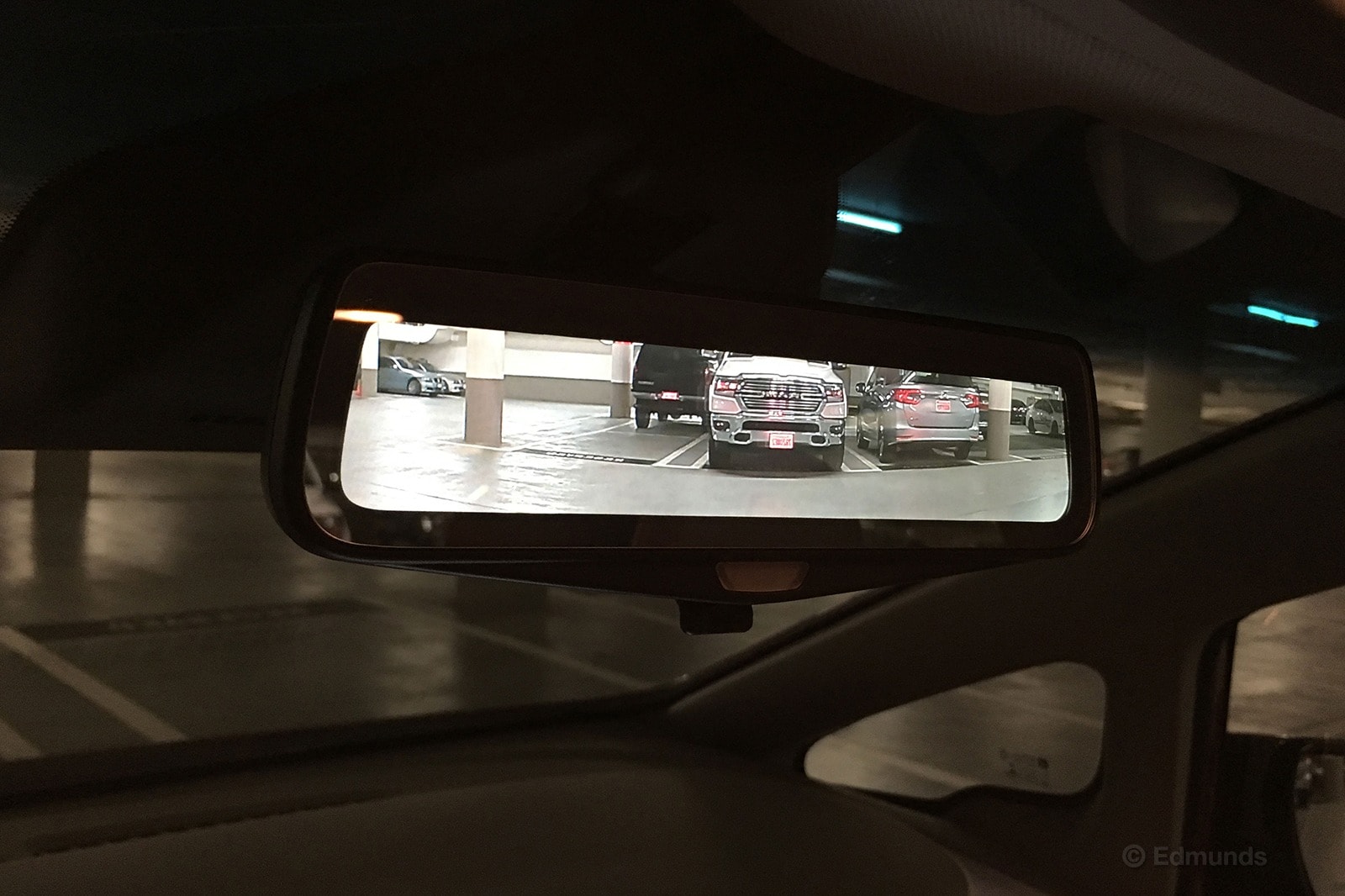
"We've owned the Bolt two years now. Just this morning I got to use a feature that, up until now, I had not. I flipped the lever on the rearview mirror to tilt it and dim the headlights of a motorist behind me. Instead, the action activated a wide-angle rearview camera. It gives a different perspective than the camera shows when shifting into reverse." — Mike Schmidt
Interior
"The Bolt's been in our fleet for 18 months [since February 2017], but I recently drove it for the first time. I have to admit my first impression upon opening the driver's door was 'rental car.' It's looking pretty tired for a vehicle with less than 20,000 miles. The fabric on the driver's seat is well-worn with some evident stretching. The mats were dirty and spotted. Maybe we've been extra hard on this car, but we spent just north of $42,000 on the Bolt. And you'd expect a car that costs that much to hold up a little better. I can't help to compare it to our 2018 Nissan Leaf, which admittedly has way fewer miles on the odometer (less than 5,000) but retails for $38,510 before tax incentives. It has sturdy and comfortable leather seats that look well-crafted, and it makes me feel like I'm getting into a $40,000 car." — Kathleen Clonts, copy chief
"I've harped about the glare on our 2017 Bolt more than once, and for good reason. The dashboard is a weird mix of white and light gray, and the windshield's rake angle almost perfectly reflects an image of the light-colored dash top back in the driver's face. At one point I discovered that opening my black laptop bag and laying it open across the top of the dash had a greater effect than me putting on a pair of sunglasses.
"But the new 2019 Bolt that I recently drove has a less troublesome interior color scheme, which is admittedly one we could have chosen in 2017 had we known of the glare issue. The new Bolt's dashtop was black and that made a huge difference, but still had some glare because the accents are still nearly bone-white. The styling distributes more of that to the passenger side, but I still could have done without the small triangle of white plastic there was on my side. And last time I checked, passengers don't like glare either." — Dan Edmunds, vehicle testing director
Performance
"I've been driving our 2018 Leaf quite a bit, so comparisons seem inevitable. The Bolt's acceleration doesn't feel as immediate and strong as the Leaf's. And the glare from the Bolt's dashtop vents in the Southern California sun was intense and annoying. I didn't resort to Dan Edmunds' tactic of putting a black computer bag up on the dash to block the reflection, but I was almost there." — Kathleen Clonts
Miscellaneous
"The Bolt remains one of my go-to cars for daily commutes. It's quiet, it accelerates quickly, and you feel a small sense of pride in not contributing to the CO2 emissions for the day. I'm also a fan of the large screen, which makes the navigation much easier to read." — Ron Montoya, senior consumer advice editor
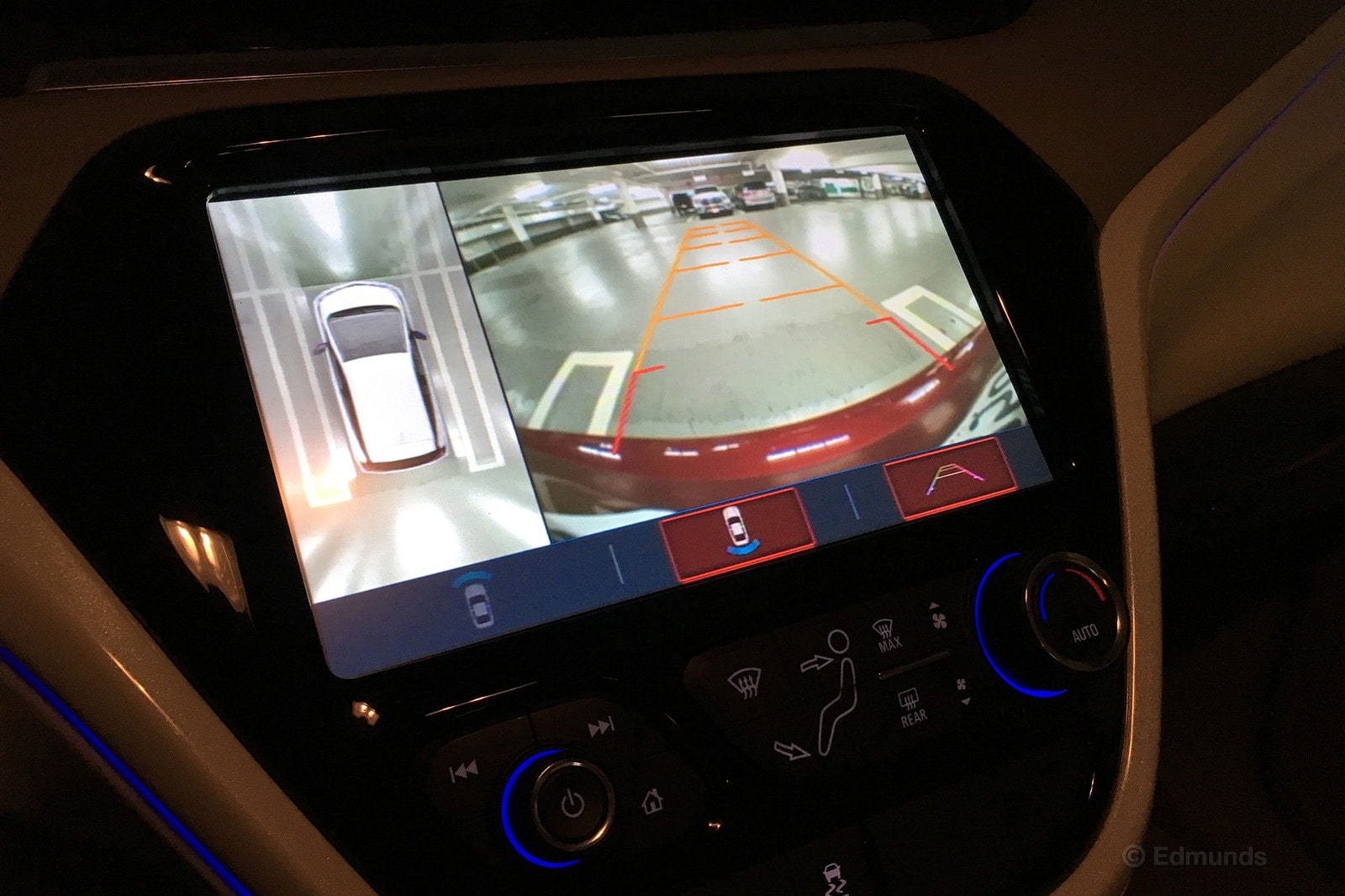
"I parked our 2017 Bolt at the airport and flew to Vermont to attend the introduction of both the 2019 Chevrolet Bolt and Volt. The Volt was the focus of the event because it received more changes, but the Bolt did get a couple of minor interior tweaks and three new exterior colors: Shock (think 'highlighter-marker yellow'), Slate Gray Metallic ('shiny primer gray') and Green Mist Metallic." — Dan Edmunds

"I love the new color on the 2019 Chevrolet Bolt that Dan Edmunds took a photo of. It looks a lot like highlighter yellow, and I'm a big fan of bright, obnoxious colors." — Rex Tokeshi-Torres, vehicle testing technician
MPG
"The Bolt press drive was a choose-your-own-adventure format, so I plotted a big looping course that briefly crossed into New York and New Hampshire. Most of it was hilly two-lane country roads, with about 45 miles of freeway on the return leg. I was a bit too early for fall colors, but I did manage to spot a couple of covered bridges and even drove over a floating one.
"Like our 2017 example, the 2019 Bolt is rated at 238 miles of range. Experience with our car gave me little doubt I could pull off what others thought was an ambitious 216-mile loop, and I indeed returned to my starting point with 60 miles remaining. Add the two together and you get 276 miles of projected range. I'll take that." — Dan Edmunds

Monthly Update for December 2018
Where Did We Drive It?
To Disneyland, of course! And when not driving to the Magic Kingdom, we drove our 2017 Chevrolet Bolt mostly around town in December. Despite the Bolt's 250-ish miles of range, no one's signing it out for a road trip, not even during the holidays when many of us try to get out of town. You need to be fully committed if you plan to drive the Bolt outside of its range radius, fully committed to brief spells of long stops at DC fast chargers, when and where you can find them.
So while miles were contained to our local area, we still managed to add 740 miles to the Bolt's odometer.
What Kind of Efficiency Did It Return?
We didn't move the needle much in December. Our overall average efficiency increased ever so slightly from the last update but barely enough to notice. None of our other metrics changed except that we're now beyond 20,000 miles. Even though we've had the Bolt for more than a year, it's always a good sign when we like a car enough to keep it around past the 20K mark.
Average lifetime mpg: 26.2 kWh/100 miles (128.4 miles per gallon equivalent)
EPA consumption rating: 28 kWh/100 miles combined
Best fill consumption: 18.3 kWh/100 miles (184.3 mpge)
Best range: 334.3 miles
Current odometer: 22,102 miles
Rough, Rugged, and Raw: Impressions
As our time with the Bolt winds down, we thought we'd review some of the good, the bad and the otherwise. The Chevrolet Bolt isn't going to win any design awards, and it sure as heck isn't the vehicle of choice for a zombie apocalypse. You can get away in a hurry thanks to the electric motor. But as an EV, you'll need to stop and plug in to top off the car for your next escape. That's if there's still electricity. No thanks.
What the Bolt is, though, is a fantastic commuter vehicle. Using our long-termer as the benchmark, you easily get over 200 miles of range (even with some spirited driving sprinkled about). There's a lot of interior room where grown adults can actually fit in the rear seats without having to tuck their knees into their chests like kindergartners. And the cargo area is much larger than a shoebox (unlike say, a Fiat 500e). We wish it would have more of everything, but there's only so much you can offer at this price point as an entry-level EV.
For all its instrumentation and readouts, the Bolt is fairly intuitive. The interior isn't exciting, but it is usable and durable and doesn't feel too much like a penalty box (definition of penalty box: an interior that's ugly, unrefined, claustrophobic, and makes you want to break out like you were imprisoned inside it for 40 years). We have, however, noted glares due to the light-colored dash.
The infotainment interface is straightforward and easy to see. Connecting devices like an iPhone is simple. The seats are well-positioned but have been uncomfortable for some of us. After almost two years, a weird smell still lingers inside the cabin that I can't quite put my finger on. No, it's not equivalent to mold or someone passing gas.
Our Bolt also has the nifty rear camera rearview mirror, which is occasionally useful. It has been reliable* and, alongside our long-term Prius, the Bolt is a commuting champ. There's an asterisk after "reliable" because we did need to replace the battery due to faulty hardware and software.
Overall, there's a lot to like about this vehicle. It's also fairly affordable as far as EVs go, and while not attractive, it's not something I would be ashamed of driving either. Personally, I would take this over my 500e. Now let's see if Chevrolet can work out some rock-bottom lease deals.
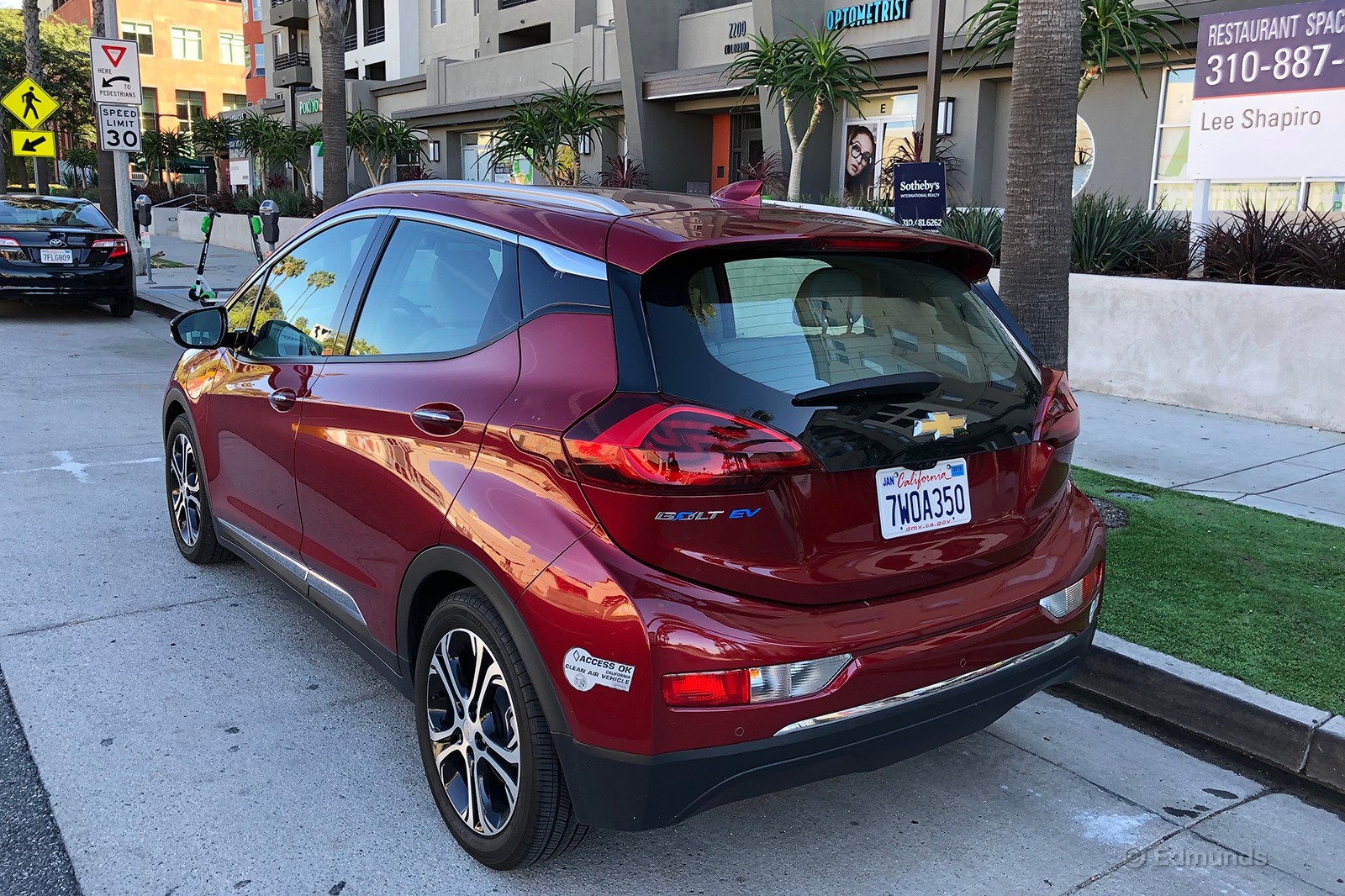
Put Ya Boots On: Getting Knee-Deep Into Details
Now that we have the raw-impression-via-firehose out of the way, here are the finer details about our Bolt collected during the last two years. It's somewhat rare that we hold onto a vehicle for this long, but we aim for at least 20,000 miles for our long-term tests before we end them, especially when we buy the car ourselves.
In nearly two years with the Bolt, we've learned quite a bit about what the EV future could be like. The Bolt has shown us that range anxiety isn't really a huge factor with this vehicle. We can easily get it beyond the 200-mile mark, unlike the Teslas we've had. Everyone on staff has been overjoyed by this since Day One, but we have yet to get close to the 300-plus-mile record that one Bolt owner has set, according to GM.
We also learned that self-healing tires can be messy when using the sealing foam and are a pain to patch due to said "healing" technology. Also, the seats aren't the most comfortable as evidenced by the posts from Kurt and Will and there's a "glaring" problem with the interior.
Over the holidays, two of our esteemed colleagues, Kathleen and Caroline, spent quite a bit of time in our Bolt, using it for daily commutes and a Disneyland trip. Their insight is refreshing as you'll see from their comments below, but you'll also notice a couple of common threads:
- • Usefulness of lift-throttle regen in L mode (more about L mode here)
- • The wish for more cargo capacity
Maintenance and Upkeep
None.
Logbook Highlights
Interior

"My sister, 4-year-old niece and I once again set out to the Magic Kingdom. I always volunteer to drive us because it's my chance to see how a long-termer does with child seats. Here's what my sister had to say about setting up the child seat in the Bolt:
"'It was easy because the back anchor was easily accessible from the back of the car (in my X5, it's too far from the back, so I have to feel around for it from the back seat). But it was also hard because the doorway was small, so I couldn't simply slide the car seat in. I had to tip it and PIVOT [/Ross in Friends] until I could get it in position. So maybe it'd be really easy for a baby seat, but trickier for a toddler seat.'" — Caroline Pardilla, senior copy editor
"With the seats in an upright position, the headrests — for safety reasons or not — tilt your head awkwardly forward. I found that once I tilted the driver's seat back a little, it wasn't quite as annoying. But this characteristic could be a deal-breaker for some potential buyers." — Kathleen Clonts, copy chief
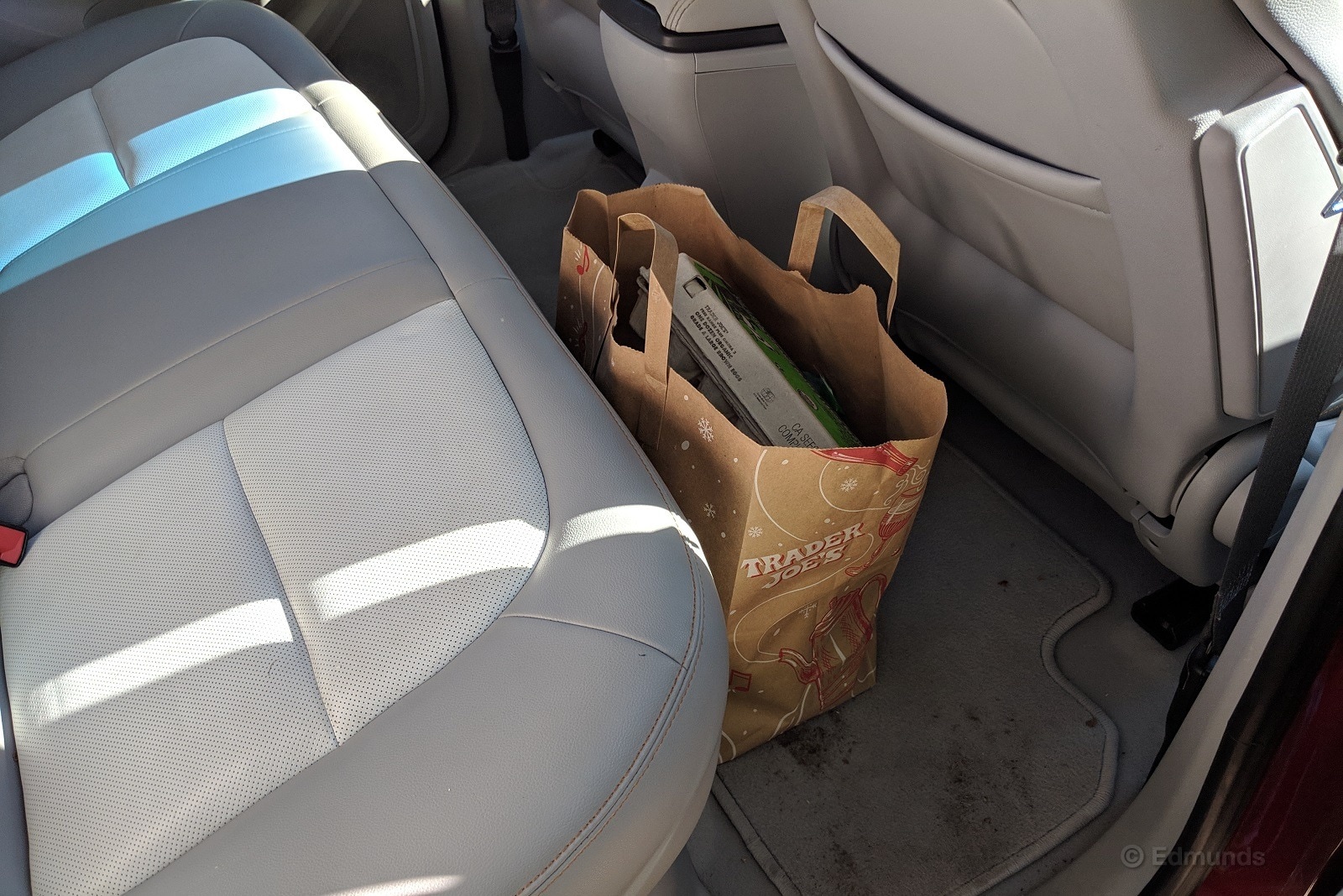
"I only needed a few items from Trader Joe's, including a dozen eggs. Problem with loading the one grocery bag into the Bolt is figuring out where to put it so that it won't spill out the contents. There's nothing in the cargo to secure it, and the rear-seat footwell has a wide flat floor. So I ended up pushing the front passenger seat all the way back til it secured the bag up against the rear seat. That did the trick.
"By the way, in the picture you probably notice how dirty the floor mat is. That was from when my sister stepped in some wet dirt before stepping into the car. That's another reason I would have opted for a dark interior." — Caroline Pardilla
Technology-Audio
"The giant 10.2-inch infotainment screen is great and is one of the first things new passengers comment on. But in part due to the (much-appreciated) enormous front window, it can be obscured by severe glare at times. Perhaps if the screen had a little hood on top or were angled more toward the driver, it might help." — Kathleen Clonts
"I'll second Kathleen's thoughts on the Bolt's large touchscreen. It is larger than what you'd find in most other EVs, which is nice when you're using Apple CarPlay. But I have two big issues with it. First, it sits at too low of an angle. I suspect this was done to reduce glare, but it makes it slightly harder to read than it should be. Second, the operating system that Chevy used was a one-off that isn't found in its other vehicles. It isn't very intuitive to use. I vastly prefer the current Chevrolet Infotainment 3 system, seen in other new Chevys, but it's unclear if and when that will make it to the Bolt." — Ron Montoya, senior consumer advice editor
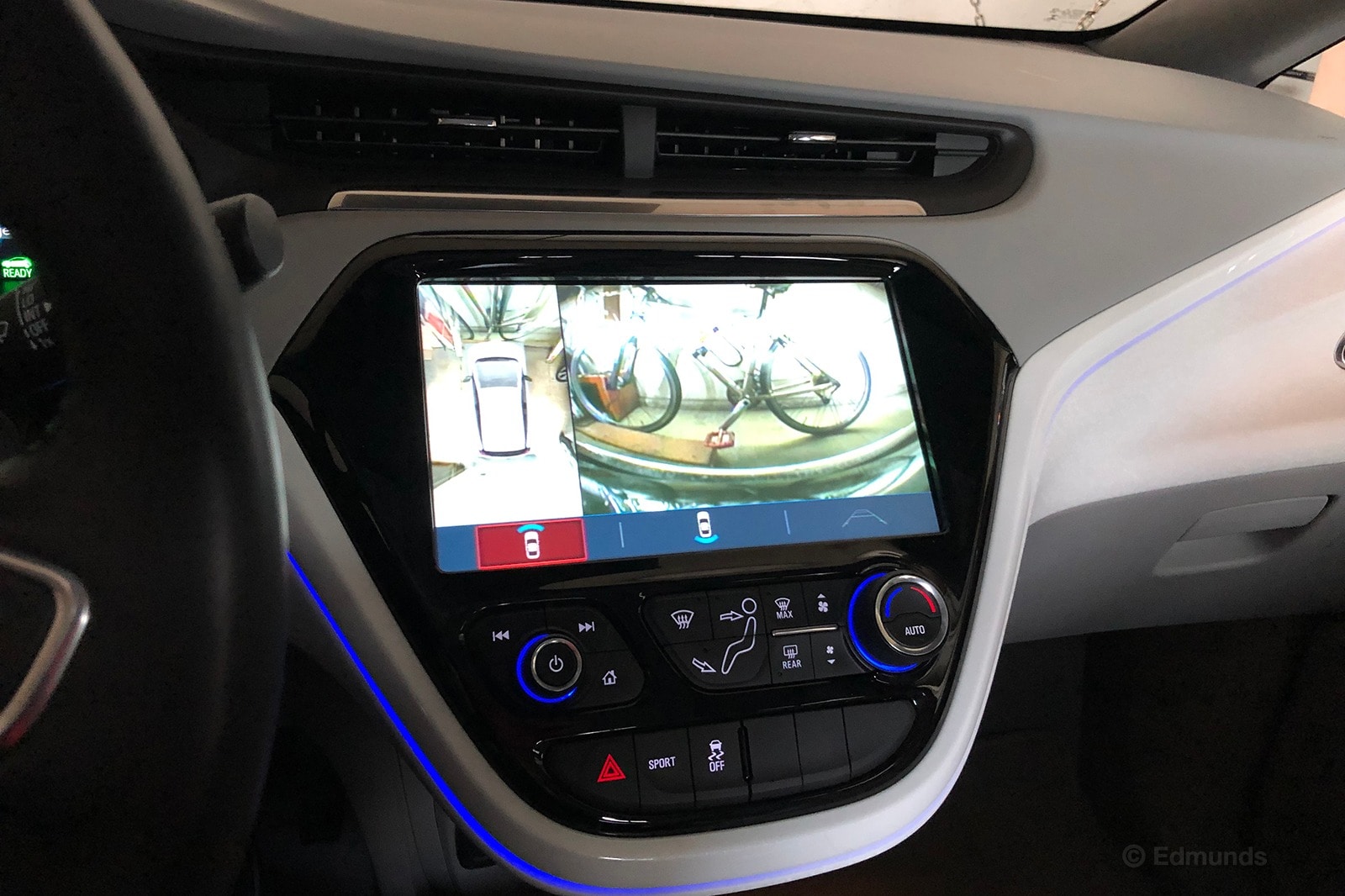
"The camera is super helpful when parking in tight spots, allowing me to get just-close-enough to the bike that sits in front of our spot in the garage." — Kathleen Clonts
Miscellaneous
"After having one-pedaled the Nissan Leaf through rush-hour traffic the night before, I was looking forward to trying out our Bolt the next night. Seriously, that one-pedal driving is a sanity saver, especially when it seems everyone else on the I-10 freeway is a fan of speeding up and hitting the brakes. But unfortunately, since there is no clearly labeled B mode or E-pedal option in the Bolt, I wasn't sure how to get it to activate the regenerative braking.
"I totally dismissed the L on the shifter as the low gear for going down hills. And when I had tried driving it in L briefly, it did seem to shift to a lower gear, but I was afraid that resistance to acceleration would expend more energy. But nope, turns out that's where you should place the shift lever when you want to one-pedal it. Too bad Chevrolet doesn't have a recognizable name for that like Nissan does." — Caroline Pardilla
Utility
"When going to Disneyland, we also had to pack up my niece's stroller. Good thing it was the only piece of cargo we needed to put in the back because it barely fit there. And according to my sis, 'that's just a [lightweight, easily foldable] umbrella stroller. So even though a baby seat would fit more easily on the back seat, a baby's stroller might be too big for the trunk.' " — Caroline Pardilla
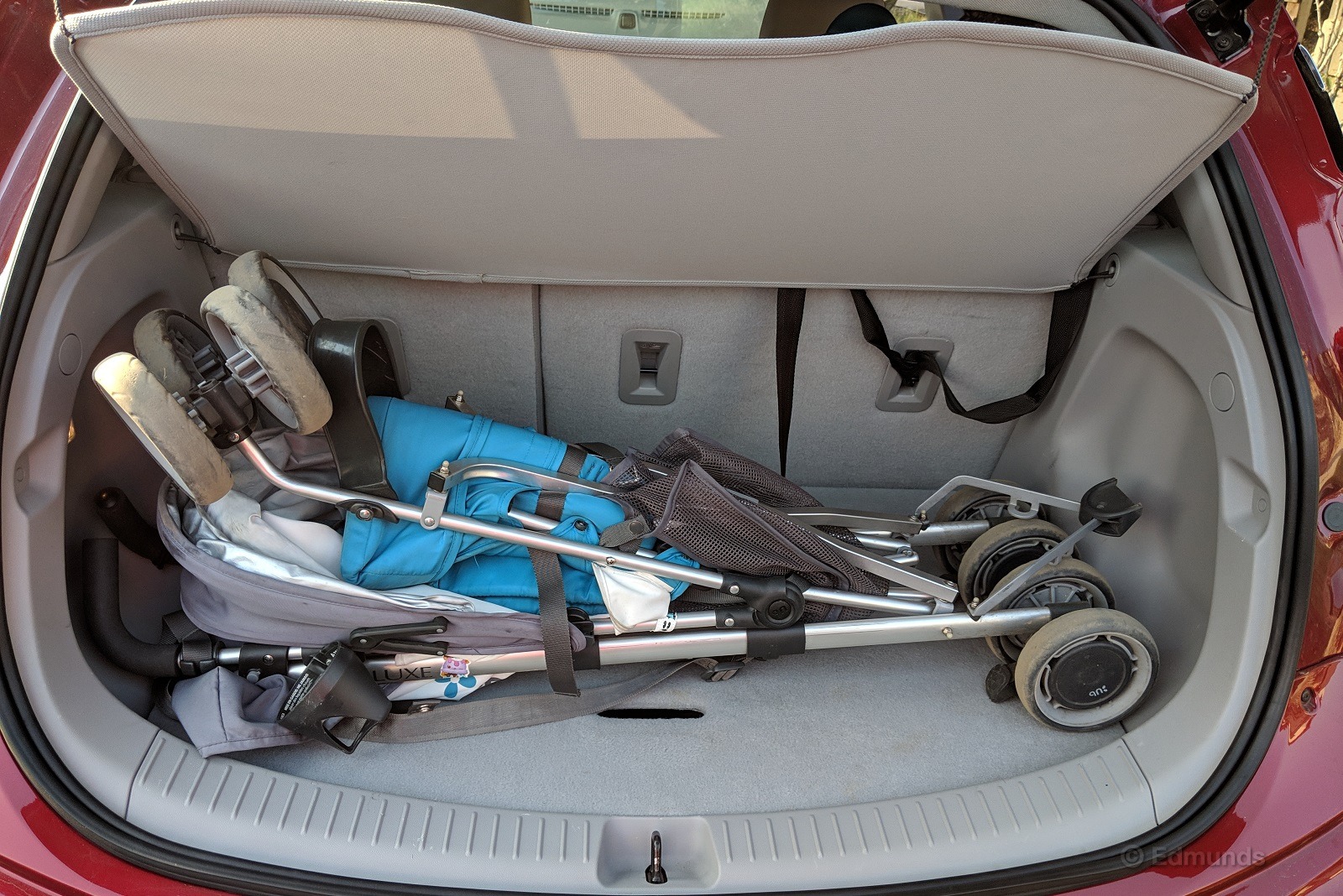
Monthly Update for March 2019
January through March at a Glance:
- We drove 2,538 miles over three months
- We cleared up clutter and drove to the e-waste station
- The lighter-colored interior is a bad move
- The Bolt needs meatier tires
Where Did We Drive It?
Over three months, January to March, we drove our long-term Bolt an average of 846 miles each month, and we did it in the usual fashion: commuting and running nearby errands.
We know the Bolt can exceed 200 miles on a single charge, but we think most people use the Bolt to commute and run errands.
Some people choose to delay charging until they're down to about 50 miles, but most owners will plug in every day to keep it topped-up and ready to run around town.
Did you know that a 42-inch flat-screen TV can fit in the back? We were skeptical at first but were happy to learn that the Bolt can handle a large-item trip to the e-waste station.
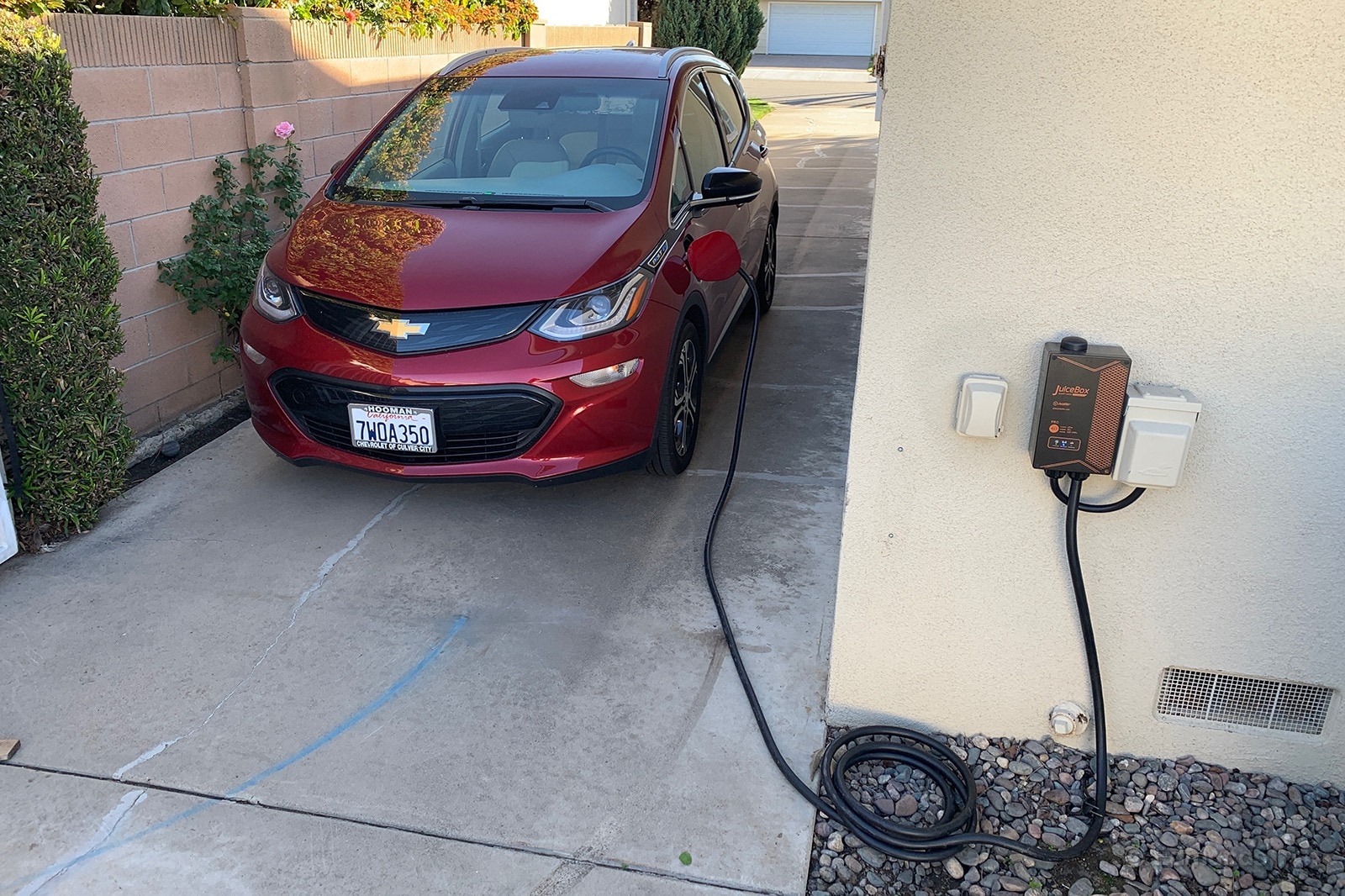
What Kind of Fuel Economy Did It Get?
It's really hard to dramatically affect the Bolt's reported fuel economy numbers given the way we use it. Consider this par for the course.
Average lifetime mpg: 26.1 kWh/100 miles (129.3 miles per gallon equivalent)
EPA mpg rating: 28 kWh/100 miles combined
Best fill mpg: 18.3 kWh/100 miles (184.3 mpge)
Best range: 334.3 miles
Current odometer: 24,640 miles
Maintenance and Upkeep
None.
Logbook Highlights
Interior
"The light interior on our Bolt is not holding up well. The floor mat has picked up a number of small stains, and there seems to be ink spilled on the passenger's seat. This issue isn't a knock on the Bolt. The same could happen on any light-colored interior. Either way, we're due for an interior detail." — Ron Montoya, senior consumer advice editor

"The Bolt is the perfect errand-running car. It's quiet and comfortable, and the best part is that there are no worries about using gas to make short trips. There was plenty of room for my personal items and supplies for my cat." — Ron Montoya
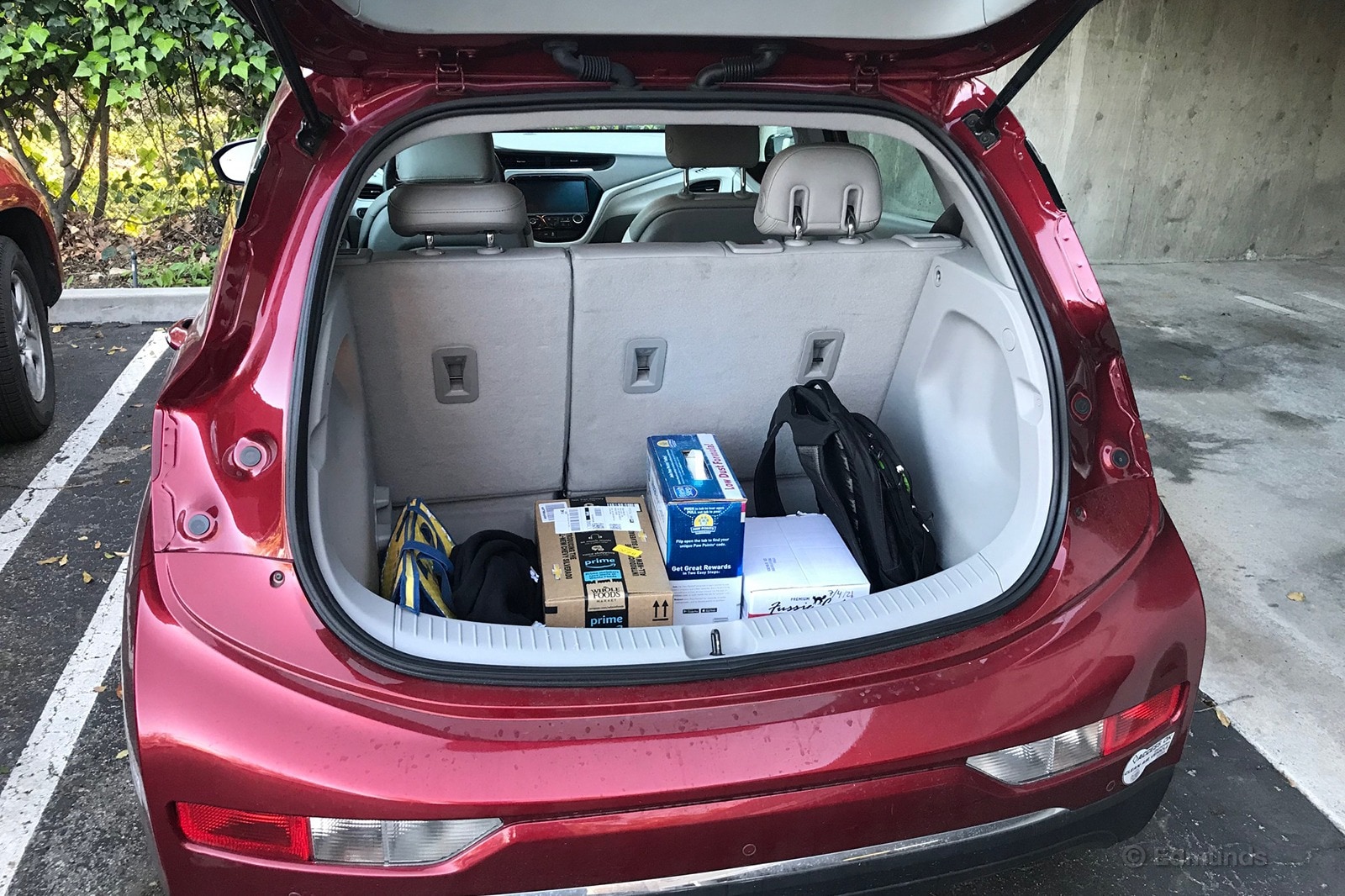
Performance
"My rainy commute this morning revealed just how feeble the Bolt's tires are. Even moderate acceleration had the front tires desperately scrabbling for traction. One tire would slip, traction control would intervene (limiting drive torque and/or squeezing the brake caliper for that wheel), then the opposite tire would do the same. Lather, rinse, repeat.
"No hooning — this was just trying to leave a stoplight. It's not a subtle intervention either. The traction control intervention is abrupt, overzealous and slow to act. I have a hundo that says that putting a decent conventional summer tire on the Bolt would knock a half-second or more from its 0-30 mph time. It would probably do wonders for the braking distance, too.
"The range? Yes, that would probably drop significantly. Now you know why the Bolt has terrible traction in damp conditions." — Jason Kavanagh, senior road test engineer
Utility
"I begin every new year by clearing out the clutter. And this year that included finally getting rid of a broken flat-screen TV and a bag of old batteries, electronic cords and lightbulbs that have been taking up a corner of my living room for far too long. I had worried that my 42-inch television wouldn't fit in the Bolt's cargo area, but turns out it was no problem sliding it in there longways through the back.
"And to secure the one bag of junk in the rear-seat area, I positioned the front passenger seat up against the bag to hold it in place so it wouldn't spill its contents. Needless to say, I felt extra green having run this errand to the e-waste disposal center in our EV." — Caroline Pardilla, senior copy editor
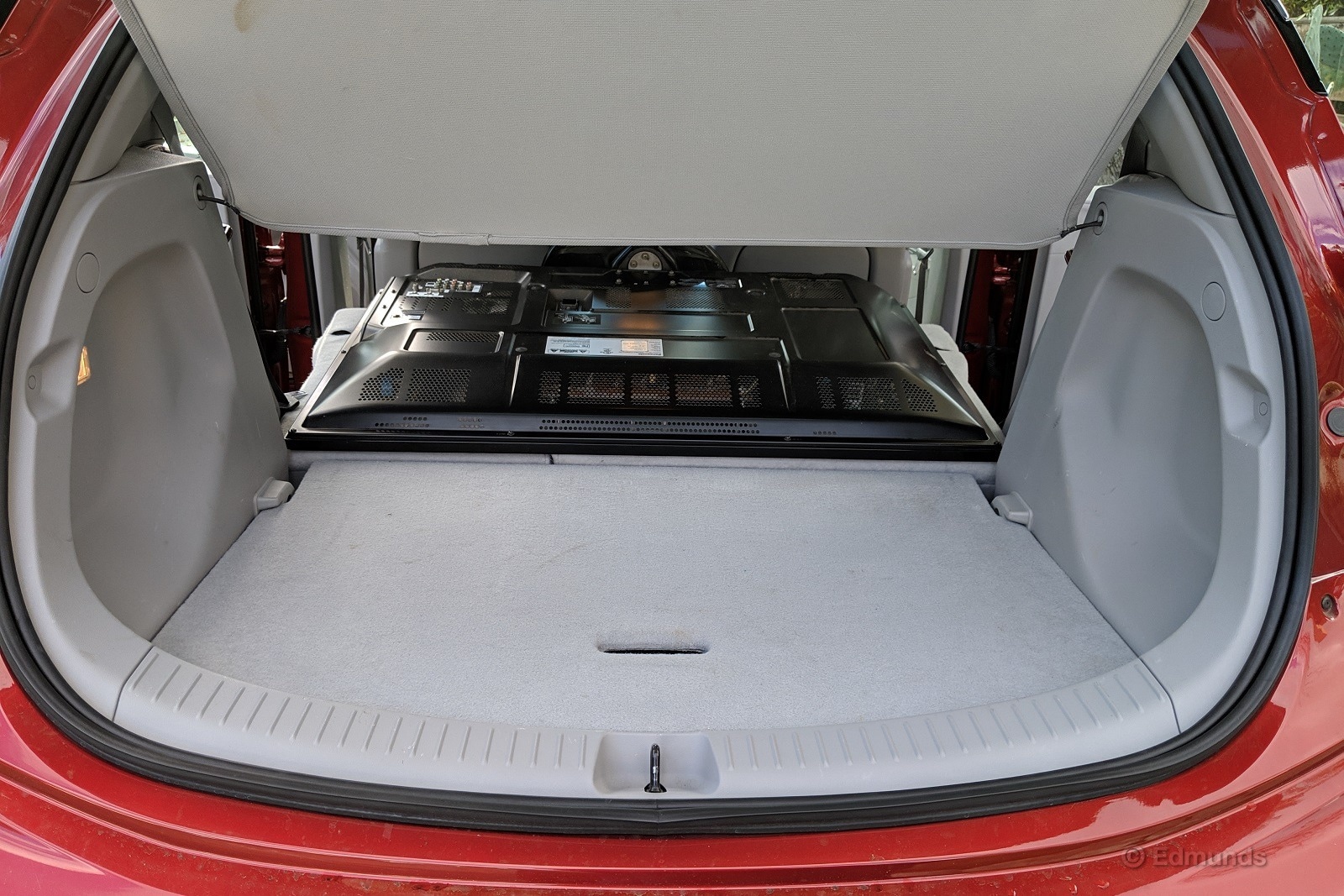
"The Bolt has this handy little slot in the center console, but my husband had to remove his iPhone case (his is a plus-size phone) to get his phone to fit into it. I actually used the nook to hold my keys, but it's deep and I have to dig down to retrieve them when I want them." — Kathleen Clonts, copy chief
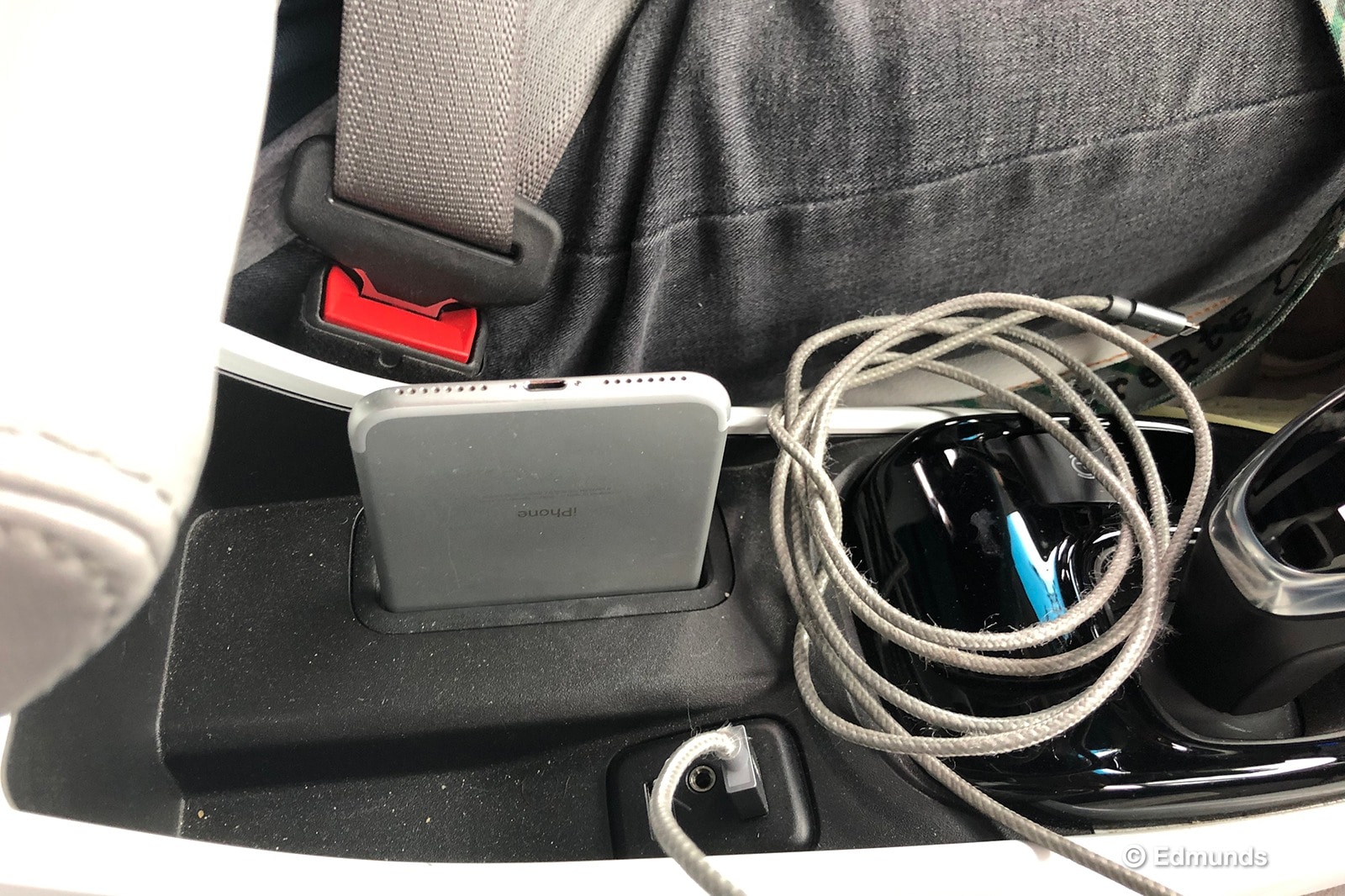
Miscellaneous
"I don't think the Bolt is particularly good-looking, but it caught my aunt's and uncle's eye the other day. They were really impressed by its looks and loved the Cajun Red paint color. Their only disappointment came in the realization that the Bolt was only available as an electric car. It's more tech than they care to take on, and they had hoped for a 'more traditional' gas version. I guess EVs still have a long way to go before gaining widespread acceptance." — Ron Montoya
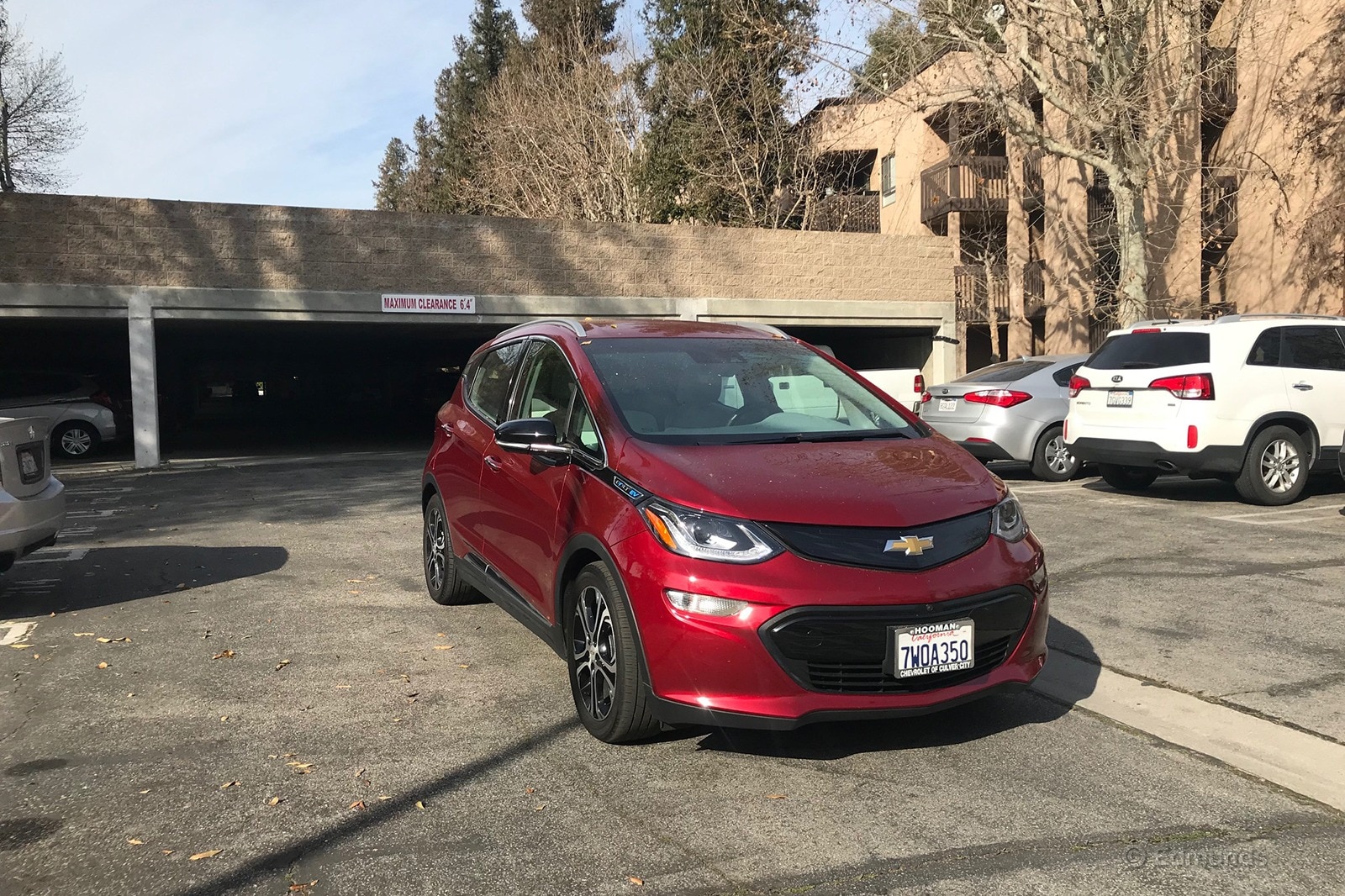
Monthly Update for April 2019
April at a Glance:
- We drove 1,211 miles in April
- The Bolt has thick windshield pillars
- Charge stations have become routine
- Not all Level 3 charging stations are created equal (womp, womp)
- The steering wheel clicks
Where Did We Drive It?
We average about 800 miles a month in the Bolt, but in April we pushed past the 1,000-mile mark. The additional 200 miles came courtesy of some range-testing that Senior Consumer Advice Editor Ron Montoya conducted. It wasn't hyper-mile testing but rather a mixture of day-to-day usability and some leisure travel. Stay tuned for a separate article on Ron's findings.
April's other activities included typical commuting duties and experimenting with different Level 3 charging stations.
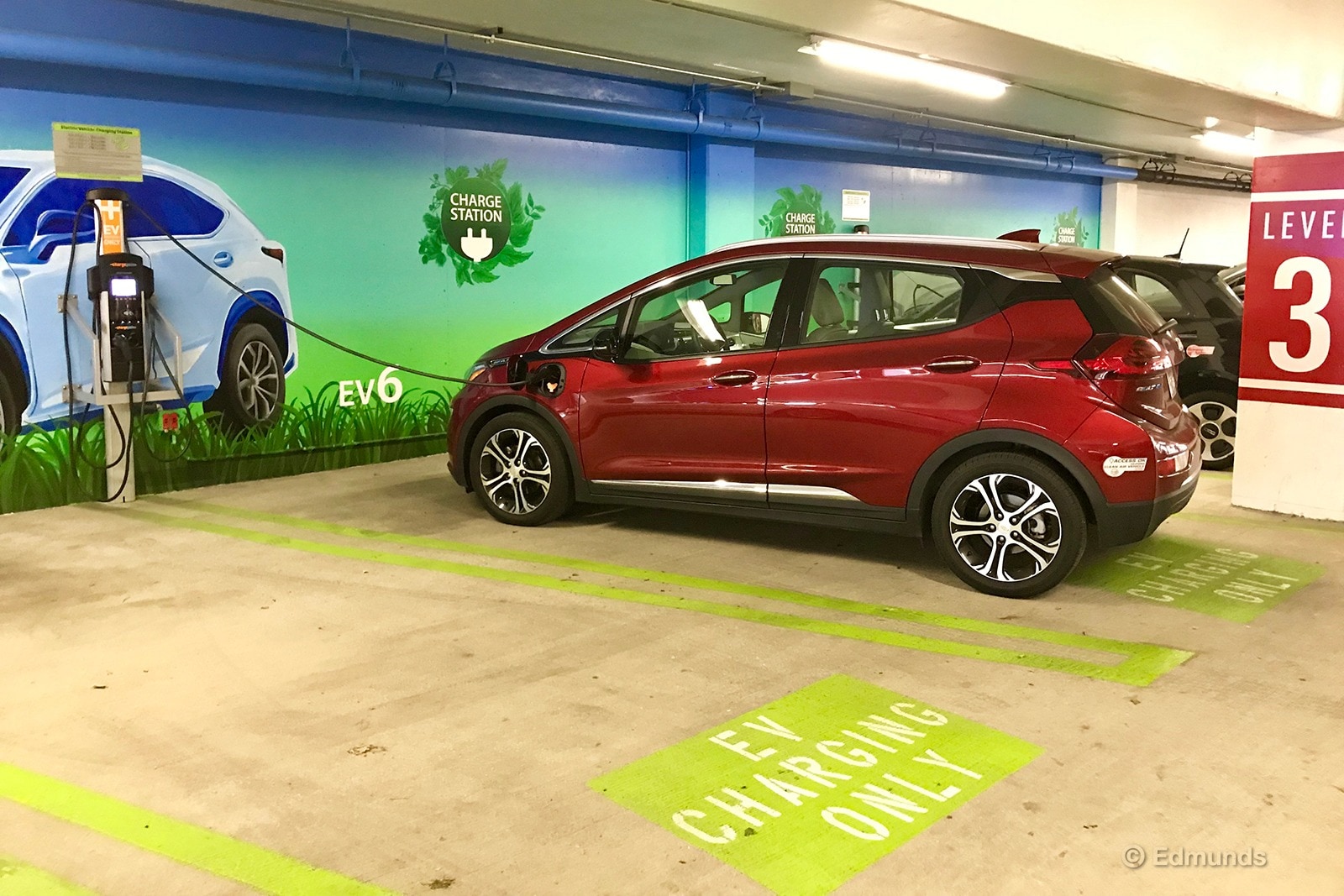
How Much Electricity Did It Use?
There was nothing out of the ordinary in April since the Bolt matched its typical energy consumption patterns.
Average lifetime mpg: 26.0 kWh/100 miles
EPA consumption rating: 28 kWh/100 miles combined
Best fill consumption: 18.3 kWh/100 miles (184.3 mpge)
Best range: 334.3 miles
Current odometer: 25,851 miles
Maintenance and Upkeep
None.
Logbook Highlights
MPG
"The selling point of a DC fast-charge or Level 3 charging station is that it will charge 80% of an EV's battery in about 30 minutes. But I've learned that not all Level 3 stations are the same. One particular charge station was located in a Volkswagen dealership. I brought in the Bolt with 27 miles of range remaining. The charge station shut off on its own after about 28 minutes of charging.
"I was disappointed to see that the charge only gave me 34 miles of range, or roughly 25% full — far from the 80% I was expecting. For some reason, this station is charging at about half the speed it should be." — Ron Montoya, senior consumer advice editor
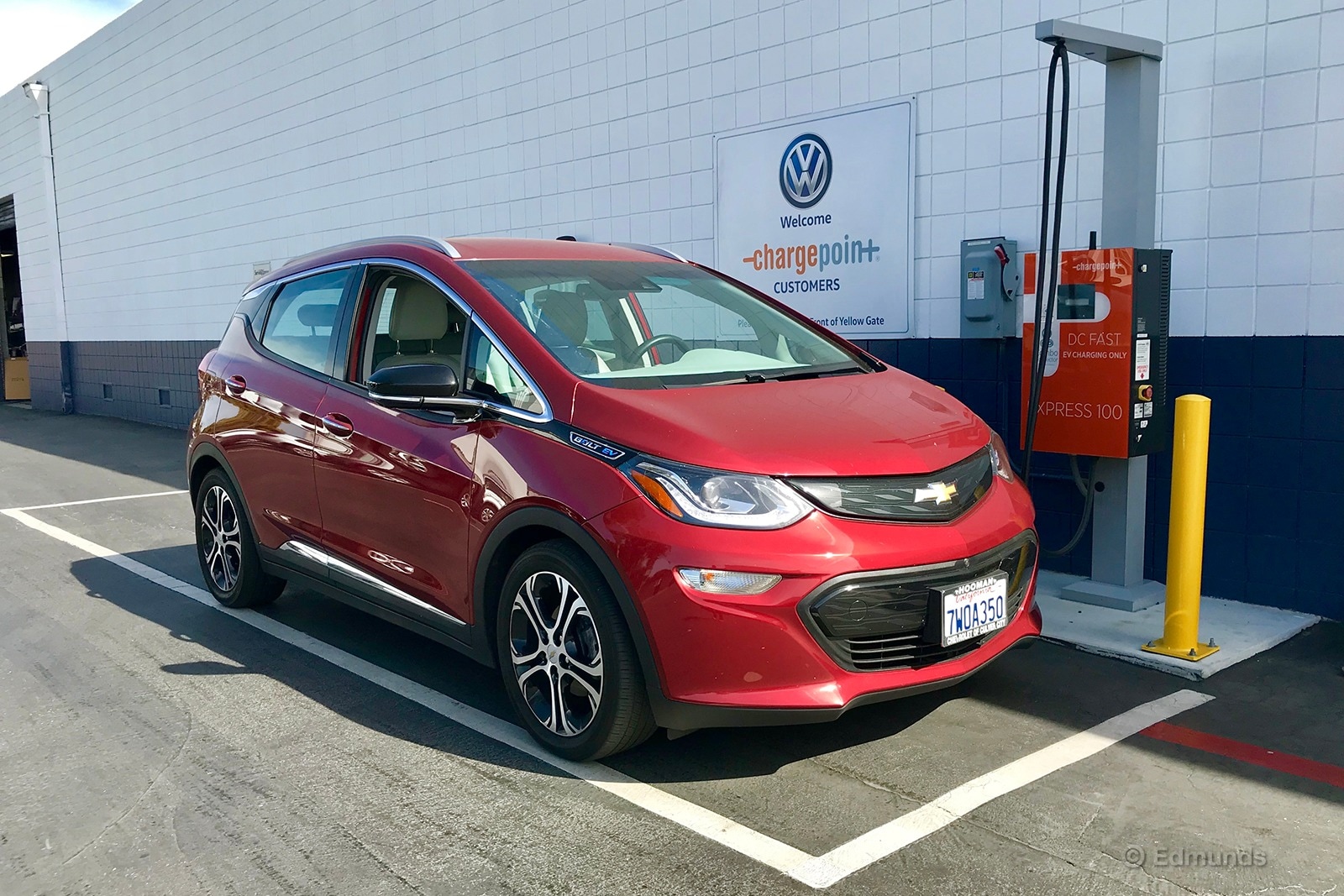
Interior
"The steering makes clicking sounds that seem to originate from where the steering wheel meets the trim on the column. It's most noticeable when cranking the wheel around when parking." — Jason Kavanagh, senior road test engineer
"The Bolt has some fairly thick A-pillars [windshield pillars]. There's a small porthole-style window in the front that helps a little with visibility but not much. The thick A-pillars make it hard to scan ahead on curvy roads or when a pedestrian is approaching from a certain angle. I've definitely had to pump the brakes when seeing a pedestrian emerge from this blind spot." — Ron Montoya
Miscellaneous
"You have to factor charge stations into your routine if you don't have a place to plug in at home. Using the ChargePoint app, I located a station in the parking lot of a Fry's Electronics store, near where I would be attending a friend's barbecue. It was about three-quarters of a mile from the barbecue, so I parked the car and went for a walk. I returned a few hours later, and the Bolt had enough charge to last the rest of my weekend." — Ron Montoya
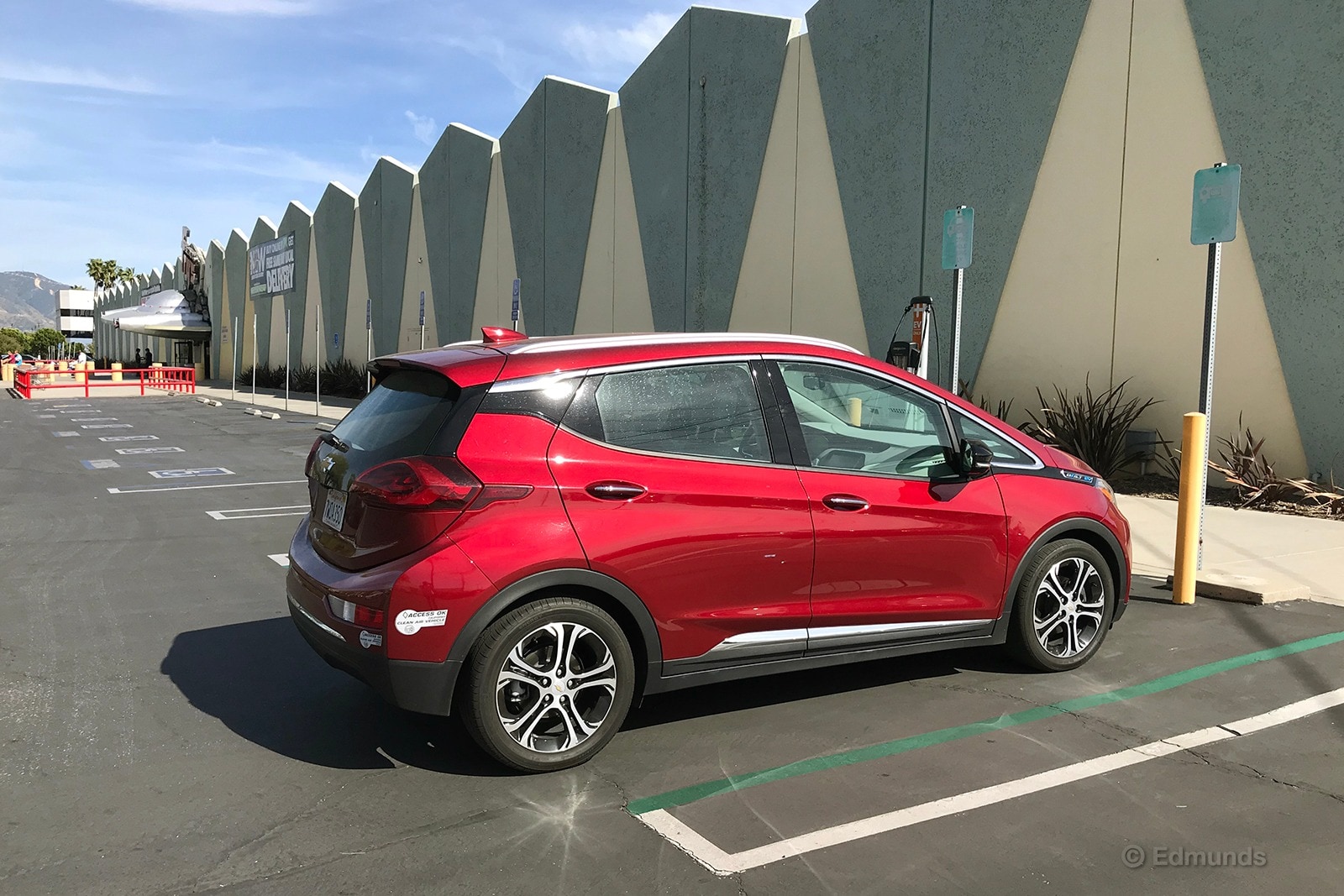
Technology
"I really like the Bolt's forward-facing camera. It really comes in handy when you're parallel parking, especially because it's hard to gauge where the nose of the car is from behind the wheel. I've often parked in a space thinking I was about to bump the car in front of me only to realize that I had plenty of room remaining." — Ron Montoya

Monthly Update for June 2019
May and June at a Long Glance:
• We drove 1,934 miles from May until June
• New records set!
• The Bolt encountered a very Tesla-esque moment
• OMG, the glare! THE GLAAAARE!!!
• Mother-in-law buys a Bolt
• Chevy continues obsession with plain hard plastics
• DIY vehicle maintenance: wiper fluid
Where Did We Drive It?
Our 2017 Chevrolet Bolt has been relegated to commuting duties after Senior Consumer Editor Ron Montoya conducted an EV ownership test over the month of April. You can read the Associated Press article here: "Can you own an electric car without a home charger?"
From May through June, we averaged 967 miles per month while doing commutes down to Orange County and running various errands around town. Lunch runs have been the most popular.
The Bolt remains a very good option when choosing an affordable EV, and it was a topic of conversation during these last couple of months as you'll read in our logbook highlights.

How Much Electricity Did It Use?
While this EV is over 2 years old and the lifetime average dropped down to 25.9 kWh/100 miles, it is not losing any range performance whatsoever. Over the last two months, we have been able to get a best fill consumption of 18 kWh/100 miles and net a best projected range of 355.3 miles (trip odometer + distance to empty)!
Average lifetime mpg: 25.9 kWh/100 miles
EPA consumption rating: 28 kWh/100 miles combined
Best fill consumption: 18 kWh/100 miles (187.4 mpge)
Best range: 334.3 miles
Current odometer: 27,785 miles
Maintenance and Upkeep
We topped off the windshield wiper fluid.
Logbook Highlights
Technology
"Everything seemed normal when I backed the Bolt out of the driveway. And then I realized that the backup camera hadn't come on. It was stuck on the audio screen, but there was no music and the volume didn't do anything. I couldn't turn on the AC either. Basically, the touchscreen was frozen.
"I got in and out of the car, turned it on and off, and locked and unlocked it in an attempt to reset the car. A do-over, if you will. Nope. In fact, the screen stayed fully lit even after I locked the car and walked away from it. So I went ahead and drove the 30 minutes to where I was going, hoping to wait it out. The car won this staring contest. The same Smashing Pumpkins song was still listed on the screen at the 30-minute mark — an interval I had to determine by looking at my phone because the clock hadn't budged since this all began.
"After I arrived, I was not crazy about leaving the car for six hours (I was going on a hike) with the screen on. So I made a call to someone who minds the fleet back at the office — or I tried to use the voice button to call up Siri. But that didn't work either. So I unplugged my phone from the USB port and called manually. No one had any advice. This issue was a new one.
"Google came to my rescue. I found a thread about this, and the advice was easy: Hold the home and fast-forward buttons down together until the screen resets. That took about 10 seconds, and all was well as if nothing ever happened. As I did this, I got this déjà vu feeling that I might have done this before about 18 months ago. Or maybe that was our Tesla Model 3 — that one (and the S and X before it) needs the full reboot treatment about every other time I drive it." — Dan Edmunds, director of vehicle testing
Interior
"Even though this wasn't my first time driving the Bolt, it was the first time I noticed how much glare reflected off the dash onto the front windshield. Maybe it was the perfect time of the year where the sun lines up just right with my direction of travel, but I found it nearly impossible to see into shady parts of the road. Thankfully, my polarized sunglasses cut the glare, and those should be a must-have if you own a Bolt." — Calvin Kim, road test engineer
"I always bring up the Bolt with anyone who's shopping for an EV, because its combination of range and performance for the price is just hard to beat. But, man, there's some cheapness on display when you get inside. I love the crisp graphics on both display screens, but that's where the love stops. The rest of the cabin is a study in hard plastics. It doesn't help that ours is trimmed in white and gray; I would definitely opt for the darker interior to help conceal stains and smudges. But would it have killed Chevy to spend a little more on the textures and graining in here? With richer materials, I'd have no reservations about recommending the Bolt to would-be Tesla Model 3 owners. As things stand, there's a big asterisk that I'd be remiss not to mention." — Josh Sadlier, senior manager of content strategy
Comfort
"I don't remember this happening when we first got our Bolt. So it could be degradation over time. Whatever the case, when I plopped into the Bolt's driver's seat for the first time in months, I said 'Ouch!' The best way I can describe the experience is that it's like there isn't enough padding in the seat bottom, so rather than plopping onto cushy foam, my left hip area hits the hard plastic perimeter of the seat. If I were an owner, I'm sure I'd figure out a different way of entering the car to guard against bruising. But that shouldn't be necessary, right? I've entered a lot of cars in my day, and I'm pretty sure this is the only one that made my hip hurt upon landing." — Josh Sadlier
Maintenance
"One of the benefits of driving an EV is fewer visits to the dealer. But this can have its own minor consequences. As such, our Bolt has run out of wiper fluid. They usually top you off with the stuff whenever you get an oil change. I didn't get a chance to refill it myself, but we'll need to plan a visit to an auto parts store soon." — Ron Montoya, senior consumer advice editor
Miscellaneous
"My mother-in-law was looking for a new car, and her use-case fit the bill for the Bolt. She drives between 60 to 100 miles a week, and though she's an apartment dweller, there are chargers located at many of the locations she frequents. Aside from the obvious benefits such as torque, and the Bolt's new infotainment and safety systems, some of her thoughts about EV ownership have changed. First, her friends were strongly against her getting an EV due to the charging situation. After the first month of struggling to find stations, she changed her charging style: Instead of waiting until the battery was nearly dead to find a spot, she started opportunity charging, that is, plugging into a charger whenever the vehicle was stopped. This change in behavior let her go for weeks at a time until the battery was drained.
"Secondly, she thought the Bolt's small size would be an issue. She's a grandmother of two and used to drive a compact crossover. The Bolt's roomy rear hatch, especially with the cargo floor removed, is tall and wide. Strollers, diaper bags and Costco runs have not proved to be an issue. Finally, there's the weather aspect. Even though she parks in an underground garage, the reduction in range in cold weather was more than she anticipated. Once her apartment complex finishes installing chargers in the garage, even this issue should be reduced as her car can be pre-conditioned and the battery kept warm from wall power.
"Overall, her experience has been resoundingly positive. And considering she's a first-time EV buyer among her peer group, many of them are learning from her experience. For her, the ability to avoid gas stations was worth the change in charging behavior." — Calvin Kim
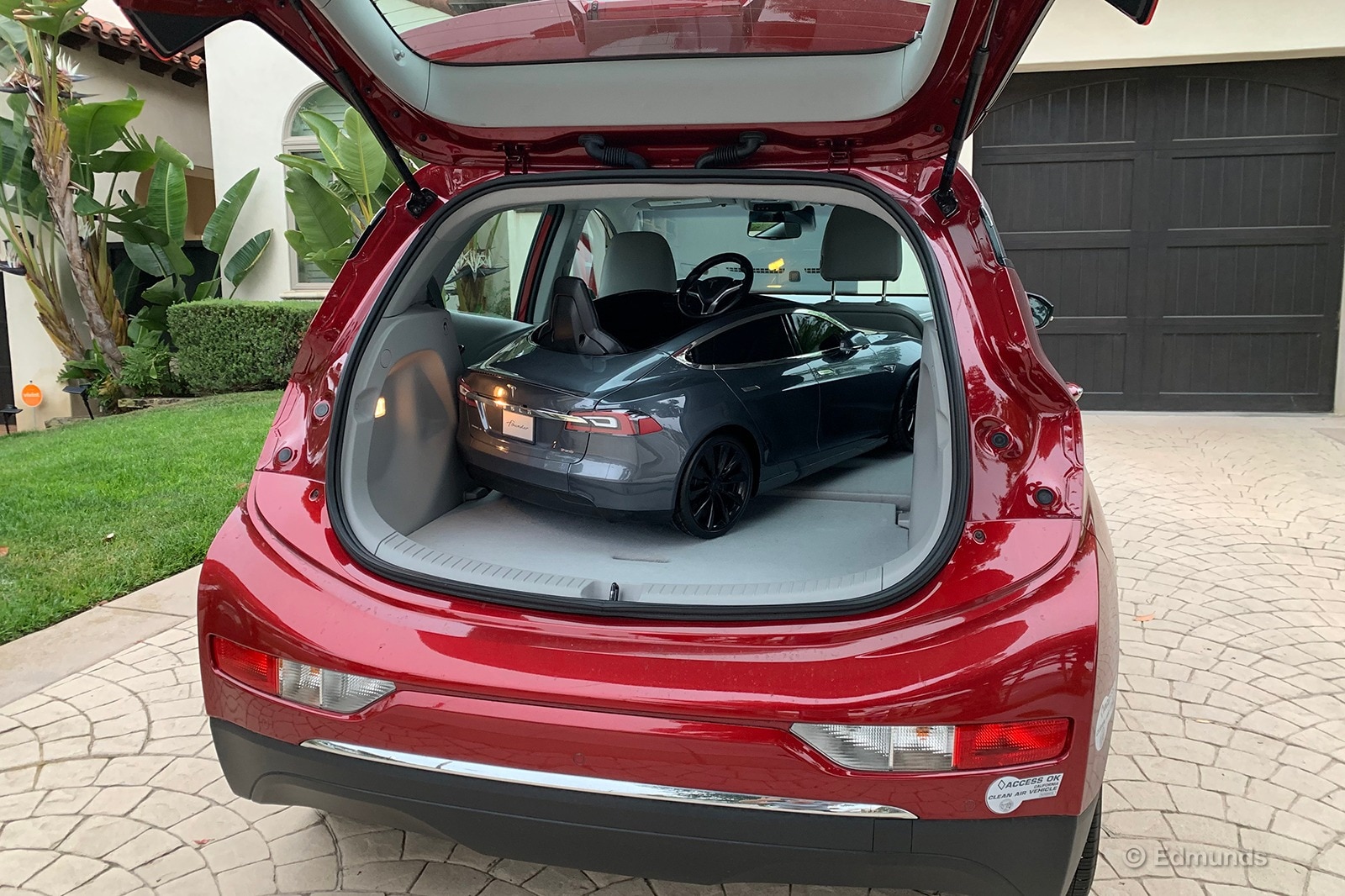
Monthly Update for July 2019
July at a Glance:
• We drove 1,885 miles in the month of July
• Lots of local road trips and errand runs
• Surprised about the seat upholstery
• Is range anxiety a real thing with the Bolt?
Where Did We Drive It?
The Bolt has been brought back to its usual daily-driver routine. It was used for a few longer local road trips — longer than 30 miles — during this time, but daily commutes dominated the overall use. The nearly 2,000-mile month of July is a rarity more than a norm.
How Much Electricity Did It Use?
Nothing has changed since our two milestones last month. The Bolt is as consistent as ever.
Average lifetime mpg: 25.9 kWh/100 miles
EPA consumption rating: 28 kWh/100 miles combined
Best fill consumption: 18 kWh/100 miles (187.4 mpge)
Best range: 334.3 miles
Current odometer: 29,670 miles
Maintenance and Upkeep
None.
Logbook Highlights
Utility
"It's easy to look at the Bolt's estimated range of 238 miles and think 'this isn't that much,' but it is. My own Mazda 3 has a small gas tank and I'm often refueling at 230 miles. Now, you'd never run it that low in the Bolt, but in theory, the 'fuel station' is your home, so you'd have more opportunities to charge. But even if you wanted to roll the dice and buy this car without a charger, you'd probably only have to charge it about once or twice a week for a few hours. I was able to go a long weekend, where I drove about 180 miles, and I still had an estimated 120 miles of range remaining.
"Range anxiety is exactly that: just anxiety. We make up this problem in our heads from some imagined emergency long trip that may never come to pass." — Ron Montoya, senior consumer advice editor
Interior
"The light gray leather seats in our Bolt have held up fairly well over 30,000 miles. There's no major stains or cracked parts of the leather. The floor mats, on the other hand, have seen better days. These are easier to replace than seats, so it's not too bad of a situation." — Ron Montoya
Monthly Update for August 2019
At a Glance:
• We drove 1,105 miles in August
• Long road trip up to Fresno
• More daily commuting
• Steering wheel click and clicks some more
• The pain with EV charging
• 2020 Chevrolet Bolt gets more range — we have different thoughts
Where Did We Drive It?
The long-term 2017 Chevrolet Bolt had its lowest miles recorded since April at 1,105. That's still up from the 846-mile average from the previous three months of January through March. The roughly 265-mile one-way trip to Fresno can account for a big chunk of that distance in one day of travel — even though that had its own snags, as you can read below.
From there, it's commuting duties! Yay for consistency!
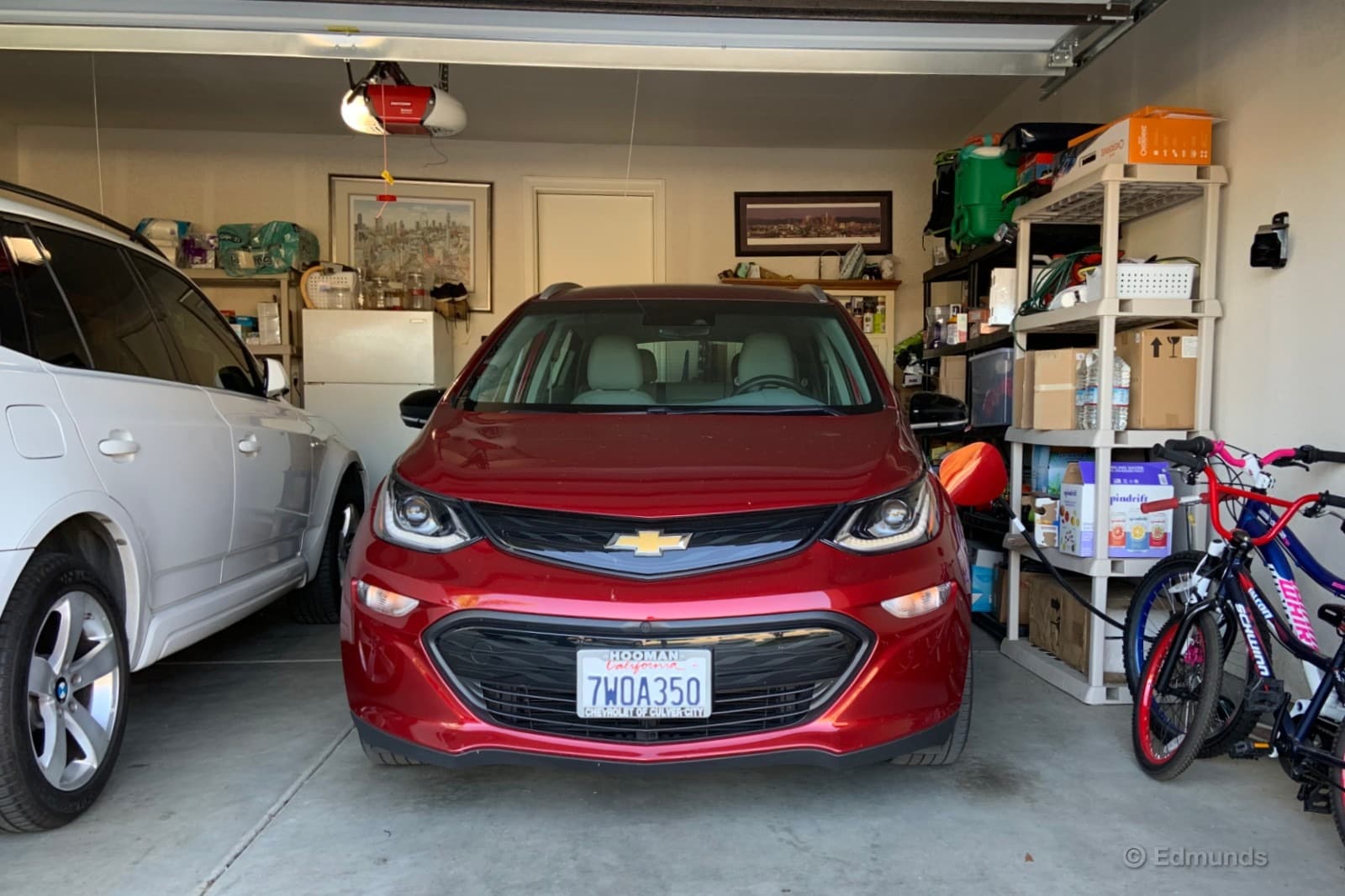
What Kind of Fuel Economy Did It Get?
Our average lifetime mpg keeps getting better. I know 0.1 kWh/100 miles doesn't seem like a lot, but that means we're using less energy per 100 miles of use. It has been much of the same for the Bolt — even with a long road trip to Fresno toward the end of the month. Keep charging forward, little Bolt.
Average lifetime mpg: 25.8 kWh/100 miles
EPA consumption rating: 28 kWh/100 miles combined
Best fill consumption: 18 kWh/100 miles (187.4 mpge)
Best range: 334.3 miles
Current odometer: 30,775 miles
Maintenance and Upkeep
None.
Logbook Highlights
Interior
"Chevrolet has announced that the 2020 Bolt is getting an increase in range to an estimated 259 miles. That's certainly welcome. But I'd guess that most of us at Edmunds would gladly keep the original 238-mile range if we could instead get some improvements in interior quality and seat comfort for 2020." — Brent Romans, senior editor
Performance
"I drove our Bolt from the Edmunds home office in Los Angeles to my home in Fresno, California. It's about 235 miles one way. In theory, our Bolt has just enough range to make it. But I've spent enough time with the car to know that open highway driving (at least in California with its 70-plus mph speeds) is fairly inefficient for an EV. As such, this trip requires a stop midway to recharge at a DC fast charger.
"Doing this can be a little dicey. Here's an example: I had planned my route to stop at a ChargePoint charger in Bakersfield. I've used this charger before, even though it's not very convenient. (It's about a 10-minute drive off the highway.) Alas, when I got there I realized the charger wasn't working. Argh! I hadn't bothered to check the ChargePoint app. If I had done that, I would have likely noticed the charger was down. But since I didn't, I had to sit there and figure out how to make it to another charger.
"The next closest ChargePoint station, according to the app's map, was about a 15-minute drive away. With about 50% battery left, I left the dead charger and drove to the next one. The location seemed a little odd because when I got there I realized I was right next to a Harley-Davidson dealership. Huh. It turned out that the dealership had just installed a charger to support Harley's new electric LiveWire bike. I went inside the dealership to ask about the charger's status and met the general manager. He said that they had just installed the charger, and it had never been used!
"Thankfully, they were cool with me using it. I plugged in and went inside to check out the bikes for about 20 minutes. After that, I got in the Bolt. It was then that I noticed that it wasn't charging very quickly. Most DC fast charging stations I've encountered in California are rated to provide 50 kW of power, though they usually put out a max of around 40 kW. This one at the Harley dealership was only providing about 17 kW, according to the Bolt's charging readout. Another 'argh!' It was going to take a long time to get enough juice to finish my drive.
"I decided to go to a third charging station, this time an EVgo-brand station in a Walmart parking lot, which was another 20 minutes away. Thankfully, I had enough driving range to make it there. When I arrived, one of the two fast charging stations was taken up by a Nissan Leaf. Fortunately, the other was free. But even then, it was tricky. By now it was late in the day, and the setting sun was washing out the station's touchscreen, which already seemed like it wasn't working all that great. I could barely see where to touch the screen to activate the charger. After a few minutes of trying to shield off the sun, I finally got the thing working.
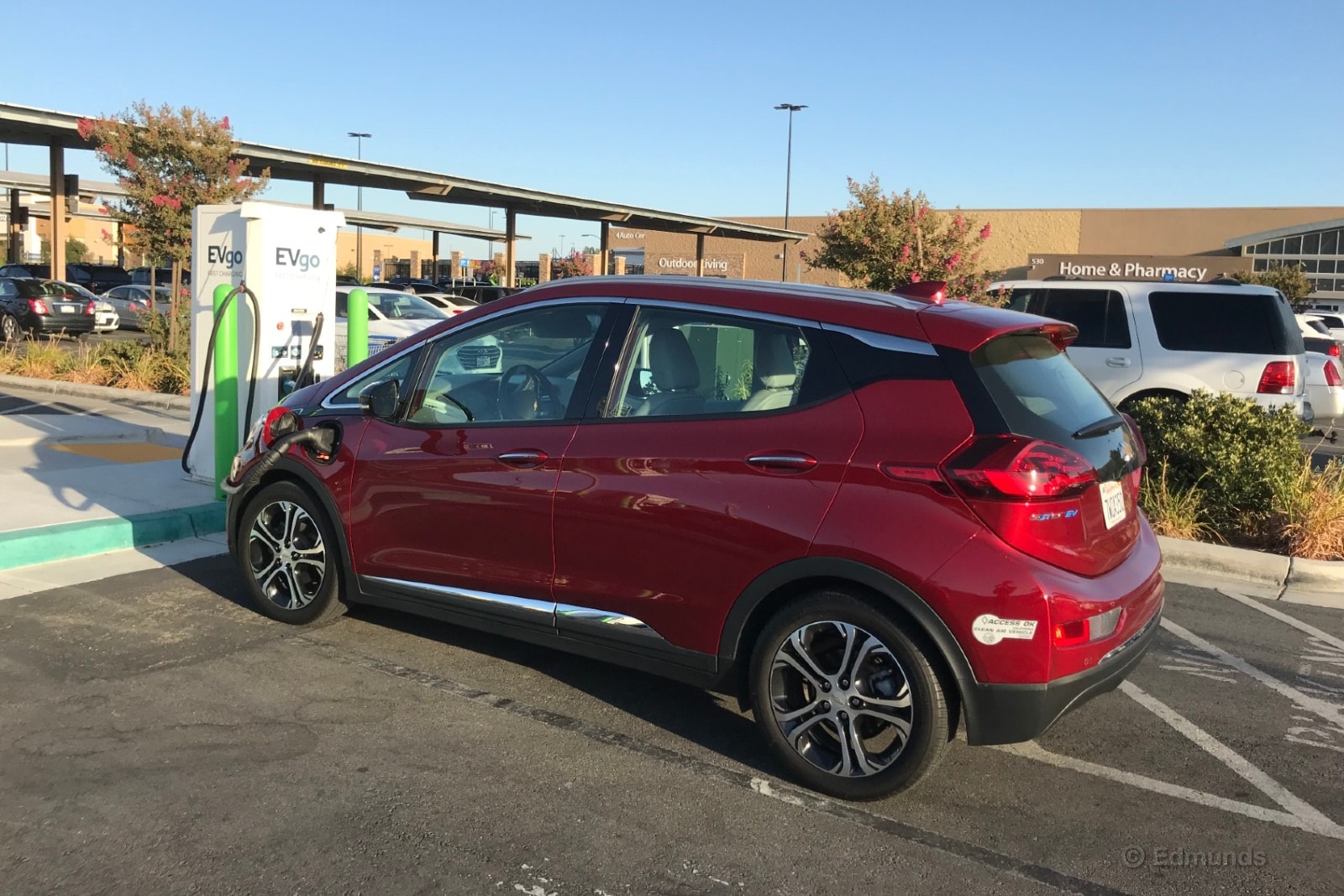
"Overall, it was just a big hassle. You'd never have these problems with a gas-powered car (barring some sort of significant power outage that rendered all the gas stations inoperable). It also points to Tesla's huge advantage with its Supercharger network.
"I really like EVs, and I think they're great for around-town driving. But taking long trips on unfamiliar routes requires faith and patience." — Brent Romans
Miscellaneous
"One of my coworkers wrote a comment a few months ago that our Bolt's steering wheel column makes an occasional clicking sound when turning the wheel. I definitely noticed this issue as well. I wouldn't call it annoying, but it does reduce my confidence a little in Chevy's workmanship." — Brent Romans
Monthly Update for September 2019
At a Glance:
• The Bolt went 1,001 miles in September
• Your run-of-the-mill daily commuting
• A pedestrian gets detected
• Took it on a Home Depot run
Where Did We Drive It?
Regular commuting duties aside, the Bolt did manage to go on a little Home Depot run to return some home flooring items.
What Kind of Fuel Economy Did It Get?
For "1001 Rabbit Tales," the Bolt merrily ran errands around town and commuted from the office to various humble abodes and back again.
Average lifetime mpg: 25.8 kWh/100 miles
EPA consumption rating: 28 kWh/100 miles combined
Best fill consumption: 18 kWh/100 miles (187.4 mpge)
Best range: 334.3 miles
Current odometer: 31,776 miles
Maintenance and Upkeep
None.
Logbook Highlights
Performance
"I was able to get the Bolt up to a good speed on an open stretch of highway (a rarity during L.A. rush hour), and the grooves really made the ride feel unstable." — Kathleen Clonts, copy chief
Technology
"I don't know how many times I have driven the Bolt, and I never noticed it had a pedestrian detection system until today. The car was moving slowly ahead at a congested light. And when a gentleman to the left of the intersection approached the car asking for money, I noticed a little red light of a person pop up on the dash. (The symbol is officially called the Pedestrian Ahead Indicator.) It's definitely not a place I'd normally look for a warning light, so you have to wonder about its effectiveness." — Kathleen Clonts
Utility
"I was getting some laminate floors installed in my home and needed to return some surplus items to the hardware store for a refund. I was able to fit three 50-pound bags of self-leveler, three long strips of molding, and some weatherproofing material, all in the back of the Bolt (see photo)." — Ron Montoya, senior consumer advice editor
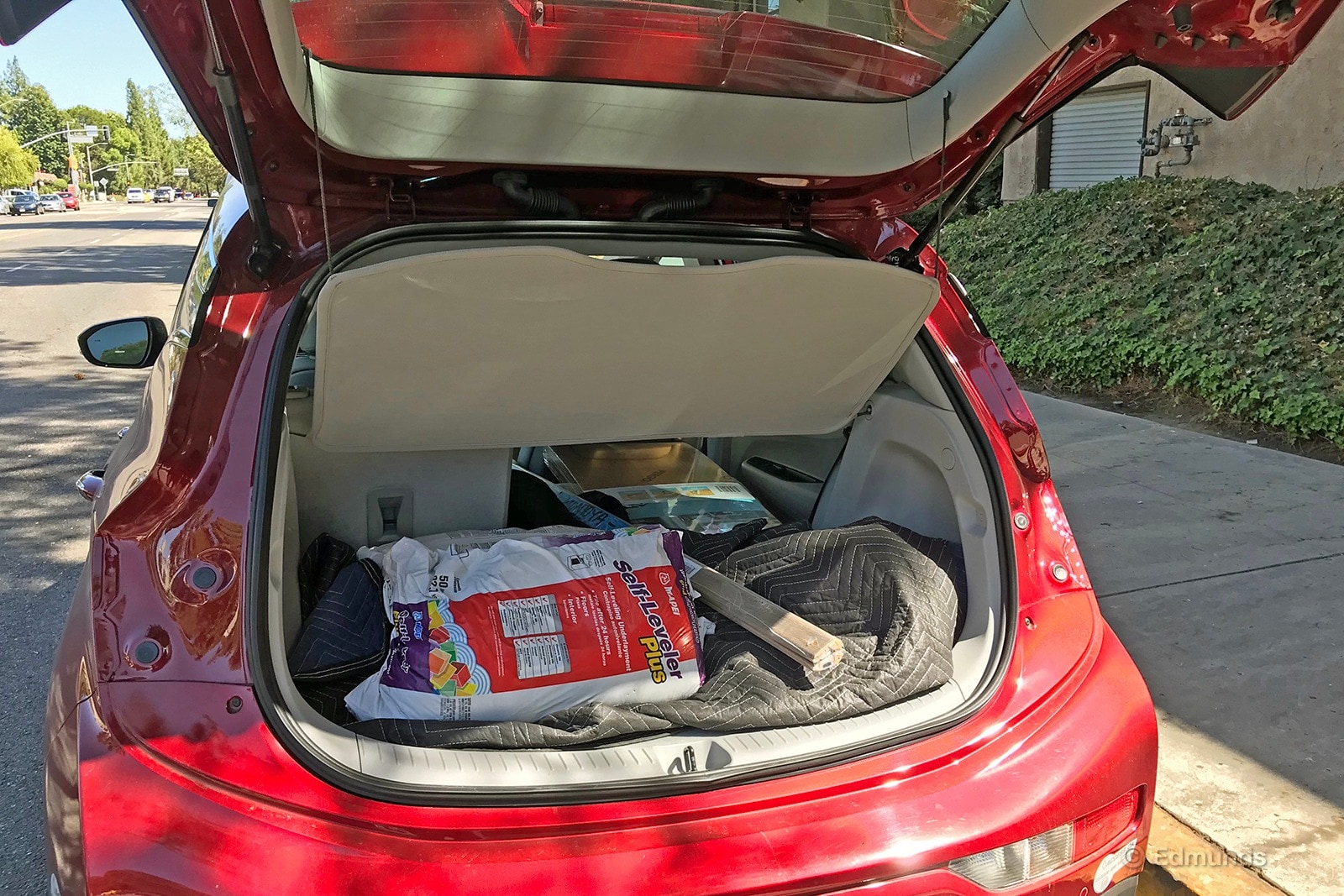
Miscellaneous
"Attention, Bolt owners, if you're looking for a sneaker to match the light ash gray/ceramic-colored interior, I believe I've stumbled across it. I was wearing my Nike Air Jordan 1 NYC to Paris sneakers and chuckled as I set foot inside. Nike calls the color 'light bone,' but it is a dead ringer for the Bolt's light ash gray (see photo)." — Ron Montoya
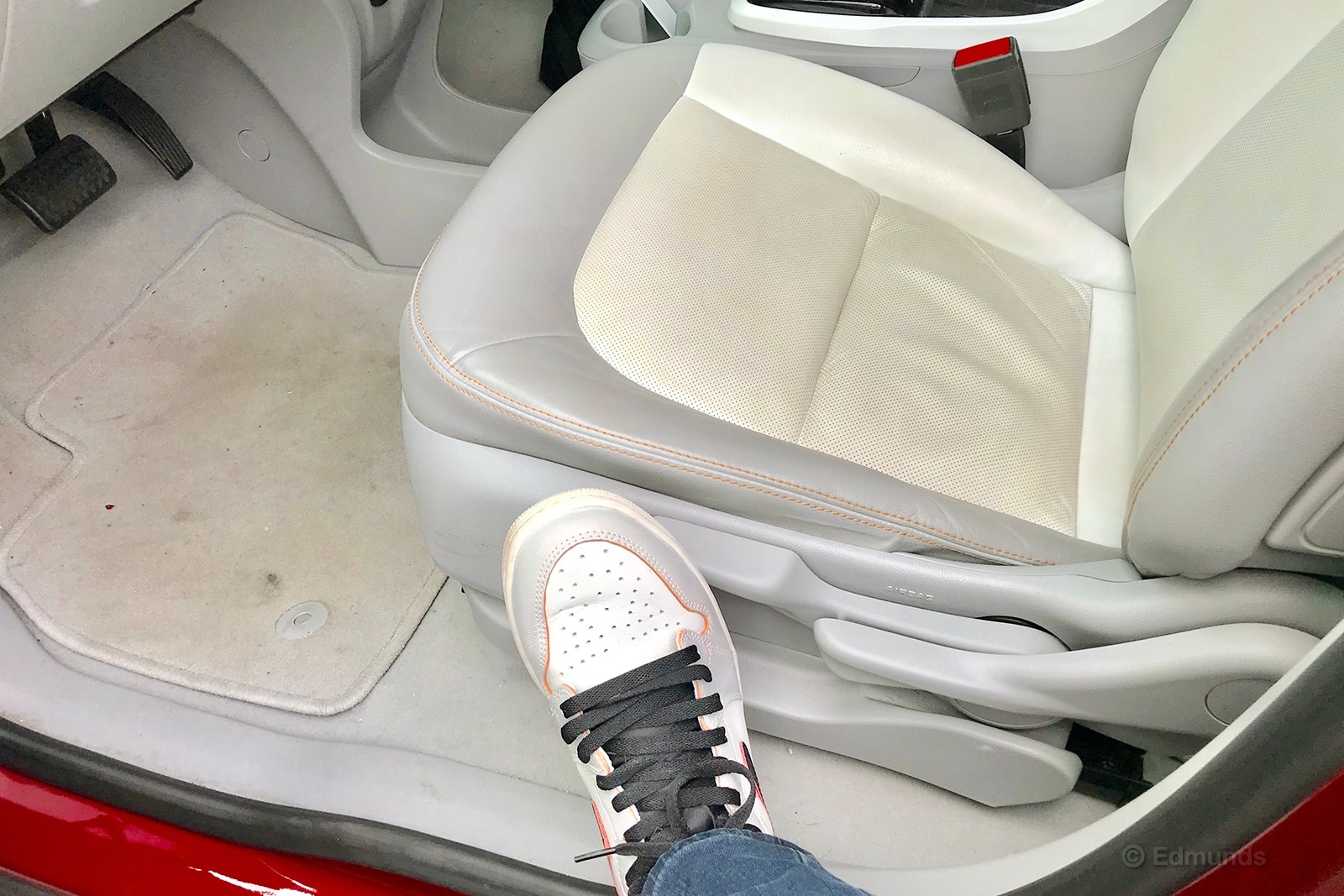
Wrap-Up
What We Got
We introduced our 2017 Chevrolet Bolt EV in February of that year. What lured us was GM's bold claim of "200-mile range at around $30,000." Touted as a long-range electric vehicle attainable by the masses, it was a compelling vehicle to add to our fleet. During this time, Tesla dominated the over 200-mile range marketplace, but you had to spend at least $60,000 to own one. We picked up a fully optioned Bolt Premier for $42,398, not including state and federal rebates.
What We Learned
The Bolt was in our test fleet almost as long as a U.S. presidential term. We averaged 11,314 miles per year and drove it as a daily commuter — which is essentially what it was meant to be. During this time, we learned the following:
- Range anxiety isn't a thing; we repeatedly exceeded its 238-mile EPA range.
- It works well as a commuter vehicle, especially with carpool stickers.
- Its self-sealing tires have limits and may not be in local tire shop inventory.
- You don't need a home charging station if you plan right.
- EVs can be finicky; pay attention to recalls or risk being stranded.
Read on for all the details!

Performance
"Handles really well on the twistier parts of Glendora Mountain Road, which is saying something. Small size and a very low center of mass make this one a hoot. Doesn't roll in turns much either, and it feels nimble in transitions." — Dan Edmunds, director of vehicle testing
"Plenty of pop off the line, even though the mileage fiend in me doesn't see the point of gratuitous acceleration if you like playing the range game, which I do. Still, it's there if you need it, and with so much range on tap, there's no reason to worry about pulling out to pass someone or getting decisive during a freeway merge." — Dan Edmunds
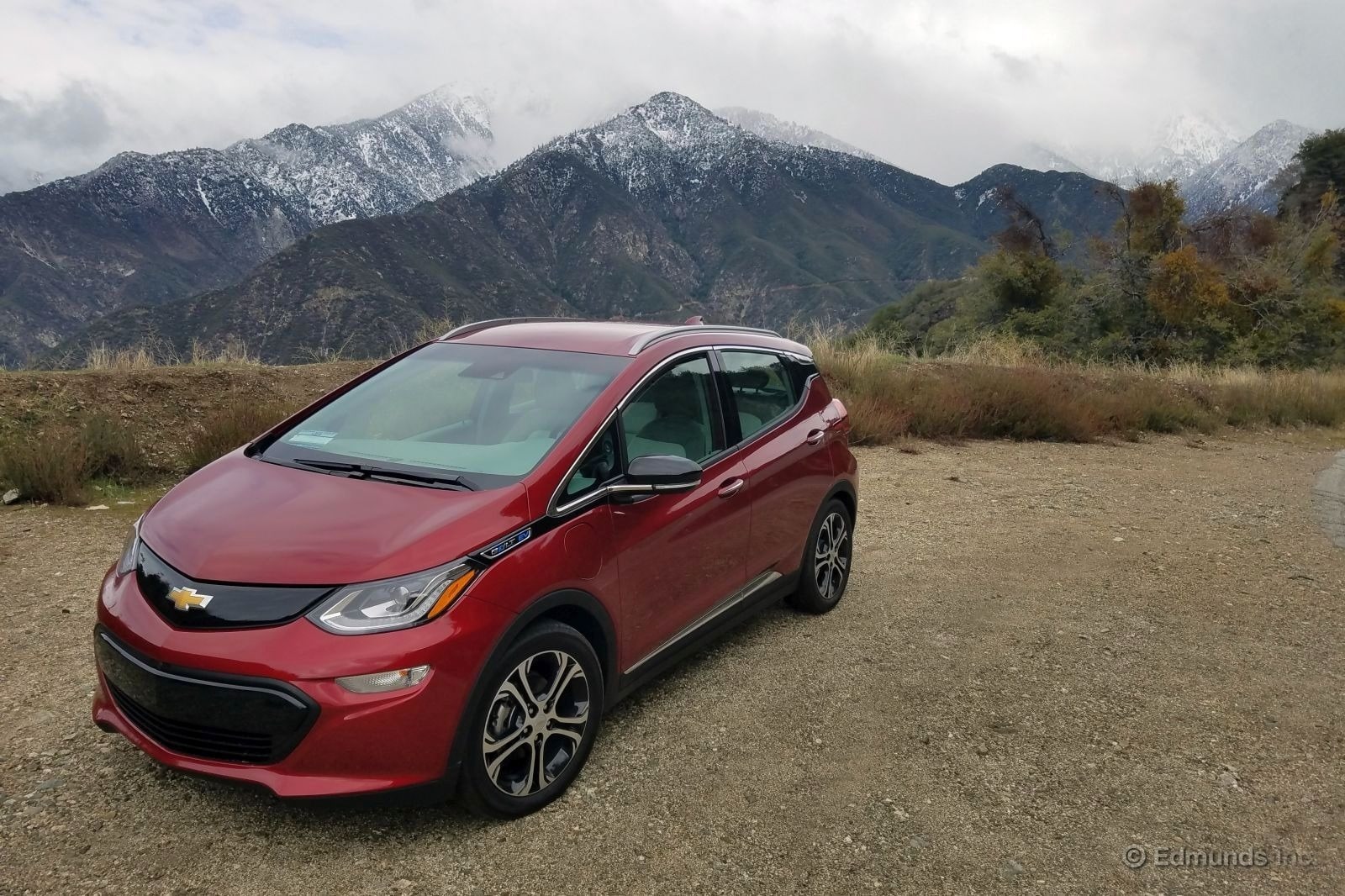
"I'm fairly convinced the Bolt is the best L.A. car you can buy. You've got range — range to drive from the Westside to Pasadena, down to the O.C. and back. You've also got excellent visibility thanks to a cute-ute-esque seating position, it's narrow and it has a good turning radius. Oh, plus you've got decent torque for city driving as well as ample highway-speed passing power. And, as the pièce de résistance, you get HOV lane access. Sold." — Kurt Niebuhr, road test editor
"As much as I find the Bolt an intensely uncomfortable place to be, it's quite good to drive. It drives, in fact, like the perfect small commuter car. No waiting for gear changes, and no worries about being in the power range of a tiny turbocharged motor means that negotiating traffic is a breeze. I also enjoy driving in L, which engages regenerative engine braking. After a little acclimation, I found I could do most of my driving with just my right foot." — Will Kaufman, associate editor
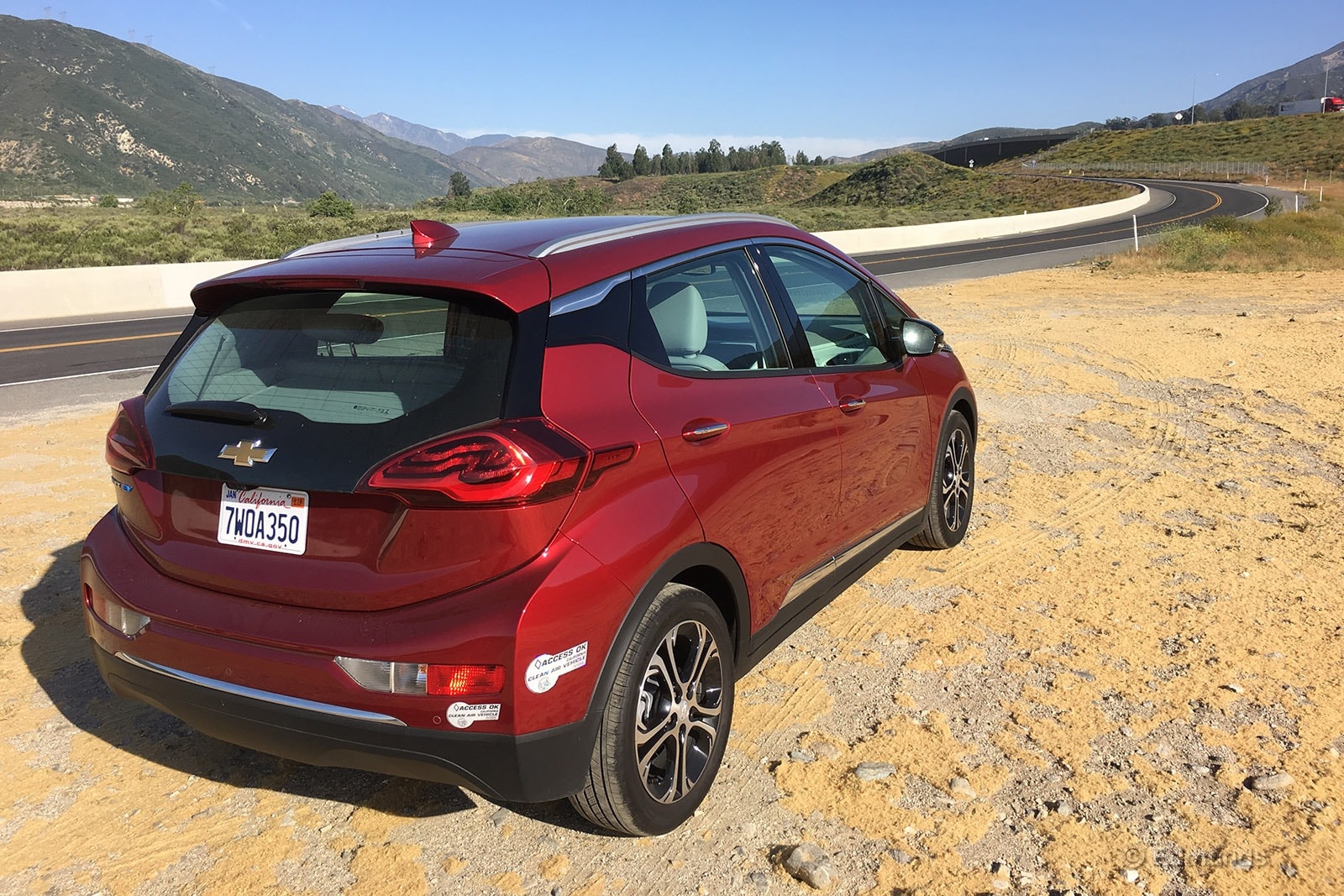
MPG
"The Bolt's extensive range can lull you into thinking it's just another car. After driving it around for much of the weekend, I forgot to top it off before I took it to the airport. I had enough range to get me there, but I wasn't sure there'd be enough to get back home. When I returned after a couple of days, the charge was the same as when I left it and looked to be enough to get home.
"I pedaled it lightly in heavy traffic and barely used any charge for the first part of my trip. Then traffic opened up and I started using more juice to keep up. I was a few miles from home, on surface streets, when the range meter changed from '18 miles' to 'Low' and switched to a 'Reduced Propulsion' mode. About a mile from home, the range meter starting flashing 'Low.'
"I made it home and stuck the Bolt on my Level 2 charger. It took 10 hours and 25 minutes to fill the battery. The total trip on the previous charge was 248.6 miles. Not bad, considering that most of the time I drove the Bolt like any other car. I learned that it pays to keep it topped off and that high speeds are the enemy when you're trying to conserve power. I'm sure it had more juice left than I thought, but I was glad to make it home when I did." — Ed Hellwig, senior editor
"Left the office with 189 miles of range. Made it home — 60 miles away — with 183 miles remaining. Drove it in L with max regen, no air conditioning. And granted, it was two hours of freeway travel with plenty of long spells crawling at 15-20 mph. At one point, the meter was predicting 205 miles of range. Good testament to the Bolt's slick powers of regeneration." — Dan Frio, reviews editor
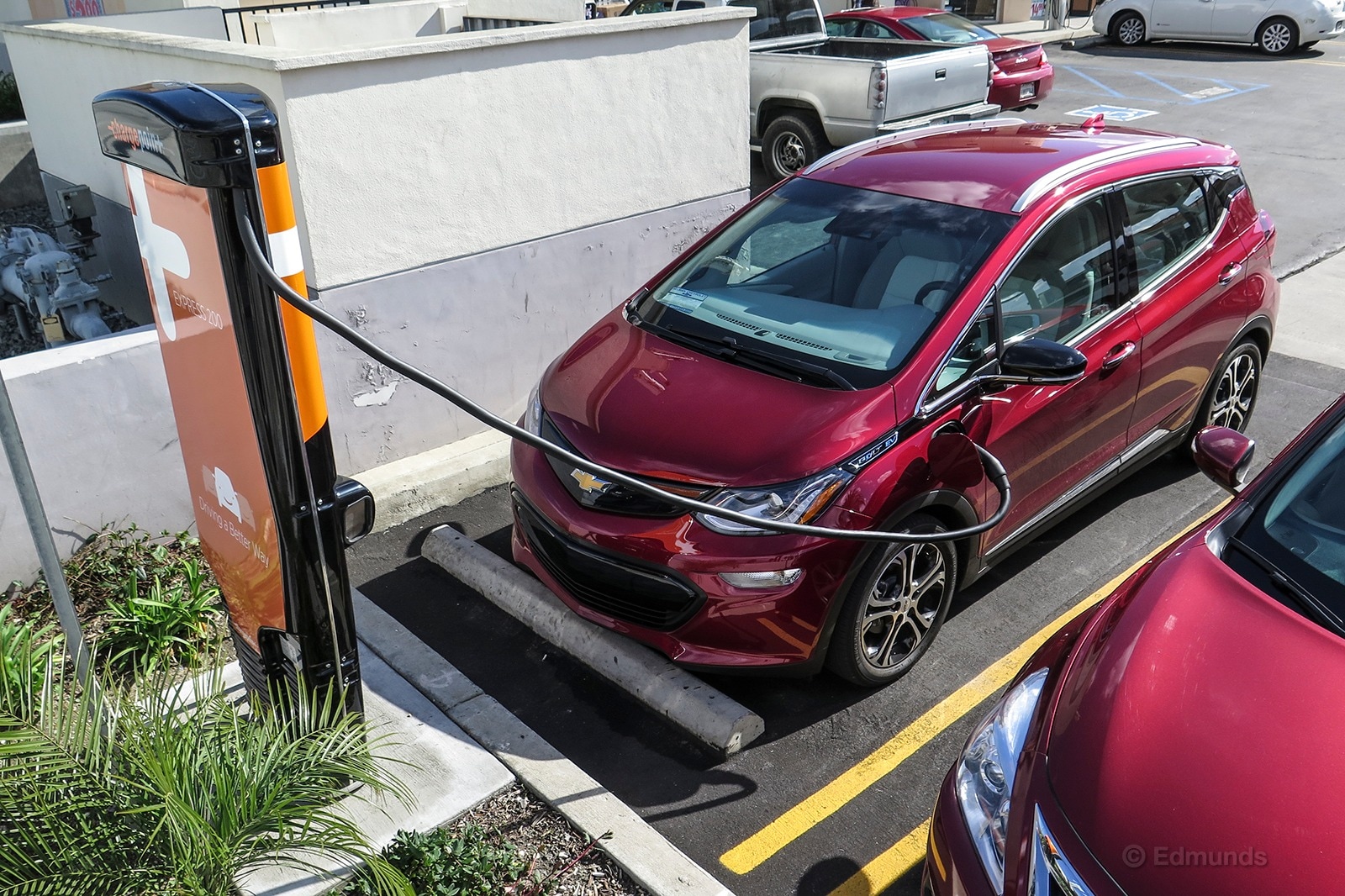
"Once again, I unintentionally pushed our Bolt to its limits. After a couple runs home and back, the range fell to almost nothing. It was hard to tell exactly how low since the range display switches to read 'low' instead of showing an estimate of how many miles of juice remain. It also went into reduced power mode in order to further conserve energy. By the time I got that warning I was close to home, so I was able to nurse it around town to drain it down as much as I could.
"When I finally parked it at my home charging station, it had gone 322 miles on a single charge. Not bad for a car rated at 238 miles per charge. Even more impressive was the fact that I didn't really try very hard to get that many miles out of it. I spent plenty of time in traffic, which helped, but there were a few sections that I was moving along at 65-70 mph as well. No matter how you look at it, 322 miles out of a Bolt is pretty impressive." — Ed Hellwig
"It's Friday afternoon at 4:45 p.m. and I'm merging onto the freeway. I'm not alone. This 40-mile commute home will ultimately suck two-and-a-half hours of life from me, but it's going to earn me some EV street cred. Everybody needs that. I left our parking garage with the Bolt's meter showing 271 miles of range. When I pulled into my driveway, it still showed 271 miles. Thank you to regenerative braking, everyone on the 405 freeway and the Academy for making this accomplishment possible. I've lost my mind." — Mike Schmidt, senior manager, vehicle testing
"I drove our Bolt from the Edmunds home office in Los Angeles to my home in Fresno, California. It's about 235 miles one way. In theory, our Bolt has just enough range to make it. But I've spent enough time with the car to know that open highway driving (at least in California with its 70-plus mph speeds) is fairly inefficient for an EV. As such, this trip requires a stop midway to recharge at a DC fast charger.
"Doing this can be a little dicey. Here's an example: I had planned my route to stop at a ChargePoint charger in Bakersfield. I've used this charger before, even though it's not very convenient. (It's about a 10-minute drive off the highway.) Alas, when I got there I realized the charger wasn't working. Argh! I hadn't bothered to check the ChargePoint app. If I had done that, I would have likely noticed the charger was down. But since I didn't, I had to sit there and figure out how to make it to another charger.
"The next closest ChargePoint station, according to the app's map, was about a 15-minute drive away. With about 50% battery left, I left the dead charger and drove to the next one. The location seemed a little odd because when I got there I realized I was right next to a Harley-Davidson dealership. Huh. It turned out that the dealership had just installed a charger to support Harley's new electric LiveWire bike. I went inside the dealership to ask about the charger's status and met the general manager. He said that they had just installed the charger, and it had never been used!
"Thankfully, they were cool with me using it. I plugged in and went inside to check out the bikes for about 20 minutes. After that, I got in the Bolt. It was then that I noticed that it wasn't charging very quickly. Most DC fast charging stations I've encountered in California are rated to provide 50 kW of power, though they usually put out a max of around 40 kW. This one at the Harley dealership was only providing about 17 kW, according to the Bolt's charging readout. Another 'argh!' It was going to take a long time to get enough juice to finish my drive.
"I decided to go to a third charging station, this time an EVgo-brand station in a Walmart parking lot, which was another 20 minutes away. Thankfully, I had enough driving range to make it there. When I arrived, one of the two fast charging stations was taken up by a Nissan Leaf. Fortunately, the other was free. But even then, it was tricky. By now it was late in the day, and the setting sun was washing out the station's touchscreen, which already seemed like it wasn't working all that great. I could barely see where to touch the screen to activate the charger. After a few minutes of trying to shield off the sun, I finally got the thing working.
"Overall, it was just a big hassle. You'd never have these problems with a gas-powered car (barring some sort of significant power outage that rendered all the gas stations inoperable). It also points to Tesla's huge advantage with its Supercharger network.
"I really like EVs, and I think they're great for around-town driving. But taking long trips on unfamiliar routes requires faith and patience." — Brent Romans
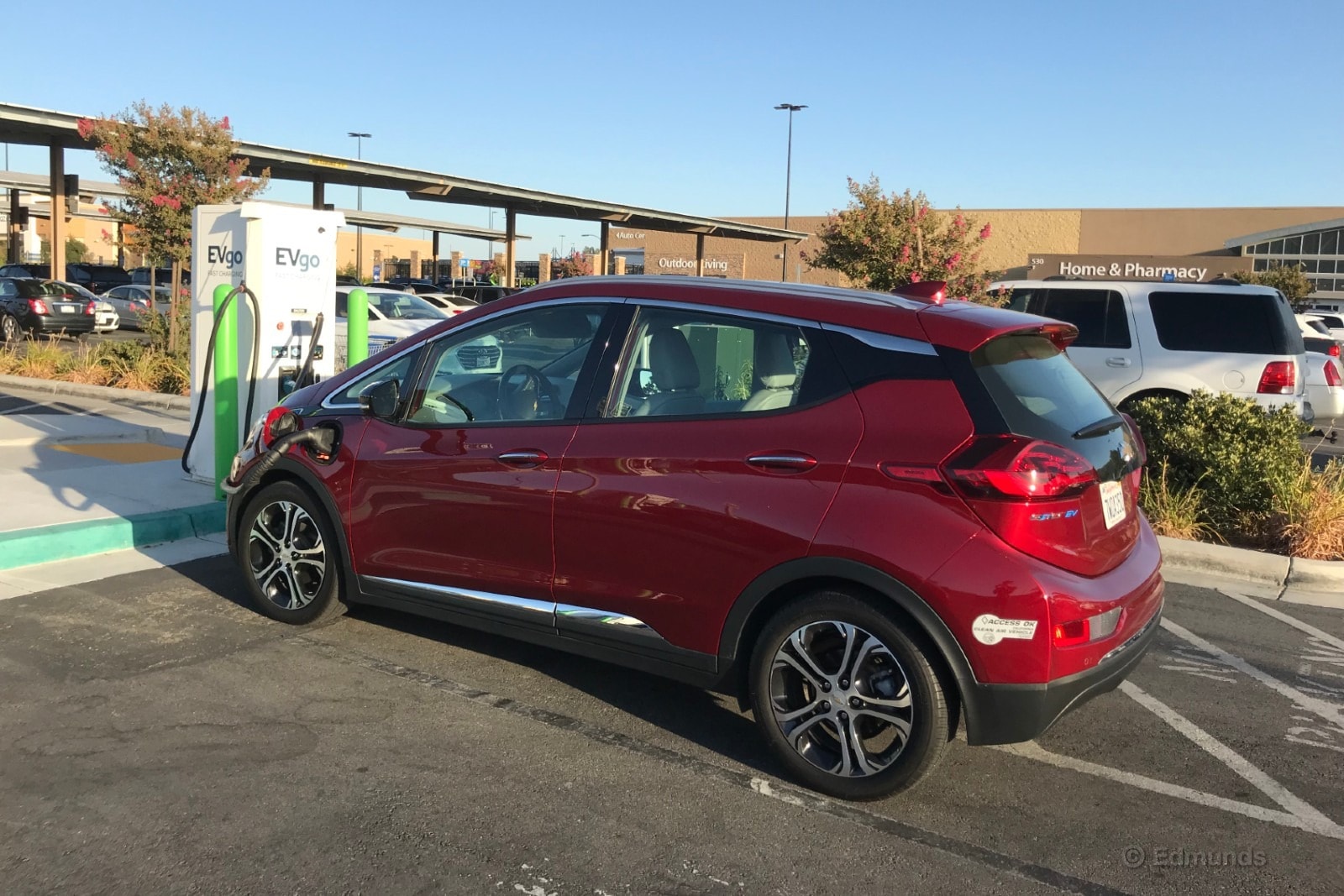
Comfort
"My father and my brother are both 6 feet tall. At 5-foot-9, I got the short end of the bargain. I did make them sit one behind the other recently in our long-term Bolt, just to see if they'd fit. Sure enough, there was sufficient legroom and headroom for both of them. The Bolt has a tall cabin and a low floor, so no problem." — Travis Langness, automotive editor
"First time driving the Bolt and I was pleasantly surprised. It has a refined ride quality that you don't often get from eco-minded cars. Hard, skinny tires designed for optimum mileage are usually the culprit, yet the Bolt feels very compliant on the highway. I also like the feel of the driver seat, although I can see some people having an issue with the overall seating position." — Ed Hellwig
"These might be the least comfortable seats I can remember sitting in. They're way too narrow, and the back is shaped for a much shorter person than me. In addition, the padding is very thin. The combination of wrong shape and thin padding meant that the hard plastic was giving me intense sore spots. I really cannot remember ever being less physically comfortable in a driver seat, which is insane because the seats in the Volt are perfectly comfortable.
"As with the i3, the Volt offers generous amounts of glass ... and no extendable visor. The left side of my face felt like it was going to melt à la the Gestapo agent in Indiana Jones. This is insane because the Volt has a very useful and functional extendable visor." — Will Kaufman
"The seatback frames have lost their padding. Most of the bolstering around your ribs and shoulders is simply leather-wrapped metal, so turning to look over your shoulder when backing up smarts. I guess they really want you to use the backup camera. Oh, and GM needs a new seat supplier." — Kurt Niebuhr
Cargo Space/Utility
"I had to take our two Labs to the groomers. They both hopped right in, and there was enough room to close the hatch on them with the rear seats up. They'd have run amok if I'd folded the seats down, and they're crate-trained, so they were more than happy back there for a five-minute ride." — Dan Edmunds

"LATCH child seat connections are hard to access, but you don't do that frequently, so it's not that big a deal. My large rear-facing car seat fits well enough, though the passenger seat needs to come forward. Wide door opening to get the seat in and a nice high rear seat so you don't need to stoop." — Mike Magrath, content strategist
"I've noted before that the Bolt has a very usable cargo area, but I think it's worth noting again given its size. This is a small car in terms of footprint, but it's able to swallow cargo very easily and without much moving of seats. In this case, I moved the cargo floor to its lowest position so I could load a few things and keep them snug while I continued with a few more errands. Much like the minivans that offer this same feature, the dropped load floor does a great job of keeping things from sliding around. And if you don't need the extra space, the floorboard can be repositioned for a completely flat floorboard. It makes the Bolt quite a bit more practical compared to your average hatchback." — Ed Hellwig
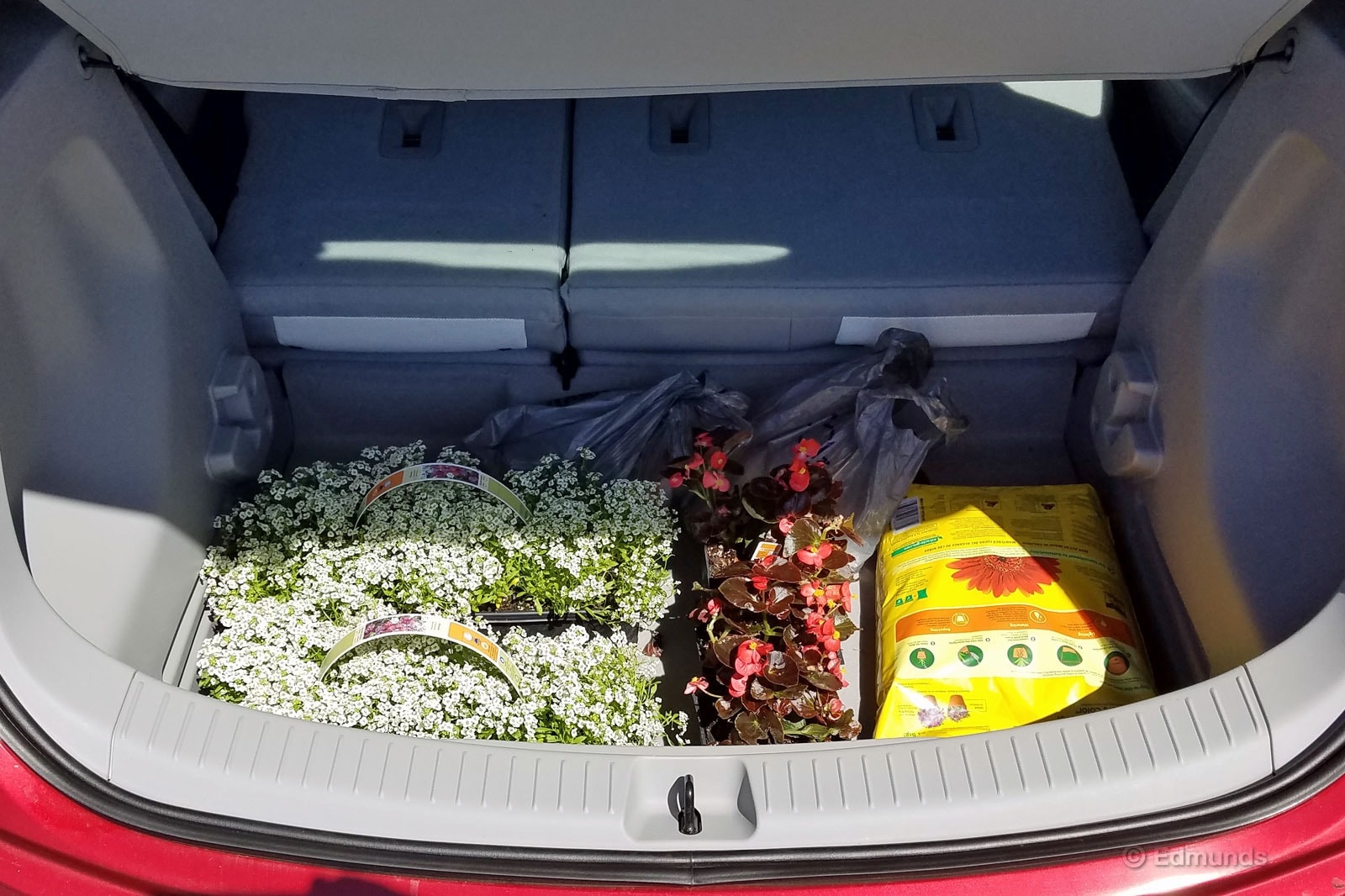
Interior
"After several consecutive days of above-average temperatures, I've had to lean on the Bolt's A/C system more so than in the past several months. It's a fully automatic system, so it's just a matter of setting the temperature and letting it do its thing. In more than one instance, the Bolt was sitting outside in direct sun for several hours so the interior was pretty hot. I was pretty impressed how quickly it was able to cool down the cabin once I started driving. I'd say it took maybe 2-3 minutes before it was steadily blowing cold after start-up. When set at 71 degrees, it kept the fan on one of the higher speeds until I manually turned it down to reduce the noise level.
"Rear-seat passengers said they were comfortable although there are no rear seat vents. Overall, the system works well, which shouldn't come as much of a surprise. GM has always had solid air-conditioning systems, but for some reason I'm always curious how well they'll work in an electric car versus a system running off the engine. In this case, the engineers of the Bolt managed to build a very capable system." — Ed Hellwig
"The Bolt's interior quality is a major letdown. While it's not as bad as what GM was putting out in the dark days of the late '90s and early 2000s, the interior is still plastic-fantastic. Nothing is soft-touch other than the rubbery armrests. One of the plastic panels on our car's dashboard is misaligned and is popping up. The center console bin isn't lined, so anything you put in there rattles around. Plus, our test car's light gray/white color scheme is just the worst. The thin carpeting looks like mouse fur and dirties easily, and the white panel pieces reflect a lot of sunlight." — Brent Romans, senior automotive editor
"The Bolt's been in our fleet for 18 months [since February 2017], but I recently drove it for the first time. I have to admit my first impression upon opening the driver's door was 'rental car.' It's looking pretty tired for a vehicle with less than 20,000 miles. The fabric on the driver's seat is well-worn with some evident stretching. The mats were dirty and spotted. Maybe we've been extra hard on this car, but we spent just north of $42,000 on the Bolt. And you'd expect a car that costs that much to hold up a little better. I can't help to compare it to our 2018 Nissan Leaf, which admittedly has way fewer miles on the odometer (less than 5,000) but retails for $38,510 before tax incentives. It has sturdy and comfortable leather seats that look well-crafted, and it makes me feel like I'm getting into a $40,000 car." — Kathleen Clonts, copy chief
Audio and Technology
"Connecting an iPhone to Bluetooth was easy and playback was OK. Trouble was, each time I turned the car off, the audio defaulted to FM radio when I turned it back on. Bluetooth eventually connects, but not quickly enough. And if I'm listening to Audible over Bluetooth, why does it show me FM radio favorites? And why does that module take up half the screen?" — Mike Magrath
"Very impressed by the design of the dashboard display screen. It's crisp and clear like an iPhone and works intuitively. Same goes for the instrument panel graphics. Together they give the Bolt the look and feel of a cutting-edge car." — Ed Hellwig
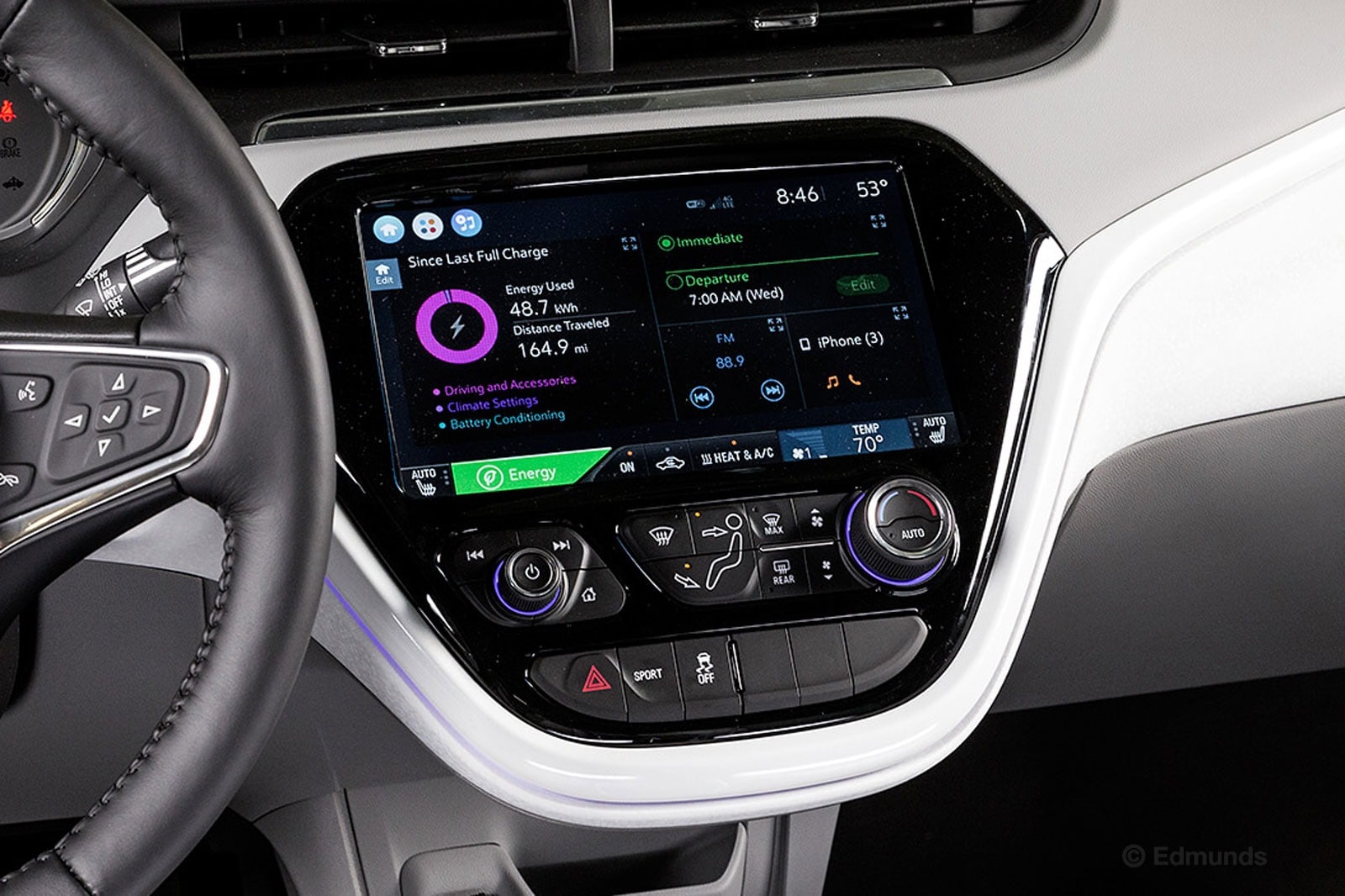
"In 17 miles over two days, Bluetooth has dropped 10 times. Sometimes it automatically reconnects; sometimes it doesn't. Either way, it never automatically resumes playback." — Mike Magrath
"The Bolt's fantastic range is its best feature. The slick rearview mirror is its second best. No auto-dimming here: Flip up the mirror to dim those headlights behind you and instead you get the rearview camera feed. It's full-time, too, not just for night. Cool that this tech has filtered down from Cadillac to the pint-size Bolt. One advantage is that your rear view isn't obscured by headrests, passenger heads or cargo. Another is that it gives you a wider view of the road. This last part also takes some getting used, though. I enjoyed driving around and trying out the display, but found that the angle and depth distorted my sense of space around the car. Definitely feels like the future — much like the rest of this car — but will take a little getting used to." — Dan Frio
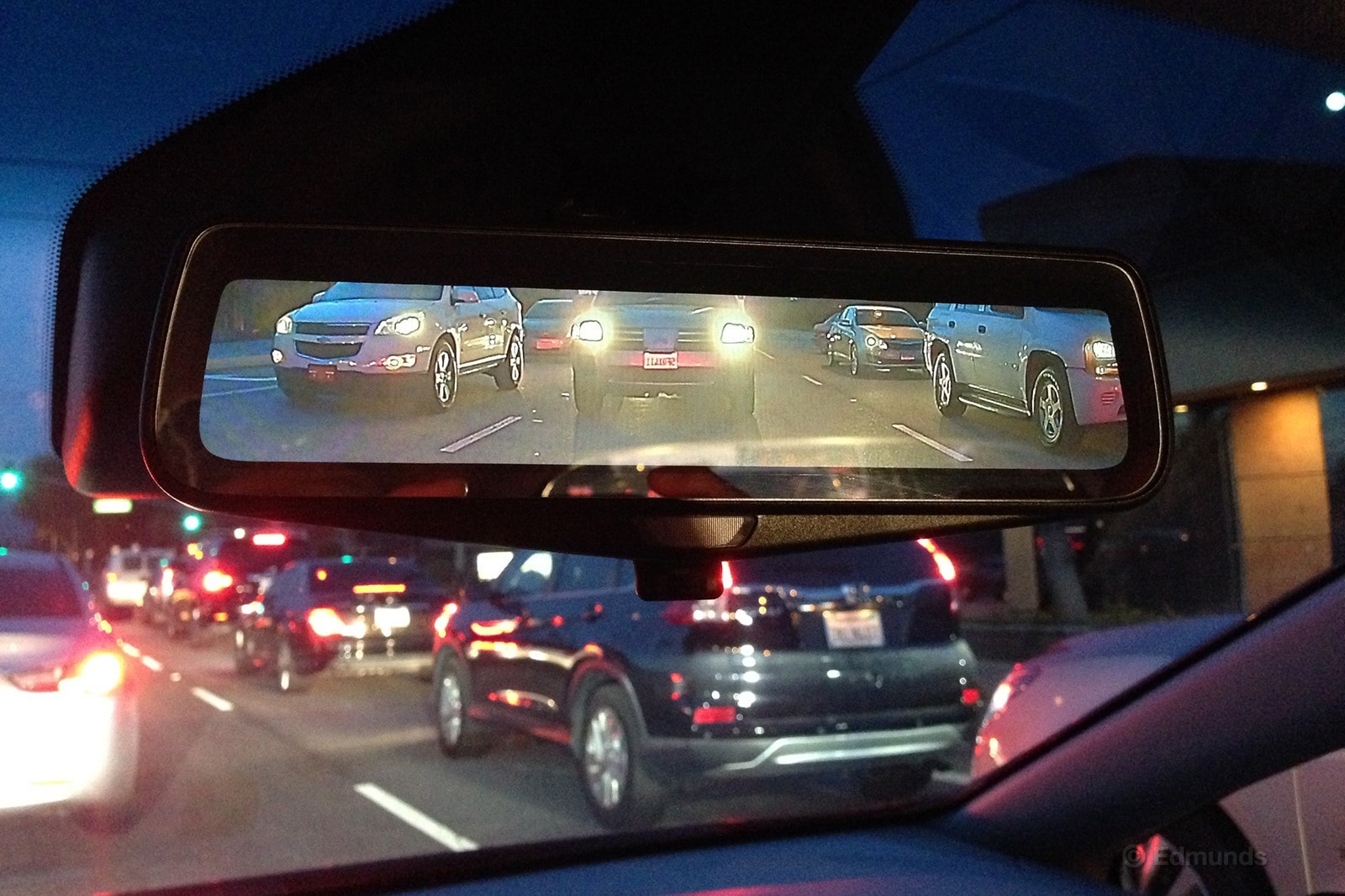
"What the Bolt needs, other than better seats, is a really good audio system. This car excels in traffic, but it lacks halfway decent sound to help pass the hours you spend stuck in traffic every week. Even if it was a $3K option — if it was good enough — Chevy would sell every one of them." — Kurt Niebuhr
"Everything seemed normal when I backed the Bolt out of the driveway. And then I realized that the backup camera hadn't come on. It was stuck on the audio screen, but there was no music and the volume didn't do anything. I couldn't turn on the AC either. Basically, the touchscreen was frozen.
"I got in and out of the car, turned it on and off, and locked and unlocked it in an attempt to reset the car. A do-over, if you will. Nope. In fact, the screen stayed fully lit even after I locked the car and walked away from it. So I went ahead and drove the 30 minutes to where I was going, hoping to wait it out. The car won this staring contest. The same Smashing Pumpkins song was still listed on the screen at the 30-minute mark — an interval I had to determine by looking at my phone because the clock hadn't budged since this all began.
"After I arrived, I was not crazy about leaving the car for six hours (I was going on a hike) with the screen on. So I made a call to someone who minds the fleet back at the office — or I tried to use the voice button to call up Siri. But that didn't work either. So I unplugged my phone from the USB port and called manually. No one had any advice. This issue was a new one.
"Google came to my rescue. I found a thread about this, and the advice was easy: Hold the home and fast-forward buttons down together until the screen resets. That took about 10 seconds, and all was well as if nothing ever happened. As I did this, I got this déjà vu feeling that I might have done this before about 18 months ago. Or maybe that was our Tesla Model 3 — that one (and the S and X before it) needs the full reboot treatment about every other time I drive it." — Dan Edmunds
Maintenance
"Electric vehicles are all well and good, but with still limited infrastructure, we're a while off from thinking about these cars the way we do about those with gas engines. So when I needed to hit the local mall for about an hour, I planned to use the nearest DC fast charger at a hotel parking lot near the mall. The Bolt's battery was still half-full, and I'd actually scheduled some time the following day to visit the charger for a full charge. But since I had an hour to kill, I figured maybe I could get a near-full charge and maybe skip the next day's visit altogether.
"The trouble began at the first of the two ChargePoint chargers. It returned a 'charging error' message each time I tried to initiate charging. So I tried the other charger. Both were, surprisingly, unoccupied, but it was soon clear why: The second charger didn't work either. Finally I ended up going around the corner to another lot with a 240-volt charger, which added only 10 miles of charge after about an hour. If you roll up to a gas pump that's out of order, you move to the next pump or you drive to another gas station. In this case, the nearest DC fast charger was miles away. I didn't bother going into the hotel lobby to ask anyone about problems with the charger. It was already late, I needed to get over to the mall, and I assumed no one at the desk would know much, or care much, about the fussy chargers. Or at least I didn't plan to stick around for the time it would take to find out.
"In this case, the 10 miles added by the 240-volt charger was enough to get home, with still plenty of miles to get to another fast charger later. It also pays to have a contingency plan or two, something you don't normally consider when driving a gas-powered machine." — Dan Frio
"The Bolt ran out of wiper fluid so I swung by the gas station to buy a jug. The guy tried to charge me $15 for a gallon. I thought it was a joke. When he repeated himself I laughed, told him that was crazy and said no thanks. The gas station across the street sold me the same jug for $3. Still pricey by some standards but much more in line with typical convenience store prices. The Bolt drank it all." — Mike Schmidt, senior manager, vehicle testing operations
Miscellaneous
"The selling point of a DC fast-charge or Level 3 charging station is that it will charge 80% of an EV's battery in about 30 minutes. But I've learned that not all Level 3 stations are the same. One particular charge station was located in a Volkswagen dealership. I brought in the Bolt with 27 miles of range remaining. The charge station shut off on its own after about 28 minutes of charging.
"I was disappointed to see that the charge only gave me 34 miles of range, or roughly 25% full — far from the 80% I was expecting. For some reason, this station is charging at about half the speed it should be." — Ron Montoya, senior consumer advice editor
"You have to factor charge stations into your routine if you don't have a place to plug in at home. Using the ChargePoint app, I located a station in the parking lot of a Fry's Electronics store, near where I would be attending a friend's barbecue. It was about three-quarters of a mile from the barbecue, so I parked the car and went for a walk. I returned a few hours later, and the Bolt had enough charge to last the rest of my weekend." — Ron Montoya
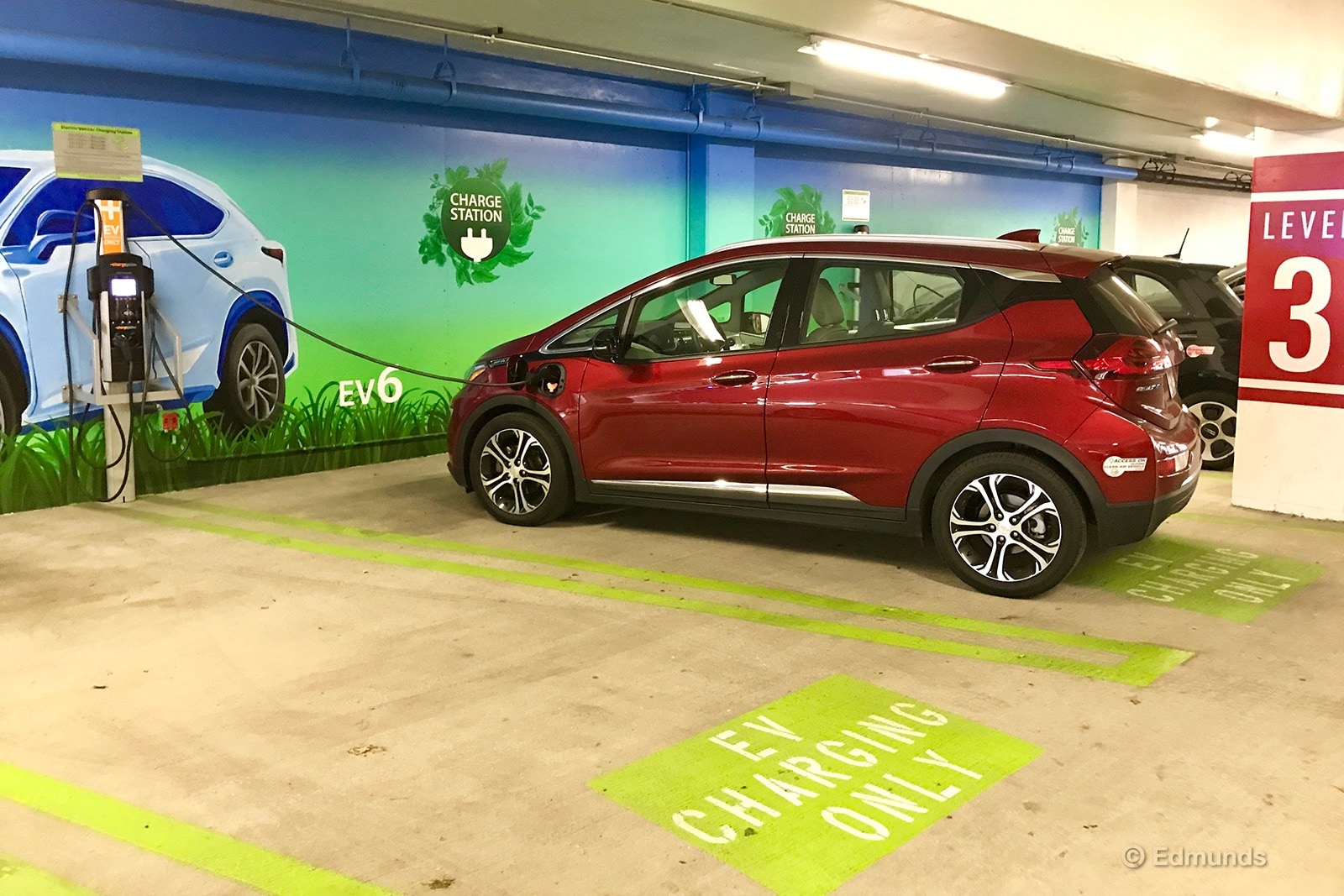
Maintenance & Repairs
Regular Maintenance:
The nice thing about electric vehicles is that there is minimal maintenance so costs are typically lower than for other vehicles. For the 2017 Chevrolet Bolt, there are service intervals for tire rotations every 7,500 miles and for replacement of the passenger compartment air filter every 22,500 miles (or every two years if you don't drive that far). Other than that, EV maintenance amounts to filling the windshield washer tank when it gets low, slapping on new windshield wipers once in a while, and minding the tire pressures.
Issues and Repairs:
Two major incidents happened with our Bolt: (1) We got a flat in its self-healing tires and (2) a battery failure left us stranded on the side of the road, twice. Here are the quick takeaways:
- Self-healing tires can be difficult to patch due to their Selfseal technology. It requires specific training and equipment to patch. Also, Fix-a-Flat is messy.
- Any time there is a drastic change in range, take your EV in to have it looked at IMMEDIATELY. It never hurts to be cautious, and you might avoid a second stranding.
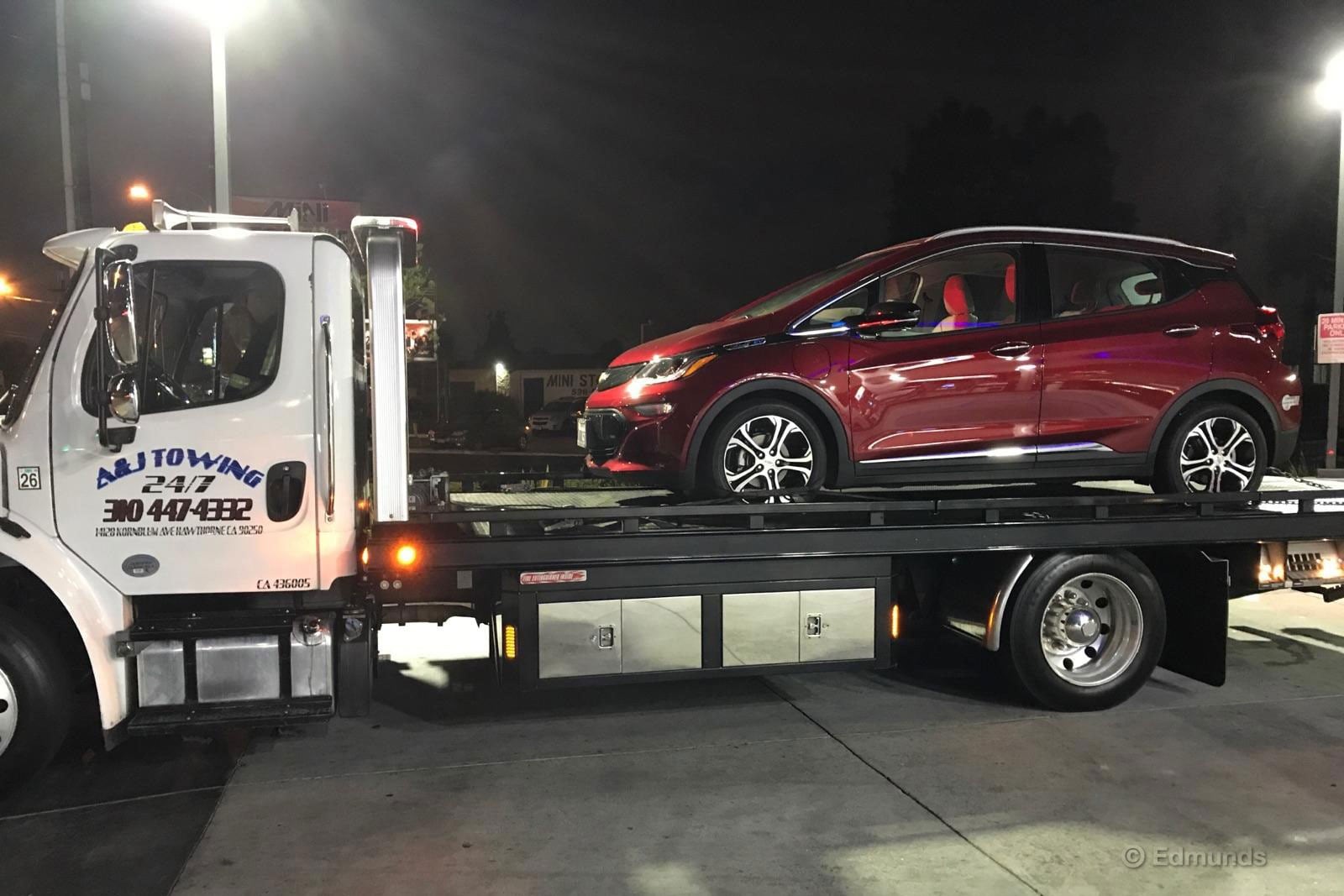
Service Campaigns:
Even though our Bolt had a battery issue, its VIN was not initially included in the recall. Remain persistent when your vehicle is having an issue. It pays off to do research if your vehicle is exhibiting similar symptoms. Doing a cursory search on NHTSA's recall site and GM's internal recall page will give you a list of known issues with your vehicle.
Fuel Economy and Resale Value
Observed Fuel Economy:
After three years of ownership, we accumulated 33,942 miles, which averages out to a little over 11,300 miles per year. Our use consisted heavily of city-based commuting and a few trips to Fresno, California. Our lifetime average of 25.8 kWh/100 miles bests the EPA average of 28 kWh/100 miles. Remember, the lower the number, the better when it comes to EVs. Our single best top-off was 18.0 kWh/100 miles and our max range was 334.3 miles — well above the quoted max range of 238 miles.
Resale and Depreciation:
We purchased our Bolt EV Premier back in January 2017 for $42,398. After $7,500 in electric vehicle rebates, that totaled $34,898. Fast-forward three years and 33,942 miles; we traded it in at a dealership for $17,000. The Edmunds appraisal tool valued it at $19,330 based on a private-party sale. But it had a little more wear and tear than normal, including a small crack on the front grille. So this was a fair price.
Depreciation equated to 60% of the original purchase price. If you factor in rebates then depreciation was only 51%. We typically don't keep any car, let alone an EV, this long so it is hard to compare these figures with our previous experiences.
Summing Up
Bottom Line:
Our 2017 Chevrolet Bolt lived up to its promise of being a long-range EV attainable by the masses. But for true long-distance driving, the Bolt — with its battery life and EV tech and the current charging infrastructure — can't quite match the ease of use of a traditional gas-engine car.
| Total Body Repair Costs: | $0 (over 36 months) |
| Total Routine Maintenance Costs: | $0 (over 36 months) |
| Additional Maintenance Costs: | $95 (over 36 months) for 2 tire patches, 1 set of windshield wipers |
| Warranty Repairs: | 1 |
| Non-Warranty Repairs: | 2 |
| Scheduled Dealer Visits: | None |
| Unscheduled Dealer Visits: | 2 |
| Days Out of Service: | 8 |
| Breakdowns Stranding Driver: | 2 |
| Best Fuel Economy: | 18.0 (or 187.4 mpg-e) |
| Worst Fuel Economy: | 83.6 (or 40.3 mpg-e) |
| Average Fuel Economy: | 25.8 (or 130.6 mpg-e) |
| Best Range: | 334.3 miles |
| True Market Value at Service End: | $17,000 |
| What it sold for: | $25,398 (60% of paid price) |
| Final Odometer Reading: | 33,942 miles |
Disclaimer:
Edmunds purchased this vehicle for the purposes of evaluation.